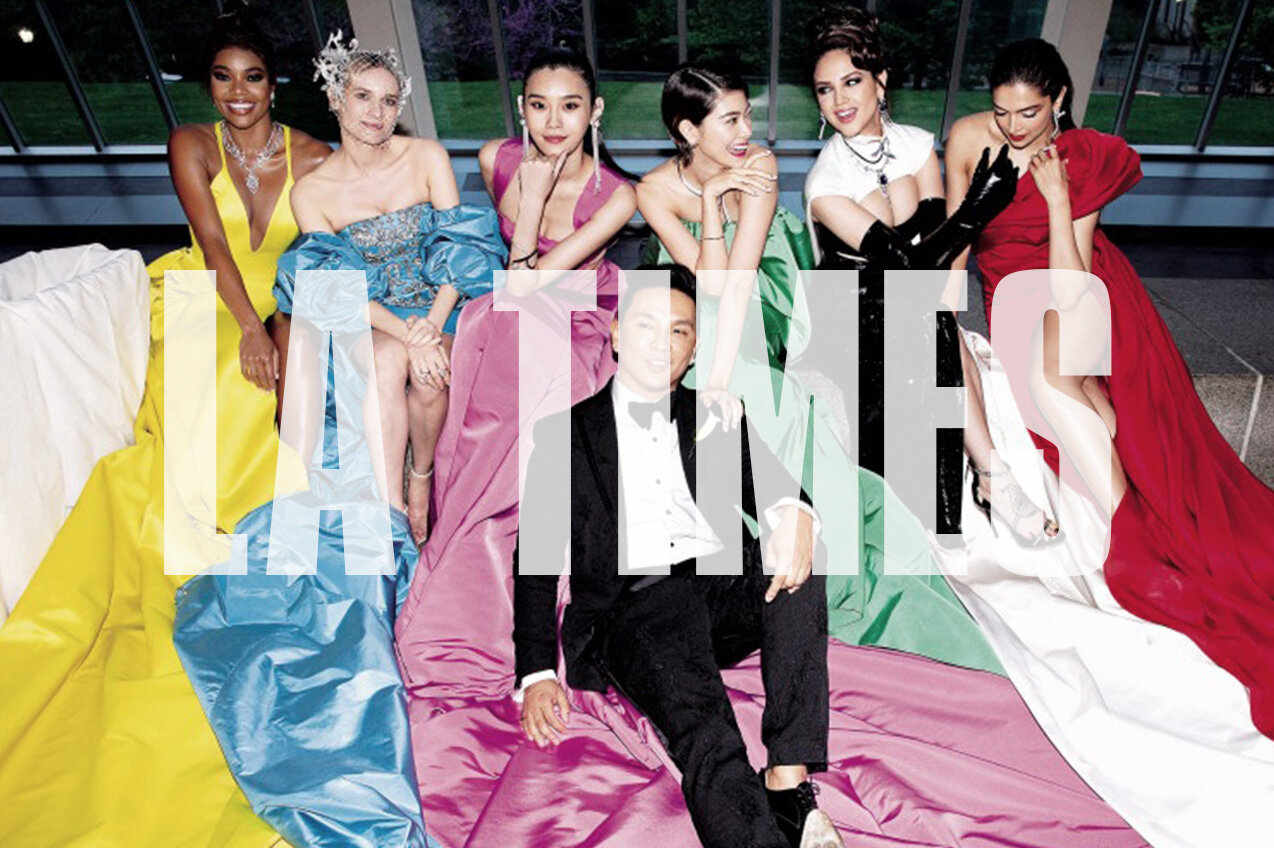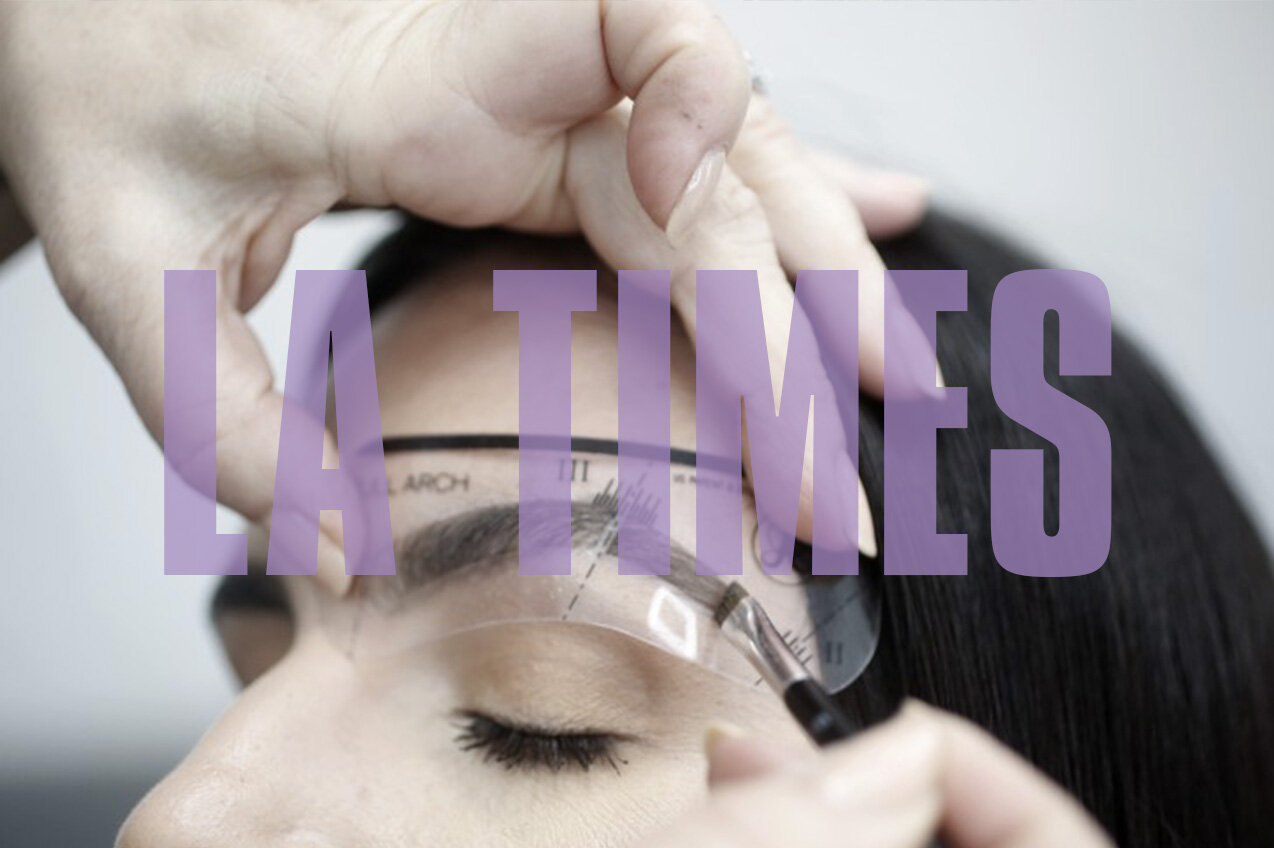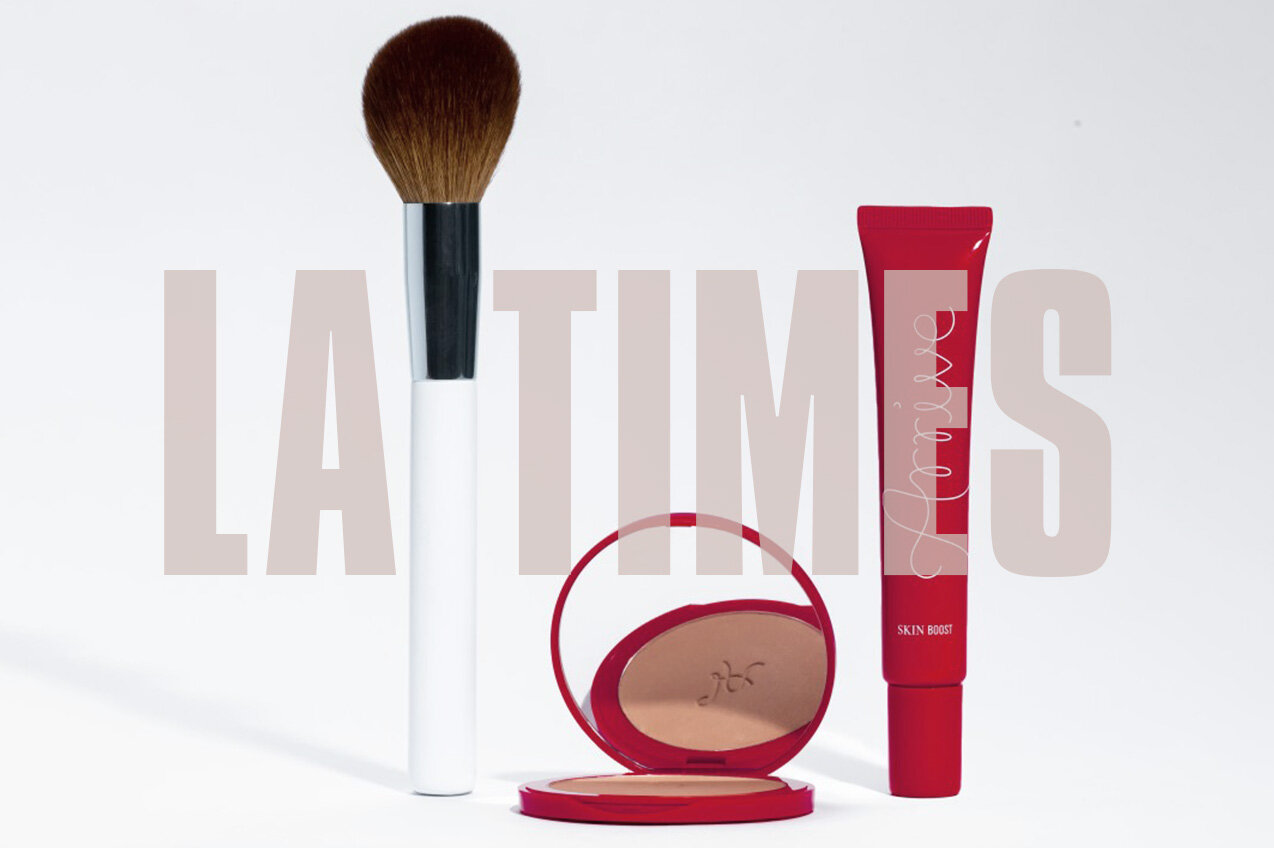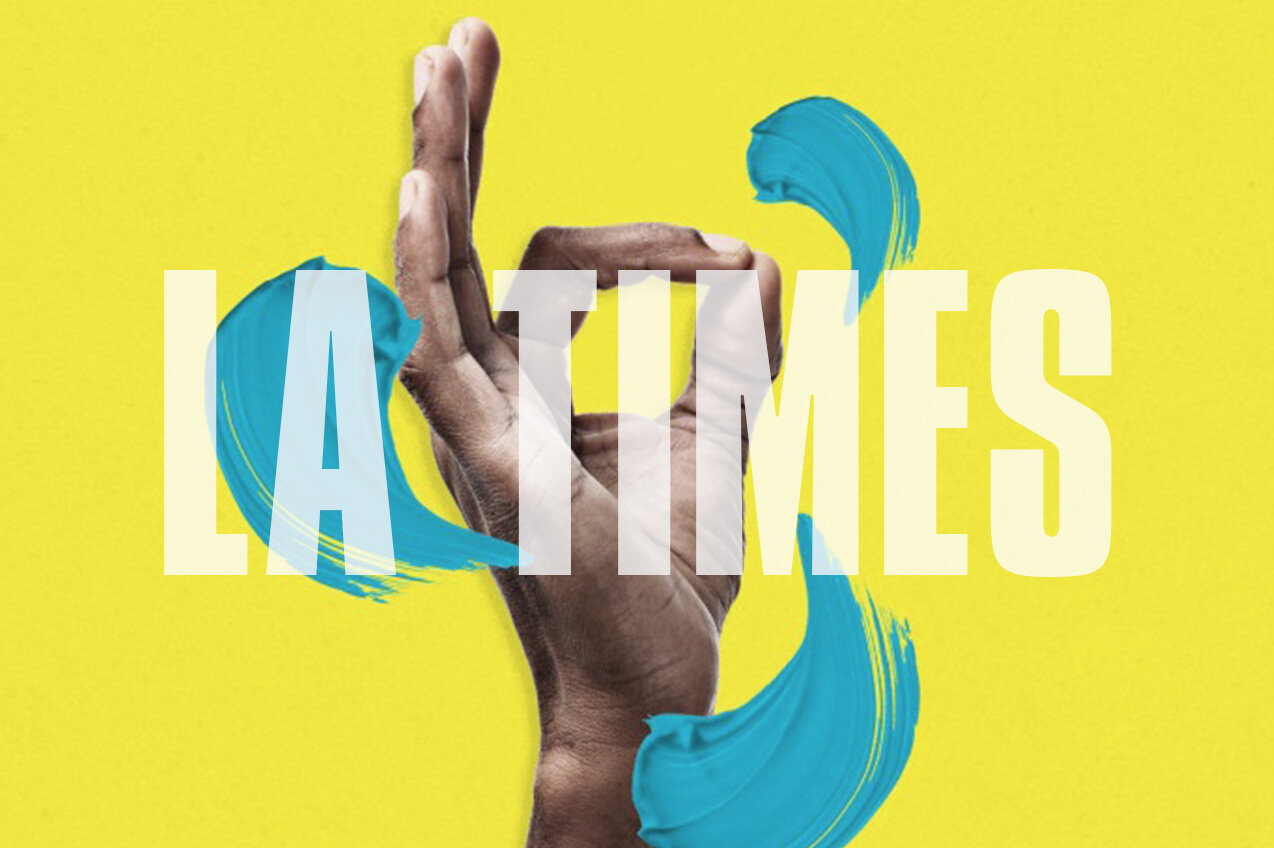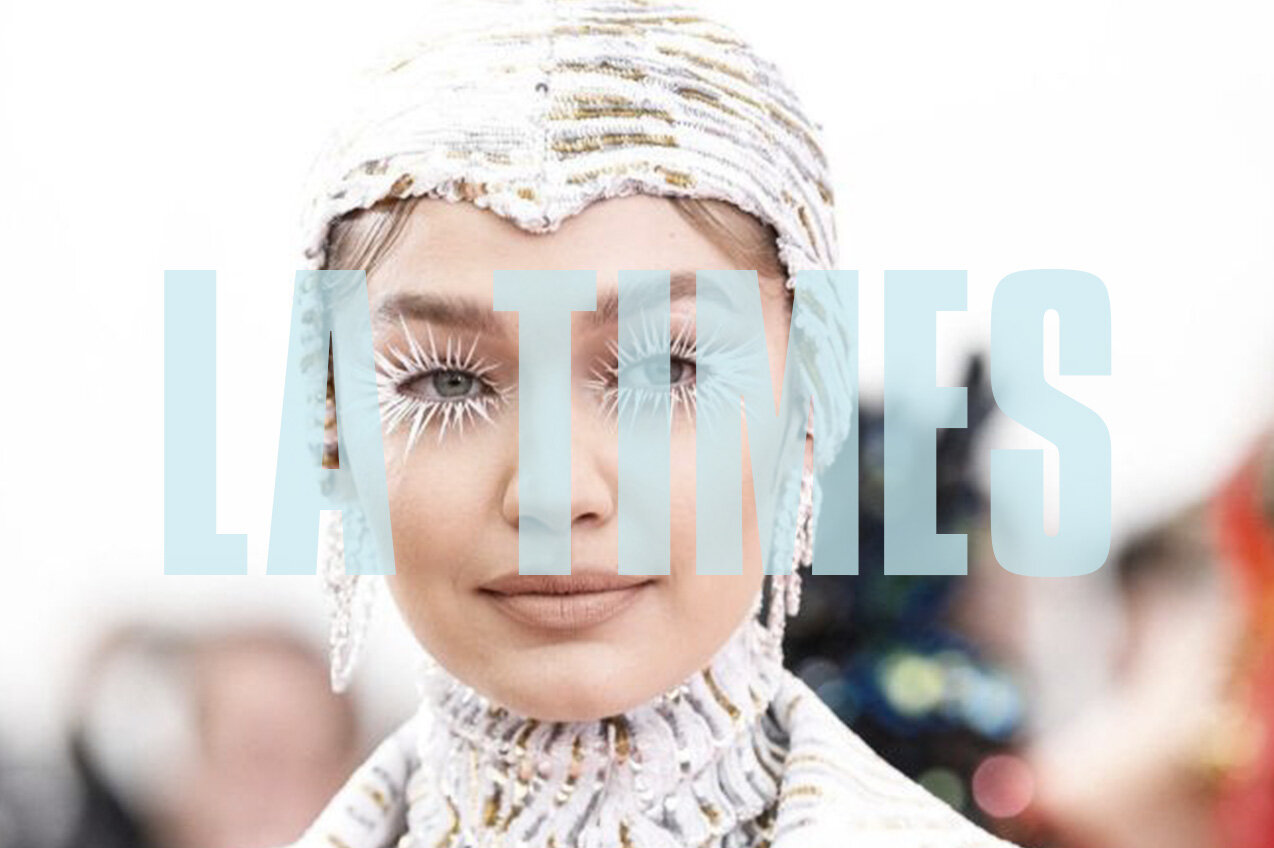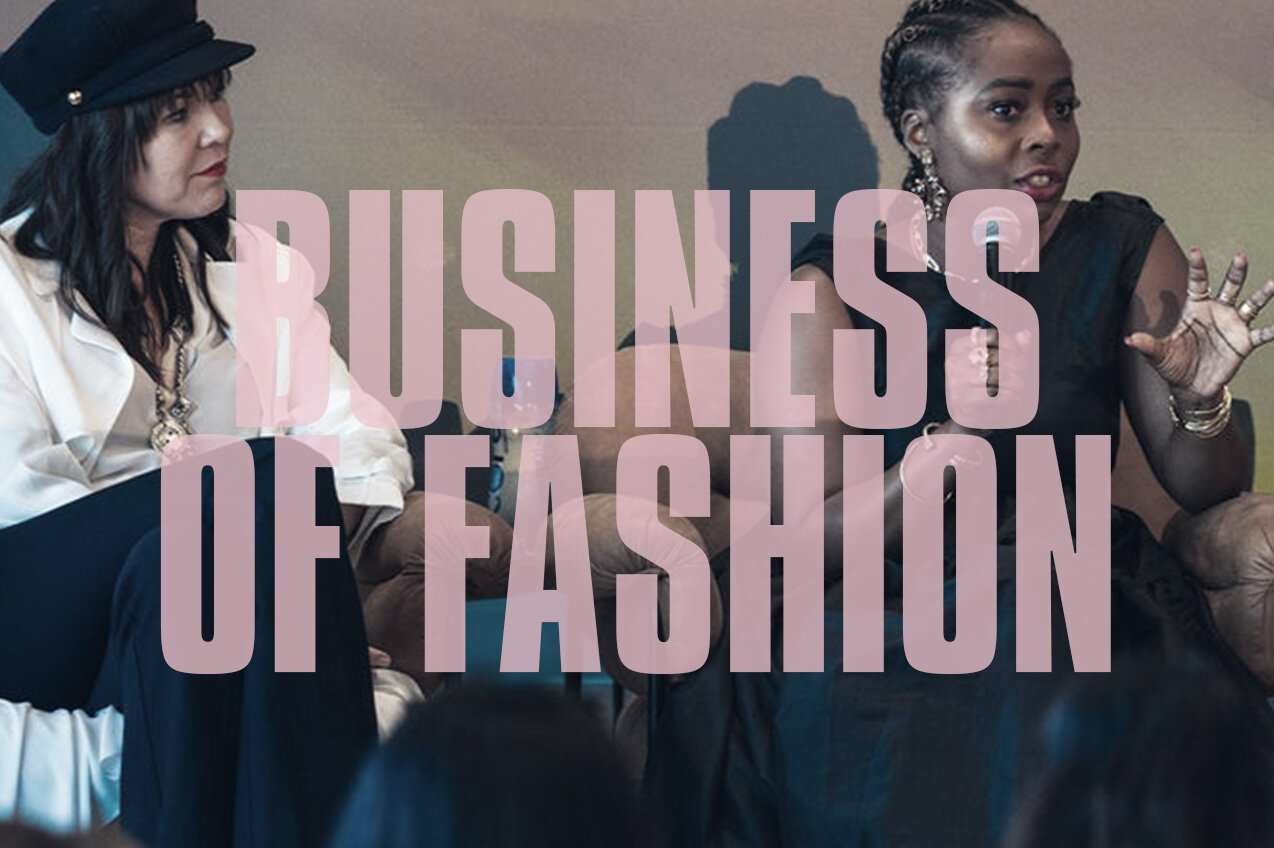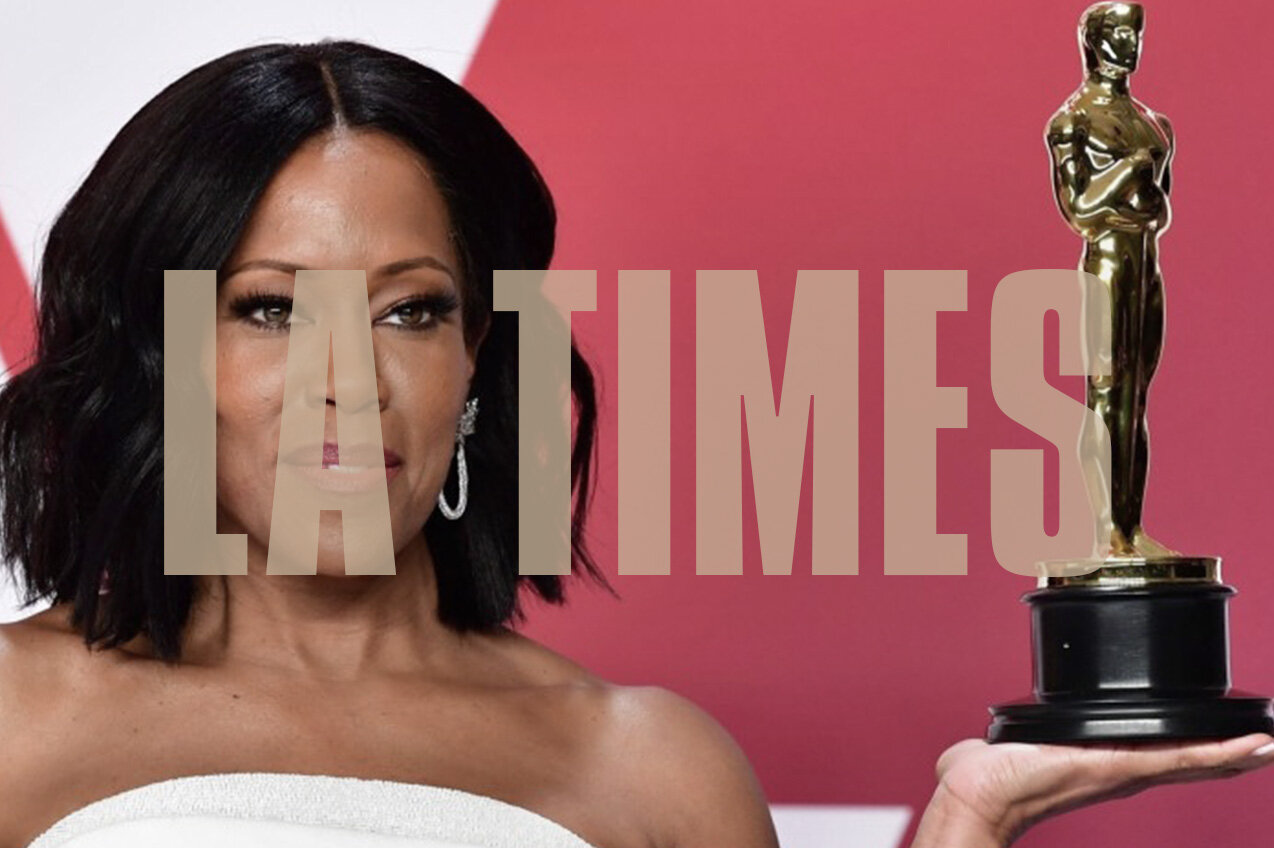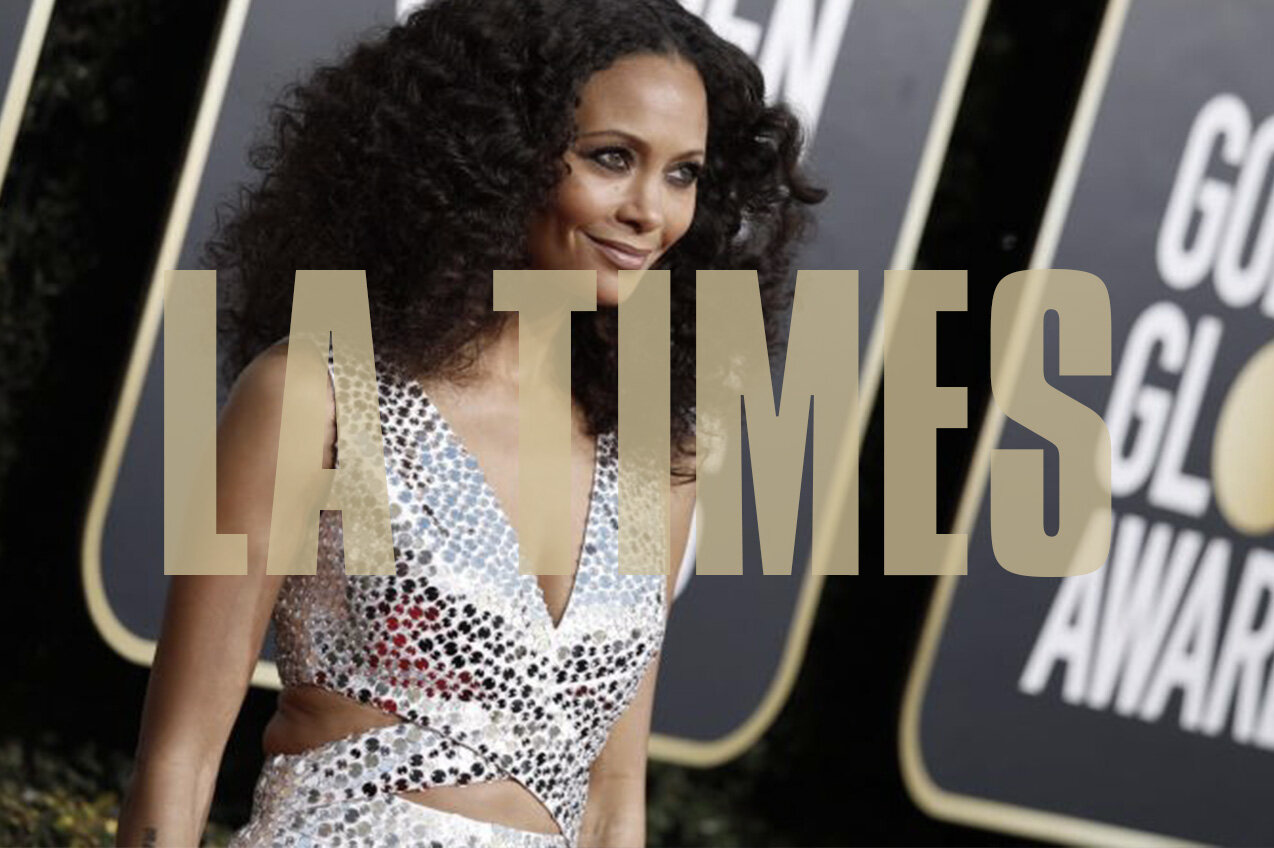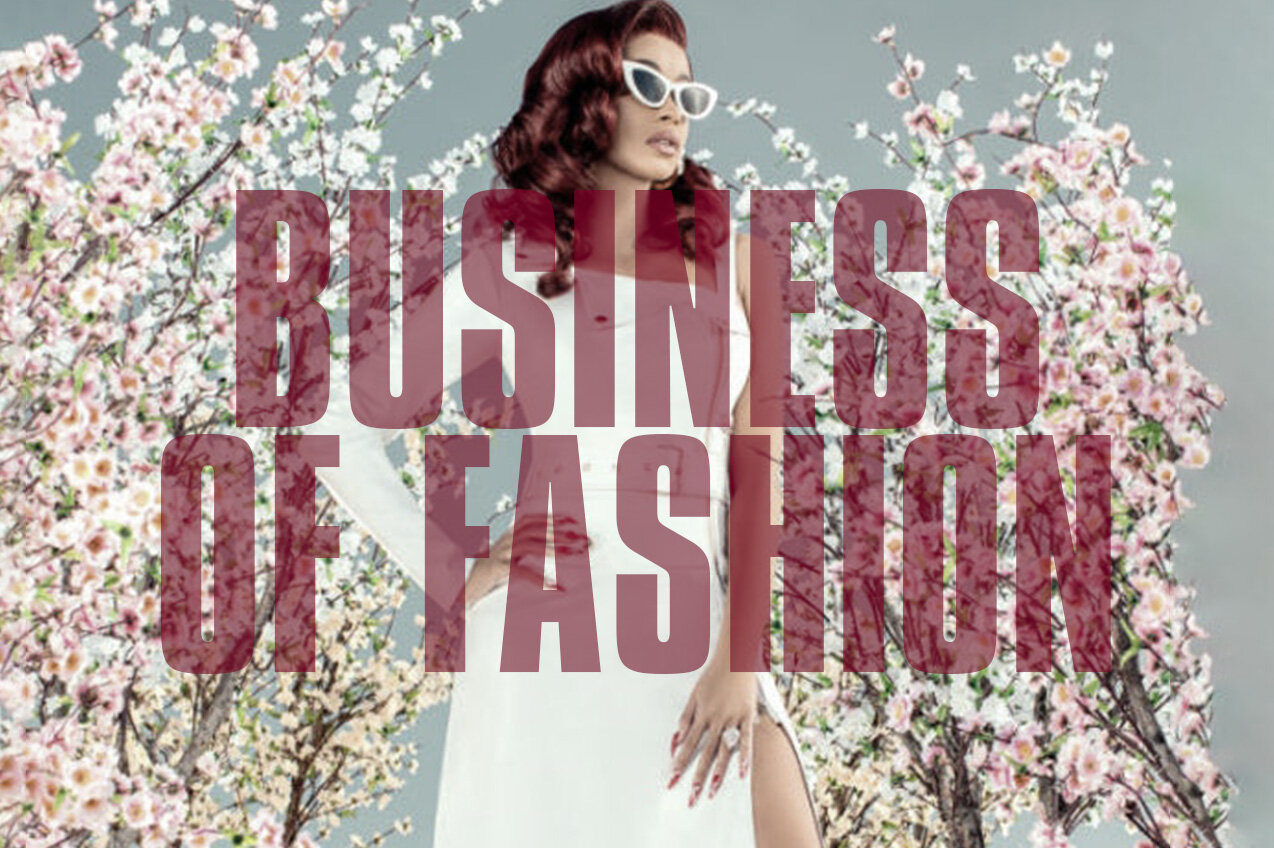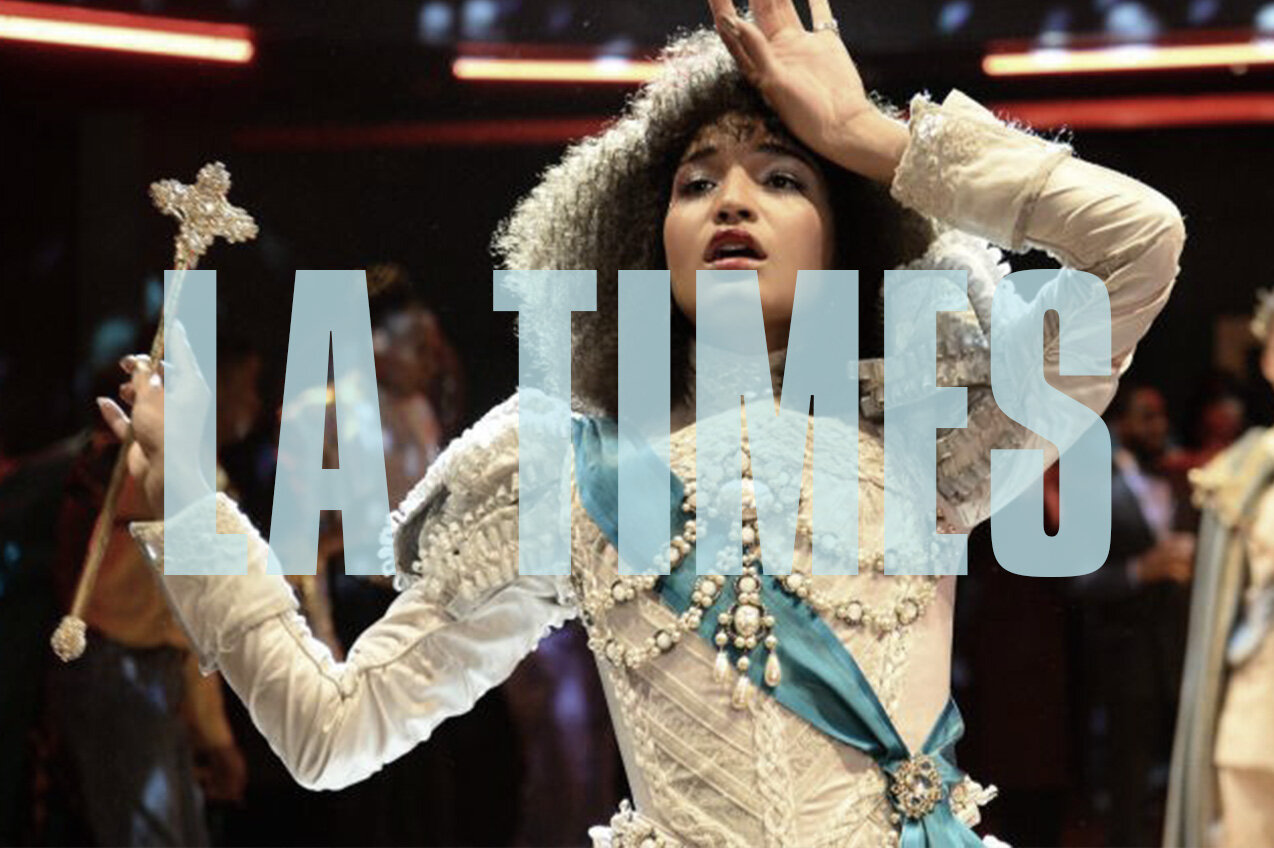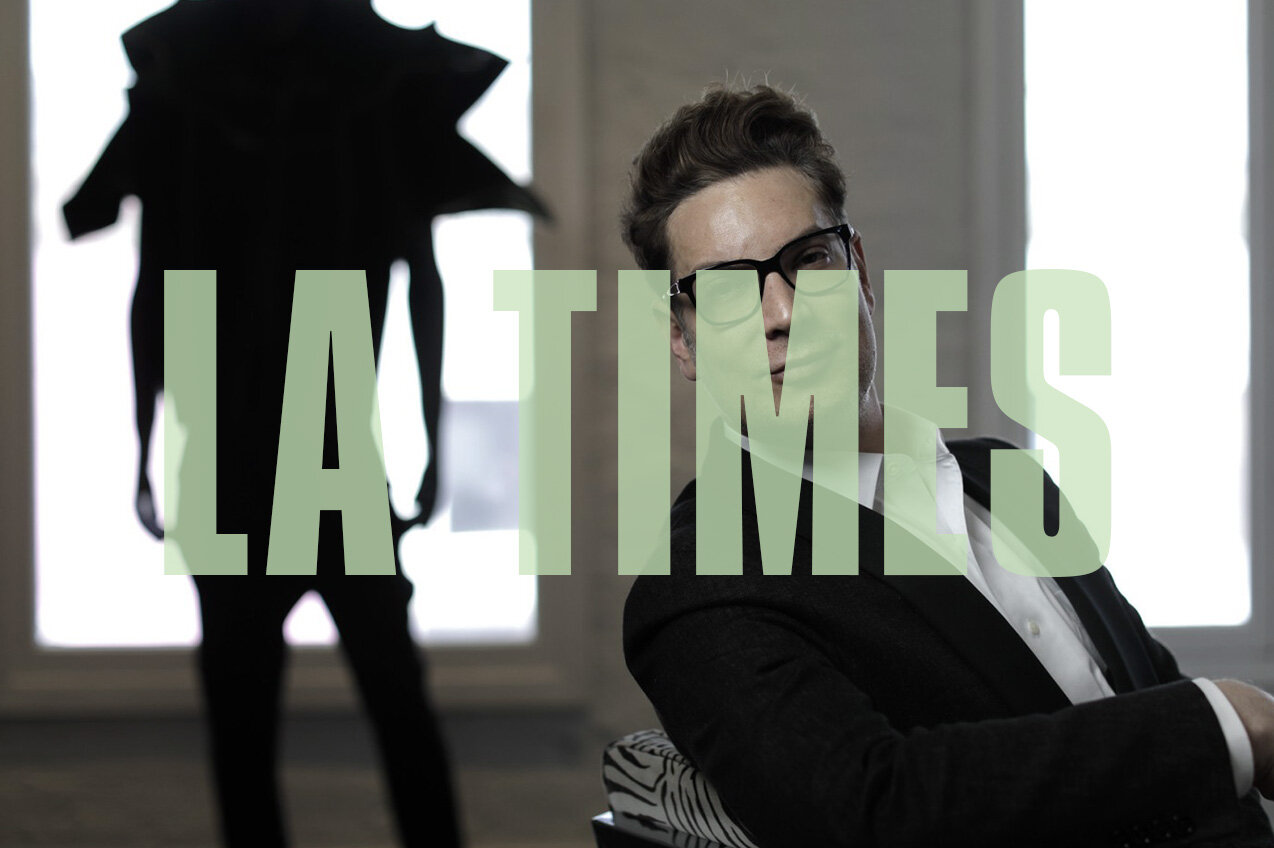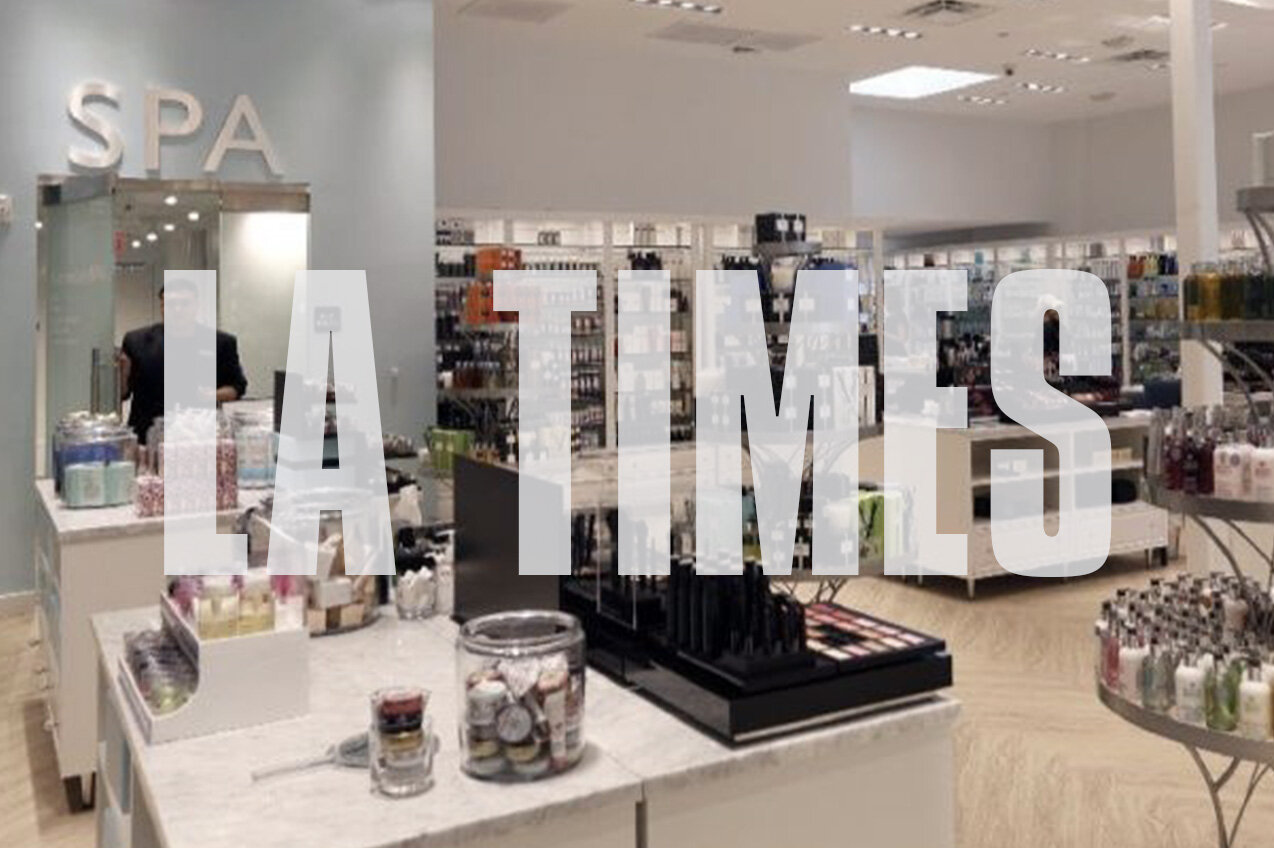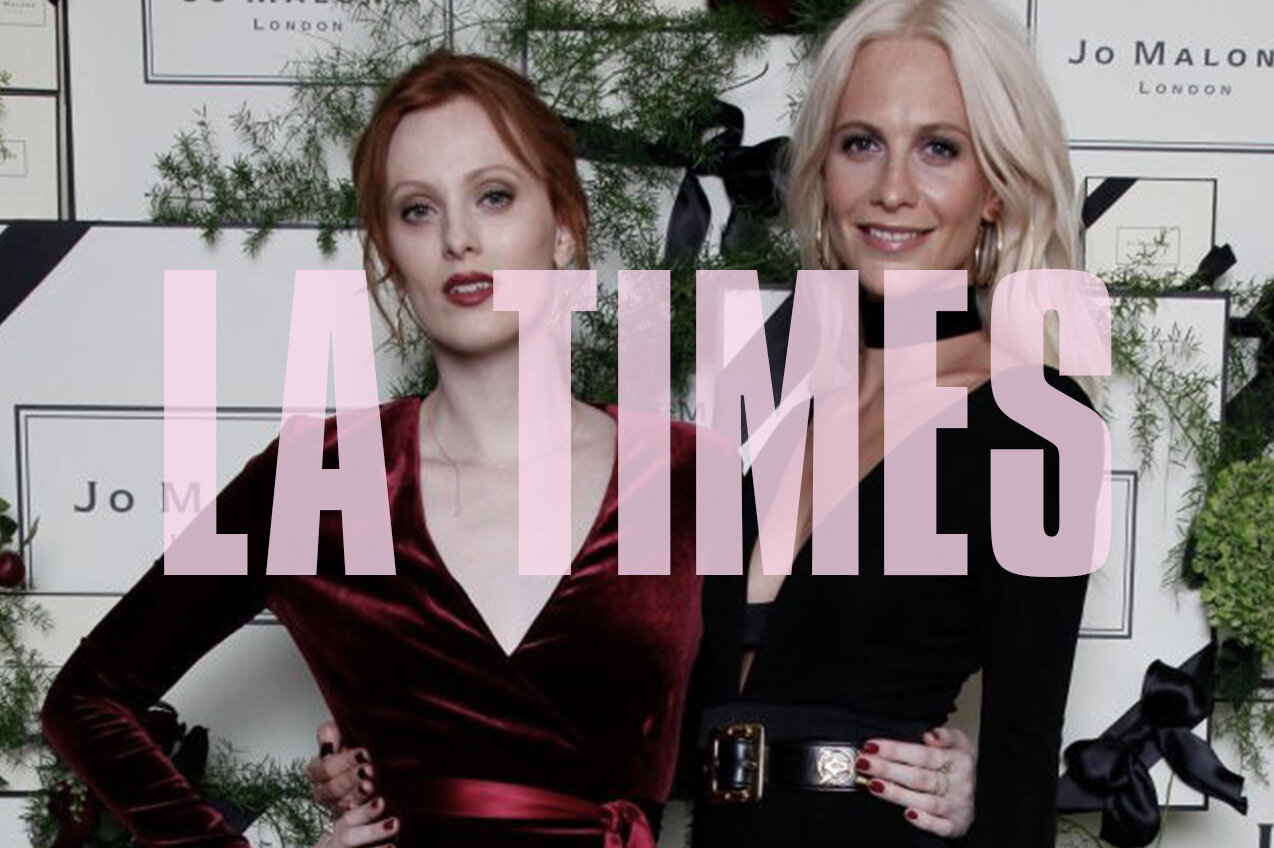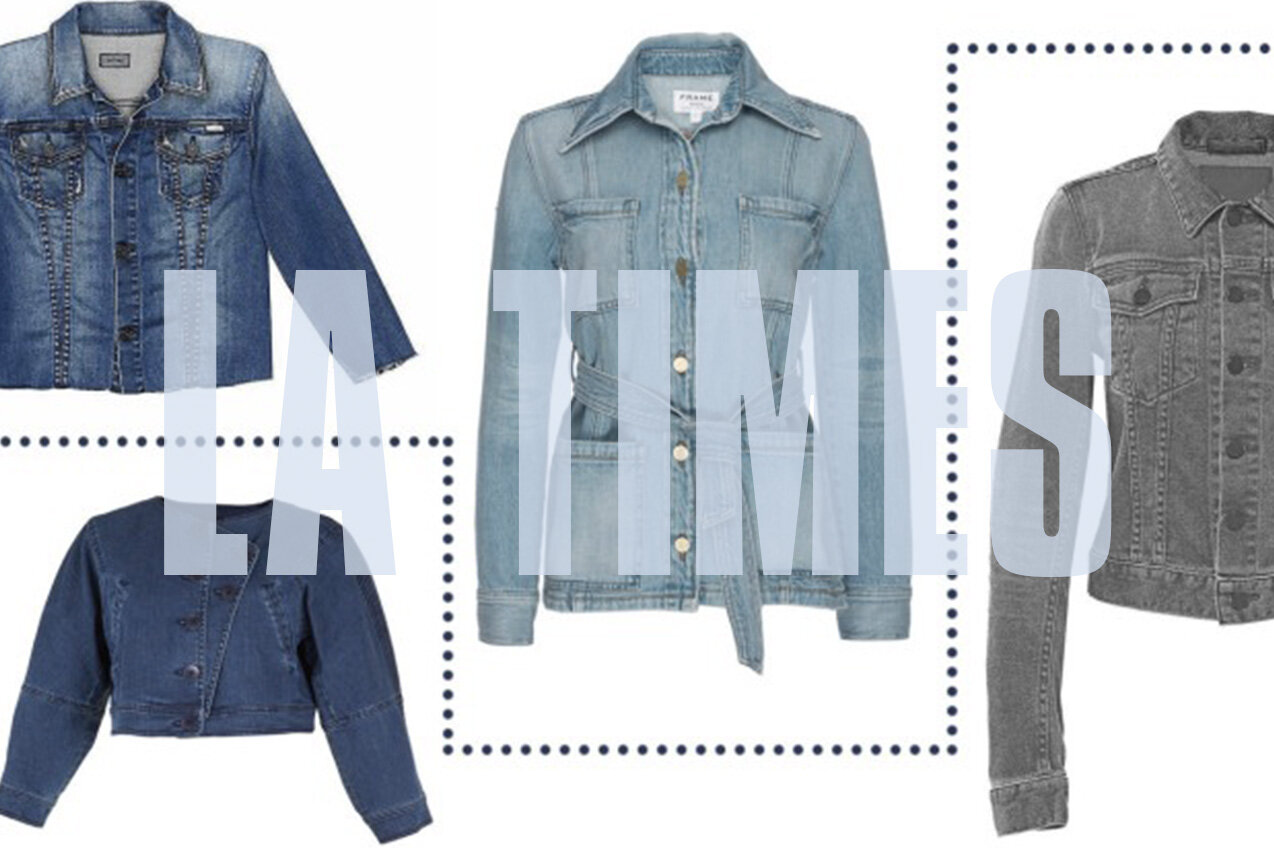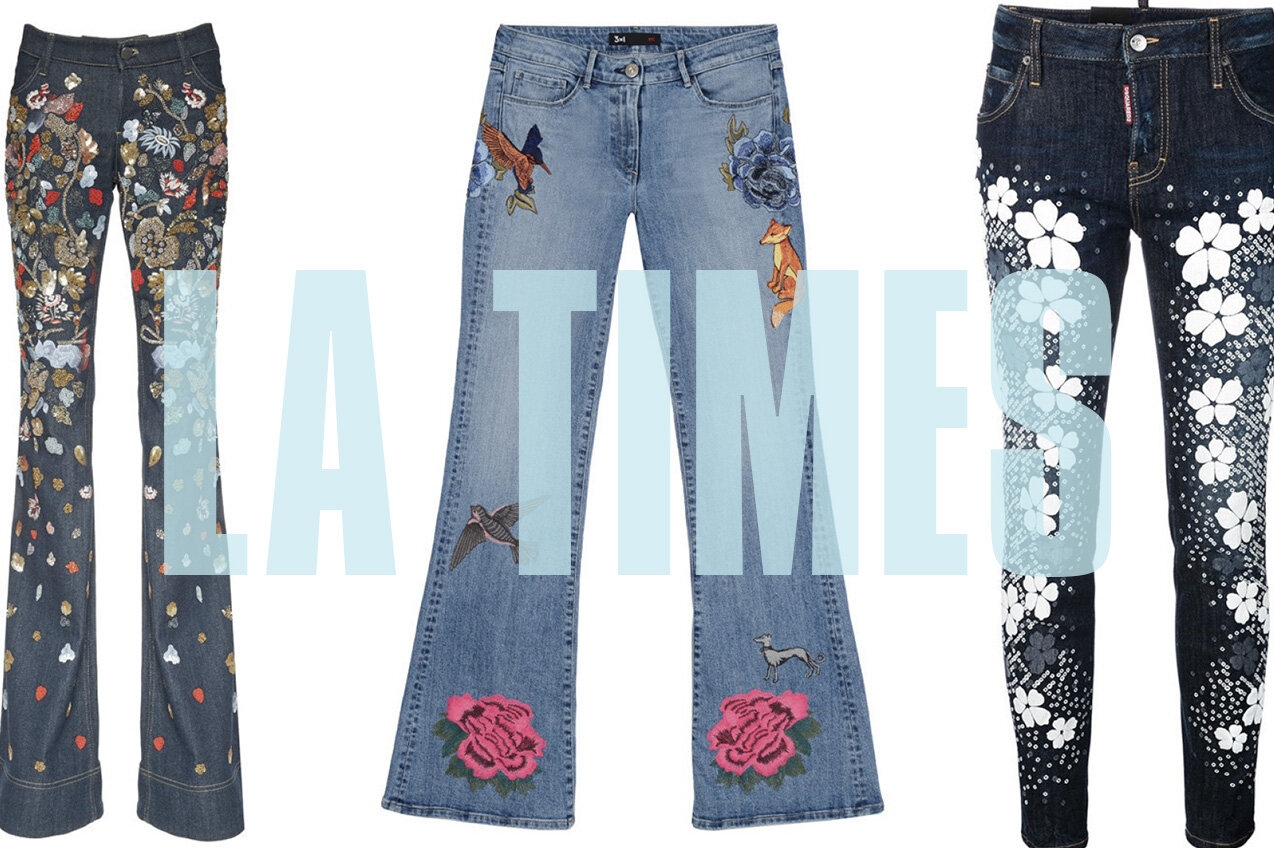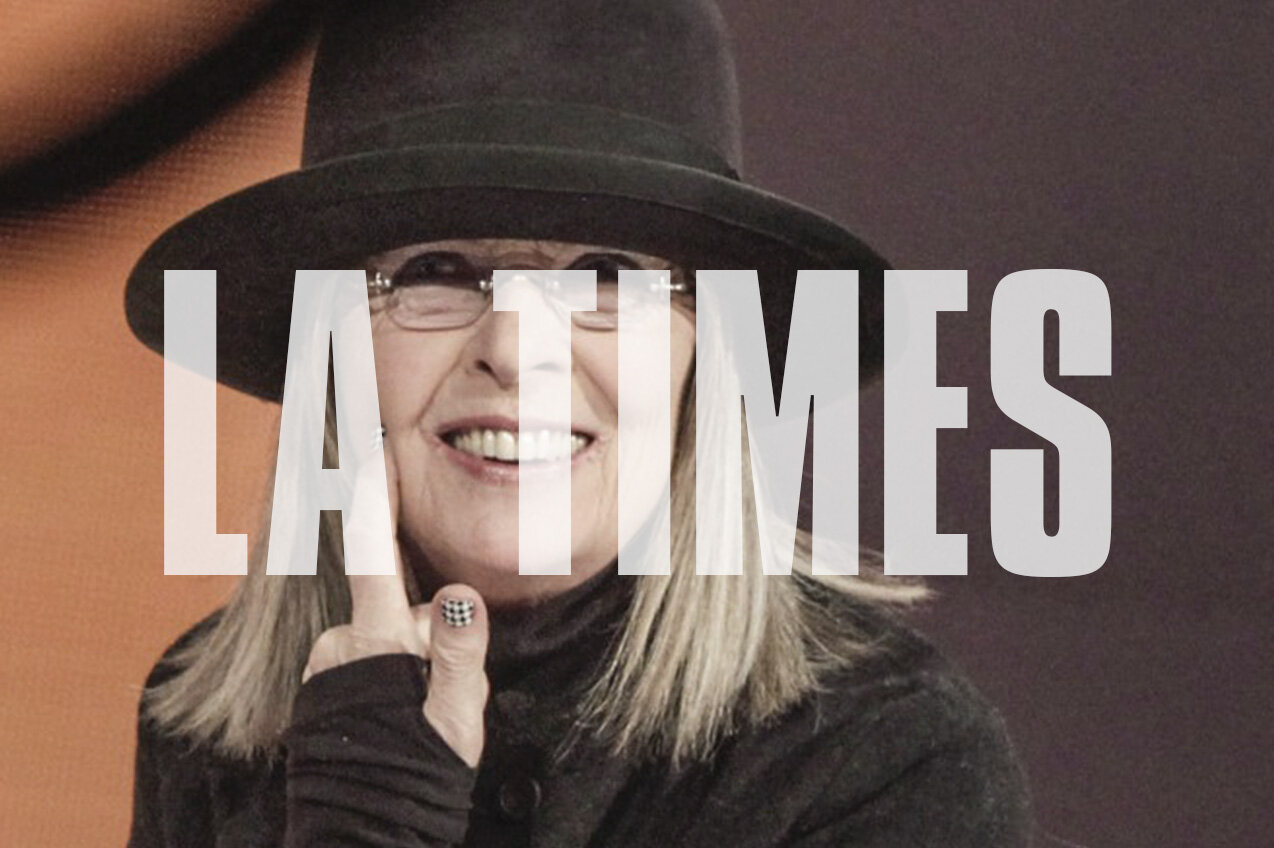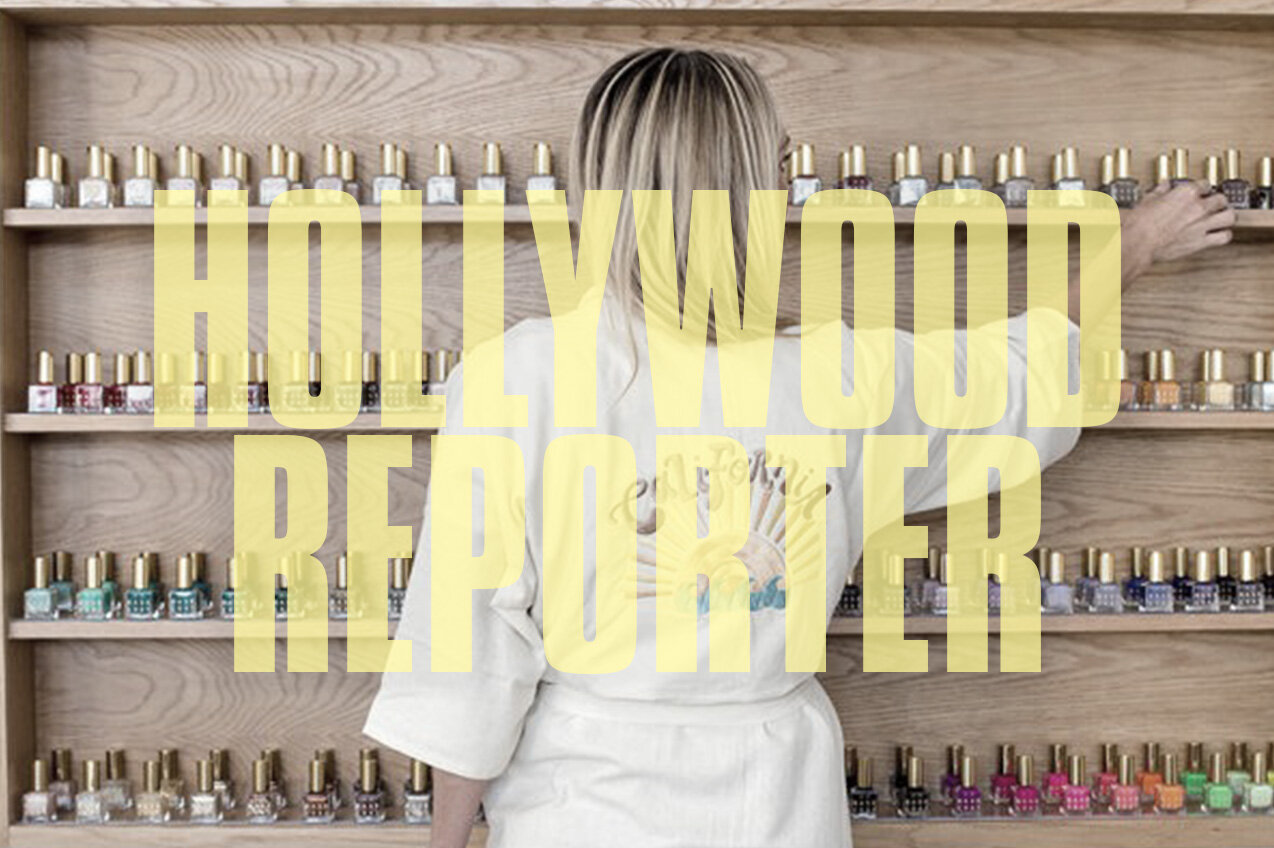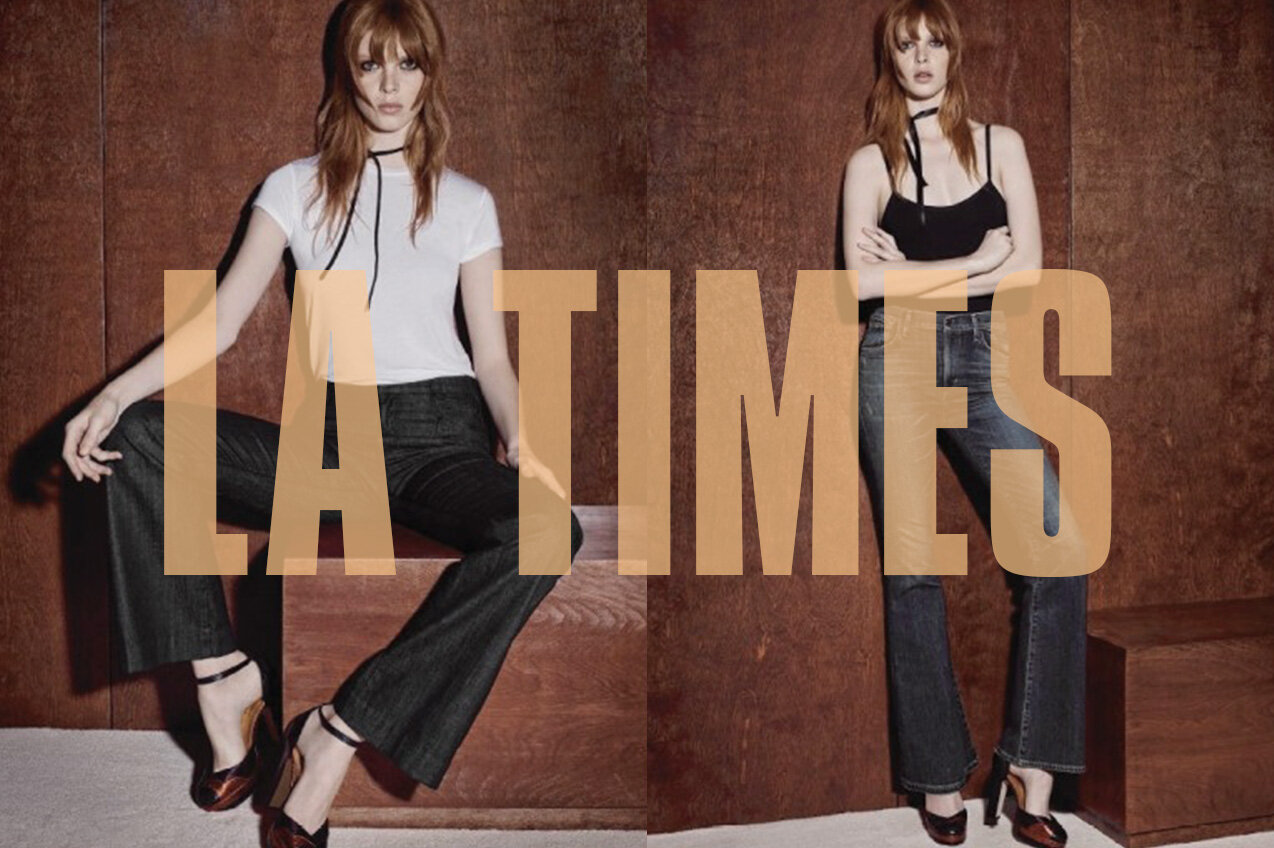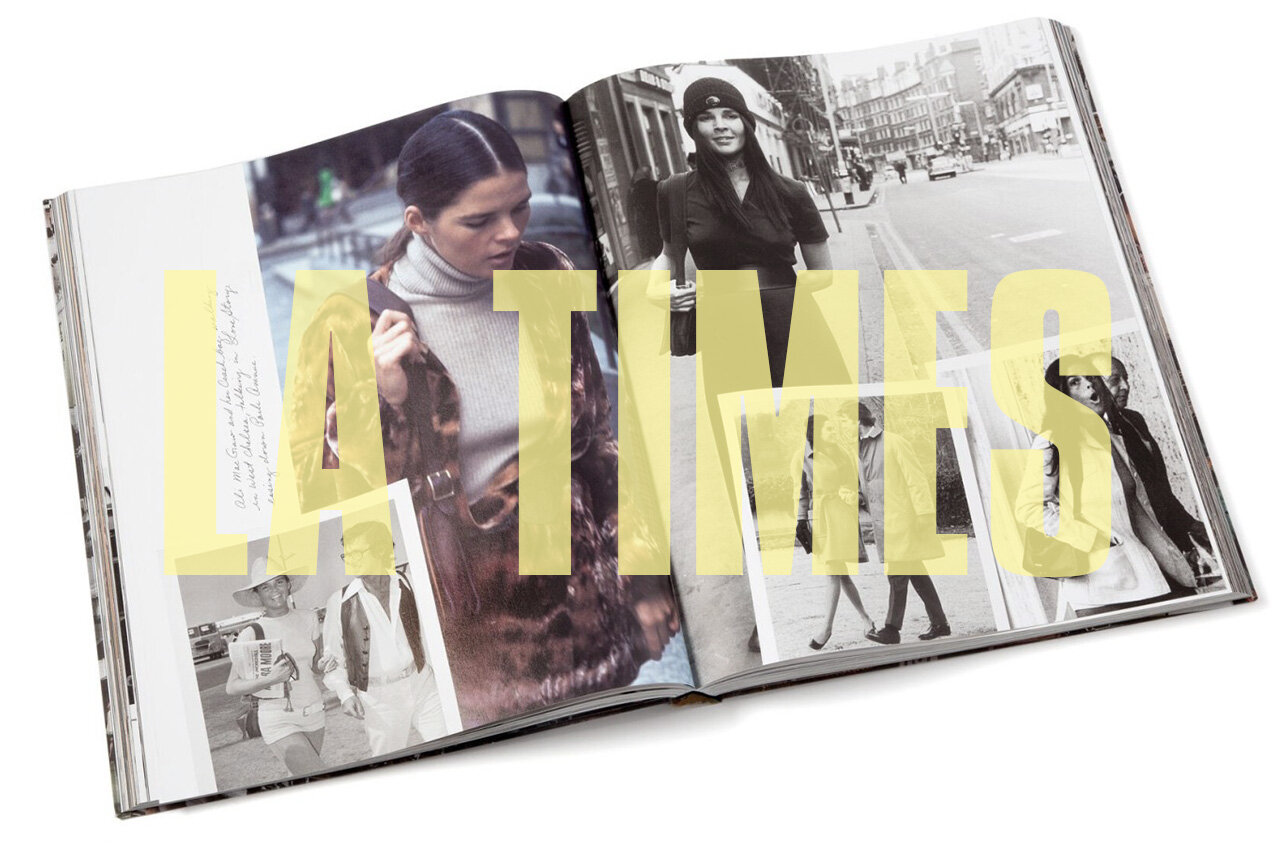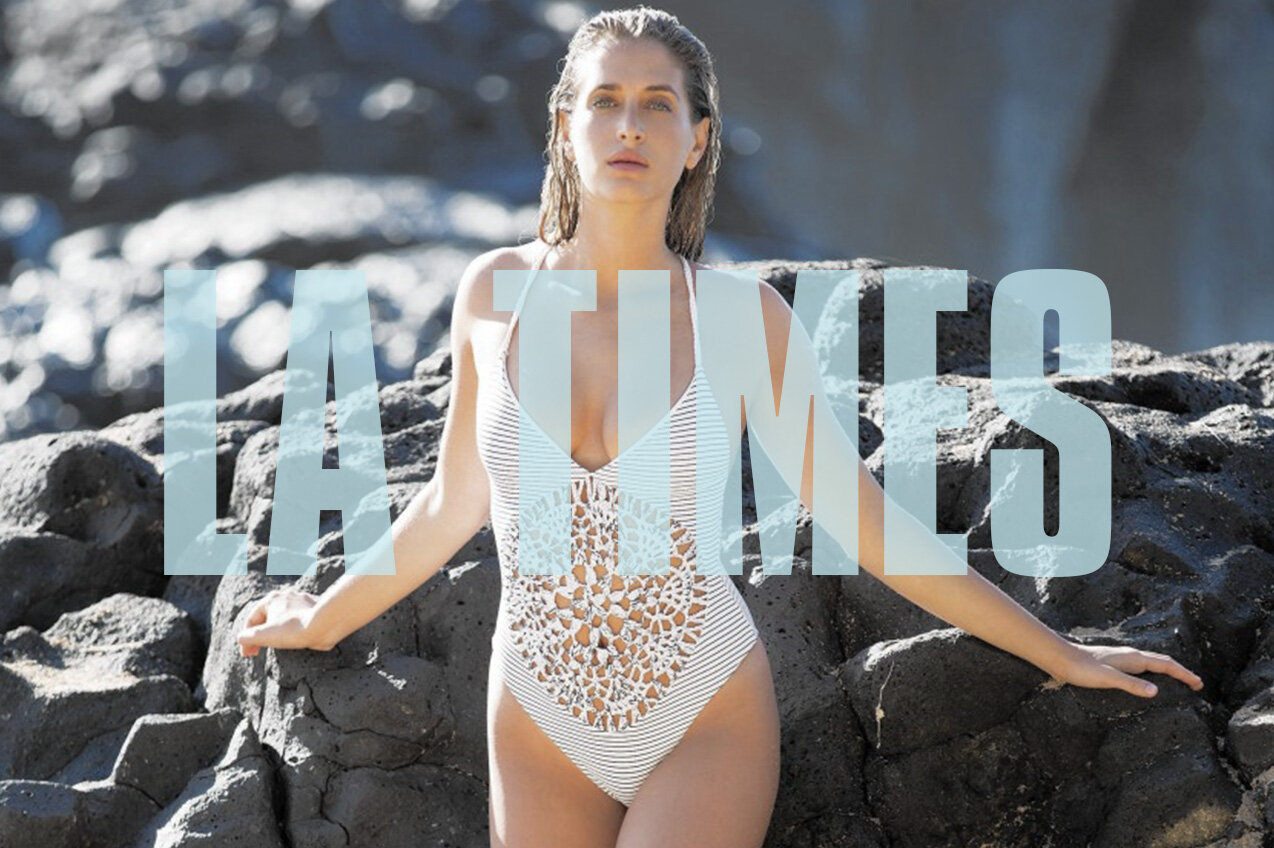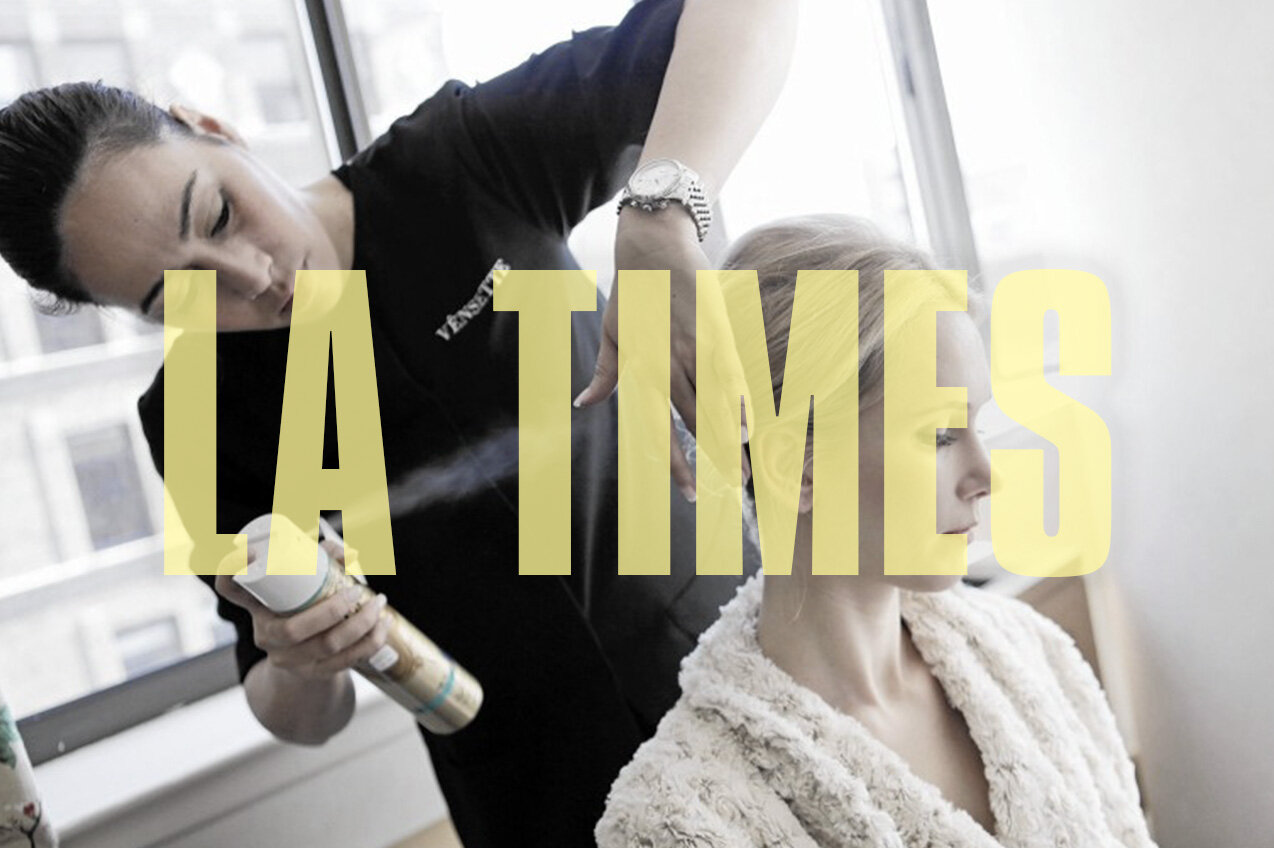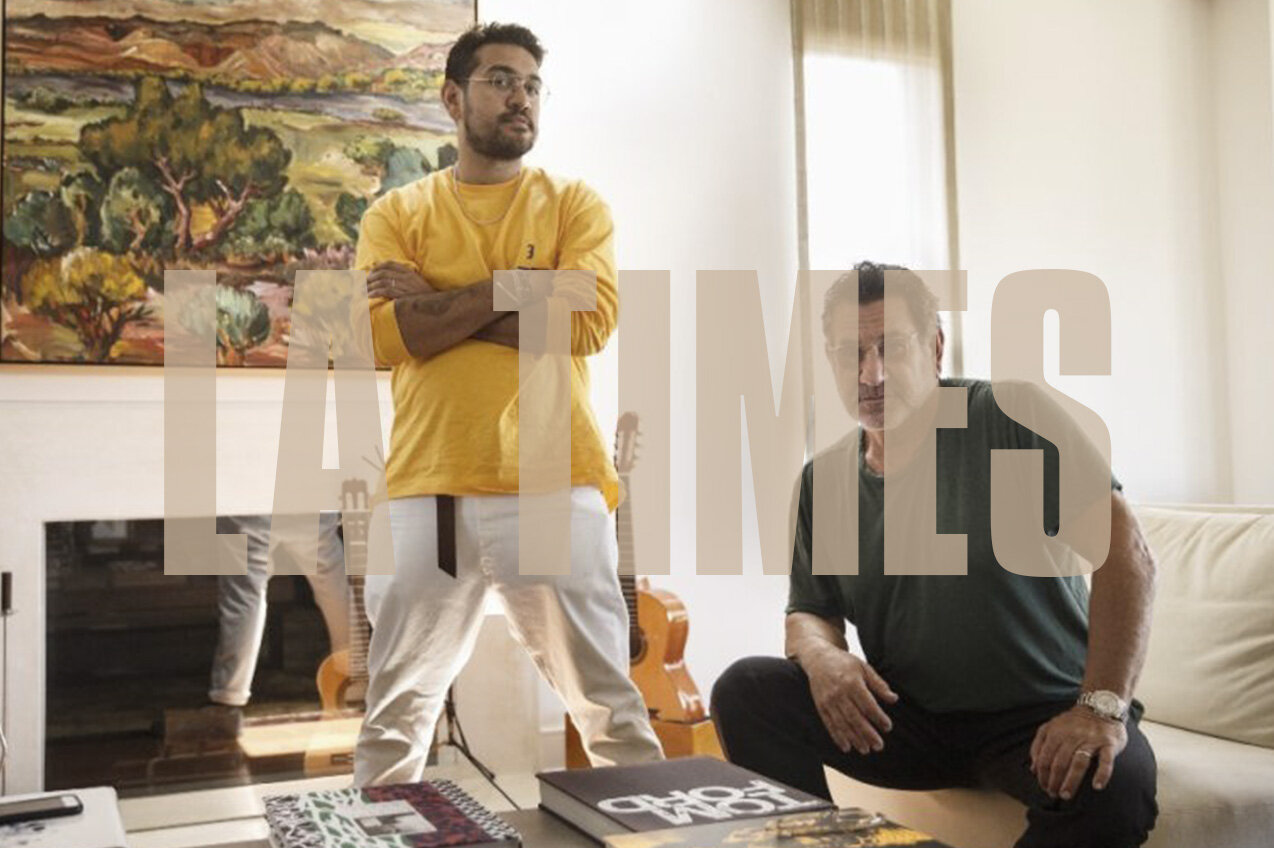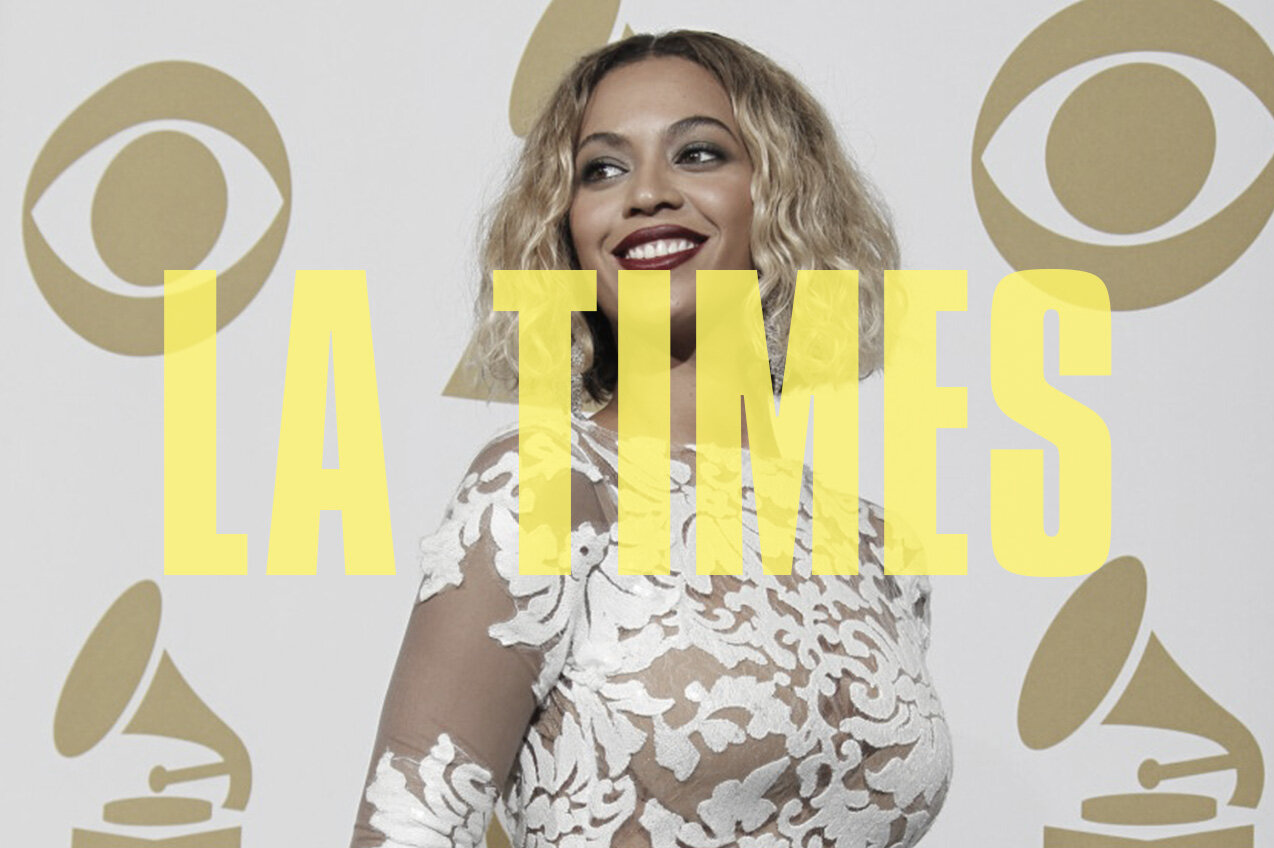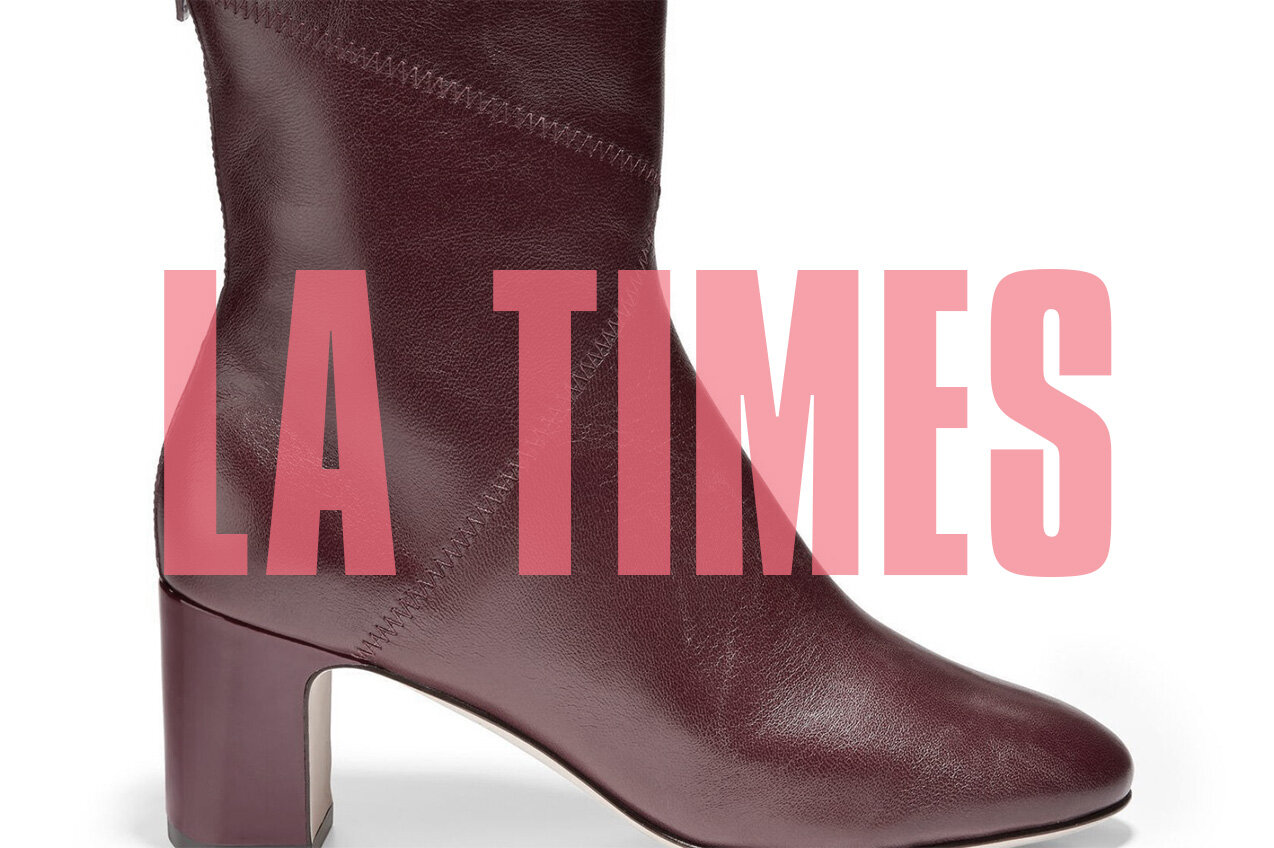VOGUE – Stylist Brittany Hampton on How to Dress Athletes for This Present Moment
Filipino-American stylist Brittany Hampton talks to Vogue Philippines about a childhood immersed in fashion via barongs and Filipinianas, clothes as a medium for storytelling, and cultivating a new style language for athletes.
When Paige Bueckers, the lithe 6’0” point guard for the University of Connecticut’s women’s basketball team took to the ESPY’s red carpet in early July, she cemented what both sports fanatics and passive bystanders alike have suspected; the star player’s striking style, both sartorial and athletic, exudes an innate passion for self-expression and confidence.
Bueckers’s style streak, which blazed at the ESPYs in the form of a pale pink suit with embroidered imagery straight from the Kid Super runway, anchored by a pair of white patent leather Jimmy Choo loafers, has been cultivated by Brittany Hampton, the 35-year-old Filipina-American and owner of Hampton Creative Consulting. The Los Angeles-based Hampton has styled other notable athletes, including Nika Mühl, Sloane Stephens, Russell Westbrook, and Victor Cruz, and art-directed campaigns and collections for brands like Honor The Gift, Jordan Brand, and Stock X.
But it’s her most recent work with Bueckers and Mühl for high-profile events, editorial spreads, and the pre-game WNBA tunnel that has helped establish both players as in-demand personas on and off the court. Hampton’s holistic approach to creative storytelling (hint: it goes way beyond the clothes) is at the heart of the San Francisco native’s strategy and what comes across in each client’s look whether it’s polished head-to-toe Prada or a deconstructed denim look from Jaded London.
There’s no better timing for Hampton’s talent to collide with her athlete clients’ ascent. Sports and fashion are having an irrefutable moment. Type “WNBA” into a Google search bar and “WNBA style” loads as the first hit right above the official game schedule. WNBA and NBA tunnel style rivals traditional runways in terms of setting viral trends. Recently, luxury brands were ubiquitous at the 2024 Olympic games in Paris. In addition to the return of Team USA’s Ralph Lauren opening ceremony looks, this year’s gold medals were designed by LVMH-owned jewelry brand Chaumet and presented to winners on Louis Vuitton trays. New York designer Telfar created opening ceremony uniforms for Team Liberia; sleek black caftans with necklines shaped like the continent of Africa.
Hampton’s point of view, applied to sports stars or otherwise, syncs with our current zeitgeist—a knowledge of streetwear labels, playfully daring proportions, and importance placed on accentuating the body as much as a client’s overall persona. Her ability for fashion and image building is something she attributes to her maternal Apo. Originally from Pampanga, Hampton’s Apo was a fashion designer and creator of FAYE (Fashion Arts and Youth Enterprise) in San Francisco. “That’s where the full fashion element came into it for me,” says Hampton. “I knew then that I wanted to be a designer.” Watching her Apo make barongs and Filipinianas inspired her to study fashion design at FIDM in San Francisco. On weekends, Hampton would dip down to Los Angeles and began making inroads in film and television, landing a job handling wardrobe for Nickelodeon shows and dressing talent like Ariana Grande and Jennette McCurdy in their early days of stardom.
After her time at Nickelodeon, it was Hampton’s turn in front of the camera. In 2014, she joined the first season of the reality competition show House of DVF as a contestant and won a year-long reign as the Global Ambassador to DVF. The role gained Hampton access to the fashion world, its events, and its personalities. It was during a 2014 DVF runway show that Hampton met Westbrook, who was then planning the launch of his LA-based brand Honor The Gift and recruited Hampton as the junior creative director across the men’s, women’s, and kid’s collections.
Through Honor The Gift, Hampton had first-hand experience with creating inclusive size ranges that would suit tall athletes, setting her on the path to styling more sports figures. She began styling Westbrook and his wife and soon, her work caught the attention of more and more NBA and WNBA players.
“Dressing athletes requires a unique approach to storytelling,” says Hampton, who loves to support up-and-coming labels as much as creating custom looks with established European houses. “It’s about understanding who they are now and who they will become.” Hampton references Bueckers’s journey as the “comeback kid” after an injury and factoring that portion of her story into an overall style arc. “My portion in that is enhancing the narrative through fashion, understanding who they are as a persona first and getting them to understand what they really like vs what they should be attached to.”
Her strategy seems to be paying off. GQ recently named Mühl “Best Dressed Rookie,” and she’s been called “the Charli xcx of the court” by fans on social media. “If Nika wants to wear eyewear every time she’s in the tunnel, then she can also sell her own. That’s how my brain works,” Hampton says. “I am here to build with her because she’s not just a hanger. Her storytelling should align with everything she’s about. I’m always thinking about the marketing aspect because these women belong here. They deserve to be here.”
As for Bueckers, Hampton sees her as her “Zendaya,” putting the player in a mix of high and low labels and always introducing her to indie brands in order to help develop her own unique aesthetic. “I love taking those moments and giving opportunities to younger designers,” says the stylist. “I want their audience to be able to shop what they’re wearing. It can’t always be Gucci, Louis Vuitton, and Prada. They have to be able to wear the highs and lows.”
Through dressing athletes, Hampton has also been able to advocate for size inclusion, be that with shoes or jewelry that considers tall and athletic builds. She has pulled both women’s and men’s runway collections and designer shoes for her female clients, creating a more gender-fluid approach to red-carpet dressing. When it comes to jewelry, Hampton name-checks David Yurman as having size-inclusive rings, necklaces, and bracelets.
“Athletes are underrepresented in fashion,” she says. “Luckily, I do work with incredible tailors and brands that align with the ethos of inclusivity. They realize the cultural impact, diversity, and empowerment that sports figures bring and want to support and do better for them.”





CNN – The Filipino American creatives who are reclaiming the barong
CNN — As a first-generation child of Filipino American immigrants, I grew up with wistful stories my parents told of their homeland, rich in details from their childhoods spent in a country that seemed as foreign to me as the fictitious lands described in fairytales. These stories were told in a tone that encapsulated both a yearning to seize opportunity in the West and for a life where they didn’t feel like outsiders — where conformity to American culture was not a daily burden.
Many of these stories centered on my paternal great uncle, Philippine President Ramon Magsaysay, and his role cementing the barong Tagalog, a sheer button-down shirt often emblazoned with hand stitched embroidery, as the country’s official formal wear.
More recently, the barong Tagalog — which translates loosely to “dress of the Philippines” and is often abbreviated to barong — has surged in popularity with Filipinos across the diaspora as a point of national pride and style.
“(The barong) is inherently so glamorous,” explained wardrobe stylist and fashion editor Rap Sarmiento. “With its sheerness and embroidery, it lends itself to the moment. Second generation kids are embracing this.”
The origins of the barong are widely seen as dating back to times before the Philippines was colonized by Spain in the 15th century. Both a status symbol and everyday garment, its sheer fabric has been explained as either a practical design choice, to deal with the intense heat and humidity of the Philippines, or one borne of oppression, with Spanish colonizers wanting to ensure Filipino natives could not steal items or conceal weapons under their clothes.
“The Spanish took (the barong) to all of their colonies… other countries have their own versions,” said Caroline Mangosing, founder and designer of Vinta Gallery, a Canadian-based brand that specializes in Filipino clothing. “Cuba has the guayabera with pockets. The Dominican Republic has a version with pleating.”
During his 1953 inauguration, President Magsaysay wore a barong to show solidarity with the common man. It sparked wide acceptance of the shirt as the Philippines’ answer to a formal suit or tuxedo, and became a garment which struck a strong contrast to westernized suits and ties on the global stage.
The inauguration marked one of many times President Magsaysay used the barong as a signal toward Philippine independence and resilience, in the period after the nearly 50-year colonization of the country by the United States had come to an end. Supporting his Filipino First Policy to strengthen and grow the economy, the President and his administration invested in garment manufacturing and textile mills, with many using the native materials from which barongs are traditionally made — piña (pineapple fiber) abaca (hemp) and jusi (piña and hemp combined), in turn stoking local industry and the general Filipino public’s interest in native garments made from native fibers — said his son (and my uncle), former Senator of the Philippines Ramon Magsaysay Jr.
“He was committed to supporting Filipino nationalism for our country and people,” Magsaysay Jr. said. “(During his inauguration), we could see him proudly showing his Filipino-made clothing and shoes to a big crowd.”
The barong’s evolution following Magsaysay’s presidency is also as compelling as its colorful and complicated past. President Ferdinand Marcos’ use of the garment, for example, saw its popularity wane among many Filipinos over time.
“There was a political hangover. People didn’t want to be like them,” said Mangosing of Marcos and his wife Imelda, whose predilection for Filipiniana (traditional women’s dress) also saw the fashions go out of style once they were exiled from the country. “After that, I feel like everyone stopped wearing barongs for a while, so it stopped evolving — what remained were mass-market versions in garish colors.”
But as more Filipinos have permeated fashion, music and pop culture at large in the United States (and around the world) in recent years, the barong has bounced back in ways that are strikingly creative, individual and inspiring.
Vinta Gallery’s barongs, which are handmade and embroidered at an atelier in the Philippines, range from $300 to $600 for a ready-to-wear version and can swing north of $1000 for custom. They are among the brand’s most popular items, Mangosing told CNN, particularly those embroidered with anting-anting or other charms based on Philippine folk magic.
Last year, Jian DeLeon, men’s fashion director at Nordstrom, collaborated with the menswear label Bode on a shirt inspired by a traditional barong, but made from a non-traditional cotton linen blend fabric.
“I took inspiration from when French designer Pierre Cardin redesigned the (shirt) silhouette in the 1970s,” De Leon said. “Cardin added touches like a camp collar and French cuffs and embraced a more global style of embroidery. I think these are the kinds of projects that can put these inherently Filipino fashion items into a global context.”
Attending a Nike “Filipino Forces” dinner in Los Angeles last fall, an event celebrating Filipino Americans working in music, fashion and entertainment, Sarmiento wore his father’s barong over a t-shirt from Rhude, a black tennis skirt and black Margiela Tabi boots. “It was a way to bring it forward,” said the stylist.
At the same event, designer and influencer Aleali May wore a barong with distressed jeans, hoop earrings and limited-edition Nike Air Force One sneakers.
“When I first started in music, I was usually the only Filipino at events, and now it’s typical to see 3 or 4 of us, so it’s not unusual to see a barong being worn,” said music executive Marisa Pizarro. “It’s an elevated look without having to wear a suit. You rarely see suits (in creative industries) anymore.”
Other Filipino-American celebrities have recently opted to don a barong both on red carpets and other highly visible events. Last year, Levi’s created a custom-made denim barong for Jo Koy, juxtaposing the traditional garment’s fabrics with the cut of a trucker jacket. Covering the opening night of Broadway musical “Here Lies Love” for Vogue Philippines, photographer Martin Romero noted that, “a lot of the men, specifically the cast members, and a lot of the guests, wore traditional and modern barongs.” Likewise, the barong has become increasingly ubiquitous among Gen Z on social media, with young people wearing brands like Vinta Gallery and The Mestizo on their Instagram and TikTok feeds.
NBA players Klay Thompson and Kevon Looney — who are not Filipino — recently wore barongs during their Asia tour as ambassadors for athletic brand Anta. “It looks wonderful. And feels even better, too,” Thompson told Esquire Philippines of the garment. It was a gesture the magazine described as a “Pinoy Pride moment.”
“It’s a combination of social media and awareness of Filipino culture — wanting to wear traditional garb to show off our culture,” said entrepreneur Rembrandt Flores. “Younger people’s interest is piqued and they are choosing to wear the barong as a source of pride and sartorial creativity.”

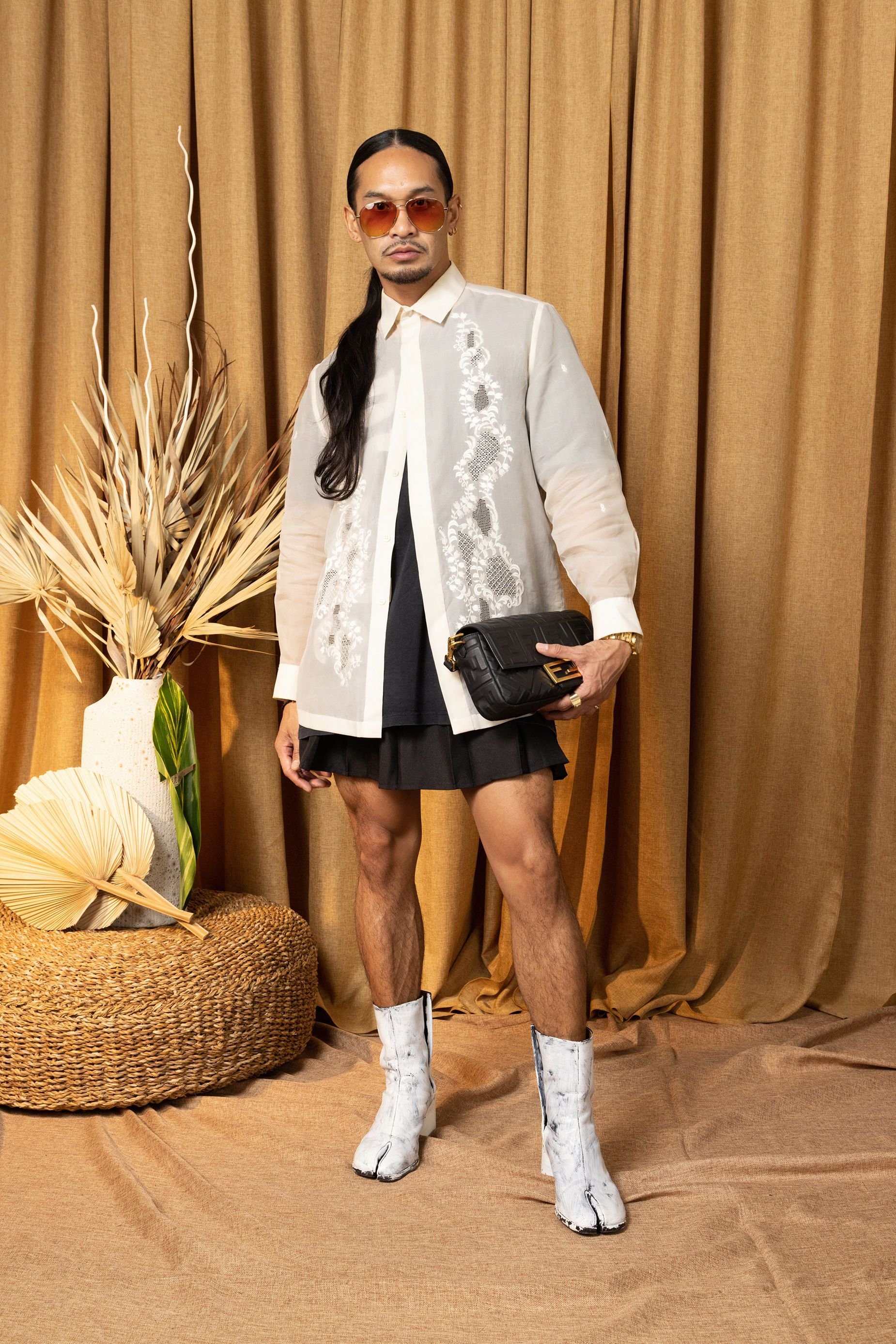
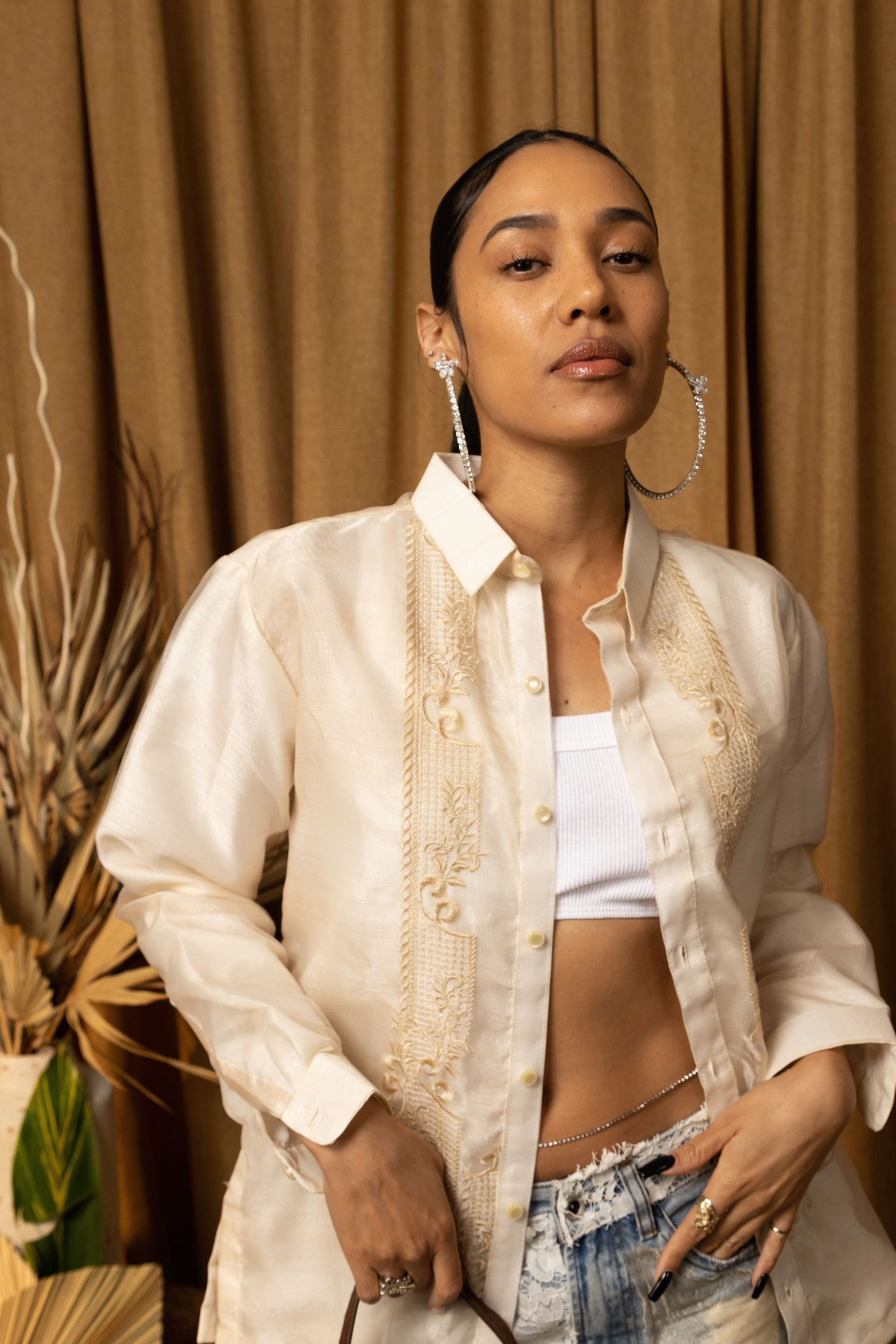
CNN – A new barbershop in Denver is staffed with formerly incarcerated people
”This is nerve-wracking,” James Canody exclaimed — through an exhale — of his new job as an apprentice at the Denver-based business R&R Head Labs. When speaking with CNN, Canody had been working as an apprentice at the barbershop for 13 days.
Fourteen days ago he had been released from prison, where he served 6 and a half years of an 18-year sentence.
Canody is one of 650,000 people released from prison every year across the United States, according to the Department of Justice. That’s a population of which nearly 75% are still unemployed a year after being released. According to the Brookings Institution, stable employment has been shown to reduce recidivism, but even for those who find a job, earning capacity is likely hindered: Based on a report released by the Bureau of Justice Statistics, formerly incarcerated people who do find employment after their release tend to earn just 53% of the median US worker’s wage.
Canody is one of eight employees — apprentices, barbers and managers — at R&R Head Labs, a barbershop which opened its doors in February exclusively employing formerly incarcerated and justice-impacted individuals. It aims to address the financial, logistical and emotional inequities associated with their reentry into society.
Fresh starts and fresh cuts
R&R Head Labs’ model creates a pathway to employment by utilizing skills — and sometimes a barbering license — its employees gained while in prison. (Prison programs offering barber/cosmetology licenses are not federally mandated, rather determined state-by-state based on a variety of factors.)
Barbering skills aren’t a requirement to work at R&R Head Labs, however, as its paid apprentice program shepherds employees through training, the 2,000 hours of working as an apprentice and 300 hours of classroom or in-shop time required to get a barber license in Colorado.
“This opportunity feels surreal and overwhelming,” said Canody. “But that’s a good thing. I am getting comfortable with being uncomfortable and see how barbering can help me change my life.”
R&R Head Labs is the brainchild of James Repenning, a former president of the national barber chain Floyd’s 99. After learning about prison barbering programs, he saw potential in combining his professional experience with a greater purpose. Together with an advisory council — a group which includes formerly incarcerated people turned advocates — Repenning has also implemented mentorship programs and community outreach in Denver.
“We started by asking ourselves how we find barbers who have really committed to change and then asking, what do they need?” Repenning explained in a Zoom interview with CNN. “It’s about understanding how we support them in the work environment, because the pinnacle of what we want to do is give them hope and a path.”
Repenning and his team work with Colorado prisons to recruit individuals and get them into the apprenticeship program. According to Repenning, the support from the Colorado Department of Corrections has exceeded expectations, with parole officers facilitating barber tool starter sets and arranging job fairs.
“It’s important (for formerly incarcerated people) to make money — both because parole requires it and for basic survival,” he told CNN. “The solution was to create apprenticeships, so someone can start working immediately and toward the hours they need to earn their barber license.”
Transformational opportunities
In Denver specifically, R&R Head Labs recruitment and reentry efforts are steered by Charles Smith, a member of the company’s advisory council. Smith served 24 years in prison; after his release, he became the director of advocacy and earned income strategies for CommunityWorks, a non-profit organization which provides job seekers with support service and job readiness instruction.
Speaking about the main challenges formerly incarcerated individuals face, Smith lists housing and employment as the most crucial. “Employment is going to sustain you,” he told CNN. “The idle mind is the devil’s workshop. You start doing things, you start drifting. Employment keeps you stable and focused.”
“The model would be to have someone like Charles in every state we go to,” added Repenning. “Many of the people we talk to are people he served with, so there’s a great deal of trust there.”
Smith aims to connect with inmates around 90 days before their release date, to start mentoring and prepping them to make their acclimation to life outside of prison easier and more tolerable. Understanding the “politics of what happens in prison” is something Smith considers a crucial aspect of his work, and one he believes offers an advantage in approaching and vetting prospective barbers.
Several of the seven full-time and part-time barbers currently working at the first location are people Smith knew while serving his own sentence — including James Canody.
“People in prison are a forgotten population,” said Smith. “It is a huge help to people coming out of prison to see and feel that someone finally believes in you. It makes you want to be better.”
James Repenning envisions R&R Head Labs as a long-term opportunity for barbers to manage their careers, and to offer a management track that will empower individuals to grow with the company — or branch out on their own.
In keeping with its overarching ethos, even R&R’s physical space was designed to best accommodate formerly incarcerated people. With guidance from the advisory board, the space was specifically designed to minimize triggers for its employees, down to its color palette and barber chair positioning.
“Everything by design has to do with connectedness,” explained Repenning. “A lot of barber shops are stainless steel… ours needs to be super welcoming and warm.” Repenning and his team learned which colors and palettes to stay away from: Certain shades of orange, red, green and blue (which could serve as a reminder of jumpsuit colors) were out; brighter colors, embodying outdoor themes of woodlands and greenery were chosen instead to soften the environment and make it feel uplifting, energetic and approachable.
Barber chairs are positioned so that no barber’s back is to the door, another potential vulnerability for an employee who had previously served prison time. “Prison can be a very dangerous place,” said Repenning. “‘Watching your back’ takes on extra significance, thus our barbers tend to want to know who’s behind them and who’s walking into the space.” A round bar where people are invited to sit and wait for their appointment was designed specifically to facilitate conversation and community.
A barber’s compensation includes floor earnings and commission comparable to other barbershops — but less commonly, barbers at R&R Head Labs are able to set (and raise) their own prices. Employees also receive health insurance and vacation pay.
R&R Head Labs is looking to open an additional shop in Denver later this year, with future expansion into the Boston, Chicago, and New York markets planned.
In its first months of business, the R&R Head Labs location has attracted a diverse crowd, Repenning told CNN. “We’re seeing every race, hair type, gender, income level and age. It’s been a predictably slow start because our barbers typically don’t come with a ‘book’ (of pre existing clients) as they would if they were transferring from another barbershop. However, we are attracting 10+ new customers per day.”
“It’s like bringing the ‘hood and Beverly Hills together,” added Smith. “And creating this amazing beautiful space. A safe space.”



ELLE – Introducing the Filipino Creative Class
Now more than ever, there is a palpable swell of Filipino talent permeating and shaping the cultural zeitgeist, cementing their status as names to know.
Dolly de Leon recently became the first Filipina actress to ever be nominated for a BAFTA and Golden Globe for her scene-stealing turn in the Oscar-nominated film Triangle of Sadness. H.E.R., Steve Lacy, Olivia Rodrigo, and Saweetie will arguably all outlast pop music’s fickle standards. Comedian Jo Koy’s comedy Easter Sunday is the first Hollywood movie to star an all-Filipino cast. Designer Rhuigi Villaseñor was appointed creative director at Bally. Now more than ever, there is a palpable swell of Filipino talent permeating and shaping the cultural zeitgeist.
Looking back, Filipino cuisine served as a catalyst for our current Filipino-American renaissance, and for years has gained a strong foothold across the country, as the late Pulitzer Prize-winning food writer Jonathan Gold predicted it would nearly 10 years ago. The success of Lasita in Los Angeles and Musang in Seattle is a testament that Filipino food, with its layers of influences and complexities due to centuries of colonialization, can be both familiar and foreign to those who have never tried it, and has an increased presence in our daily dining rituals.
To be clear, we Filipinos have been here, certainly in creative capacities, which is more apparent now due to social media, but historically and more widely as health care workers. Colonized by Spain from 1565 to 1898 and then by America from 1898 to 1946, Filipinos have been influenced by Western cultures for decades. Post-World War II, Filipinos were heavily recruited to fill the nursing shortage in American hospitals, setting into motion a robust frontline workforce comprised significantly of Filipinos. In 2019, one out of 20 registered nurses in the U.S. was trained in the Philippines. According to National Nurses United, at the height of the COVID-19 pandemic, 26.4 percent of nurses who died from the virus and its related complications were Filipino, yet Filipinos only make up 4 percent of registered nurses in the United States.
We have been here. Not as a monolith, but as a thriving community with rich stories informed by a complex past, and now with a momentum that is shaping a new narrative. One on our terms, and with a stance that is declarative and increasingly front-facing.
“We are living in an open kitchen, and now you’re able to see who the groundbreakers are, and it just so happens there are a lot of Filipinos,” says Villaseñor, who founded the clothing line Rhude before stepping into the top role at Bally. “A cultural belief of staying behind the scenes and paying our respects has been engrained in us, but as more Filipino people take center stage in big jobs, it is inevitable for us to rise.”
Nicole Ponseca, author and Filipino food pioneer, echoes this sentiment, offering a key detail: “This is a new existence that has a different kind of confidence behind it,” she says. “Through the ’80s and ’90s, a lot of our experience was through non-Filipino eyes. It was about ‘how can we assimilate?’ Now, we are succeeding by doing it ourselves and valuing ourselves. We’re not going anywhere. In fact, we’re only beginning to blossom.”
Below, meet seven Filipinos who are currently shaping our culture through fashion, beauty, and music, on their own terms and with the Filipino-American experience at the forefront.
_____________________________________________________
Jian DeLeon
In his decade-plus career that included editorial roles at Complex, Highsnobiety, and now as Men’s Fashion Director at Nordstrom, Jian DeLeon has managed to seamlessly blend his heritage and the immigrant experience while pushing sartorial boundaries in men’s fashion, streetwear, and beyond. Case in point: Last year, DeLeon accomplished a fashion-food-anthropological trifecta, emblazoning a custom Bode jacket, along with brand founder Emily Bode, with illustrations of his favorite childhood Filipino snacks. The Jollibee mascot and 7D Mangoes logo, among others, peppered the corduroy piece, constructed by one of the most talked-about American designers today. The jacket is just one example of the impactful projects DeLeon has spearheaded in his current role. Last year, in collaboration with Sam Lobban, Nordstrom’s EVP GMM of Apparel and Designer, and photographer Joshua Kissi, he launched Found in Translation: A New Language of American Style, an in-store shop and visual campaign that spoke to their interpretation of traditional American style codes. “We haven’t peaked,” says DeLeon about the proliferation of Filipinos in fashion and pop culture. “There is always room for more, and the table is infinite. It’s about how I can finesse it so that I can get other people in, because if I’m eating, then we’re all eating.”
_____________________________________________________
Samantha Duenas
Samantha Duenas, a.k.a. SOSUPERSAM, turned her childhood hobbies of singing and dancing into a prolific career that straddles DJ-ing, performing, modeling, and radio and television appearances. While her DJ presence is global and highly sought-after considering her versatile, genre-bending mixing style, it’s her hometown of Los Angeles where she is rooted as a co-founder of popular L.A.-based R&B party 143. Born in Culver City, Duenas says she has seen Filipino representation and identity evolve exponentially over the past couple of decades both in L.A. and as a whole. “It’s such a new identity if you really zoom out,” she says. “We are hitting a stride where we can define ourselves and we have enough history and a footprint in America where we can declare ourselves. It’s powerful and encouraging.” Duenas cites 2022’s Grammy awards, where Saweetie, Olivia Rodrigo, H.E.R., Bruno Mars, and Elle King were in attendance, as a clear turning point for Filipino representation in music. “The takeaway was huge!” she exclaims. “Filipino musicians are becoming more commonplace in mainstream music creation and creativity. It’s always been there, but I don’t know if that’s always been seen in front of an audience. Our presence feels solid, and it’s not going anywhere.”
_____________________________________________________
Rhuigi Villaseñor
Defining a new American Dream is what has driven Rhuigi Villaseñor since launching Rhude back in 2015. Informed by American pop culture and iconic branding like Marlboro and vintage bandana prints, the brand rose to be a mainstay of menswear and streetwear culture, garnering loyal fans including Jay-Z, Kendrick Lamar, and LeBron James, to name a few. As the Rhude label has permeated the highest levels of retail and celebrity, Villaseñor’s star has undoubtedly risen. Earlier this year, the L.A. native who immigrated from the Philippines at age 9 was appointed creative director of 172-year-old Swiss luxury house Bally. “We’re looking at the ripple of what V [Virgil Abloh] did. And this is not to take away from my talent, but it really is that.” Regarding his appointment, Villaseñor says, “People were never really looking into the subcultures as a source of luxury and opulence. The idea of what a fashion house should be now looks to people of color— Filipinos and the youth—and the way they perceive luxury.”
_____________________________________________________
Emman Montalvan
In the decade since photographer Emman Montalvan moved to L.A. from his family’s farm in the provinces of the Philippines, he has established himself as an in-demand fashion and beauty photographer. His clients include Sunnies Face, Nike, Chanel, Dockers, and JVN Hair, and he credits early American influences like MTV with shaping his dream and preparing him for a creative career in the U.S. Montalvan managed the transition from remote farm life to L.A. through what he says is an inherent adaptability engrained in Filipino culture. “The Spanish, Japanese, and then American colonizers left a big mark which has forced us to have new eyes and embrace a new land,” he says. “We adapt to move forward and survive. It has been to our advantage, but also disadvantage, if we’re talking about our solid identity as a culture.” This type of reflection has inspired him to return to the Philippines to work on a personal project he is calling a “love letter” to his hometown. “I can attest to the Filipino perseverance,” says Montalvan. “Half of my family works in Alaska farming salmon part of the year, and I see their hard work. I’m so grateful to have a seat at the table and can cast my mother in shoots. I will help them get on their feet here in America. Since I have to capacity to do that, I will.”
_____________________________________________________
Frederic Aspiras
Hairstylist and master wigmaker Frederic Aspiras has gained global recognition for creating imaginative hair looks for Lady Gaga, with whom he’s worked exclusively on everything from campaigns to tours and red carpets since 2009. Last year, he was nominated for an Oscar himself for his work on House of Gucci. Creative since childhood, Aspiras’ parents always encouraged him to pursue a path in beauty. “My mother always saw my gift in transforming people with hair and makeup and guided me into that world,” he says, before adding that creativity is prevalent throughout Filipino culture. “Filipino people and culture are rooted in kindness and respect for each other,” Aspiras says. “But more so, I’ve come to really understand the historic background of creative beings in Filipino culture. It’s no wonder that you will find some of the world’s most gifted artists in Filipino people. But it’s time for the world—and mostly the U.S.—to recognize the amount of talent being slept on. That’s why representation is very important in Hollywood.”
_____________________________________________________
Raissa Gerona
It’s safe to say that Revolve has been instrumental in establishing the modern-day fashion influencer, and chief brand officer Raissa Gerona has been the one pioneering the retail platform’s influencer marketing strategy to be the global force it is today. Gerona, who moved to the U.S. from the Philippines at age 7, studied to be a lawyer before pivoting to the style space, where she has created a singular model that hosts global influencer trips like Revolve Around the World and has helped build a portfolio of over 20 Revolve-owned brands and in-house collaborations with massive influencers like Aimee Song and Camila Coelho. “I’ve definitely felt like there’s this moment for the Filipino community making a dent in fashion, music, and entertainment,” says Gerona. “And it’s been a long time coming.” She cites Villaseñor as an inspiration. “He is doing such an incredible job. I’ve seen him transform really right before my eyes. There are also so many great brands and designers coming out of the Philippines. Young people are changing the narrative around what a Filipino creative is, and I’m happy to support them as much as I can.”
_____________________________________________________
Martin Romero
Look at coverage of the most relevant fashion events right now, namely fashion month and the CFDA Awards, and Martin Romero has a front-and-center spot to document the scene. The photographer and videographer also counts American Eagle and the Fifteen Percent Pledge as clients. Originally from the city of Tarlac, just north of Manila, Romero has made strides in street photography alongside those he’s looked up to—namely, Tommy Ton, Phil Oh, and Scott Schuman (better known as The Sartorialist)—since moving to New York in 2014. “I also really look up to Bill Cunningham,” says Romero. “Cunningham didn’t just shoot street style. It was very documentary and illustrated what was happening, which is what I am trying to do. I’m trying to tell the whole story and transport people to be part of that.” The increase of Filipino and Asian representation has made all the difference for Romero in his rise through the rungs of the photography world. “Right now, with all the representation, I’m so amazed. My hope is that every Filipino child seeing it, whether here or in the Philippines, gets inspired and pushes for their dreams.”
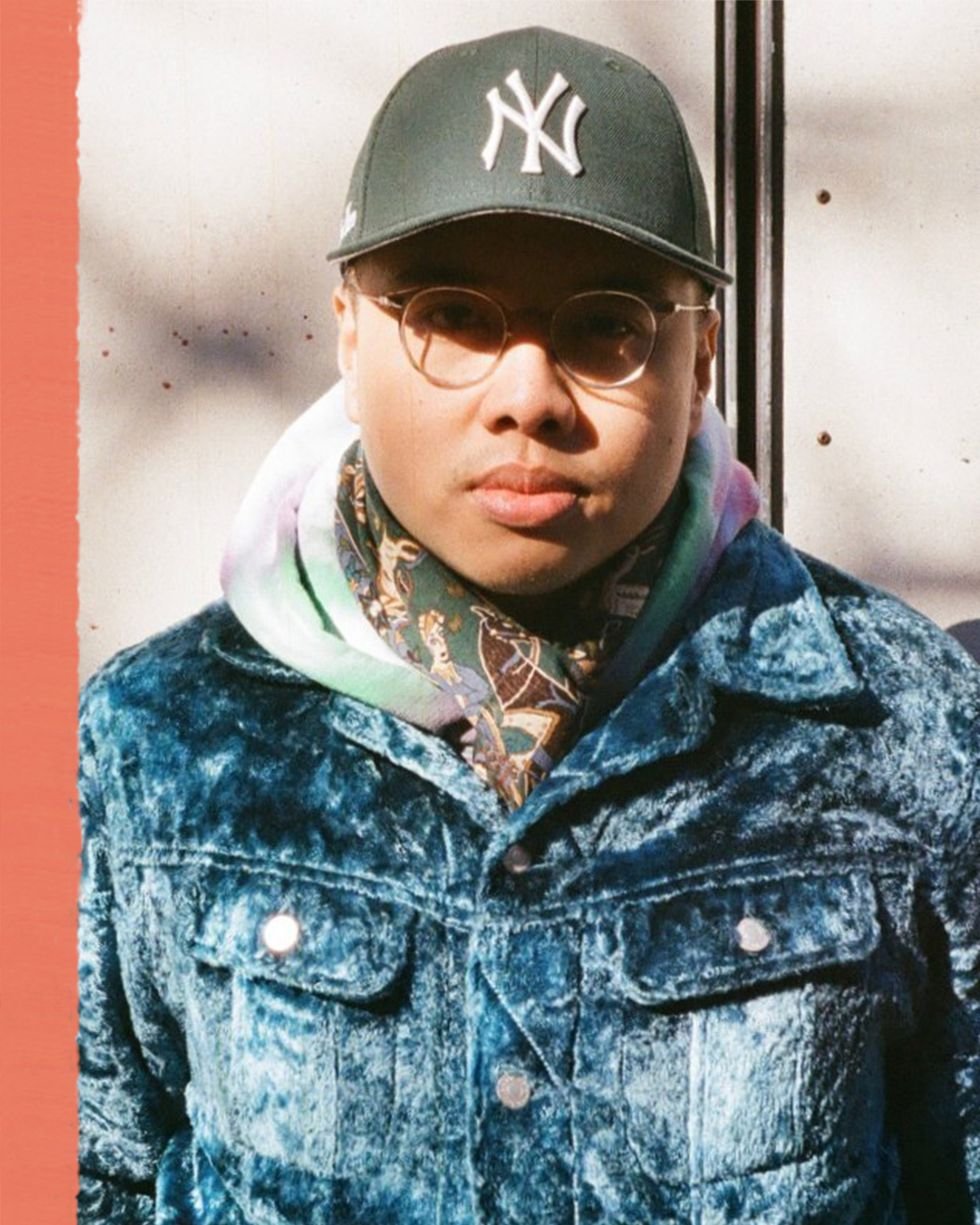
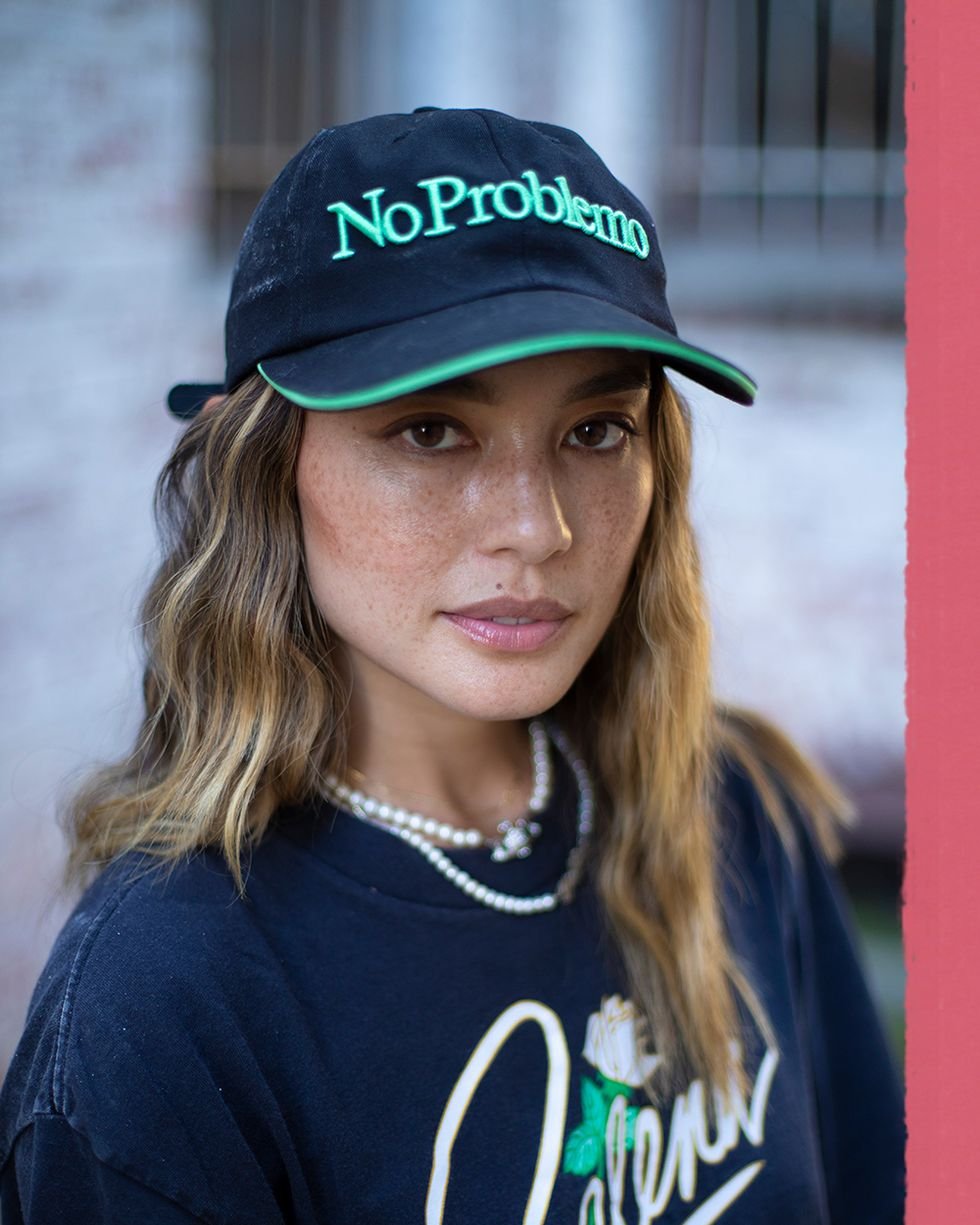
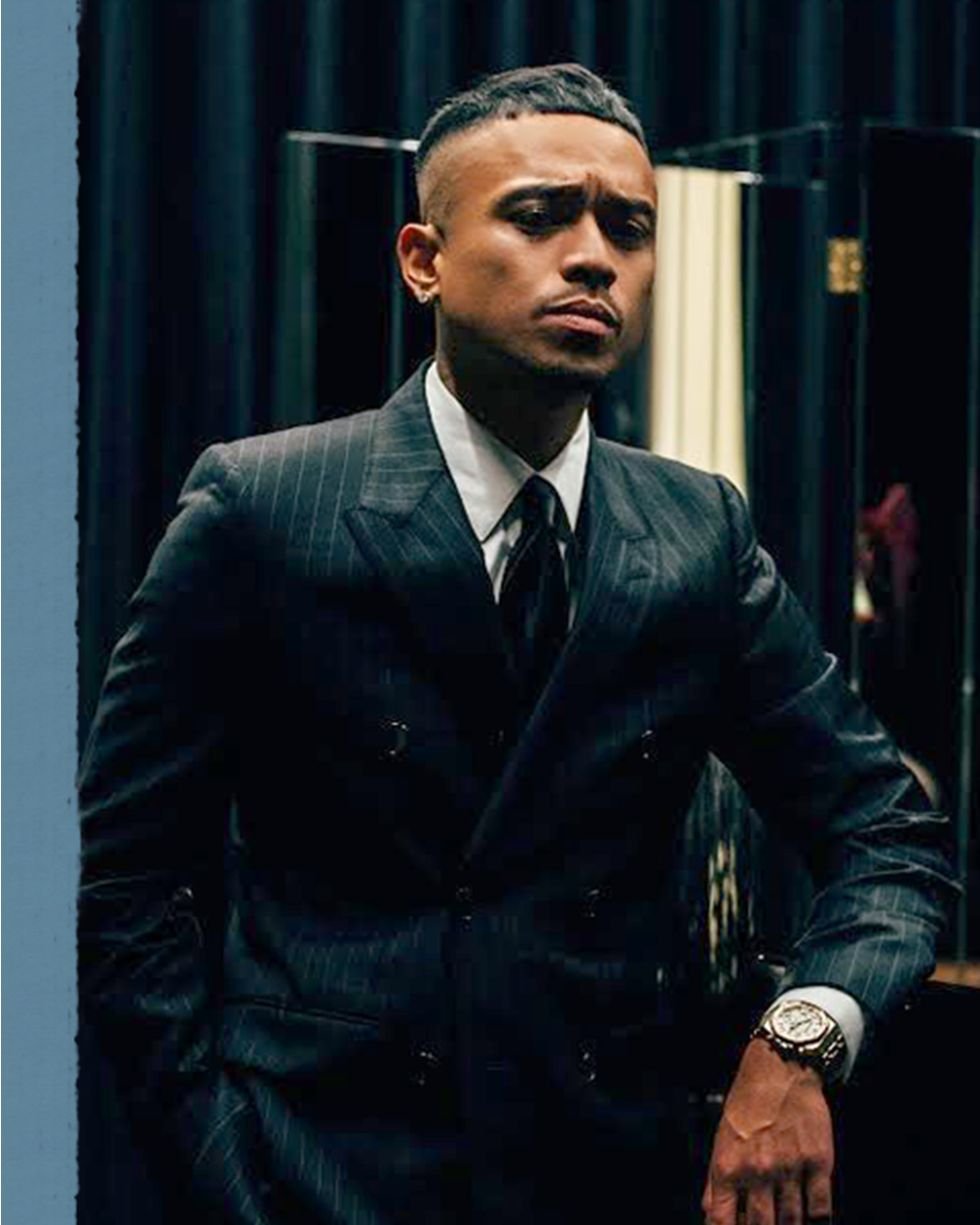

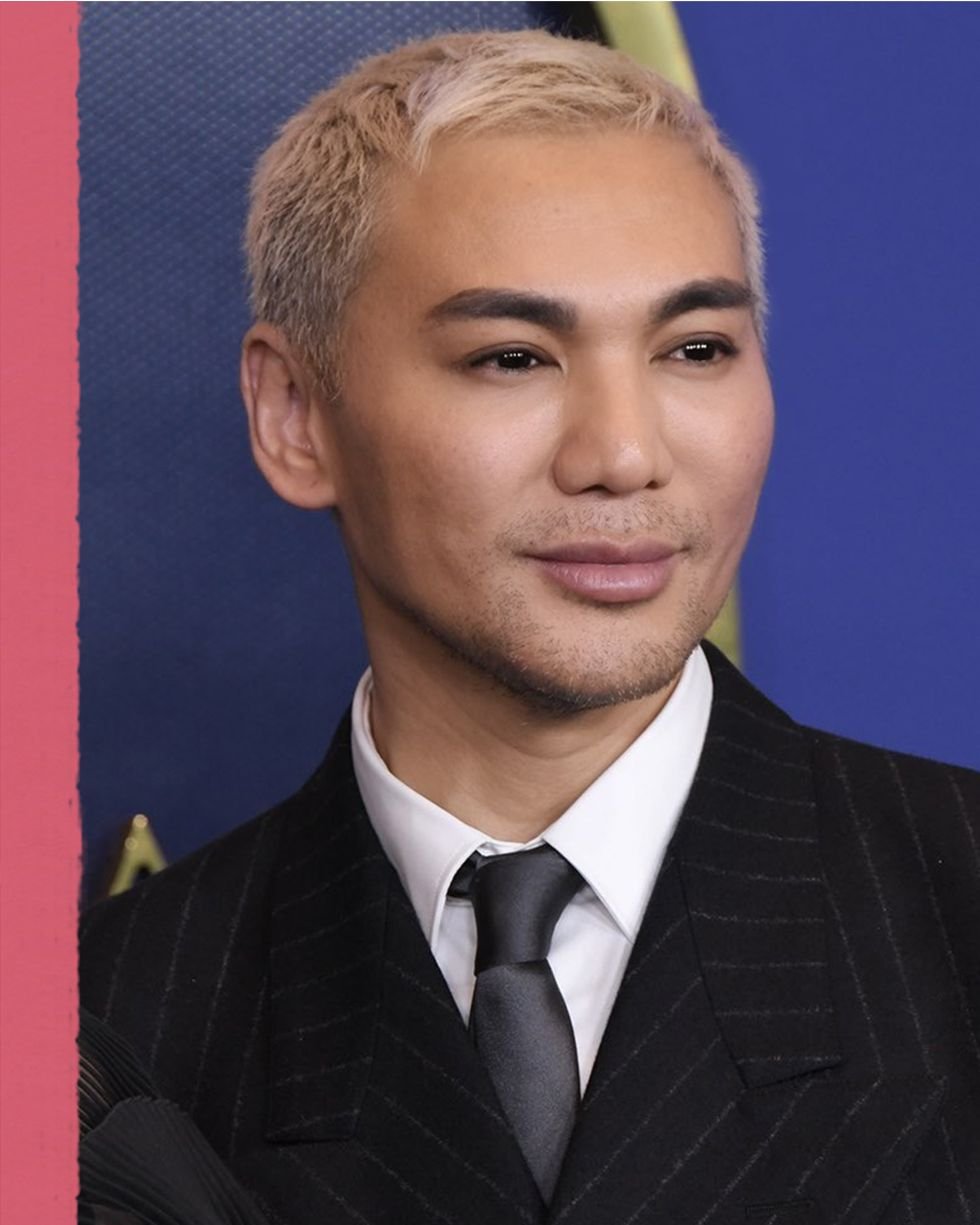
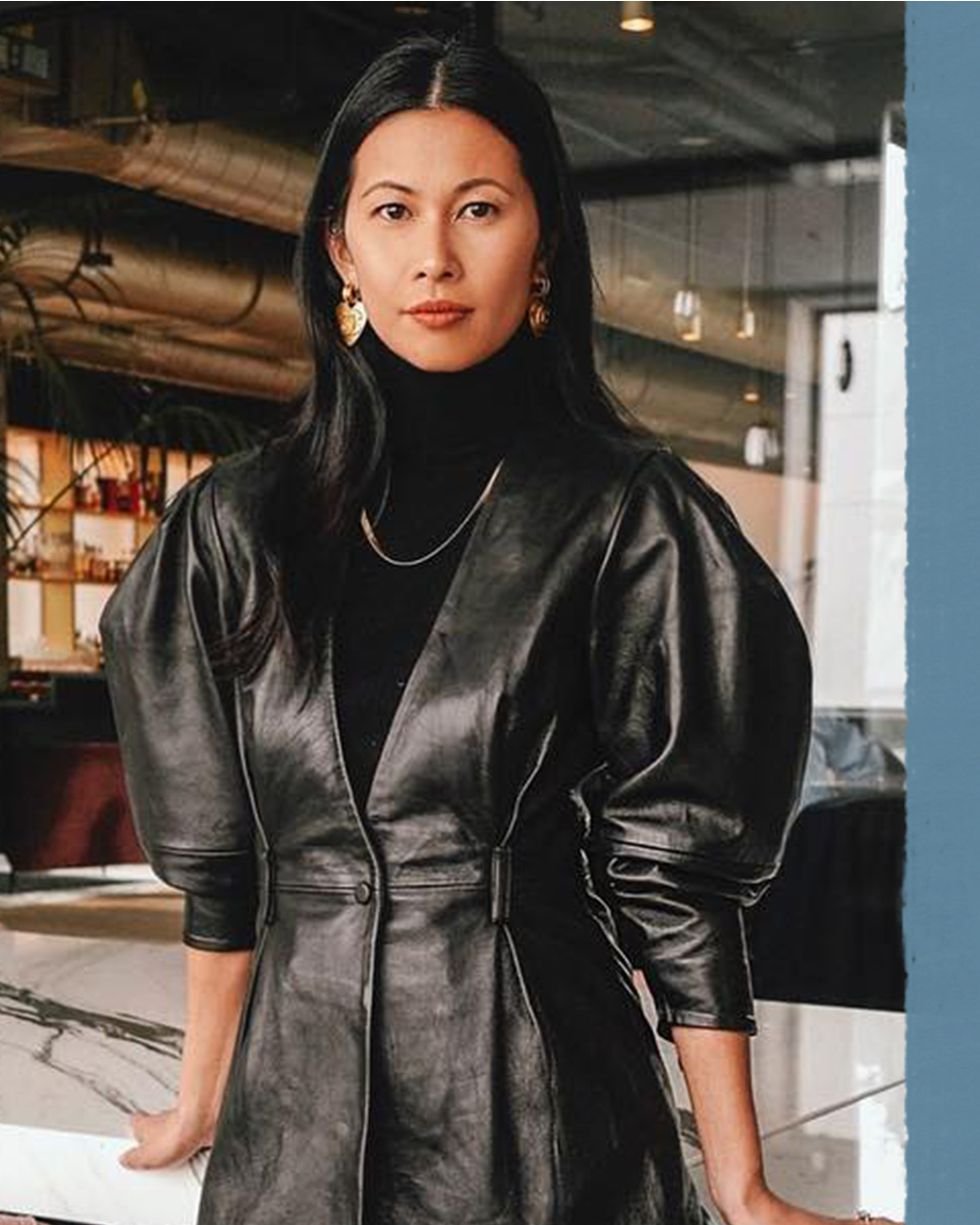

BOF – A New York Fashion Week Mystery: What Happened to All The Plus-Sized Models
The city’s designers have long been at the forefront of promoting size inclusivity, but cast noticeably fewer “curve” models this season. One theory: the rise of Y2K style is bringing back the era’s body standards as well.
KEY INSIGHTS
• There were noticeably fewer plus-size models cast in runway shows at New York Fashion Week this season.
• Theories as to why range from the return of Y2K style to the rise of diet drugs to designers favouring mid-sized models over their curve peers.
• Size inclusivity advocates fear a lack of runway representation will soon be reflected in fewer retail options for plus-size shoppers.
______________________________________________________
Hours before the official start of New York Fashion Week, model Georgina Burke seemed lukewarm about the days ahead. Burke, who is signed with IMG Models and has been a curve model for 13 years, said her hesitance was rooted in the fact that brands tend to reserve only a handful of spots for models like her – and that this season, those opportunities were even rarer than usual.
“They have one or two looks for plus girls. And we often can’t buy the clothes from the brand at all,” said Burke, who walked in the Veronica Beard show on Tuesday evening along with two other curve and mid-size models (she noted she would be able to purchase the camel-coloured trench she wore down the runway when it comes out).
After a half decade where plus-size models, typically defined as size 14 and above, were an increasingly common sight on the runway, their relative absence in New York this past week was a source of conversation on the sidelines of shows and on social media.
“I fear this fashion week may be the steepest decline yet.” said Nadia Boujarwah, co-founder and chief executive officer of size-inclusive retailer Dia&Co, which launched a collection of Diane von Furstenburg wrap dresses at the start of New York Fashion Week.
Theories abound about the reason behind the shift. Some see it as a symptom of a broader cultural pivot, where celebrities bragging about their skinnier frames, and the sudden ubiquity of diet drugs can make it feel like the past decade-plus of messaging on body positivity never happened. Others point to more industry-specific causes, including an uptick in casting of mid-sized (size 8-10) models that may have come at the expense of slots once reserved for their plus-size peers.
The recently concluded week wasn’t a total return to the days of heroin chic. Plus-size model Precious Lee closing the Thome Browne show “was a moment,” Burke said, and Carolina Herrera and Coach were among the prominent brands to include mid-sized or plus-size models on the runway. BIPOC designers in particular have continued to push for size inclusivity and this season varying body types were seen at Bohn Jsell, Sergio Hudson, Kim Shui and Prabal Gurung.
But size inclusivity advocates say there’s been a noticeable trend away from casting curve models, beginning last season and accelerating in the recent round of shows. The stakes are higher than which models get which jobs. Fashion week runways influence advertising campaigns, red carpets and retail merchandising strategies; less visibility for plus-size models may trickle down to less luxury fashion being produced, whether for celebrities or ordinary shoppers.
The runway represents a designer’s vision as a whole; a chance to story tell with a variety of main characters. The growing number of curve models cast over the last five years had raised hopes that body diversity was more than the latest industry fad. The fact that years of uneven but measurable progress could potentially be wiped out in a single season is disheartening, said Gary Dakin, a partner at JAG Models.
“This season proves how cyclical fashion is,” he said. “The pendulum has swung again, and it’s concerning to think about what this says to the everyday consumer.”
Solving the Mystery
The number of plus-size models – typically defined as size 14 or above – walking in New York rose steadily over the last five years, from just four in the Autumn/Winter 2016 season to 51 last February, according to The Fashion Spot.
That mirrored the rise of the body positivity movement, which put pressure on luxury designers to offer clothes in a wider size range. Sending a few plus-size models down the runway became a statement, and then a bona fide trend. Some believed it could even be a new normal (at least in New York; designers in Milan and Paris never fully embraced the concept). A few labels, including Christian Siriano and Chromat, built their brands partly around dressing bodies of all shapes and sizes.
Recent cultural trends have shifted the fashion conversation around size in a different direction. There’s the ongoing fascination with all things Y2K – and the skinny, long-torsoed body type low-rise jeans are designed to flatter. Boujarwah cited the Ozempic craze, saying that the ubiquity of the prescription diabetes drug with a known side effect of weight loss is quickly reigniting weight bias conversations.
Others say it’s not as simple as designers reverting to the rigid body standards of 20 years ago. Becca Thorpe, an agent at Next Models, said casting directors this season called in plenty of “above straight size” models, but the balance had tilted more toward mid-size models (generally size 8-10) as opposed to models size 14 and above.
“We saw outstanding success in getting new faces who are above sample in front of casting directors,” Thorpe said. “Designers booked more 8-10s than they did sizes 14-16 and just didn’t include more than one type of above sample size model on the runway.”
Whatever the cause, runway casting was a hot topic online throughout the week.
Candice Huffine, a model who has walked the runway for Prabal Gurung, Christian Siriano and Sophie Theallet as well as appeared on the cover of Italian Vogue and on the pages of CR Fashion Book, American Vogue and W, posted an Instagram story Tuesday questioning why designers who had previously used curve models in their shows were now “omitting them from the conversation entirely this year.”
Huffine was working in Australia during this season of New York Fashion Week but says that the show recaps she witnessed online left her disappointed with the lack of curve models.
“This industry yields the great power to spearhead everything we see, buy, consume and celebrate,” Huffine shared via email. “I find it incredibly reckless to continue turning a blind eye to what the elimination of body diversity at the forefront does to women as a whole.”
In a tweet, New York Times fashion critic Vanessa Friedman wrote that she was “distracted by the extreme skinniness of some of the models in Jason Wu’s show.” Replies expressed similar concerns or snapped back that she was engaging in body shaming, some of which Wu himself retweeted.
Friedman clarified her point in subsequent tweets saying, “Mr. Wu is one of the few runway designers who does also offer a size inclusive line. This, combined with the wider conversation around size inclusivity – which is currently more lip-service than actual, made the fact that many of the models in this show were very thin stand out, as well as the fact there were no midsize or curve models at all.”
Selling Curves
Runway representation came alongside increased attention to plus-size shoppers. Luxury options in sizes 2XL or higher remain rare relative to mass retailers, but new styles at online retailers in the US and UK did increase 29 percent in the second half of 2022 compared with a year earlier, according to Edited.
Boujarwah said she feared reversals for curve models on the runway will lead to a similar shift in retail.
“This is the beginning of a slippery slope,” she said. “If curve models don’t show the clothes, buyers won’t buy the full-size range.”
Guyanese-American designer Marrisa Wilson says she cast her NYFW show to reflect her customers, who can shop her line in sizes 0-20. She doesn’t stop there though: she said she brings sales data from her e-commerce business to convince skeptical buyers that there’s a market for clothes at the higher end of that range.
“It’s about catering to people who are actually supporting the development and the growth of the business,” she said. “So it’s a financial decision as well.”

BOF – At the Golden Globes, a Relaxed Return to the Red Carpet
Attendees were decked out in sequins and silver at the Golden Globes’ first in-person ceremony since 2020, but the event overall took a more subdued tone.
“It never rains in LA — except on the Golden Globes,” quipped stylist Ilaria Urbinati a few hours before the 80th Golden Globe awards commenced on Tuesday evening.
However this year, the torrential downpour that descended on Los Angeles struck a stark contrast to the sentiment surrounding the actual event, which according to industry insiders, had been uncharacteristically calm compared to awards seasons past, with fewer pre-show events. The fact that the show aired on a Tuesday rather than its usual Sunday time slot also contributed to the more low-key energy.
Urbinati, who had five nominated clients including Donald Glover, Adam Scott and Diego Calva, added that the relaxed nature of the lead-up to this year’s awards allowed her to focus solely on the clothes. That comes after a two-year red carpet hiatus for the Golden Globes: Last year’s ceremony was cancelled due to controversy around a lack of diversity at the Hollywood Foreign Press Association, the Golden Globes’ governing body and host, and Covid-19 kept the ceremony virtual in 2021.
The less hectic run-up certainly came through in the creative, joyful and fashion-heavy ensembles seen on the red carpet. Sequins as well as anything bright and reflective was the overwhelming trend of the evening, including Sheryl Lee Ralph in shimmering purple Aliétte, Angela Bassett in a high-neck, silver-sequined Pamella Roland gown and Jessica Chastain in an Oscar de la Renta gown adorned with a sparkling silver crystal and sequin spider web-like design.
When it came to designers, Margot Robbie shut down rumours that her relationship with Chanel is over, stepping out in a pink custom Chanel Couture sequin halter neck gown. Dolce and Gabbana continued its consistent presence on the red carpet, dressing Niecy Nash and Jennifer Coolidge, who took home a trophy for her role in “The White Lotus” and gave the Italian house a shout-out while presenting. Louis Vuitton created custom looks for nominee Barry Keoghan, who wore a powder blue tuxedo, and Ana de Armas, who wore a black strapless crystal encrusted gown.
Gucci dressed several women including “Wednesday” actress Jenna Ortega who wore a floaty taupe gown with cut-outs, Michelle Williams in a white pleated ruffled dress and trophy winner Julia Garner in a candy pink number with a crystal-detailed bodice. Armani, which usually has a large presence on award show carpets, dressed noticeably fewer celebrities this year, though Michelle Yeoh, who won the award for best actress in a comedy/musical, wore a deep blue strapless sequin Armani Privé gown.
Men took more fashion risks than in years past. In addition to Keoghan, Seth Rogen wore a Pepto-pink monochromatic tuxedo and Eddie Redmayne sported a chocolate brown Valentino tuxedo with an oversized sculpted silk rose on the lapel. Glover wore a white YSL robe beneath a black tuxedo jacket citing “comfort” as his priority for the evening. Host Jerrod Carmichael put on his own fashion parade, including a black-and-white beaded Bode vest, proving that the Golden Globes stage is very much a place to showcase one’s style.
A Year of Recalibration
It was a fitting return for the Globes, which are known for their party atmosphere and historically have struck an upbeat and optimistic tone with looks that teeter into editorial territory. Consider the black Lanvin pantsuit with strapless bodice covered in silver beads worn by Emma Stone in 2015, Lady Gaga in voluminous periwinkle Valentino or Cynthia Erivo turning out in a structured neon green Valentino gown in 2021.
While the Golden Globes may pale in comparison to the Oscars in terms of viewership and prestige, its red carpet has long been a platform for both burgeoning and established celebrity style stars to cement their status in the eyes of the public, as well as for fashion houses to scout their next campaign star. Zendaya and Jennifer Lawrence, for example, both nabbed major fashion contracts swiftly after proving their chops on the red carpet.
In 2018, the Globes’ red carpet also became a stage for activism when the majority of female attendees including A-list actresses Reese Witherspoon, Issa Rae, Amy Poehler, Tracee Ellis Ross and Michelle Williams wore black in solidarity with Time’s Up and their work combating gender-based discrimination. Several men including Ewan McGregor and host Seth Meyers also showed their support by wearing Time’s Up pins. Actress Connie Britton took a more casual approach, sporting a Lingua Franca sweater that was stitched with the words “Poverty is Sexist.”
Soon after the statement-making red carpet of 2018, the Golden Globes garnered headlines due to allegations of questionable practices and a lack of diversity within the HFPA, which is composed of journalists and photographers for publications outside the US.
The controversy came as the Golden Globes’ viewership was dwindling. Only 6.9 million viewers tuned into 2021′s virtual ceremony, compared to 2020′s 18.4 million, according to Nielsen data. (All award shows, however, have seen viewership declines over the past decade, and saw lower numbers in 2021 for pandemic-hampered ceremonies.) The HFPA’s woes ultimately led NBC to not broadcast the ceremony in 2022, which effectively cancelled the year’s event.
This year, while the Golden Globes are back, it’s something of a cautious return. Though the fashion glittered, events held by brands, publications and movie studios both before and after the ceremony, were dramatically slimmed down.
“We did not have one person going to a party,” said Urbinati. “Which has been so much better because a lot of the stress of awards season is the random parties. Brands don’t get particularly excited about dressing for parties because there is not as much coverage.”
Tu Tran, owner of Lit Agency, a celebrity and VIP PR showroom based in West Hollywood added that he has fielded little to no dressing requests for the parties that have happened in years prior. Tran speculates that the absence of pre- and post-show events is likely a side effect of the backlash.
“People are waiting to see how things pan out,” said Tran. “It’s probably a combination of the first year coming back, and brands saving their budget to see how the show shapes up moving forward.”



Business of Fashion - The Agency That Says Models Are More Than Their Measurements
JAG Models is leading a shift in casting, emphasising preferred pronouns, foundation shade and other descriptors they say are more inclusive.
By MELISSA MAGSAYSAY
AUGUST 2, 2022
When New York-based modelling agency JAG Models refreshed its website in June, the look was similar, but the details were different.
JAG kept the bold font, splashy graphics and, of course, pretty faces flashing across the homepage that are synonymous with a modelling agency’s website. Absent, however, are gender-specific “boards” (industry speak for categories or a curation of models) that label talent as male or female. Now, models only fall into two categories — “Models” or “Development.” Listed alongside a model’s measurements and sizes are their pronouns, exact foundation shade and an area called “Hair Notes” which specifies their curl pattern, whether heat could be applied and a preference for braids or natural hair. Below these stats, which were implemented to ensure every model they represent is comfortable working on all photo shoot sets, comes a bio about the model’s interests, personal projects and philanthropic endeavours.
“We had a lot of darker skin models who were on set and the makeup artist would not have their shade,” says JAG co-founder Jaclyn Sarka. “Or we get requests for models to put braids in their hair which can take six hours and they are paying out of pocket. Clients have to pay them for the time and service, and we have to make sure our models feel safe and seen.”
Over the past decade, beauty standards have increasingly been challenged throughout the fashion industry. That includes the modelling world, which has long been synonymous with promoting a narrow beauty ideal. JAG, founded in 2013, was built upon the idea of dismantling that ideal, initially representing many of the most well-known plus-size models and fighting for them to receive equal day rates with their “straight-sized” counterparts. More recently, they’ve extended their inclusivity approach to gender identity.
“It’s the person for us,” says Gary Dakin, JAG’s co-founder, who has worked as a modelling agent since the late 1990s. “It has nothing to do with gender or height, it’s that magical thing that inspires us, and every person we represent inspires us in a different way.”
JAG isn’t alone: the modelling industry at large is beginning to embrace a similar mindset, looking beyond the standard body type or background and instead finding new talent on social media. Agencies are also looking to further prioritise models’ wellbeing and pay equity once signed.
Brands, in turn, are also shifting their marketing approach. Today, casting directors might ask about a model’s activism or musical talent before their measurements. Sarka says they are actively working with clients to change the narrative of how brands approach castings and make the process less about ticking the boxes on a creative brief and more about having an open mind to a diverse array of talent.
HOW AGENCIES EVOLVE
Dakin and Sarka met as agents at Ford Models in New York in the early 2000s where they ran the Curve division (how plus size was referred to at the time) and bonded over their collective efforts to secure plus-size models the same day rates as straight-size models — a US size 4 or below with a height of 5′9″ or above.
After Ford Models was sold in 2007, the new ownership eventually dissolved the Curve division and Dakin and Sarka saw a clear opportunity to build an entire agency around models who didn’t fall into the traditional fashion mould. They currently represent well-known models, personalities and entrepreneurs including Iskra Lawrence, Kamie Crawford and Sabina Karlsson. Their goal is to showcase models who are more than their measurements and ensure positive treatment on set.
“It was important for us to see these models as names, not just numbers. We wanted these models to be seen as real humans not as codes,” said Sarka, referring to the initials and numbers that are assigned to a model. “There was a humanity lacking for us.”
In recent years, numerous other agencies have embraced a similar mission, including Next Model Management in New York, Freedom in LA and Established in London, with each taking its own approach. Next, for example, allows the individual model to decide their division — male or female — said Alexis Borges, president of Next Los Angeles. He added that some gender-fluid or gender-neutral models have chosen to be represented by both boards simultaneously.
“Ultimately we are trying to educate the consumer that they can be inspired to shop off of any model,” said Borges.
The largest and arguably most influential agencies in the industry are also evolving their practices. Elite Models, for example, never delineated their model boards by gender and has taken steps to improve working conditions for its models. In November 2020, Elite introduced an industry-first insurance plan for its models, who typically work as independent contractors. Today, the agency, which does not sell the insurance policy or gain any profit from it, has over 550 models under the plan.
CHANGING RESULTS
JAG’s less rigid approach to height and weight requirements has in some cases made a positive impact on its business. Sarka cites one of JAG’s models who had previously been with multiple agencies throughout her career that asked her to maintain a certain size and demanded she style her hair a specific way.
“Simply letting go of the stress of having to be a certain size allowed her to grow more confident in her body,” she said. “Once that happened, not only money came in, but prestigious bookings that run the gamut of global campaigns to magazine covers to top runway shows across the world.” Her financial compensation, she added, has risen by 500 percent compared to her work at her previous agency.
“There are countless ways that big agencies try to put models into specific boxes,” said Sakra. “But this is why a big-business approach fails, in our opinion. This assembly-line approach is not only sustainable, it’s … takes away the very traits that make each person who they are.”
According to Dakin and Sarka, the first area of the industry where they found success was with lingerie clients where historically models have had a standard size, shape and look. They specifically cite Lawrence’s 2014 brand deal with Aerie for the Aerie Real campaign as a win for the agency and one of the biggest in the industry at the time for the impact it had on how brands market to young women.
Beyond financial success, JAG’s also seen its approach pay off when it comes to their relationships with their talent as well. Lauren Chan, a former magazine editor, founder of plus-size clothing label Henning and a model represented by JAG, feels that having her agency support all of her endeavours, from writing to entrepreneurship to activism, is helpful in streamlining her work and ensuring it’s in line with her values.
“The industry has come very far in allowing folks to be their own managers and get paid across platforms,” says Chan. “It’s such a dream that some agencies are now working to support talent across all facets of what they’re interested in, especially as someone who wants to make a cultural impact with my work.”
As agencies evolve to meet the public’s demands, the brands they work with are doing so in tandem, increasingly seeking a wider array of talent to cast. “Take a look at Abercrombie, Aerie, Victoria’s Secret,” said Dakin. “Everybody is getting a piece of what we’ve been fighting for.”
While the rise of street and social-media casting has given brands other channels for discovering more diverse talent, Chan feels that agencies can play a significant role in creating industry-wide change.
“With street casting it’s up to casting directors to seek those folks out,” says Chan. “With an agency, you have a diverse board of models that is pushed out all day, every day to all clients … I attribute sweeping change across the industry to agencies who have been building a new frontier.”
The sentiment is not lost on Dakin, who is finally starting to feel a major shift in the industry.
“It is a completely different industry, and the next barrier to breakdown is around gender,” said Dakin. “We are not just selling clothes. There is more to it, for us.”

Business of Fashion - What’s Driving the Model Casting Boom
A wider variety of people are becoming models today, and brands need more models in order to create an endless amount of assets. But this surge has brought increased competition along with it.
By MELISSA MAGSAYSAY
AUGUST 31, 2022
KEY INSIGHTS
Models today no longer have to conform to the traditional restrictions on the jobs, opening up the profession to people of a variety of sizes, heights and backgrounds.
In turn, brands are seeking to cast a greater number of models in order to meet the demand for a wide variety of assets, from print campaigns to social media ads.
The increase in opportunities has led to more competition and at times, diluted rates.
Nearly a decade ago, when plus-size model Ryn Higgins was in the early days of her career, she would pray to be called for a casting while working as a nanny. Fast forward to today, she submits an average of three self tape auditions to casting agents daily and darts around town to fittings for clients who are looking to add plus sizes to their range.
Higgins’ career has benefitted from a casting boom for models, with more opportunities opening up to a much wider swath of people.
In a direct response to consumer demand for increased diversity, today’s models are more representative of society, no matter if they’re fronting a large-scale campaign or appearing in an Instagram ad. The need for greater representation has challenged the definition of who can be a model, with fashion’s historically tall and thin measurements now sharing the spotlight with fuller figures and shorter heights, as well as a wider variety of racial and ethnic backgrounds. Individuality, a compelling backstory or passion for advocacy hold just as much weight as so-called “perfect” proportions or razor-sharp cheekbones.
The casting boom is largely fuelled by the fact that brands are churning out assets at a faster pace than ever before, thanks to the need for a constant stream of a variety of digital ads and social media content. But the implications of this swell in demand are potentially less positive for a model’s income. More models mean that competition has climbed, with some models willing to take lower rates or absorb travel costs in order to get in front of a brand. Brands, as well, are stretching budgets to hire models not just for ad campaigns, but also e-commerce, influencer and social media content.
“I think it’s harder to be a model these days, in terms of being able to achieve the same level of income as those in the past.” Says Daniel Thomas Jones, co-founder and director of London-based modelling agency Chapter Management. “That’s not taking away the achievements from models and agents in the past, I just think that with all the social media influencers, street casting, and the more prolific use of musicians and actors, the standard model is up against a wider pool of competition.”
MORE CASTINGS, MORE ASSETS
Brands today are looking to create imagery that is designed to target specific demographics and can capture attention online, meaning it often has a limited shelf life. That in turn increases the volume of assets needed and the number of models that must be cast in order to meet the demand.
“This need for assets is insatiable,” says Ben Sealey, the founder and CEO of Cast Partner, a casting agency with offices in Los Angeles, New York, Miami, Mexico City and Mumbai. “And the lifespan of an asset could be as short as a day as far as digital is concerned, at least. So, there is huge growth, a lot of direct-to-consumer stuff that we do, and it shows no signs of letting up.”
Sealey added that Cast Partner has seen a business benefit of the increased demand for models, booking talent 600 to 700 jobs a year. Since last year, the agency has doubled their revenue.
It’s not just the amount of assets brands are looking for that’s grown, also what each asset entails. Sealey points to the more-inclusive beauty industry as an example, noting that a brand today launching a new foundation would include 50 shades where they once had 10.
“We’re booking 50 women to match every single skin tone,” he said. “In the old days, that brand would pay a few models. They are now paying 50.” He adds that the casting boom is most significant in the mid-tier market with companies like Gap, Banana Republic, Nike, Adidas and Walmart generating a massive amount of work.
A more virtual-heavy casting process has also opened up opportunities geographically. Lizzy Weinraub, Cast Partner’s senior vice president, west coast, points a campaign the agency cast for lingerie brand ThirdLove, where they were seeking women to represent 80 different bra sizes. “We were finding people from all over the place and they were sending in self tapes, women talking about the trials and tribulations of buying bras. It was really interesting to watch the casting as a whole.”
BUDGETS STRETCHED
There’s more opportunity for a wider variety of people to become models, but also more competition. To mitigate this, some models are covering their own travel expenses in order to get in front of a client.
“If we can get a model in the door and the brand is able to sell off the model, we can increase the rate based on the model’s performance and their sales after a period of time,” said Sydney Garrison, an agent at Los Angeles-based Scout Models. “Clients generally don’t want to see talent over their budget. I always present the opportunity and let the model choose. Work begets work.”
“Money has had to go a lot further,” added Jones. “Budgets that brands used to have for advertising campaigns have now been cut to add in social activations and appearance fees.”
Jones said that the primary reason for the decrease in model rates is the rise of street casting — which sees models cast not via traditional agency routes, but rather by finding “real people” on social media. Not only will street-cast models often work for a lower pay day, they also can be based anywhere, widening the area where brands are looking.
“It’s super, super competitive in every market.” Says Garrison, “Now that casting agents and producers are able to go on social media and pluck people from everywhere, some models are willing to fly themselves in for a local rate. The work is there, but the model’s rates can be diluted because of people willing to take a lower rate.”
According to Sealey, rates for models who are street cast ranges from $1500 to $5000, which includes the shoot and usage rights. For those cast for their expertise outside of modelling — someone with another job that offers cachet and influence, like a CEO or chef — a job can command up to $25,000 and up for a shoot and usage rights.
“The bottom hasn’t gotten lower and I don’t think the top has gotten much higher.” Says Weinraub about model rates over the last decade. “But there’s a lot more work and it’s covering more people, models plus real people, plus the specialty people that we are finding that speak well to a brand’s overall goals and character.”
For those that have built a career in the industry, today’s stakes offer benefits and disadvantages.
“I certainly have benefited from a more inclusive world,” said Higgins. “But I had to hold on to a side hustle much longer than I wanted with the growing marketplace. Brands will always pour money (in some form or another) into marketing and that will always be up for grabs.”

Business of Fashion - The Duo Shaking Up the Business of Celebrity Styling
Stylists Zadrian Smith and Sarah Edmiston, who work with the likes of Ariana DeBose and Naomi Scott, are pushing fashion houses to diversify.
BY MELISSA MAGSAYSAY
MAY 3, 2022
Looking out the window of his Notting Hill apartment, Zadrian Smith recalled the first time he met his now styling and business partner, Sarah Edmiston.
“It was a couple of days after George Floyd was killed,” he said. “I called together some industry people … to the park across the street from my flat, because I wanted to have a dialogue. Because as a Black man, and as a Southern Black man, I felt very removed from what had happened.”
What started in the park that day was a transparent talk about racism and social justice that generated the foundation for Smith and Edmiston’s styling business — one that they say is built on inclusivity, education and representation with the goal of shifting the historically exclusive narrative woven throughout the fashion industry.
In the almost two years since launch, they have a roster of clients that span the globe and includes A-list Oscar winners like Ariana DeBose, up-and-coming young actors Micheal Ward and Kosar Ali and royalty including Lady Amelia Windsor. This past awards season was a standout moment for the duo, with DeBose wearing statement-making ensembles from Valentino Haute Couture, Moschino and Versace on every major red carpet from Critics Choice to the Academy Awards. Last night, the duo dressed the best supporting actress Oscar winner for the Met Gala in a black sequin gown with gold embroidery by Moschino. They also styled actor Paul Mescal who was outfitted in a custom Valentino tuxedo and Cartier jewellery.
For this year’s Gala, themed “In America: An Anthology of Fashion,” Smith said they have figured out ways to be creative with the theme and refers to Jeremy Scott, the designer who they worked with to dress DeBose, as “someone who we connect with morals and values wise and who Ariana connects with morals and values wise,” adding that DeBose’s outfit is meant to be “a celebration of joy and love.”
With their styling business, Smith and Edmiston, who now employs a team of 13 people who work across London, Los Angeles and New York, prioritise revamping dusty elitist standards in fashion, pushing fashion houses to expand the roster of who they’ll dress, as much as leaving room for creativity and expression in each client’s look.
“I’d like to think we’re going through a time, especially after Covid, where people value their authentic selves a bit more,” said Edmiston. “A pandemic reminds you that life is short and that if you want to go bare-chested on that red carpet or wear pants or get the girls out, honey, you do it.”
BUILDING THE BUSINESS
The pair come from different backgrounds. Edmiston was born and raised in Ireland and cultivated a decade-plus-long career dressing high-profile, high-net-worth private shopping clients. Smith is from Savannah, Georgia and began his career in the fashion departments of both American and British Vogue and then worked as a freelance stylist for magazines including Glamour and Teen Vogue. It was during an editorial shoot that he met his first celebrity client, actress Naomi Scott, who he has worked with since 2017.
Edmiston and Smith married their backgrounds, bringing the private clientele and celebrity red carpet businesses under one umbrella, supporting each other across categories. The duo’s robust celebrity roster includes DeBose, Mescal and Scott as well as actors Taye Diggs, Phil Dunster, Kingsley Ben-Adir and Bukky Bakray, to name a few.
“We were both really fed up with fashion showing up as racist, ageist, sexist and perpetuating one idea of beauty for far too long,” said Edmiston. “We said, what if we partnered and we were two voices trying to resist and trying to do that new narrative?”
The partnership has also allowed their respective businesses to scale and create a larger platform for their message of inclusivity. Edmiston said that since joining forces, they have seen an 81 percent increase in revenue. She attributes this uptick to both the marketability of their partnership and also the ability to take on more jobs and clients, given that there are two of them.
She adds that they also leverage the purchasing power of their private clients to support minority designers as well as advise brands, public relations firms, retailers, award and scholarship giving bodies, and even members clubs behind the scenes on their diversity and inclusivity initiatives.
“Only call us if you’re ready for some brutal truths,” said Edmiston. “We’ve been able to connect brands with experts who go into companies and un-entrench then resolve some of the … bad activities going on. We don’t believe in cancel culture; we believe in discourse.”
WHAT SETS THEM APART
For a styling business whose principals claim was “not started on styling,” Smith and Edmiston have created momentum both on the red carpet and off. Tu Tran, owner of Los Angeles-based VIP and celebrity dressing agency LIT, said that Smith and Edmiston are part of a new generation of stylists that includes Law Roach, Jason Bolden and the styling team Wayman and Micah, who have been able to shift the relationship between luxury houses and celebrities, introducing “clients like Ariana [DeBose] and Demi [Singleton], introducing them to luxury houses that maybe they wouldn’t have had access to before.” said Tran.
“I am an individual that does not see myself reflected in catwalk shows or high fashion advertisements. But that idea of not seeing yourself in those high fashion brands, Zadrian and Sarah don’t accept that,” said Bukray. “If I had said to them, imagine being able to wear … so and such. There is no imagine … there would be a fitting with that brand the following week.”
Off the sartorial whirlwind that saw star client DeBose at the centre through this past awards season and during this week’s Met Gala, Smith and Edmiston are looking toward expansion and growth both for their business and personal development, considering each job case-by-case to maintain the business’ financial health.
“We walk by faith, not by sight,” said Smith of the future. “We could do styling for the opening of a daycare, we approach every job with the same intensity.”
The stylists are actively taking on new clients and collaborations that support their ethos and insist that it’s less about what’s next, but what continues to prioritise the joy in their professional and personal lives, plus their mission of diversity and inclusivity.
Smith said that what started as listening circles of honest conversation has grown to be an open dialogue with brands about racism and inclusivity.
“A lot of brands and publicists are coming to us and asking, ‘what do you think?’” said Smith. “The listening circles have now become the activism.”


LA Times – New year, new hair? 2022 might be the year of the rebellious haircut
BY MELISSA MAGSAYSAY
JAN. 12, 2022
An acquaintance of mine once commented that I should “never cut my hair short,” remarking that my long, dark hair appeared “cool” and made me look “even younger” than my biological age. At the time, as well as throughout most of my adult life, my hair has reached the middle of my back with a severe center part, remaining just unruly enough to evade being classified as “bed head.”
My hair embodied the ideal of effortlessness that fuels fashion and beauty headlines and shampoo advertisements in creating a false concept that there is good or bad hair — or any spectrum of measurement in between.
At the tail end of my 30s, I latched onto the acquaintance’s remark in a way that made clear how much of a blinding influence traditional societal constructs of beauty, youth and age have on me. I wasn’t as immune to these pressures as I had previously thought. Long (like, very long) hair was part of my game plan to look younger and how I’d keep a “cool” factor firmly planted in my immediate orbit with an impracticality that could only be tolerated by someone young and carefree. I envisioned my unruly mane as the most prominent part of my overall silhouette — a cartoon-like sketch with oversized hair that made an impression before you saw my face or heard my voice.
Recently a friend with waist-length locks said to me that she loves her long hair because “every inch longer is one year younger.” I agreed. That’s until the irksome weight entwined in my strands, first from an inaccurate (and perhaps unhealthy) attachment to a false symbol of youth and then from the ongoing mental roller coaster of the pandemic, pushed me to shed my hair in search of some levity. The shed entailed chopping 13 inches of hair off into a textured and layered short style with a deep side part, a result that has shades of ‘90s skateboarder-meets-the iconic geometric NancyKwan cut created by Vidal Sassoon in 1963.
Let me be clear: I have not had challenges with my hair or because of my hair. I have not been discriminated against, not been hired or been told to change my hair for any reason. I have not suffered hair loss because of an illness or trauma. Nor have I been neglected or underserved by the beauty or wellness industries when it comes to hair care or representation. There is no shortage of people with hair like mine in mainstream media or in the movies or on boxes of hair-growth gummies. On the contrary, I have always had the attitude of “It’s just hair,” which is the privilege that comes when the strands of dead cells attached to your follicles are what society deems as “good.” I had never thought that much about my hair because I did not have to.
In my case, hair has been the proverbial tip of the iceberg on the path to self-realization and transformation — my hairstyle the relatively insignificant 10% above the waterline and the easiest thing to change about my appearance, especially when our pandemic expressions are currently, literally, masked. Like you, I’ve been living in the blur of the past two years in which time feels marked more by variants and vaccine availability and one Zoom meeting blends into the next. My 13 inches of heavy raven strands, it seemed, was creating even more blur, and it was time for some clarity.
Turns out, I am far from the only person on this particular hair journey. “Hair does hold energy,” says Michael Forrey, the hairstylist at Beverly Hills salon Striiike who cut off more than a foot of my hair in late November. “On a cellular level, it’s interesting to think our hair is dead cells. It’s life experience in a way. Cutting it is a dramatic way to step out of a situation and say, ‘I’m out, I’m done,’ marking a point of renewal.”
Forrey says he hasn’t cut as much hair in his two-decade-long career as he has in the last six months. Many of his clients have come seeking dramatically short cuts — shags, pixies and razored bobs.
“It’s the one thing attached to your person that says so much,” Forrey says. “From a visual perspective, it changes the face shape. It pops your cheekbones. It evokes so much personality. It goes beyond just a physical change. It actually brings out a character. This is the girl that’s been locked away, and she’s ready to come out.”
To decide to be someone else, spin the wheel and see where scissors in the deft hands of a stylist would take me felt like the first step to clarity. Who would I be without 13 inches of deep-black hair (that often got tangled around the buttons on my jacket, stuck under pillows or that my son would hold on to when he slept)?
Only with less hair could I springboard out of the current day into a stratosphere of my own making, exhausted of merely surviving and trying to recall what soaring above the dense forest of a seemingly endless pandemic feels like.
My hair tale is one as old as time, says Kiki Matoba, a Los Angeles-based reiki master and energy healer. “Around the world many cultures believe in the energetic significance of cutting hair,” she says. “Muslim and Hindu parents cut their child’s hair ceremoniously to energetically cleanse the baby of negativity and past lives. In New Zealand, a spell is uttered at hair-cutting to avert thunder and lightning. Some Native Americans believe cutting one’s hair is connected to making a change in one’s life, letting go of past misdeeds and beginning a new chapter.
“Hair can hold old energy simply with the mental and emotional attachment some have to their identity with their hair,” Matoba says. “So, when making a change of one’s image by cutting one’s hair, a shift in one’s energy field can occur with the vibrational frequency of self-love and/or self-confidence.”
Mohar Chaudhuri, vice president of social intelligence at marketing and communications firm Edelman Data & Intelligence in New York, was prompted to cut more than a foot off her hair last fall because of the weight of general pandemic stress and the stress around planning her pandemic wedding.
“I’ve maintained long hair ever since I was a little kid,” Chaudhuri says. “It was the most recognizable physical trait of mine. You could spot my unruly, wavy mane from a mile away. Raised in a South Asian household, my immigrant parents had a cultural obsession with long hair.” Nevertheless, she had New York-based stylist Mark Bustos cut her hair into a blunt razored bob that grazes her chin.
“I feel lighter. So much lighter,” Chaudhuri says. “From an emotional standpoint, it’s as if I let go of an entire chapter of my life. I also feel like I have this alter ego now. This short, straight-edge bob feels more fashion forward, more my vibe.”
Celebrity hairstylist Ursula Stephens, who counts Rihanna, Zendaya, Jodie Turner-Smith and Pom Klementieff as regular clients, says right now especially hair is mostly about bravery and making choices for yourself without the typical pressures of the prepandemic society.
“I’ve noticed more bravery when it comes to changing your look,” says Stephens, who’s based in New York. “People who were so afraid to try a cut now realize it’s really not a big deal. There are so many more important things happening. A lot of people are going through a period of self-reflection and of embracing their natural selves. Now is the time alone to figure out if you like something without the influence of everyone else — without the noise.”
Short hairstyles have seen an increase in searches year over year, according to Marta Topran, an L.A.-based beauty and fashion creator management lead at Pinterest, which now has a hair pattern tool so you can get a glimpse of what a trendy style will look like with your specific hair pattern. The most-searched styles on the social platform include bob-cut wigs, shaved-head dye designs and mullet hairstyles (which came in with a whopping 190% jump last year).
“At Pinterest, we’re predicting 2022 to be the year of the rebellious haircut,” says Topran, who got a big COVID-19 chop recently, trusting Siobhán Quinlan at the Cutler West Hollywood Salon, to cut 6 inches from her hair. “[The cut] made me feel lighter, more optimistic, and closer to my prepandemic self. Never underestimate the transformative power of a great haircut.”
Outside of any existential meaning or a significance to age, short hair, I’ve discovered, is just really, really chic. I have taken on a new persona of sorts. One that feels reminiscent of a ‘90s Linda Evangelista in a Peter Lindbergh photograph — an androgynous alter ego that dons less hair, different dimensions and, for the moment, feels more me.
Read the article on LATimes.com →


LA Times – What is winter style for an L.A. artist on his way to Art Basel? Hygge on a beach
BY MELISSA MAGSAYSAY
DEC. 1, 2021
This story is part of Image issue 7, “Survival,” a collective vision for the L.A. of our dreams. See the full package here.
Bryant Giles briefly pauses from creating his latest body of work — titled “What Now?” — to contemplate the significance of mohair in his current wardrobe. “I’m into fuzzy stuff right now,” says the artist from his Los Angeles studio. “It’s just cozy.”
The Chicago native channels a look synonymous with icons including Johnny Rotten, David Bowie and Kurt Cobain, who all famously wore mohair sweaters. Like him, they are known as much for their style as their craft. Giles, who has been straddling the art and fashion worlds to great success, has embraced the soft yet prickly fabric undaunted by the traditionally light or pastel shades in which it typically shows up.
The fuzzy nature of a post-lockdown mindset is what informs “What Now?” Debuting in early December at a Jeffrey Deitch group show at Art Basel in Miami Beach, Giles’ new works evaluate the layers of our current society, including the artist himself. “Who am I at this point and who do I want to be? Where do my morals lie?” he said. It’s a theme that’s more universal than ever. Usually his art has been drawing and painting on canvas and clothing — until now.
“I’m excited and actually, I think, enthralled is a better word to just separate the two,” Giles says of doing an art exhibition and a a stand-alone clothing collection and art exhibition. “With this collection, I really wanted to separate my art visually from my designing, which I feel like is two different variants of me. I’m at two different places. At first, it was just so natural to do because I love both equally and I think the instinct in that situation is to just combine the two. I love expressing myself artistically, so why not just paint on my clothes? I’ve been doing so for so many years that I feel like I’m starting to grow out of that and just want to grow more into doing runway — really serious pieces.”
Giles has had notable fashion collaborations with Nike and Hermès. His first full unisex collection will be released in January with more collaborations to follow. Given his artistic prowess and penchant for sartorial expression, the evolution to two clear-cut mediums should be seamless.
Here, Giles shares more insight on his personal style, latest work and staying inspired.
Describe your style in six words.
It’s just one word for me right now: comfortable — trying to be comfortable. Even if I have six layers on, as long as I’m comfortable mentally, I’ll adjust physically. I’m just trying to be comfortable overall. Comfortable and experimental with myself, trying to step out of my comfort zone sometimes, but also being comfortable at the same time. It’s a contradicting statement. Experimental but comfortable. When I was working on a collection, I was really enthralled with the process of making or reinventing everyday comfortable wear. I was trying to reinvent simple silhouettes of a fleece or simple silhouettes of a hoodie. How can you reinvent a hoodie to make it more comfortable but at the same time have it look more contemporary? Sometimes it can be even more challenging to redesign something so simple than it is to design like an ostrich leather trench coat or whatever. I really do appreciate simplicity and I really do have an appreciation for those who put on their uniform, whether it’s bright or low-key, and just leave the house comfortably, mentally and physically. So I always keep those people in mind and I’ve kept those people in mind while designing this collection.
You’re meeting up with friends somewhere in Los Angeles. It’s 9 o’clock at night. What are you wearing? Do you have a uniform? Or is it whatever you’ve been painting in all day?
A white tank top, mohair trench coat, leather pants and some sneakers or some sandals. That’s what I wear — and sunglasses at night. I have these sunglasses that have clear lenses with a yellow tint. Sunglasses at night? I don’t know. It’s just something I do. I think it’s funny. It’s a completely different vibe going on mentally at nighttime. It’s incognito. I’m into fuzzy stuff right now. Mixing mohair and stuff like that. I’m into mixing that with denim and boots and stuff. I like mixing denim, fuzzy things and boots like a good boot and glasses. My sweater right now is the Kurt Cobain thing, but it’s just cozy.
You’re quite stylish. Is your work a reflection of that?
I always think the way I dress changes when I present a body of work. It exemplifies a mood and mindset and feeling and, at the time, is how I carry myself. In the future, I’ll do [clothing] pieces here and there sprinkled with art. But it makes it more special when you’re not seeing it all the time. We live in an era that’s like fast food of information and art and product. I want to be able to take my time and put out something that has an impact and make something that I’m proud of. I would like to control the anticipation and not have people get tired — to keep people on their toes. Of course, to be able to take your time is a privilege, and I never take that for granted.
When’s the first time in your life that you distinctly remember paying attention to clothes?
I remember I had this cousin, my older cousin, Joseph, who was really into streetwear and stuff like that. And he got me into it because he would just watch Pharrell all the time. And, at the time, it was Lupe Fiasco. It was Kanye, GLC, just all those guys. He would watch those guys all the time, and I began to watch his style and what he was wearing at the time. And I started to copy it, and then from there, I just branched out into it myself because I’m just a boy from a small town in Indiana who moved to Chicago. So, it was different for me and it was just exciting. The kids in my school didn’t really care about it at all. But when I went to my cousin’s house, he’s just spending all day watching these music videos, telling me about this and that, and it really enamored me and got me so involved in it. And I think by middle school, I was completely in it. That’s all I did in my free time — just indulge in fashion and just try to be on top of it even though people around me didn’t care about that at all. I was still really into it. And I had a lot of fun with it. That’s what made me get into everything that I’m into — having fun with that.
What’s kept you inspired the past 18 months of the pandemic?
Essentially I think what kept me inspired was constantly having people around. Because of quarantine, people have whoever they have around them 24/7. That kept me inspired for the most part. Then when that situation was no longer, I went on a journey traveling and trying to find that inspiration. I realized I had a conversation with someone, and they were just like, “You don’t go find inspiration. You just do it every day.” And then I was just like, “OK, that’s a conflictive statement.” What’s kind of kept me going is the idea that there is something more to learn tomorrow or there’s something more tomorrow. The mystery of tomorrow sometimes gives me a reason to even be here today. I think it’s the reason I’m still making anything and still waking up day to day.
Because fashion is a barometer of our culture, is what we wear more important than ever right now?
I think this is a very big identity moment for fashion. Since so many people were kept inside. We’re seeing more experimentation now than ever because so many people bundled up so many ideas. And since things are kind of opening back up, I feel like it also brought up creative moments from people. So it’s kind of like a renaissance. I’ve seen a lot of emerging designers and younger designers just creating some phenomenal stuff, some different things. I feel like a lot of it is credited to the time that everyone just had to sit still and think. It’s nice.
Read the article on LATimes.com →











LA Times – A new American dream is on the horizon. This streetwear visionary sees a Rhude future
BY MELISSA MAGSAYSAY
OCT. 13, 2021
This story is part of Image issue 5, “Reverence,” an exploration of how L.A. does beauty. See the full package here.
“I want to reinstate the new modern American dream,” says Rhuigi Villaseñor, the 29-year-old founder and creative director of luxury lifestyle and streetwear brand Rhude. “What is the new luxury? What is the modern suit? What is this person drinking or doing?”
In the Rhude universe, the notion exceeds a suit. It is an atmosphere awash in a Mediterranean breeze lapping the terrace of a stately Italian villa, the waft of an expensive cigar tapping ash into a gold-rimmed ashtray or the adventures of a Rhude Boy (as the brand often refers to its high-profile customers) casually driving a McLaren through the winding streets of Monaco. For Villaseñor, clothing and accessories appear to be secondary. Rhude is a feeling first, and its creator embodies it through his personal style.
Rhude is the lifestyle Villaseñor envisioned for himself when he moved to Los Angeles from the Philippines as a 9-year-old. (He has been building his brand since 2015.) Marlboro ads and vintage bandanna prints signaled Americana to him, as did Kobe Bryant and Allen Iverson.
Villaseñor, who lives in Bel-Air and runs Rhude out of downtown L.A., is shedding the traditional narrative of the American dream. He’s shaking it up to reflect his own journey as an immigrant, one that started with a single T-shirt and now entails partnerships with the world’s biggest luxury brands and friends and fans like Jay-Z, LeBron James, Saweetie, BTS and Kendrick Lamar.
Villaseñor explains more about the expanding world of Rhude and why the San Fernando Valley will always have his heart.
What’s a perfect L.A. day?
The sun’s out. It’s cloudy after the rain. There’s a nice breeze. It’s almost like the morning after Thanksgiving, which is one of my favorite days of the year. The day goes slow, and I go to the diner and get some food. I drive my car. The most luxurious thing in life is to do absolutely nothing, and it’s the slowest of days that inspires me. It’s why I didn’t want to live in New York. It’s too many ideas in one place.
What’s your favorite area?
I love the Valley. I love the Valley. It’s where I grew up and where my family still lives. Those are the bus rides I took; those are the Goodwills I hunted through. I still drive to the Goodwill where I referenced the bandanna shirts from.
I remember I would listen to the Jay-Z album “Reasonable Doubt” almost every day after school. I’d rest my head on my backpack and then just walk. We lived in a really small apartment, and being home wasn’t the easiest. I would go to Goodwill, listen to the album and decipher the words. That album made me want to be a businessman.
What’s the significance of yellow in your line?
Yellow is super prevalent in a lot of the branding, the boxes, in the underbrim of hats. I just feel like it represents me. There’s also a reference to the yellow sun in the Filipino flag.
Describe your personal style.
It’s modern-day American dream. But what is the American dream? It’s been so tarnished now. I stand for a much larger dream. I came to the U.S. undocumented, worked hard, and now I give jobs to people. I spent my first big check from Rhude to pay for an immigration lawyer. It was a slow burn, and I thought it could all fall apart. But not once was I scared, because I came from nothing.
To whom or what do you attribute your level of hard work and determination?
I can coin it to my parents, but I think it’s also really just having grown up in a different world. I had preconceived ideas of how I wanted to live my life in America. In my mind, I wanted to be one of those big brands, a household necessity. These big companies in the U.S. stood out to me, and it’s not hard to see where the common ground is. It definitely takes real mental stability, but you have to believe in it so much. You keep punching this wall, and there’s gold right behind it.
Rhude has been a lot about divine timing, I guess. If you really laid it out in a timeline, it was the birth of e-commerce. We were basically on the verge of digital revolution and social media — all of it. Music and fashion were leaning more into West Coast references. I caught that early. Also, a big part of it was strong social studies and the fact that I was really submerged in the youth culture. And as part of youth culture, your opinion is part of the voice that needs to be heard.
Rhude is a testament to the fact that style is not just about clothes but also about how we live. Describe your interior-design aesthetic.
Aesthetically, I used to love Midcentury, but after these Italian trips I’ve been taking, I love a villa. I want my own — maybe somewhere experiential, a physical manifestation of Rhude. Everything you consume and touch is my world. I think that might be my next venture beyond clothes, but building something timeless takes time.
Where do beauty and grooming fit into the world of Rhude?
I think it’s perfect synergy for the lifestyle that we’re creating. The man or woman wants to feel complete with the garments and the lifestyle, and if that’s something we feel we can provide, then there’s something coming.
How do you practice self-care?
I use Barbara Sturm products. I exfoliate. I wash my face with cold water. Drink a ton of water, and most importantly, I get the proper sleep. It’s important that you, as a person, start your day at 100%, like a phone.
Are there any spots in L.A. that you are loyal to when it comes to grooming and maintenance?
I’ve got my barber, Jose, who is the only person who cuts my hair, and the spas. I leave that up to my partner to choose what she feels is right.
Read the article on LATimes.com →








LA Times – What does clothing without prejudice look like in 2021? The return of Cross Colours
By MELISSA MAGSAYSAY
SEP. 16, 2021
This is part of Image Issue 4, “Image Makers,” a paean to L.A.’s luminaries of style. In this issue, we pay tribute to the people and brands pushing fashion culture in the city forward.
Cross Colours is no stranger to being ubiquitous. Co-founded by Carl Jones and TJ Walker in 1989, the Los Angeles brand, which is often credited as being one of the first streetwear lines, became as famous as the scores of celebrities who wore it through the 1990s and early 2000s. The list includes Will Smith, Aaliyah, Tupac Shakur, TLC and Snoop Dogg.
Today, a new generation — Dua Lipa, Zendaya, Drake and Billie Eilish — is often seen wearing Cross Colours’ jerseys, sweatsuits and bucket hats, onstage and off.
This fervent fascination with all things 1990s has been permeating fashion and culture for several years. Since its founding, Cross Colours has been an era-defining, visionary clothing brand, promoting its ethos of “Clothing Without Prejudice” across color-blocked T-shirts, baggy denim shorts and varsity-style jackets (from $40 for tees up to $500 for leather jackets). The resurgence of the label and its appeal to a new audience goes beyond ’90s nostalgia. It taps into the demand for our clothing to stand for something politically and culturally.
This summer, Cross Colours, which was the focus of a 2019-20 retrospective at the California African American Museum in L.A., was tapped by Nordstrom to appear in a revolving pop-up space inside the retailer’s New York flagship. Also, to celebrate the 30-year anniversary of “Boyz N the Hood,” Jones and Walker collaborated with Sony Pictures to create a 30-piece collection and honor the effect the film and clothing had on Black filmmakers and creatives and on American culture. Last month, the L.A.-based fashion pioneers filled us in on their current collaborations.
What is making fashion with a strong message and mission like today versus in 1989?
TJ Walker: It’s not different. It really isn’t different. It’s what we’ve done and what we always do. Whenever we go to create, we always come from a standpoint of what’s actually happening in the world, basically, whatever’s happening in your neighborhood.
Carl Jones: I think politically we’ve been forced to take a side and take a stronger stance. We’re promoting “Black Lives Are Loved” and “Love Black Lives.” That’s our version of Black Lives Matter. That’s our take on this because we’ve always been Black Lives Matter from a fashion perspective.
You were promoting “inclusivity in fashion” before anyone was really using that term. What does inclusivity mean to you?
CJ: You’re right. That word wasn’t in our vocabulary in 1989. We were African Americans from the community who were not celebrities. We’re not artists. We’re just average guys who went to design school, went to art school, got an education, put our thoughts together, worked hard and said, let’s bring the community together. Let’s talk about where we’re from, and what we love, and the fashion that we like to wear, and the colors we like to wear. Let’s talk about gang violence. Let’s talk about racism. Let’s talk about bringing people together. That was the whole genesis behind the brand. We’re fashion guys, but at the same time, we wanted to represent and show the world how we think and how we feel and how we perceive fashion.
Tell us about the Nordstrom pop-up. For people who are being introduced to the brand for the first time, what do you hope they take away from the brand?
CJ: For the Nordstrom pop-up, you could walk into the Nordstrom’s New York front door, and there we were. You couldn’t miss us. They did everything they could in their power to promote [and] to get consumers excited about the fact that Nordstrom is carrying Cross Colours. I looked at it as if, “Wow, they’re really saying, ‘Everybody’s welcome in our store.’” That’s my point of view. Everybody’s welcome.
TJW: I think a big thing about the brand and what it did in the ’90s and what it still does now is it gives that sense of empowerment to the community and empowerment to the youth that they can do this. It can be done, especially when they really realize that it’s done by someone that looks like them. They go into the store and they go into the space and see that. I think that’s inspirational for them too to see Cross Colours and see that we are able to be in a retailer like Nordstrom — and to have something that was designed, manufactured and shipped by Cross Colours.
CJ: It was a great opportunity offered to us from Sony Pictures. We love John Singleton. He was a pioneer as well, from a film point of view, from the community, from the ’hood. I’m from South-Central. I grew up in South-Central, so I can relate to “Boyz N the Hood.”
TJW: Something that we discovered with the brand is that whenever we try to do something outside of what we did before or try to change the formula or try to change the look or try to update, it doesn’t really resonate as well. So that’s why we always have to go back. We have to go back to the ’90s vision, the ’90s concept, the ’90s sensibilities, and pull from that. We already have the roadmap. We already have the template. We just have to go back and pull from what we’ve already done, even from the marketing approach, even from the product placement, even from the way we do our photo shoots, even the styles that we actually do as well. If we don’t do it right anyway, our customer will definitely hold us accountable.
Your customer seems like a very loyal one. Now your original customers are introducing the brand to their kids. That’s quite a strong legacy.
TJW: We’ve always been more than clothes. We’ve been the community. The customer feels like they’re part of the brand. That’s the difference. You can talk to any of them from back in the day, when they come across the brand, and they’re like, “This brand is something that made me feel good back in the day.” They say that today as well. So, it has that built into the DNA of the brand. That’s what resonates — resonated then, and it still does today. It’s still a strong and powerful movement now. And it’s surprising to us because we thought [the ’90s comeback] would just trend out, but it’s just holding. It’s holding true.
Read the article on LATimes.com →






LA Times – Hollywood stylist Monica Rose is changing the look of L.A. cool, one lewk at a time
By MELISSA MAGSAYSAY
AUG. 18, 2021
This story is part of Parents are Cool!, the third issue of Image, which explores the myriad ways that L.A. parents practice the craft of care. See the full package here.
“Remember the jeans shorts in ‘Dirty Dancing?’” celebrity stylist and designer Monica Rose says, referring to the ones worn by Jennifer Grey in the hit 1987 film. “I cut my jeans exactly the same way and then told all of my friends they had to do the same. I always paid attention to the details and then took it to the next level.”
Despite the dearth of high fashion in her hometown of Santa Cruz in the ’90s, Rose says she was always surrounded by the energy of stylish women, particularly her mother. “I would rather watch my mom get ready to go out than play with my Barbies,” she says. “Growing up, she was 100% my inspiration.”
Today Rose, who has 1.1 million Instagram followers, lives with her husband, former professional skateboarder Sal Barbier, and their three kids in Laurel Canyon. Rose’s children, ages 4, 8 and 11, often reflect the same sharp streetwear-inspired aesthetic as their trendsetting mother.
“In my line of work, I have to dress for whatever works for me that day, plus the kids and what they have going on that day,” she says.
Casual or photo-shoot-ready, Rose’s aesthetic plays with proportion and has a consistent mix of vintage pieces from Helmut Lang, Prada and Donna Karan. Her ’90s throwback sensibility is evidenced in a cropped camel-colored sweatshirt with detachable shoulder pads that she designed for a recent sold-out collaboration with beauty retailer Violet Grey.
Here, Rose gives insight into how even the simplest look can go from subtle to statement-making and shares how there is sartorial power in basic items when styled just right.
I always have a statement piece to pull it together. So, I can be in a very simple outfit like jeans and T-shirt and then accessorize with a great statement earring. Or maybe I’m in oversized sweats and I throw on a statement jacket. Oversized is key. For instance, I think an oversized jacket like a long trench coat or blazer looks cooler than something tight. And you can layer it with a hoodie or sweatshirt underneath. There’s nothing worse than a tight jacket where I can’t move. I need to move while working.
What’s your “running-around-with-the-kids-yet-still-chic” uniform?
An oversized button-up. It can be white or denim or even a flannel shirt worn with a track or sweat or denim pant. And then I bring it back to the sunglasses or earrings. I do use a lot of basics: button-ups, T-shirts and sports bra tops. They’re just easier to style. I tend to stay away from prints unless I’m in some kind of springtime mood. I wear heels less since having kids. It’s just too hard when I have a 4-year-old I have to chase after. I’m glad sneakers are cool now. Now it’s about “Who has the coolest sneakers?” and not be judged by it. I honestly feel silly wearing heels when I am with my kids.
What’s your signature style when dressing clients?
When I style, I have a similar vibe to how I get dressed but work it toward what is best for my clients. I generally don’t want anything to look too polished or too perfect and then I always add something unexpected like a cool shoe, sunglasses or necklace. I am inspired by my clients. They have so many amazing things going on. I work with such amazing women that inspire me to go above and beyond.
What’s your fashion philosophy?
I am definitely about the proportion and the details and then putting a cool touch on it. You have to give the look some love. I learned early on how to put something on and make it cooler. It’s partly why I started Shop Monica Rose — to help people understand how to wear things, how to give their clothes a little love and how to rework and repurpose things. People want to get rid and just buy, and it’s not always necessary.
Look 1:
Helmut Lang top, vintage Calvin Klein from Shop Monica Rose, Mike Amiri boots, pants by Monica Rose and jewelry from Sarah Chloe X Monica Rose collaboration.
Look 2:
Aknvas top, Aknvas bottom, Gianvito Rossi shoes, jewelry from the Sarah Chloe X Monica Rose collaboration and vintage bangles from Shop Monica Rose.
Look 3:
Helmut Lang top, pants by Monica Rose, Aknvas trench coat, Bellini shoes and jewelry from the Sarah Chloe X Monica Rose collaboration.
Look 4:
Violet Grey X Rewerk by Monica Rose sweatshirt, pants by Monica Rose and jewelry from the Sarah Chloe X Monica Rose collaboration.
Look 5:
Helmut Lang top, vintage Celine pants from Shop Monica Rose, vintage Celine shoes from Shop Monica Rose Zara robe and jewelry from the Sarah Chloe X Monica Rose collaboration.
Look 6:
Vintage Donna Karan trench, Helmut Lang tank, Boyish denim pants and jewelry from the Sarah Chloe X Monica Rose collaboration.
Read the article on LATimes.com →











LA Times – The wonderfully trippy style of L.A.’s best dog groomer
By MELISSA MAGSAYSAY
AUG. 16, 2021
Josh White is used to attention. The 30-year-old dog groomer’s style is as colorful and label conscious as a pop star with an eclectic smattering of designer clothing ranging from Supreme to Vivienne Westwood.
His lithe 6-foot-1 frame is adorned with tattoos of butterflies, wolves and flowers covering his arms and neck. A small tattoo of a pair of scissors is at the top of his right cheek, a piercing goes across the bridge of his nose and a stud piercing is at the top of his left cheek.
Fashionable persona aside, it’s White’s dog Snow, a 4-year-old female standard poodle whose hair is regularly dyed in a kaleidoscope of rainbow hues or with portions of her puffball hair trimmed into the shape of a heart, that sends heads turning on walks through their West Hollywood neighborhood and fingers swiping thanks to their social-media-documented travels across the country.
White’s fashion aesthetic isn’t uncommon for Los Angeles, but it’s most likely unexpected for a dog groomer. A staunch animal lover since childhood, White is fusing his love of fashion with a career in dog grooming, building a brand and business that feels apt for our social media-fueled and pet-obsessed times.
He’s also shattering the perception of what a dog groomer looks like and helping to modernize the pet industry, which tends to be steeped in old-school tradition, thanks to his animated cuts and vibrant colors that appear to take a page out of “Edward Scissorhands.”
“I wanted to be a vet actually, but vet school is very expensive,” says White, who grew up in Corona, Calif. “I didn’t even think grooming would be my career. I just knew I wanted to work with dogs. I started when there weren’t many Black dog groomers and none who look like me. There is still not a lot of representation.”
White says he isn’t so interested in the pageantry of the industry and is pushing the norms of pet grooming to be more accepting of nontraditional cuts.
In March 2018, White and Mehdi Rezig, his 35-year-old boyfriend and business partner, opened West Hollywood dog grooming salon Dogue Spa, a cheeky take on the word “vogue” that White says he has had in the back of his mind since he was a teen. Originally from Algeria and raised in Switzerland, Rezig has used his corporate finance background to complement White’s creative side for building their growing business.
Located on Santa Monica Boulevard near West Hollywood City Hall and Hamburger Mary’s, the Dogue space is unassuming. The grooming salon’s prime locale (White and Rezig met and still live in the neighborhood) plus the stylish cuts and color attract regular celebrity clients including Awkwafina, Cardi B and Usher. This is where dogs and their whimsical looks are the stars.
“Josh is consistent, detailed and the most loving when it comes to his fur clients,” says Giselle Soto, a client and eyebrow expert who owns Giselle Soto Brows. “I find myself giving in to extra treats because I just can’t say no.”
A bath for a dog with short hair runs $50 while a bath and haircut for a poodle will cost more than $200. Dogue’s website states that every service includes a personal styling consultation, nail cutting and filing, a blueberry facial, and love and attention.
“I love to make dogs look like an extension of their owner,” White says. “I feel out the vibe of the owner, consult with them and give them what they want, and it’s a creative cut.”
White knew from a young age that he would work with dogs. Rather than watch cartoons or play with action figures, he showed a strong interest in dogs, surrounding himself with adopted puppies and asking his mom for books on dog grooming, which he fervently studied.
“It was always dogs for me,” White says on a recent summer day at an outdoor cafe in West Hollywood.
From there, he started working in shelters and eventually a veterinarian clinic near his hometown. “I just did as much as I could with dogs because that’s where my passion was,” White says.
Through much of the pandemic, dog adoption rates skyrocketed with rescues and pet-finder sites seeing double, if not more, the amount of interest.
“During the pandemic, we experienced at least double the normal amount of inquiries,” says Marina Russo, founder of Love at First Mutt, a foster-based nonprofit dog rescue based in Los Angeles. Adopt-a-pet.com, a nonprofit pet adoption website, says its site traffic for pet searches in 2020 was up 93% from the year prior.
Unsurprisingly, Dogue’s grooming business doubled as well.
“The dog-grooming industry has huge potential,” says Rezig, who has always owned dogs and is newer to the industry through the opening of Dogue.
At Dogue, dogs roam kennel-free while waiting for their service and White greets each client that comes through the door. On the Dogue Instagram page, videos of groomers breakdancing before diving in to do a dog’s cut or tie-dye color have garnered hundreds of views and comments.
“It’s very tied to our brand to be so personable,” Rezig says. “Usually in grooming you don’t really get that experience, whereas we really try to make it feel like a human hair salon.”
Recently Dogue was named best dog groomer of L.A. by Los Angeles Magazine. The attention hasn’t stopped there. As White populated more upbeat photos of himself and Snow, both of them sporting megawatt color and coordinating looks, his Instagram feed became a literal bright spot amid a heavy year. The @joshandsnow Instagram has about 29,000 followers, many of whom consistently comment on Snow’s tie-dye teddy bear looks.
“She looks like a pegasus running in the water!” commented one follower beneath a video of Snow galloping through a lake near the Grand Canyon.
“You guys melt my heart every time I see photos of you guys!” wrote another, this one punctuated with heart, rainbow and dog emojis. The sentiment is overwhelmingly about Snow’s cuteness, and anyone following them can count on wholesome, feel-good eye candy that, while primed to pop on social media, has the comforting throwback quality of the Care Bears or a Lisa Frank sticker book.
“Snow always makes people smile,” White says. “She is something — happy and positive. She makes me happy, and I like showing our bond. I take her everywhere.”
In L.A., this alchemy often leads to one thing: reality television, and White and Snow’s journey into TV is more “Amazing Race” than “Vanderpump Rules.”
In 2019, White and Snow filmed a competition reality show called “The Pack.” The first season debuted on Amazon Prime in the middle of the COVID-19 pandemic. “The Pack” was canceled, but a new audience, endeared by Snow’s calm nature and colorful coat and White’s sweet and sensitive demeanor, opened up for the dog-and-owner duo. “You see me crying a lot on the show,” White says. Though they didn’t win the competition, White and Snow were named fan favorite by the show’s most engaged viewers.
White has since started a podcast called “After Bark” with fellow contestants from “The Pack.” Episodes range from dog nutrition tips with celebrity dog trainers to adoption and rescue stories. Snow and the other co-host’s dogs can often be heard howling in the background.
Despite White’s dog-grooming and marketing skills, his modern take on the industry, he says, has raised eyebrows, particularly when it comes to grooming competitions.
“For me, it’s about creativity, and with grooming competitions, I just felt like the odd ball out,” White says. “So, for me, I was like, ‘OK, what can I do to stand out that’s different and still get everything that these people were getting from competing?’ That was making my Instagram feed.”
White says that his @joshandsnow Instagram feed does bring Dogue business, but it’s not just requests for the outrageous cuts and color inspired by his creative aesthetic (Dogue uses a vegan, nontoxic vegetable dye from a company called Opawz). White and his team give plenty of traditional “grooms” particularly after servicing adopted dogs brought in during the pandemic that were in rough shape. “We saw dogs that hadn’t been brushed for months,” Rezig says.
At Dogue, there is a daily bustle and often a long waitlist to get in with White, but he’s there each day fusing his creativity into dog grooming, managing his staff of four and, whether he’s aware, giving the dog-grooming industry a stylish face.
“I may not be what people think of when they think of a dog groomer,” White says. “But for me, I’m putting my dues in, in my own way. I’m making my own space.”
Read the article on LATimes.com →







LA Times – The watchdogs making sure fashion does more than talk about being inclusive
By MELISSA MAGSAYSAY
DEC. 11, 2020
“When do we go back to normal?” It’s a question BET.com style director Danielle Prescod has heard regularly as she’s been leading anti-racism seminars for social media influencers and fashion industry executives since the racial unrest sparked by the death of George Floyd at the hands of Minneapolis police in late May.
The query itself as well as the mindset behind it are why Prescod and her business partner, Harper’s Bazaar contributing editor Chrissy Rutherford, decided to form the diversity consulting agency 2BG in June and make this the focus of their fashion careers.
Rutherford and Prescod, who are based in New York, are influencers in their own right and have continued to speak candidly via their Instagram accounts (which have 148,000 and 70,300 followers, respectively) about the necessary work involved to create change in fashion. A video Rutherford posted to Instagram in May addressing fashion’s shortcomings on race has had more than 5.3 million views.
“The biggest issue is stamina,” Prescod recently told The Times by phone. “That people are interested enough to make sure that change happens.”
Rutherford views their efforts this way: “If this is something you’re choosing to care about, you have to work at this the rest of your life.”
Looking back on actions taken in fashion during 2020, will the industry be a willing participant going forward? Or will it go kicking and screaming, only to forget about its promises with the next round of runway collections?
If consulting agencies like 2BG can make big strides in the months and years ahead, then a more diverse landscape likely will emerge in the otherwise exclusive fashion industry, which — from design houses to magazines and public relations firms to the imagery and trends it peddles in advertising or photo shoots — has been insular in its hiring and largely oblivious when it comes to insulting and racist messaging and products.
There have been strides to increase awareness across social media, but digital posts have accomplished little if anything on their own without significant follow-up.
One of the biggest showings was on “Blackout Tuesday” in June, when dozens of fashion brands, designers and celebrities posted black squares on Instagram to express solidarity with protesters. The effort received mixed results.
“Your black square is not going to solve racism,” Rutherford said. “People have to be more aware of the system they are participating in, even if it doesn’t look different immediately.”
As racial reckonings were happening in corporate America through much of 2020, Anna Wintour, editor-in-chief of Vogue, expressed regret for not doing more to push diversity and inclusion and to recognize Black talent. She did celebrate Black contributors and culture in the September issue of the fashion magazine.
Wintour’s admission came after years of luxury brands such as Dolce & Gabbana, Gucci, Christian Dior and Prada being called out on social media for racist and questionable messaging. (After its figurines and accessories that looked like blackface monkeys were questioned earlier this year, Prada agreed to sensitivity and diversity training as well as external monitoring as part of a deal with the New York City Commission on Human Rights.)
The industry outwardly plows through trends and new concepts at breakneck speed, but it’s different behind the scenes. There, an antiquated infrastructure perpetuates a lack of diversity and has not evolved in a meaningful way in decades. One of the most striking examples is the lack of Black designers who have founded independent brands or are at the helm of major fashion houses.
Carly Cushnie showed promise: She was the first Black female designer to launch a collaboration with Target, and her Cushnie line was a favorite of former First Lady Michelle Obama and Beyoncé. But in late October, she shuttered her brand, citing financial challenges and the effects of COVID-19 as significant and consequential hurdles.
In a letter posted to her Instagram account Oct. 29, the designer wrote, “One of the great ironies of the fashion industry is that while it caters to and profits from women, it has never felt like an industry that supports them. This is especially true for women of color.”
Cushnie’s story is a familiar one. It’s partly why several fashion editors, communications experts and celebrity stylists want to transform the way the industry operates and hold brands and major conglomerates accountable for continuing anti-racist efforts and for bolstering Black design talent by providing companies with hiring resources to increase diversity.
“Being inclusive is definitely deliberate. No longer is it about just meeting a quota,” said Barbara Saint Aimé, a cofounder of the media relations agency Aimé & Dean. She and her business partner, Rosalind Dean, have launched an arm that consults with fashion and lifestyle brands to create a cultural shift through marketing, hiring and branding.
The veteran fashion publicists, who run an agency based in Los Angeles and New York, are working with existing clients in fashion and beauty as well as taking on companies solely for diversity, equity and inclusivity consulting. The robust program offers a range of services geared toward long-lasting diversity and inclusivity, from marketing and community engagement to incorporating Black creative talent and vendors into a brand’s production and supply chain.
“You need to ensure that daily or weekly, you are actually practicing what you preach and including Black employees in conversations that are important in regard to the next phases of your business,” Aimé told The Times. “Brands need to make sure they are doing the work behind the scenes, because that’s how they will really bring about change. It starts in the places people can’t see.”
Accountability in fashion is what the Black in Fashion Council, an organization started in June by Lindsay Peoples Wagner, editor-in-chief of Teen Vogue, and public relations specialist Sandrine Charles, aims to implement.
Peoples Wagner and Charles want to ensure a more equitable industry. Companies that partner with the council sign a three-year pledge and work with an executive board of industry professionals who advise on the work each brand is committing to do.
Ralph Lauren, Shopbop, Tory Burch, H&M, Hearst and Condé Nast are some of the brands that have signed the pledge. In October, Fred Segal announced a partnership with the council to launch Season Zero, a design contest for early-stage designers. The grand prize winner receives $10,000, mentoring and pop-up space inside the Fred Segal Sunset store in 2021.
Together with the Human Rights Campaign, the Black in Fashion Council is creating an equality index score to chart change in corporate policies. A report tracking a brand partner’s growth in diversity and inclusivity will be released by the council each year.
“We are fighting for fairness and accountability,” Peoples Wagner said. “We want this to be a collaborative collective, because there are too many issues, and to ensure that people have an investment and a commitment to progress.”
And then there’s Incubate, a diversity, equity and inclusion program supporting Black design talent. It’s the brainchild of Sahar Sanjar Dejban, founder of the Los Angeles-based celebrity and VIP showroom laChambre Public Relations, which represents clients such as Elie Saab, Montblanc, Omega and Veronica Beard. Her friend Law Roach, a stylist for Zendaya, Ariana Grande, Anne Hathaway and Céline Dion, is supporting the effort.
The application process for Incubate began in August, and brands selected secure pro bono representation and mentorship with laChambre.
“Elevating and bringing attention to new Black talent is part of my platform and has been since the beginning of my career,” Roach said. “This is an opportunity to get their clothes on a bigger stage, and it gives me great hope. The next great American designer is out there. We just have to find them and give them tools. We should all figure out a way to help.”
In late September, Roach hosted a virtual event with the designers from 6AM, Jungle Gurl, Sammy B and Russell Solomon selected for the first cycle of Incubate. The brands, along with their designers, were connected to more than 30 top-tier stylists, including Jason Bolden, Jason Rembert, Ashley Weston and Elizabeth Stewart. Incubate will continue to work with the first group of designers until the next cycle begins Feb. 1.
“Being a Black designer who is at the forefront of my brand, people think that I am designing only for other Black women. I create for people who like my clothes,” said Samantha Black, the L.A.-based founder and designer of women’s ready-to-wear line Sammy B who was also a contestant on Season 11 of “Project Runway.” “Sahar and laChambre have a different clientele and scope of stylists from the people who have been exposed to my brand. If I expose myself to a new audience, I can widen the scope of customers.”
Los Angeles-based public relations firm Walker Drawas, which works with Revolve, Fashion Nova and Boohoo, has also launched a diversity, equity and inclusion initiative called the Brand Lab.
Supported by an advisory board of industry professionals and celebrities, including Oscar winner Halle Berry, the Brand Lab is offering pro bono PR from Walker Drawas founders Jennifer Walker and Adam Drawas, as well as production resources from the Los Angeles-based apparel manufacturing company DDA Holdings to Black and Indigenous designers and other designers of color chosen for the program. Drag queen and activist Shea Couleé will be the Brand Lab’s first mentee. A well-known figure with 1.4 million Instagram followers, Couleé is looking to expand into apparel and home categories with help from Walker and Drawas.
“Through working with our clients, we saw this overwhelming outcry from their customers and a demand for action and for change,” Walker said. “They didn’t want to hear PR statements. They wanted action implemented. We are still part of the machine — even behind the curtain as marketers. For us, we needed to take action too.”
Anti-racism work within fashion (and other industries) is layered and necessary and must be constant. Making strides toward a more equitable industry requires awareness and dedication from brands and individuals to dismantle racist systems and rebuild new ones.
What that looks like differs for everyone, but it’s the commitment that remains paramount, especially if a full reckoning is to happen in the fashion industry.
“Not everyone’s role in this fight is the same,” Rutherford told me. “But if you are not actively taking steps to humanize Black people, then you are complicit in upholding the standards of white supremacy.”
Read the article on LATimes.com →









LA Times – An L.A. company smashes menstruation taboos
By MELISSA MAGSAYSAY
DEC. 11, 2020
This certainly has been the year of the period in terms of long-overdue strides in rethinking the conversation around and the cost associated with women’s menstruation.
Much of the progress happened this fall. That’s when Pantone Color Institute released a new color, Period red, a vivid shade the company launched in September in collaboration with Swedish feminine product brand Intimina in an effort to destigmatize perceptions around having a period.
Then there was the arrival of products from Los Angeles-based the Period Co., a line of absorbent organic-cotton period underwear. It was started by celebrity stylist Karla Welch, whose clients include Tracee Ellis Ross, Justin Bieber and Sarah Paulson, and marketing expert Sasha Markova, former executive creative director at Impossible Foods.
In October, Welch and Markova marked the Period Co.'s debut as an endeavor to change the conversation around menstruation.
The company’s launch came weeks before the news that Scotland had passed a bill in late November to become the first country to provide free menstrual products to anyone who needs them. (This latest effort comes two years after Scotland began offering free period products at universities and schools.)
“We wanted to create a brand that psychologically connects people back to the planet and back to their bodies and what their bodies do,” Welch said of the Period Co. “Rinse out your period underwear. Rinse out your blood. There’s something amazing in that because you’ve been told you can’t have that blood or that blood on your hands. We want to bring this new story to the masses.”
Markova said she and Welch saw two major issues as the impetus for starting the Period Co. One was the steep price tag that came with the options for period underwear; the second was the waste that tampons and pads create for the environment. (For reference, the average woman uses up to 16,000 tampons in her lifetime.)
“Equally, the branding of the period for the past 2,000 years has been a disaster,” Markova said. “Let’s rebrand and shift the idea of what a period is. Especially now, around women’s health, let’s really see the shift in the story.”
The Period Co. started with six styles including a high-waist, bikini, boy short and sleeper as well as adaptive versions of the bikini. There are plans to release a range of skin-tone shades and lower-absorbency options.
“We made really basic, super comfy and classic underwear,” Welch said. “Simple, efficient and does the job.”
Welch and Markova prioritized affordability, keeping the design understated and the price at $12 apiece. The product can be purchased directly through the Period Co.'s website, period.co. Tax has been eliminated from the purchase of every pair to combat the “tampon tax” issue: In some states, feminine hygiene products are not seen as necessities and are therefore taxed. (A product aimed at men’s health and wellness such as Viagra remains exempt from tax in all but one state.)
“We couldn’t make any change unless it was super affordable,” Welch said. “We wanted to make the best pair for the least amount of money.”
Each style has the maximum amount of absorbency to encourage the wearer to forgo a tampon or pad altogether. Welch and Markova added that the underwear also can be used for incontinence.
Coupled with the label’s practical and sustainable aspects is the reframing of menstruation and the erasing of past stigma around having a period.
The website includes a category, How to Period, that lists how to use period underwear. The idea might appear obvious, but after decades of women being conditioned to halt their flow with various apparatus, they are being encouraged by the Period Co. to let the flow happen.
“We say, ‘If you’re flowing, you’re knowing,’” said Welch, adding that monthly menstruation should include “little rituals” that women embrace and find empowering rather than consider a nuisance. Marketing is composed of vintage advertisements reworked to tell a modern narrative around menstruation.
“We are building a community around an idea,” Welch said, adding that she and Markova hope it’s an idea that millennial women through Gen A girls will stand behind by making changes in the feminine hygiene products they use as well as shifting their mindset around menstruation.
“Gen Z and Gen A already have their foot in the door because they are so savvy,” Welch said. “They’ve been raised with the imminent threat of climate change in their life and they only accept brands that they are truly believing of in their value propositions. We think people are so ready for this shift.”
Read the article on LATimes.com →





LA Times – How Issa Rae’s stylist forged a new path for Black design from stillness
By MELISSA MAGSAYSAY
SEP. 3, 2020
After a quiet period and months of self-reflection, stylist and designer Jason Rembert likely is going to have a busy but memorable September thanks to a major retail collaboration for his clothing line Aliétte and the opportunity to style his star client, Issa Rae, for the virtual 72nd Emmy Awards on Sept. 20.
On the phone in late August, Rembert recounted his pre-COVID-19 travel schedule, one that took him cross-country, from New York to Los Angeles, every three days. “I used to fly in the morning and then back at night so that I could work on both coasts,” the 32-year-old stylist said.
The decreased travel during the pandemic has shifted his focus to much-needed downtime with his family and a creative incubation period, which has given him the kind of calm his typically high-speed schedule of dressing celebrity clients, editorial work and designing two collections a year for Aliétte has not allowed for nearly a decade.
“My life has been on the road. I’ve been traveling and never had a chance to stop,” said Rembert, who also works with Michael B. Jordan, Mariah Carey, Lil Baby, Lizzo and John Boyega. “In March when COVID started, I stopped everything. That stillness turned into a lot of self-reflection, and I was able to figure out my needs, do a lot more research and pay more attention to what I’m presenting to the world.”
Rembert’s creative reflection is now most evident in the way he has pivoted a portion of Aliétte, his high-end brand of dresses, gowns and separates shown during New York Fashion Week and worn by celebrities such as Zendaya, Chloe Bailey, Liza Koshy, Keke Palmer, Billy Porter and activist Tamika D. Mallory. In early April, Rembert said he began to question his design process and the pieces that resulted.
With a gorgeous lineup of red-carpet clothes from the Aliétte main line but no red carpets for clients to attend, Rembert created a new category for his brand, a resort collection of more casual and contemporary-priced pieces that certainly makes sense for life right now. (It debuted on Alietteny.com this spring.) His inspiration was Martinique, the island where Rembert’s family is from, and the collection features tropical printed silk pajama sets, unisex graphic T-shirts, silk eye masks and easy lightweight cotton minidresses, all emblazoned with bold pops of coral, green, bright pink and a dreamy sky blue. The shades are vivid, the prints optimistic, and overall, it’s impossible to miss the positive state of mind Rembert has been in these last few months.
“It’s based off escapism,” he said. “Each collection will be an escape to a new world, a departure. Even if for that 30 seconds you unbox the item, hold it up [and] you think, ‘I’m in Martinique,’ I’m grateful for that. We need to have a lot more of that, to have that escape.”
On Sept. 15, Shopbop.com, which is known for breaking brands that garner a cult-like following, will release Aliétte’s resort collection including exclusive items. Selections range from $100 for an orange T-shirt to $1,500 for a silk dress (a Shopbop exclusive).
“The easy, casual sweatsuits and pajama-set dressing done in bold, vibrant prints are exactly what our customers will be looking for this season,” said Caroline Maguire, fashion director at Shopbop. “Shopbop has been a long-standing partner of Jason’s through his work as a stylist, and seeing him bring his creativity to life through Aliétte has been nothing short of inspiring.”
The turn toward accessible makes sense, and not only because people are generally wearing the kind of loose and silky pajama-style sets, easy print T-shirts and blown-out tie-dye print sweats that comprise the Aliétte resort line. However, beyond the aesthetic, the attainable price points and casual everyday pieces speak to Rembert’s main inspiration for starting Aliétte (and everything he does) — his family, specifically his mother.
“I was making clothing with beautiful and easy silhouettes, but the affordability was missing,” he said. “I thought about my mother, grandmother, aunt. If they saved up for three months, they still couldn’t afford a piece of my clothing, and that weighed heavy on me. People need pieces that they can connect with and that are true to what the environment is and what their pocketbooks can afford. I felt like I was missing both.”
Louisanne Aliétte, Rembert’s late mother (his 3-year-old daughter Harper’s middle name is also Aliétte), is the genesis of Aliétte; Rembert often refers to her when discussing his creative and professional motivation.
“My mom was great because she was great. She was a single mom, raising five kids. She did it all. I’m a testament to how hard she worked,” said the stylist, who grew up in the Jamaica neighborhood of Queens, N.Y. “She didn’t have much but she had it all. Everything I do is based off of trying to have the same impact as my mother.”
Inclusivity and kindness are part of that legacy, and they are characteristics Rembert is known for in the fashion industry. His work with Rae (and every client, he said) is steeped in collaboration as well as the representation of Black creatives.
“I love having the conversation of change and implementing diversity on your rack,” said the stylist about ensuring Black designers and artists are represented in client fittings. When Rae hosted the Council of Fashion Designers of America Awards in 2018, Rembert dressed the actress in a lineup of all Black brands, including Pyer Moss, Victor Glemaud and Sergio Hudson.
“The publicity [that came after the CFDAs] was not something intentional. We just did the work,” Rembert said. “I told her [that] we should wear all Black designers and she was like, ‘Yes, let’s do it.’”
Rae will again be dressed by Rembert for the Emmys later this month, where her HBO show, “Insecure,” is up for eight awards, including Rae for outstanding actress in a comedy. “A Black Lady Sketch Show,” for which Rae is an executive producer, received three nominations including outstanding variety sketch series.
“It’s the first major carpet since COVID, and I’m feeling amazing about it,” Rembert said. Although the event will be virtual, the work that will go into creating the right look entails the same thought and research as if the Emmys were in person.
“We’re in an age where the leading actress can dress how she wants. They can have personality,” said Rembert about conceptualizing an awards-show look. “It’s not always just about a gown. Sometimes it’s wearing a custom Pyer Moss dress or mentoring a young designer like [Anifa Mvuemba of] Hanifa who may not have ever done a red carpet. But you see the potential in her work and you want to be supportive of that. Or connecting an artist with a designer to create a custom piece. I’ve always done that. I had to be creative and not be dependent on a big house or higher-end brand that a few years ago didn’t see Black women and Black actresses. We as Black stylists who work with amazing Black talent, we had to be creative. It comes from the beginning. Look at June Ambrose and Misa Hylton, they were creative because a lot of these brands were telling them, ‘No.’”
Rembert has been conscious of championing Black talent across the board, not stopping at designers but also mentoring up-and-coming stylists, sharing designer resources and supporting fellow creatives.
“I can remember back when I was younger and eager to be a part of the industry, Jason was one of the few who embraced me,” said Los Angeles-based stylist and creative director Icon Billingsley. “Jason has truly risen to the occasion to put Black creatives to the forefront of his work. He’s always been inclusive and adamant about Black things across the board mattering.”
Rembert admits that the last several months have been an emotional roller coaster, but they have reaffirmed his commitment to supporting his Black colleagues. “I have a responsibility to uplift Black designers, other Black stylists and Black PR companies and allies of other races who share my sentiments,” he said. “I am grateful for community.”
Read the article on LATimes.com →
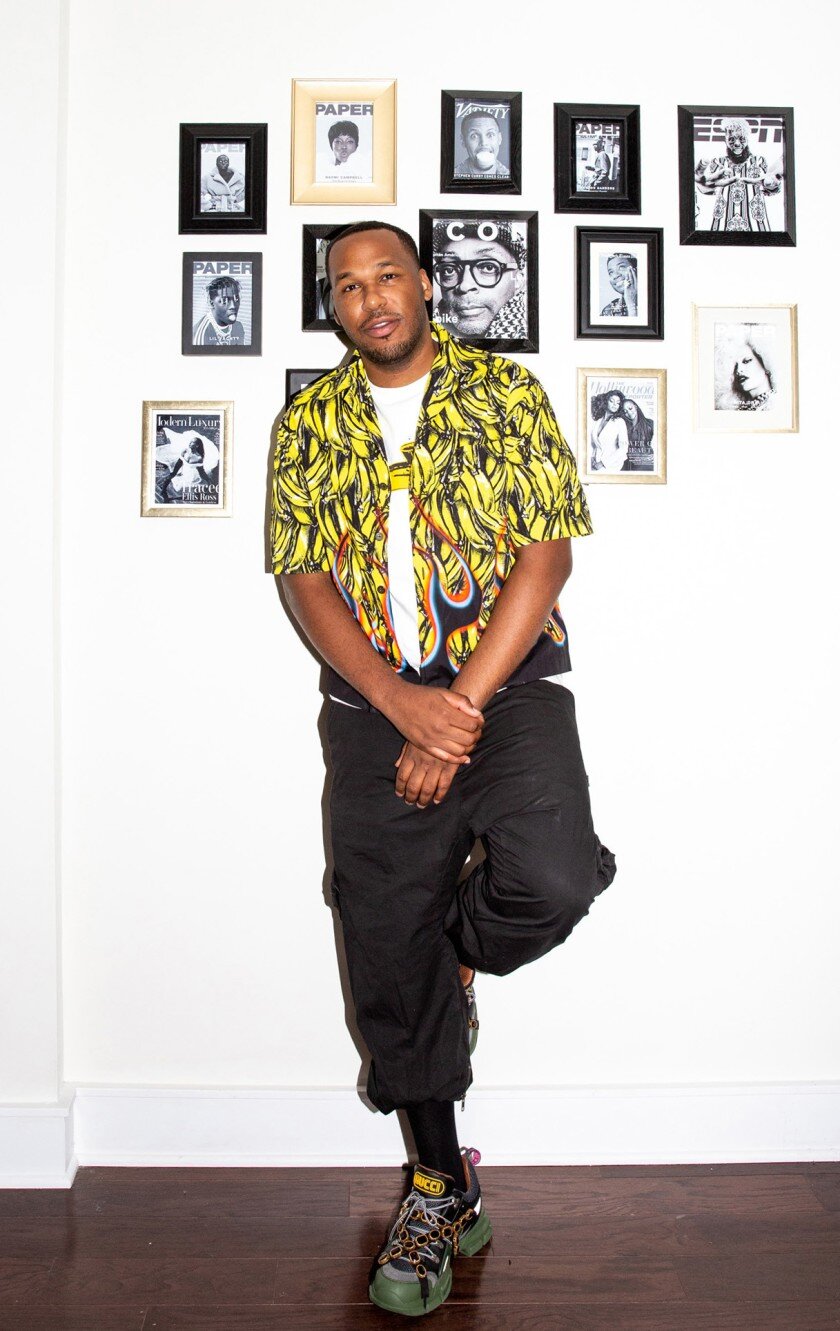
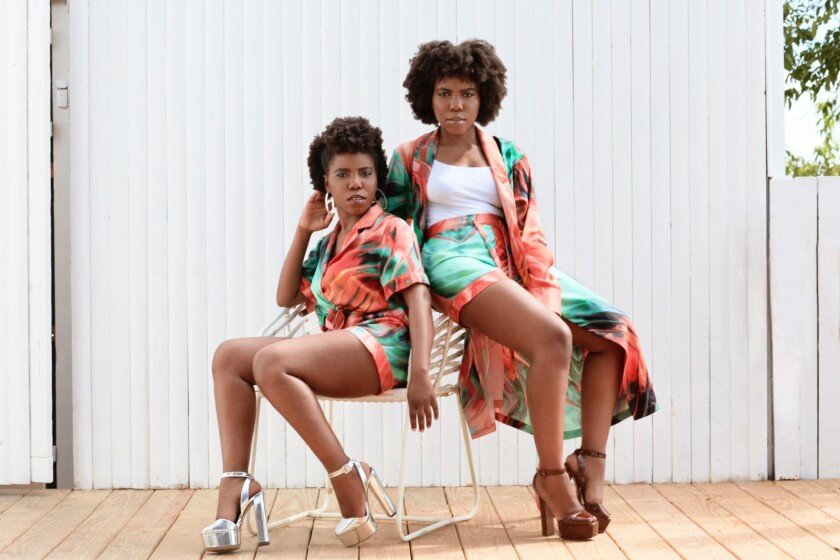
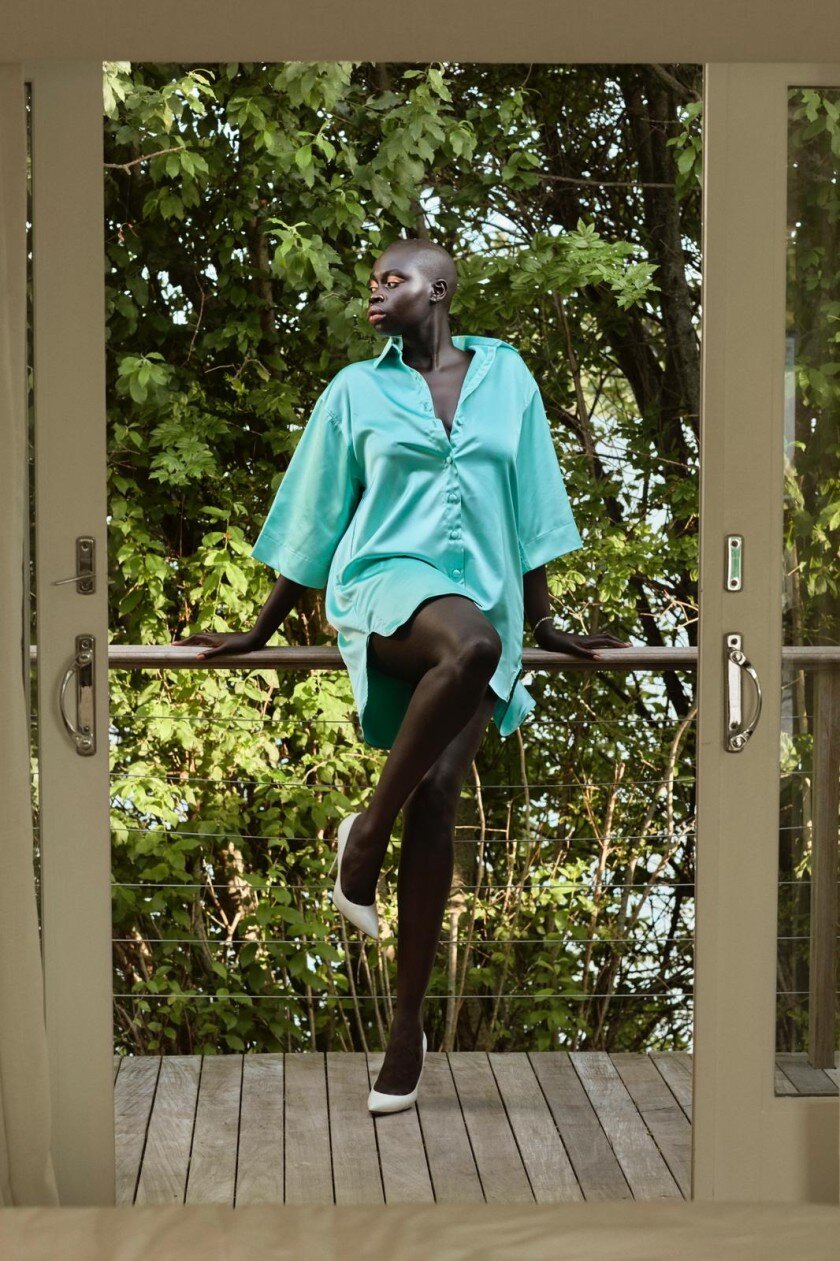
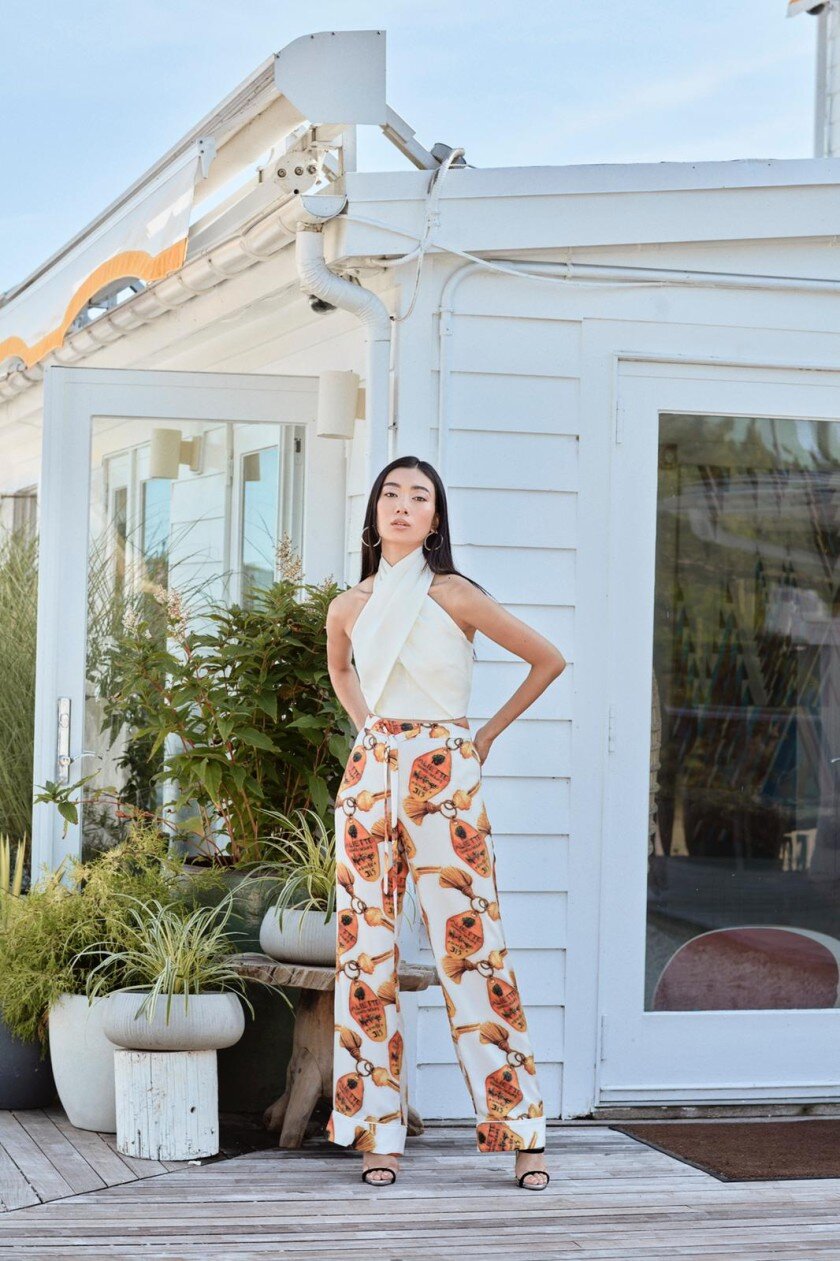

LA Times – These Black Entrepreneurs stepped up to make Sunscreen for Darker Skin
By MELISSA MAGSAYSAY
JULY 16, 2020
When Los Angeles resident Katonya Breaux was in her late 30s, she began noticing black moles on her face. It was an occurrence she assumed was genetic after witnessing the same spots on older women in her family. Breaux, the mother of singer Frank Ocean, consulted with her doctor on how to slow down the appearance of more spots.
She was met with a surprising response.
He said, ‘You know it’s not genetic, right? It’s sun damage,’” says Breaux, who, as a Black woman, had not worn sunscreen on a regular basis.
“I went to Walgreens, didn’t know anything about sunscreen and grabbed what was there. The products I tried led to skin irritation,” says Breaux, who discovered mineral formulas, which were less irritating yet created a chalky white cast on her skin. “Other brands were not tinted with me in mind and left me either gray or lavender.”
The frustration she faced ignited a search to formulate a mineral-based sunscreen focused on darker skin.
Breaux, who was working in custom-home building at the time, had no plans to create a beauty brand. However, she found a chemist to work on a formulation for her personal use and developed a sunscreen product that was mineral based and tinted to suit shades ranging from what she refers to as “olive to a nice, dark chocolate.”
What began as one product meant just for Breaux has since skyrocketed into Unsun, a business of sunscreen for the face, body and hands and made for all skin types. The brand is helping lead the conversation about diversity in beauty and educating the Black community and other communities of color about the importance of sun protection.
“What studies show is that people of color don’t get cancer as often but we die of it more often,” Breaux says. “It’s been ingrained in us that the sun does not impact us in that way. We also suffer more from hyperpigmentation and premature aging. The sun really does not discriminate. It affects us all in ways that are not good.”
For Shontay Lundy, creator and founder of Los Angeles-based Black Girl Sunscreen, the search for sun protection made for darker skin came up short.
Spending time outdoors in the sun in South Florida, her home before relocating to Los Angeles, and then hiking regularly in the canyons of Hollywood, Lundy was keen to apply sun protection but not the type that was being offered on a wide scale. Therefore, she created Black Girl Sunscreen in 2016, which is the first Black-owned indie beauty brand in the sun-care aisle at more than 200 Target stores nationwide.
“I was hiking so much, and friends would offer me sunscreen. But it wasn’t made for me,” says Lundy whose company is in Sherman Oaks. “I went online to try to find sunscreen for darker skin and came up short. I realized there’s this white space here, and clearly no one is talking to me. There has to be another me out there.”
Lundy launched with just one product. It was an SPF 30 lotion that dries sheer and leaves no white residue. As the product page on the Black Girl Sunscreen website states, “Sunscreen made by women of color for people of color, because we get sunburned too.”
Lundy prioritized a formula lightweight enough it could be worn under makeup. The brand now has a second product, Black Girl Sunscreen Kids, an SPF 50 lotion that, like the rest of the line, is free of fragrance, silicones, parabens and aluminums. The products are also reef-safe, vegan and cruelty-free.
Lundy’s brand has been on an upward trajectory since its launch. She secured a major retailer in Target and a financial partner. Recently the brand was featured on the well-followed Instagram account @black.owned.everything, started by Beyoncé's stylist, Zerina Akers.
“I wanted to be very clear and very intentional about who I was speaking to,” says Lundy about the name of her brand. “I envisioned that one day we would be in the sun-care aisle and want the consumer to pick up, or not pick up, the product. And there would be no question that it works on their skin. It eliminates a couple of barriers. As a woman of color, you can be assured immediately, ‘OK, yeah, this should work for me.’”
This clarity is imperative, considering the dearth of beauty products made with people of color in mind. Major beauty brands have historically had limited foundation shade ranges, and makeup color centered on fair complexions. Until brands such as Fenty Beauty, Mented, Black Up, Nars and Black Opal introduced or expanded their lines, the lens through which beauty products were created did not reflect the varied skin tones and needs of consumers.
“When I first started working over a decade ago, products and sunscreen for darker skin wasn’t even a conversation,” says Dr. Carlos Charles, a New York-based dermatologist whose practice, Derma Di Colore, specializes in treating people of color. “We would talk about it but you would really have to search for it. There’s since been an uptick in the creation of products for people of color and definitely within the sunscreen world with Black Girl Sunscreen and Unsun. Even just the fact that these companies are having the conversation with people of color directly is incredibly needed. By these companies seeing people of color, they are opening up the conversation and breaking that barrier.”
In addition to an inclusive product offering, education and continued conversation are pillars of Unsun and Black Girl Sunscreen. Lundy has partnered with melanoma organizations, and Breaux speaks on numerous panels and delivers keynote addresses about the effects of the sun on all skin tones.
About speaking to the beauty industry, Breaux says, “It’s definitely a combination of both — discussing the importance of sunscreen and companies recognizing people of color.”
Tennis champion Venus Williams recently joined the sun-protection industry with the release of a sunscreen called EleVen by Venus Williams. It also serves the need for products made with darker skin in mind.
“Because of my career, my entire life has been spent outside, and there were definitely times early on that I wasn’t prioritizing skin protection as much as I should have,” Williams says. “I wanted to provide consumers with a clean sun-care option that was versatile enough to fit everyone’s needs.”
Seeing a significant gap in the market for a product that was clean and did not leave a white residue, Williams partnered with clean beauty retailer Credo and the Sunscreen Co. to create a formula that could address both concerns. “Credo has an incredibly high standard when it comes to clean beauty, so I fully trusted them to help me create a product that was perfect for the full spectrum of skin tones,” Williams says. “It’s definitely a year-round staple; the sun doesn’t only shine in the summer.”
Adds Sara Dudley, chief executive of the Sunscreen Co., people with “darker skin tones have typically had to make a concession. Either they use a conventional sunscreen with chemical filters that have a host of issues. Or they use a mineral one that is low in zinc oxide and therefore not giving as much protection as it should. Past formulas have also used tints to try to cover the white cast they would otherwise leave behind.”
Breaux and Lundy say the quality of the product is as imperative as the need for representation of people of color.
“Cosmetics are supposed to make you feel good, and that’s not what sunscreen is for women of color,” Lundy says.
With sunscreen products made specifically with darker skin in mind, Charles says, “Being seen is a huge part of what we’re talking about. Understanding that ‘This is being made expressly for me. I’m glad this company thought about me and put in the effort to make this for me.’ People of color feel valued because they are.”
Read the article on LATimes.com →
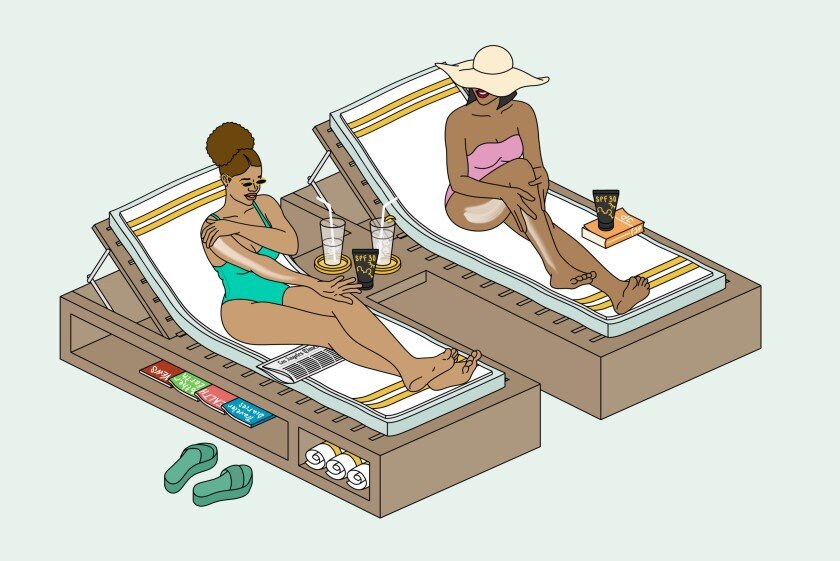
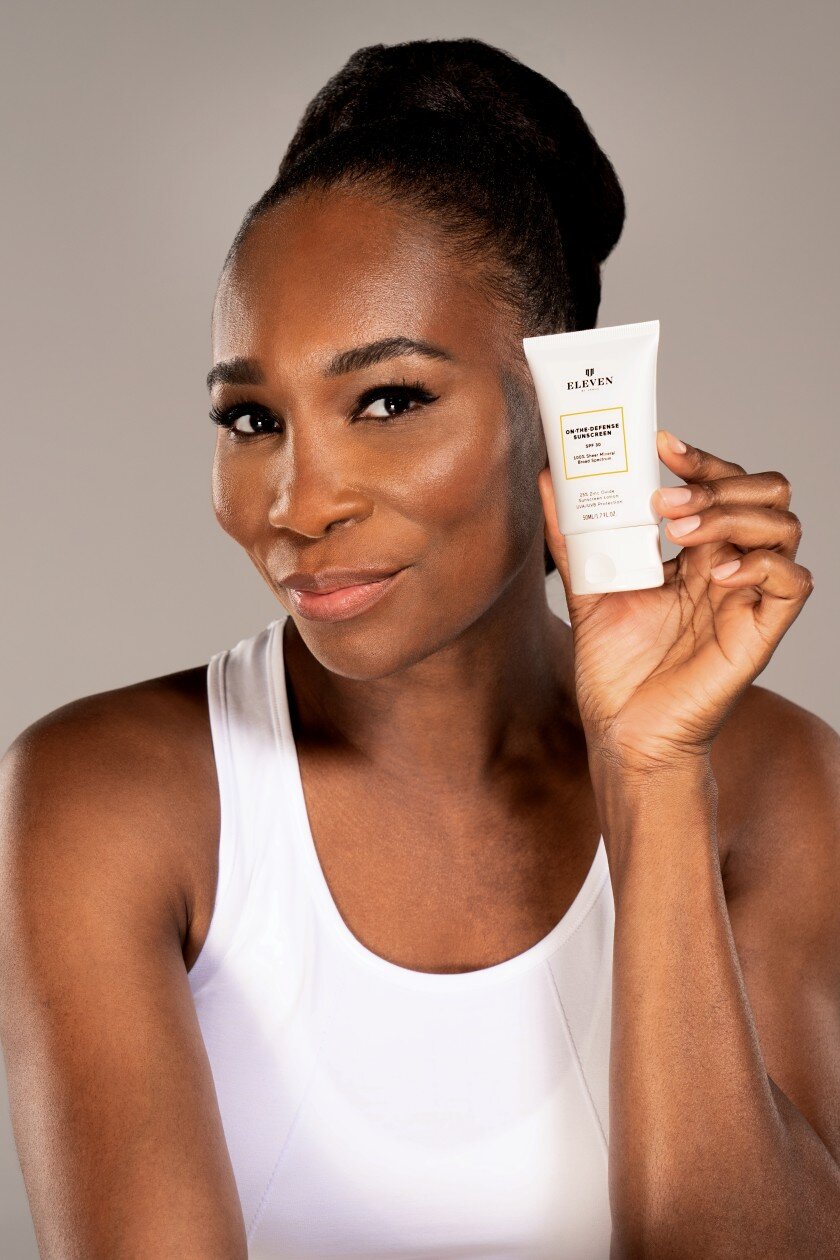
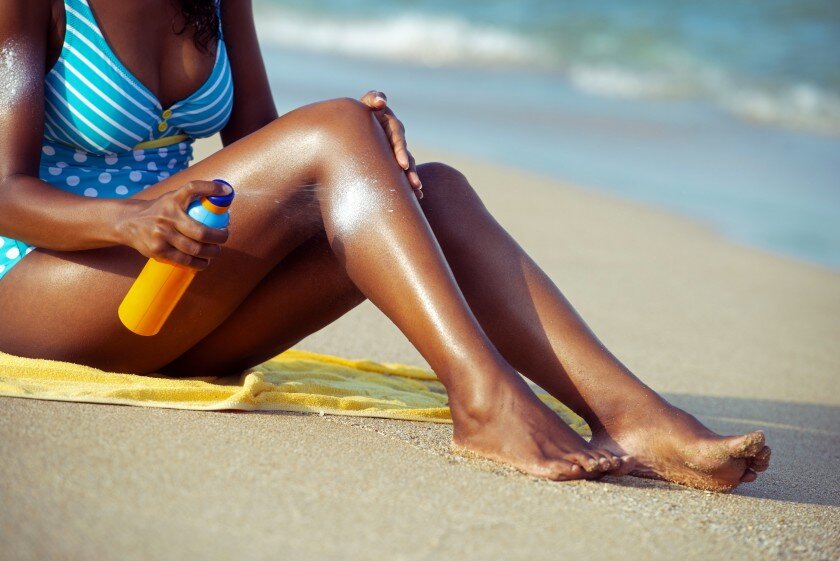
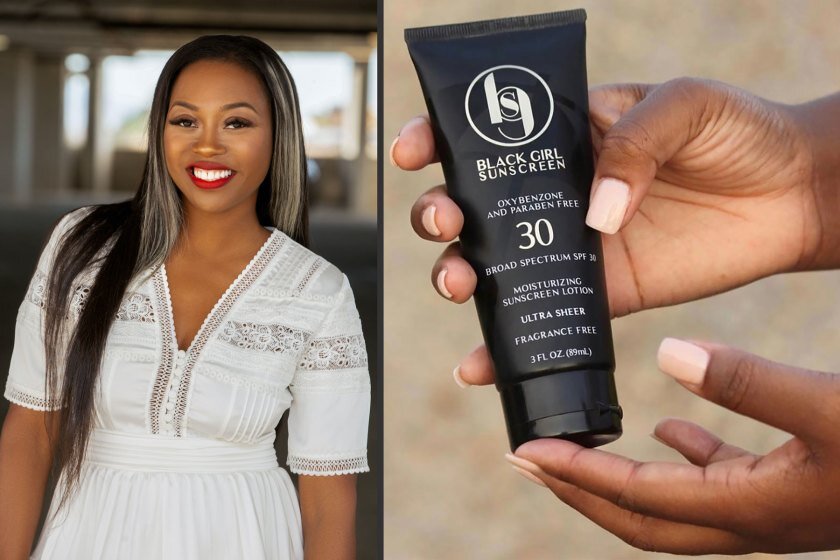
LA Times – 9 Black-owned brands reshaping the beauty industry
By MELISSA MAGSAYSAY
JULY 16, 2020
Although the sunscreen market may be relatively untapped when it comes to formulations made for people of color, Black-owned beauty brands creating products for Black people, people of color, and a range of complexions and hair types have been ubiquitous.
They’ve thrived for decades thanks to Madam C.J. Walker, Fashion Fair Cosmetics and newer brands such as Rihanna’s Fenty Beauty and upcoming Fenty Skin lines.
As the death of George Floyd has awakened a new civil rights movement, Black-owned beauty entrepreneurs say they’ve seen an increase in sales. Some products are in such high demand that they are back-ordered and available only for presale.
“Noticeable is an understatement,” says Katonya Breaux, founder of cosmetics label Unsun, about the uptick in orders she has received in recent weeks.
Shontay Lundy, creator of Black Girl Sunscreen, which is carried at more than 200 Target stores in the U.S., also has seen a significant surge in orders. She calls the moment bittersweet. “We’ve always celebrated Blackness and who we are,” she says. “Black and women of color have been doing amazing things for years, and now the attention is coming.”
Sustaining the momentum so that Black-owned beauty brands remain on the collective radar beyond this moment means becoming more aware of the robust offerings, which include skincare, makeup, and body and grooming products.
Nyakio
This clean beauty brand is based on founder Nyakio Kamoche Grieco’s family traditions and beauty lessons taught to her by her grandmother. (Example: exfoliating with crushed coffee beans.) Now available exclusively at Target, the line includes face oils, cleansers and creams created with global beauty practices in mind. Baobab, marula and sweet almond oil are some star ingredients. nyakio.com
Ceylon
The Ceylon skincare brand, founded by Patrick Boateng, was formulated specifically for men of color and focuses on issues that affect skin with higher melanin content, namely acne scarring, razor bumps, eczema and hyperpigmentation. ceylonskincare.com
Oui the People
Creating a new take on the standard razor, Oui the People, founded by Karen Young, makes premium quality razors for sensitive skin, along with body oils, shave gel and bikini-line sheet masks. ouithepeople.com
Junie Bees Butta
Based in Los Angeles, the Junie Bees Butta brand was started by Jennifer P. Archie, a mother trying to treat her baby’s eczema. She began learning about oils and butters and created a formula now used by babies and adults for moisturizing and healing. juniebeesbutta.com
Uoma
Founded by Sharon Chuter, a former LVMH and L’Oréal beauty executive, Uoma (pronounced “uh-mah”) is a line of inclusive makeup including eyeshadow palettes, lip products, contour sticks and more than 50 shades of foundation. uomabeauty.com
Briogeo
After spending nearly a decade working on Wall Street, Briogeo founder Nancy Twine started a clean haircare line using her grandmother’s beauty recipes. The Briogeo line is known for its effective scalp-cleansing products as well as items to improve overall hair health. briogeohair.com
Uhai
Co-created by Susan Edwards, a Chicago native who lived in Kenya and Liberia for eight years, Uhai products are made from powerful botanics and superfoods sourced from Africa. This haircare line includes a scalp serum, edge gel, and moisturizing sulfate-free shampoo and conditioner. uhaihair.com
Itadi
A natural skincare line founded by artist and entrepreneur Tabi Bonney, Itadi uses ingredients sourced from family-owned farms in Togo, West Africa. A star ingredient in the line, which consists of toner, moisturizer and face wash, is coffee berry, which contains high levels of antioxidants and can help boost the body’s natural production of collagen as well as aid in lessening inflammation. itadibody.com
Kanti
Kanti, a new brand targeted toward millennials, offers an initial product, Likuid Gold Luxury Glo Oil, made with pure baobab oil and 24-karat gold. The brand, founded by Alisha Ricki and Keamone F., focuses on diverse skin types. The product is said to moisturize, brighten and smooth skin and address hyperpigmentation and uneven texture. kanti.us
Read the article on LATimes.com →
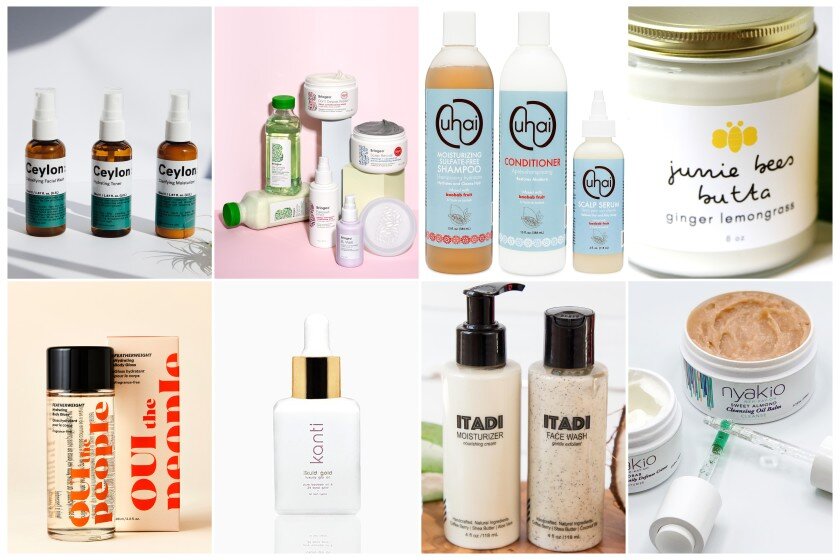
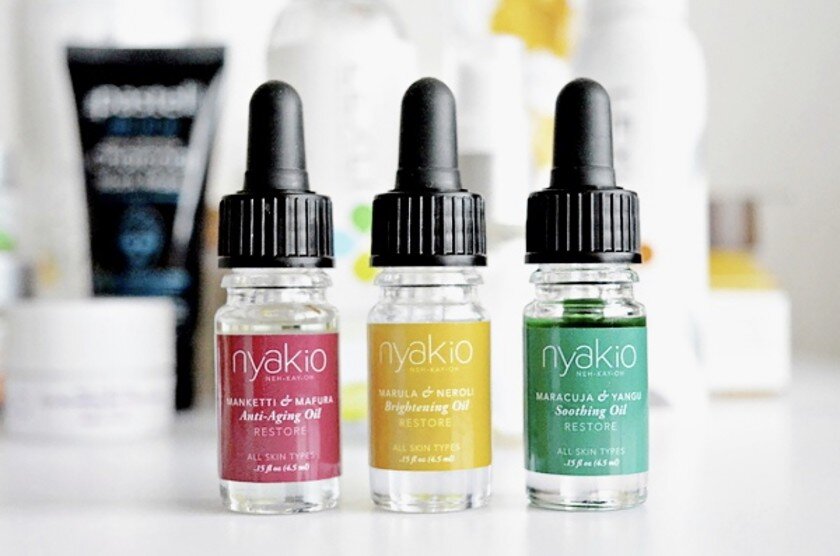
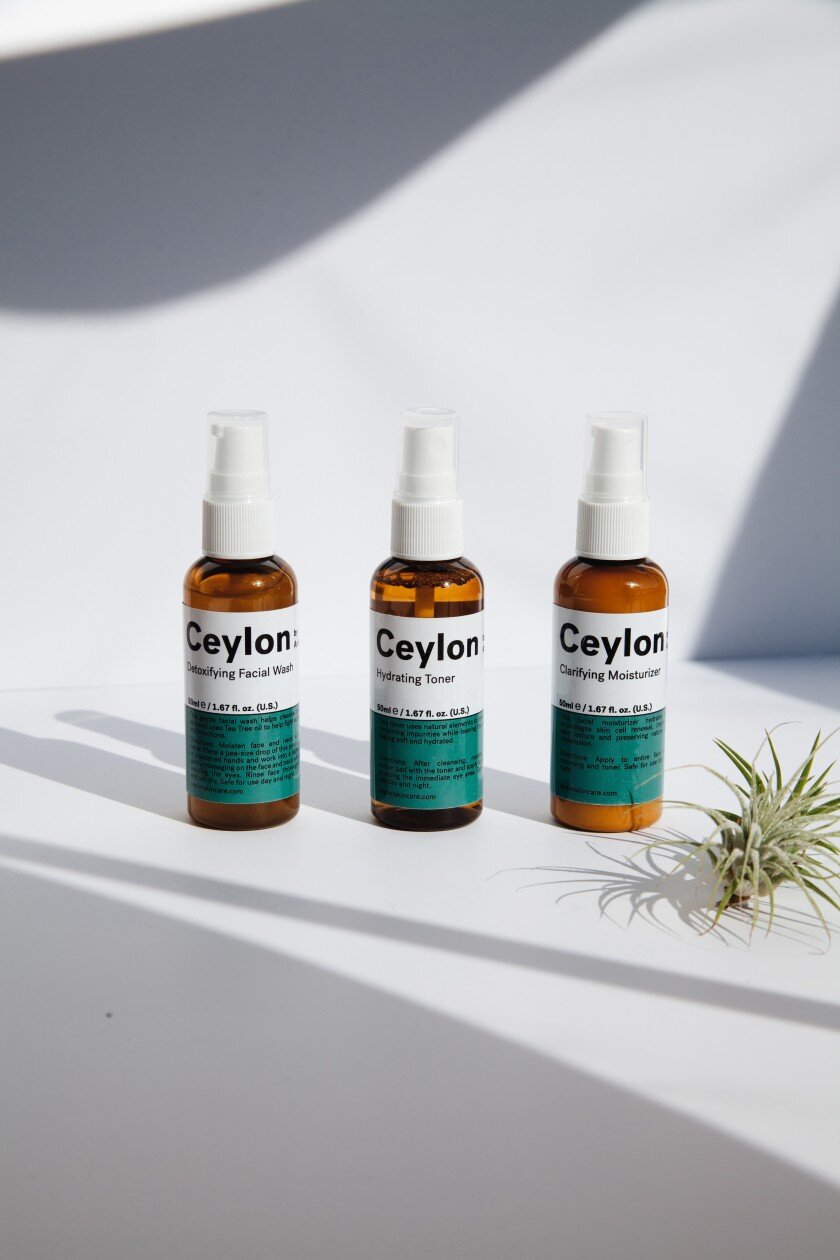
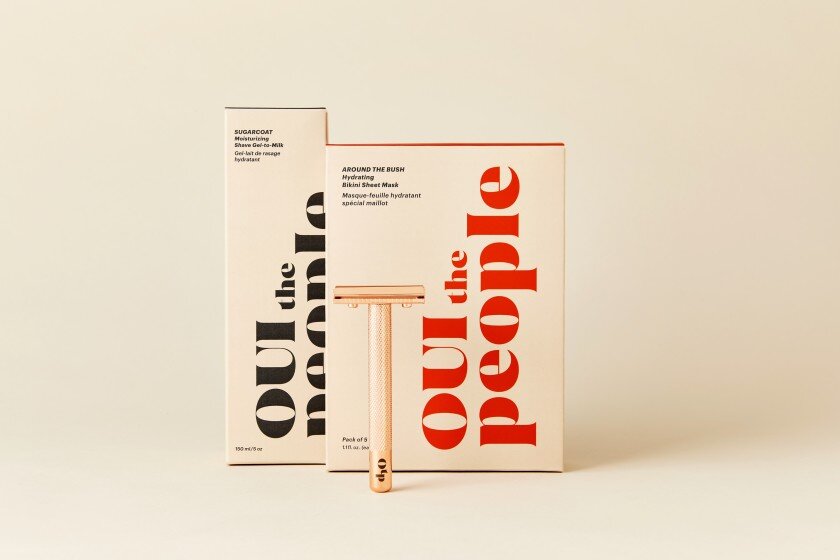
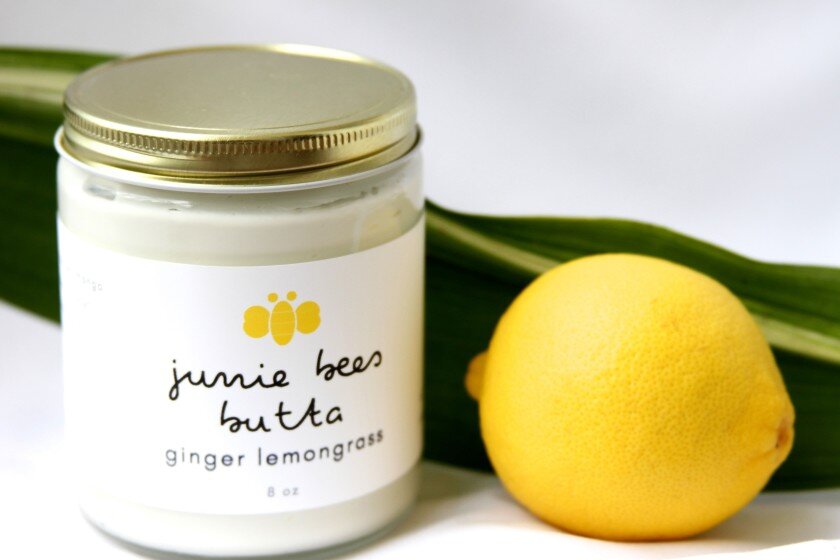
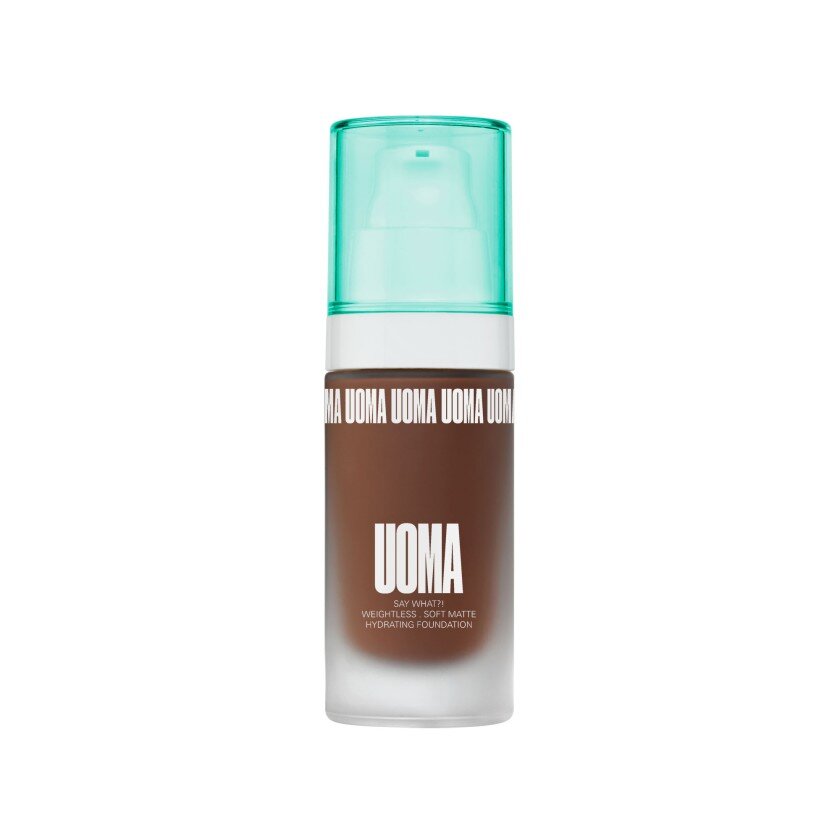
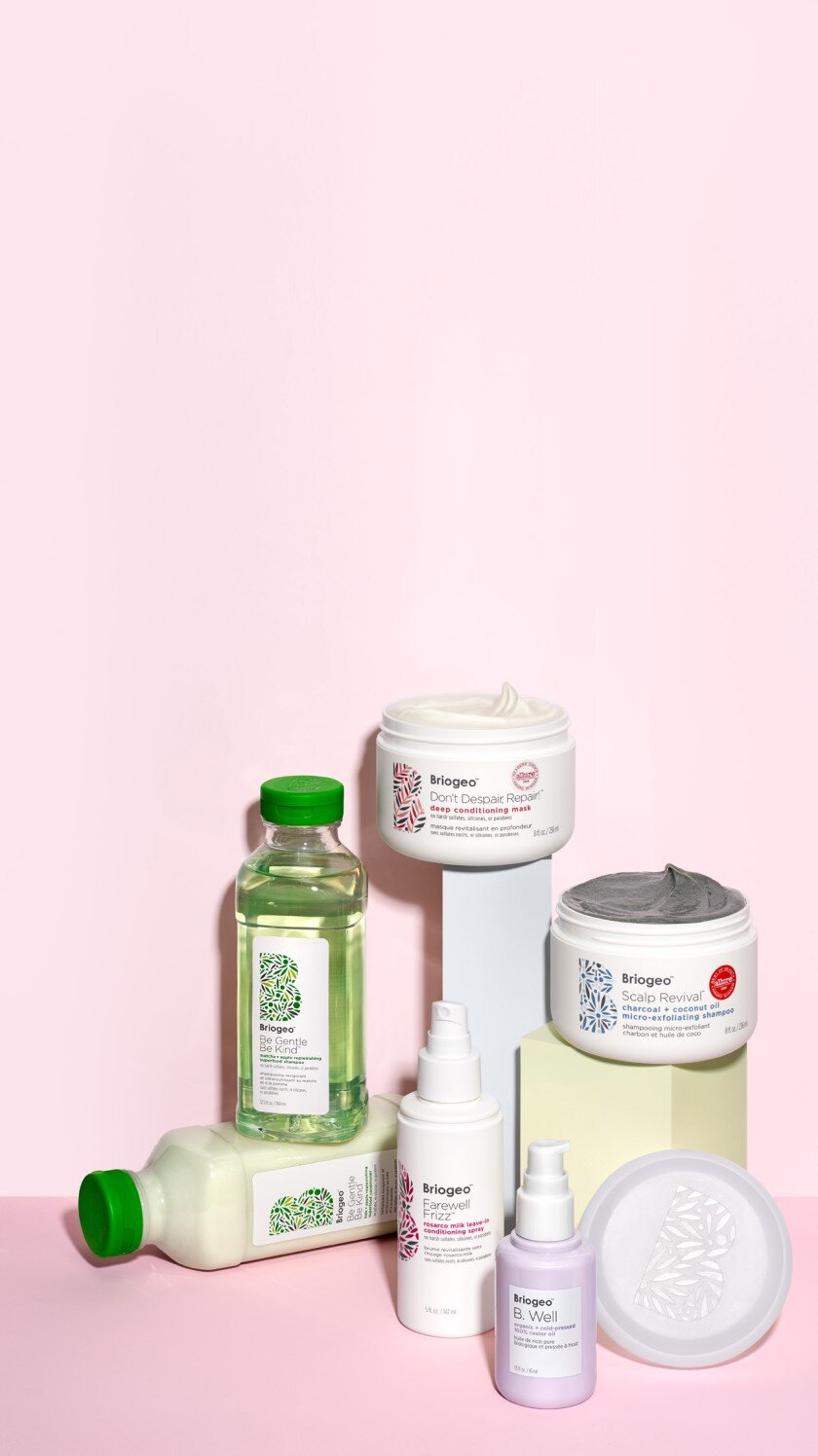
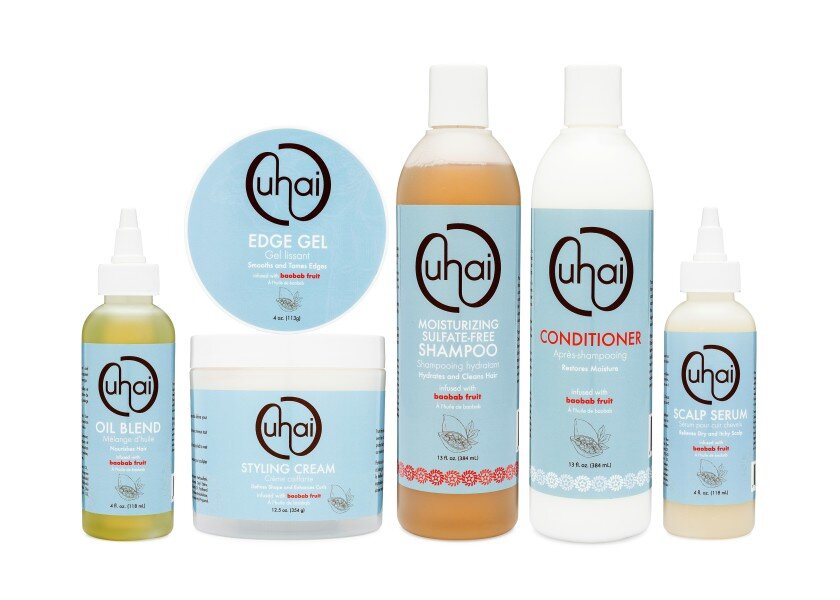
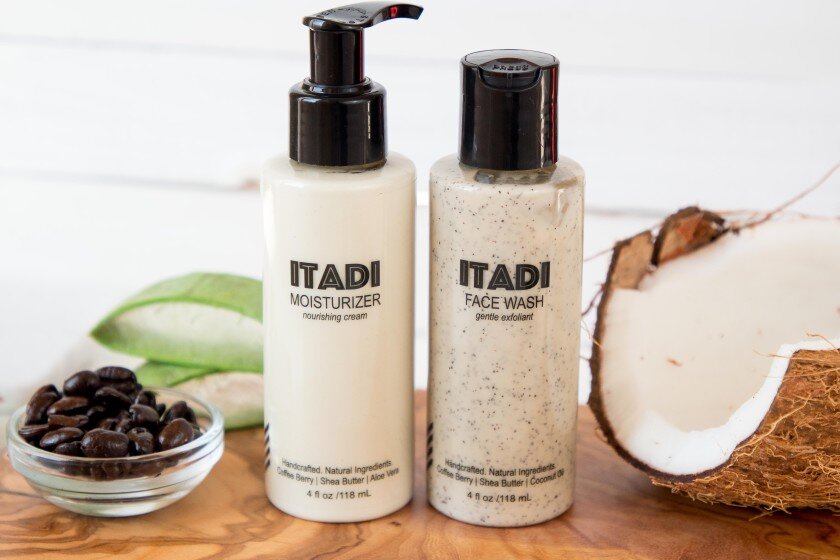
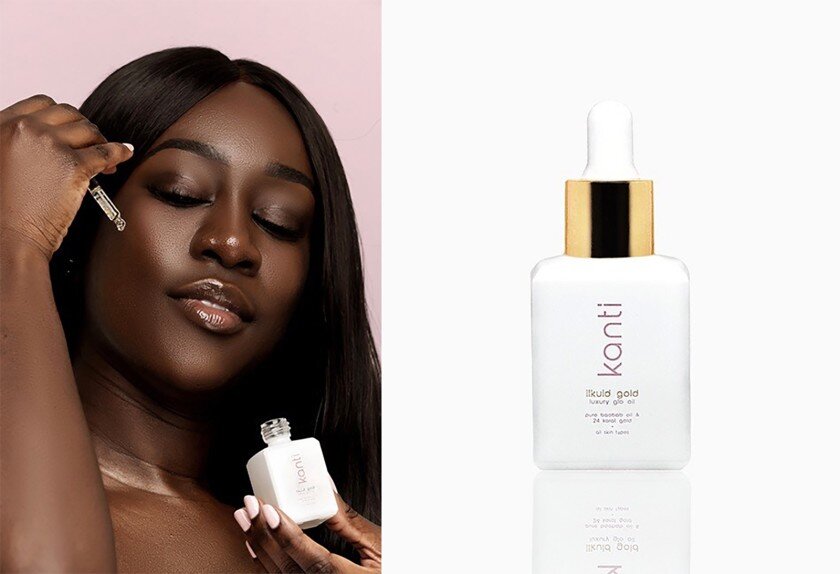
LA Times – Black men are ignored by the skin-care industry. These brands are stepping up
By MELISSA MAGSAYSAY
SEP. 4, 2020
For Dorion Renaud, founder of Buttah skin care, the mission and message of his brand goes beyond the bottle.
During his 20s, the L.A.-based entrepreneur and actor sought out products that would address the hyperpigmentation and scarring left from teenage acne. He turned up either empty handed or with items that failed to even out his melanin-rich skin tone.
“I had really messed-up skin growing up, and my acne, instead of healing, would turn into a dark spot,” Renaud said. “I couldn’t find a product that would address these issues and didn’t like the store experience of seeing an aisle labeled ‘urban’ or ‘ethnic’ or having to ask a store clerk to open up a case to get a product. I didn’t want to be categorized. We all have skin, so why do I have to feel categorized?”
Renaud had been on the hunt for skin-care products for years while working as a model and living in New York. It wasn’t until he purchased a block of pure shea butter from a street vendor in Harlem, which he would melt down in his microwave, that Renaud finally began to get the results he was seeking. Shea butter has traditionally been used to treat discoloration and stretch marks and to heal scars. The ingredient became the basis of Buttah.
In 2018 he launched his line of nine products, including CocoShea Cream, Vitamin C Serum and Charcoal Detox Mask, which are sold on the Buttah website and debut on QVC this month.
Renaud is among a growing list of founders creating skin-care and grooming brands made for men of color and primarily for Black men. Like Renaud, many of these founders have developed products out of personal necessity and to serve a sector of the market where skin issues such as hyperpigmentation and grooming challenges, including ingrown hairs, are prevalent but historically underserved across mass- and prestige-market products.
“Men of color have been largely ignored by the market, even with men’s skin care being valued at a $1-billion-plus industry by 2024,” said Patrick Boateng, founder of L.A.-based grooming brand Ceylon, citing a report released by Grand View Research, a market research and consulting company.
While living in China years ago, Boateng, a former U.S. diplomat, searched for a skin-care product that would address his skin breakouts and subsequent scarring. In the robust Asian beauty market, he couldn’t find anything that was made with varied skin tones in mind.
Ceylon was his self-generated solution designed to solve the issues that men of color disproportionately face such as acne scarring and razor bumps. The line has three products, which were developed with Dr. Lynn McKinley-Grant, president of the Skin of Color Society and a professor of dermatology at Howard University in Washington, D.C.
“This happened to me, and I know it’s happened to a lot of other guys like me,” said Boateng about the dearth of personal-care products for men of color. So he left his position at the State Department in 2017 to launch Ceylon. “Being in a very challenging personal situation led me to build something that would work for me and others with pigmented skin,” he said.
True inclusivity starts at the point of product development, Boateng said, but to date, product efficacy in dermatology has been validated through testing on white skin.
“Certain people are underrepresented in research,” said Dr. Jenna Lester, assistant director of the Skin of Color program at UC San Francisco’s department of dermatology. Lester started the Skin of Color program two years ago with a goal of improving the clinical care of patients of color and the education of the residents who train in the program as well as to address disparities in research.
She said ingrown hairs are one of the most common grooming challenges for Black men because it’s an issue specific to curly hair. “When a curly hair loses its way when growing back out of the skin and then goes back in, it creates inflammation and appears as a bump,” Lester said. “It’s been a big problem for many African American men because their hair is curly. In the armed services, some were dishonorably discharged because they couldn’t adhere to the grooming practices. Growing out the hair relieves the ingrown hairs. Otherwise, it can be painful, itchy and leave dark marks or keloids.”
In 2013, technology executive Tristan Walker launched Bevel, a shaving system and grooming line made for sensitive skin and men of color. Products such as Bevel’s Safety Razor are designed for coarse and curly hair, to reduce the pull and tug on the skin and to help prevent razor bumps. Pair that with Bevel’s lifting and exfoliating shave brush, a calming priming oil and hydrating face balm. The brand has been built with the shaving needs of Black men as the central focus, and has expanded into hair care by making trimmers, beard oil and a beard softener for at-home hair trims and maintenance.
“We pick up where your barber left off,” states the hair product page on the Bevel website. However, as robust and successful as the Bevel brand is seven years after inception (the Atlanta-based brand, which sits under Walker’s Walker & Co. umbrella, was acquired by Procter & Gamble in 2018), the founder said that starting a personal-care company to serve the Black community was initially met with hesitation by potential investors.
“When I wanted to start Walker & Co., investors consistently told me that the market was too small, my audience too niche,” Walker said. “No one really took a pause to ask why the market was so small. Perhaps the market is so small because the products the large players make for us are ones that we can’t use. Sometimes market opportunities need to be created, and we did just that. This is why I keep speaking out on the need to have more people of color in positions of power at VC firms, in executive roles and in board seats. When your company reflects the diversity of your consumer base, you’re more likely to identify opportunities to serve them better, which leads to better business outcomes.”
Bevel has been instrumental in setting a path for entrepreneurs who have launched artisanal products and solutions made with Black men in mind.
Read the article on LATimes.com →
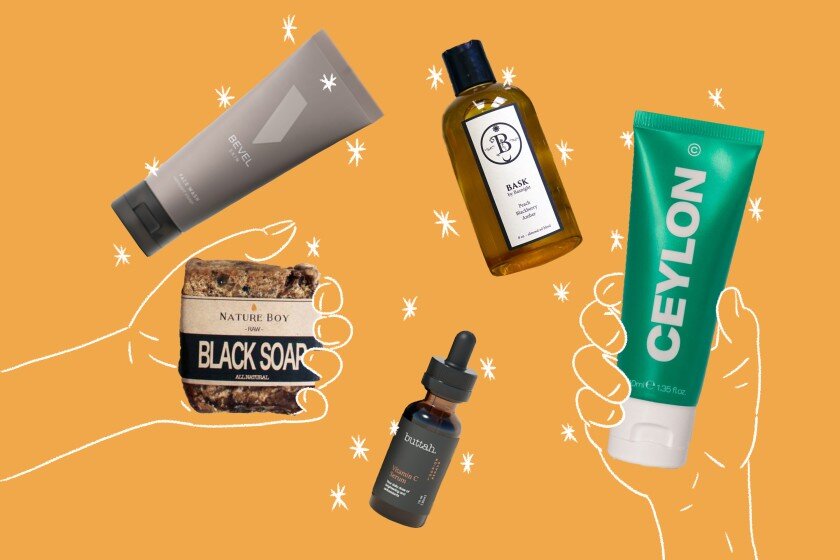

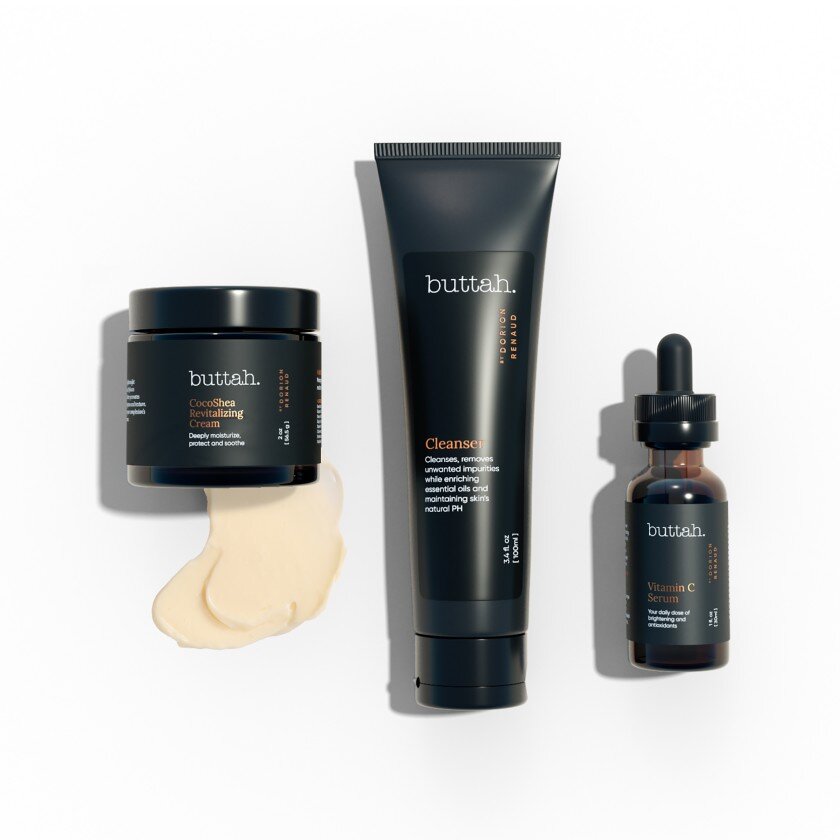





LA Times – Asian designers and stylists speak out against COVID-19 racism
By MELISSA MAGSAYSAY
MAY 8, 2020
Amid the surge of anti-Asian sentiment in America right now, a collective West Coast-East Coast voice stemming from the fashion community — including stylist Jeanne Yang, designers Prabal Gurung and Kimora Lee Simmons — has risen to speak out against the rhetoric and racism.
During the seven-week period from March 19 to April 30 there were 1,716 reported incidents of coronavirus-related attacks directed at Asian Americans, according to a recent study released by Stop AAPI Hate, a Los Angeles-based organization that was launched in March to record incidents of coronavirus-related discrimination against Asian Americans and Pacific Islanders.
To put that number into perspective, just look at three years ago: The number of reports of discrimination against Asian Americans registered in 2017 at the website standagainsthatred.com, started by Washington, D.C.,-based Asian Americans Advancing Justice, came in at 200 for the entire year.
The rapid rise of racist incidents has driven several notable designers and stylists of Asian descent to use their large social-media platforms, appear on national news segments and forge relevant product collaborations to ease the already tense times and political division pulsing through the country and around the world.
Gurung is no stranger to speaking out on social and political issues ranging from immigration to LGBTQ rights. His spring 2020 runway collection examined what it means to be American, and the designer tapped journalist and immigration activist Jose Antonio Vargas to consult on the presentation. A diverse cast of models wore traditional symbols of Americana, including cowboy boots and boiler suits, and took the finale walk in pageant sashes posing the question, “Who gets to be American?”
“America is not a country. It’s an idea that different people can coexist and it ignites invention, innovation and growth,” said the New York-based designer. “In that, the Asian community has been a huge contributor. America doesn’t get to celebrate without our contribution.”
Gurung, who was born in Singapore and raised in Kathmandu, Nepal, has been speaking out consistently since February on his social platforms to combat rhetoric around Asian culture and specifically the reference to the coronavirus being called “the Chinese virus.”
“Our leaders should not be using terms like ‘Chinese virus,’” said Gurung of President Trump’s repeated reference to the coronavirus in late March. “I’m not calling the president racist. I’m calling him unaware of the fact that he shouldn’t be using it. There is no point vilifying someone and calling them racist. It is important to call them out and say, ‘Those words have a negative effect. Please consider rewording.’
“Our ancestors came here to make a living. They kept quiet, kept heads down and made a living,” Gurung said. “How I look at it is, our ancestors did that so we can speak up. I have to act for the future and next generations. Our forefathers fought for that quietly so now we have the responsibility to speak up.”
Gurung’s message during this pandemic aims to generate the same type of discussion as his collection as well as to press Asian communities to unify in support of one another, defying stereotypes of passiveness that have been long associated with Asian culture.
For designer Phillip Lim, getting the word out has meant turning to Instagram to post messages about the coronavirus being a human threat, not a foreign one. He has appeared on CNN and partnered with a pharmaceutical company to create packaging for hand sanitizers of which 100% of proceeds went to families suffering amid the COVID-19 outbreak in Wuhan, China. His actions were sparked after seeing videos of racist attacks and hearing firsthand from colleagues about discrimination close to home.
“The march has gone virtual, basically,” said Lim of taking to social media and CNN as a megaphone against anti-Asian sentiment. “This is a new way of marching. We need to use our collective platforms to speak out against hate and have a collective united voice that is a show of solidarity and goodwill. With the rise of racism and a blame game, the only way to combat that is solidarity and to put back out love.”
Gurung and Lim were included in the 2020 A100 List, which was released in early May and put together by Gold House, an L.A. nonprofit organization formed to empower Asians. (May is Asian American Pacific Islander Heritage Month.) The annual list recognizes the 100 Asians, Asian Americans and Pacific Islanders who have the most significance on American culture.
The global fashion industry includes a robust Asian and Asian American community with 48 of the 477 members of the Council of Fashion Designers of America identifying as Asian (with 31 identifying as Latinx and 19 as black). Well-known names include Rei Kawakubo, Anna Sui, Vera Wang, Lim, Jason Wu and Gurung, who have become pillars of the industry for establishing pioneer brands and aesthetics ranging from avant garde and eclectic bohemian to bridal.
Fashion designers of various ethnic backgrounds have been increasingly vocal about social issues they feel passionately about. Many are putting their views into their runway presentations and closing shows with provocative statements strewn across models’ finale looks or their own T-shirts.
Alarmed by the accounts of racism, other designers and stylists have been speaking out against anti-Asian sentiment and reported incidents of hate crimes. They’re also offering peaceful solutions forward to stand in solidarity as a community. The hashtag #notyourmodelminority has been spreading across social media and into conversations around Asian identity on a mission to defy the limiting connotations that Asian Americans are a monolithic group.
“I definitely do not fit into the model minority,” Lim said. “The model of America, what America is, is a belief system, not a physical appearance. We’re all an equal, collective conscience who have the will to fight for what’s right — to me, that’s the model minority — fighting for each other.”
The designer dissects the role that Asian stereotypes have in tempering and perpetuating racism. “It’s so systemic in Asian culture that our parents tell us to keep our head down, don’t make problems or ignore racism and it will just go away,” he said. “It’s so ingrained in our subconscious. That was a survival strategy. Now fast forward to today, and it actually does the opposite. It takes away your right for a voice and it takes away the opportunity to be seen. People are asking me, ‘What’s the right thing to do?’ You have to normalize your voice outwardly. Speak up. Combine the ideas of your parents of being mindful and respectful and amplify that with an outdoor voice.”
“I want to defy the very definition of what Asian is,” Gurung said. “I want to have a different representation of the narrative. We need a wide range of representation. It’s what is needed for people to understand.”
The designer also acknowledged the history Asian communities have had with other groups of color and the recent reports of racism against Africans in China during the coronavirus outbreak.
“It’s time for us to reflect and understand the racism in minority groups,” he said. “When minority groups fight, who benefits? Colonists, oppressors and the establishment benefit when we fight against each other. There is no need to be angry or vilify anyone, but it is important to ask what we’ve done and do to other communities and what we can do better. If you don’t speak up and don’t come in support of each other from within our community, how can we expect someone from another community to speak up?”
In the fight against the coronavirus, Gurung donated 2,000 N95 respirator masks to New York hospitals and frontline medical workers in partnership with the COVID Foundation. He, Lim and other brands launched T-shirts, hats and other goods with net proceeds going to the All Americans Movement, a campaign formed to support marginalized communities affected by COVID-19.
“We each have a role to play in combating the virus but also racism,” said Kimora Lee Simmons, the Los Angeles- and New York-based designer and founder of the iconic 1990s brand Baby Phat, which relaunched last year. “There are two sicknesses with a whole racially derogatory undertone that you have to fight at the same time. We have to combat it and treat each other with a little bit of respect because we’re all part of the bigger picture. We all have to do our part, call [racism] out when you see it, hear it or read about it.”
Jared Eng, fashion stylist and founder and editor in chief of the entertainment site justjared.com, recently had an Instagram account that posted racist remarks against Asians taken down.
“When I see it, I report it,” said the L.A.-based stylist. “It’s an uphill battle, but it’s not going to get anywhere by not doing anything. Especially in the fashion community, Asians have reached the forefront. There is a huge focus on them. Hollywood has not caught up as much, but it is important for Asian designers to support Asian talent. You want to support the community and push it forward.”
Celebrity stylist Jeanne Yang has been vocal on her Facebook page, including posting a recent opinion piece in The Times by actor John Cho and asking her followers to understand the negative ramifications that ranting about live animal markets in China has on Asians. Her role as an Asian American working in fashion has come full circle with her identity and the impetus to speak out.
“The reason that I went into fashion was that I did not see people that looked like myself on magazine covers,” said the L.A.-based stylist, who works with Jason Momoa, Keanu Reeves and others. “When you don’t belong, you do what you can to try and belong. You dress to be accepted. Once you get to a point where you do belong or have a say, I do feel as though, ‘Yes, I, as an Asian woman, should make it a point of being more outspoken.’ If we don’t all speak out, then should we wait until there’s nobody left to speak for us?”
She added that her anxiety lies in people focusing on blame rather than solutions or understanding. “Distraction is not going to get us back on the road to recovery,” said Yang, who will take part in Glamhive Live, a virtual fashion event of talks and panels featuring stylists and designers, on Saturday. “We need to figure this out, deal with the situation we’re in and get to solving it and helping people get back to work.”
It’s the kind of practical thinking Gurung can get behind: to work toward a collective understanding and path forward.
“You can decide to not go to Chinatown or not listen to K-pop, but when you go to an art gallery or hospital, you’re not going to escape us,” he said. “So it’s better if you understand our culture the way we’ve embraced yours. We continue to innovate and contribute to global creativity and the economy. We are here to stay and not going anywhere. It’s as simple as that.”
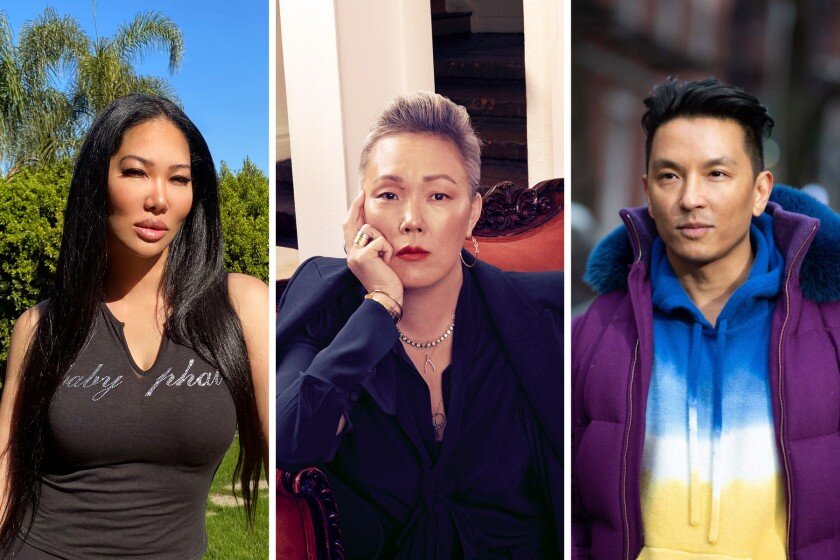
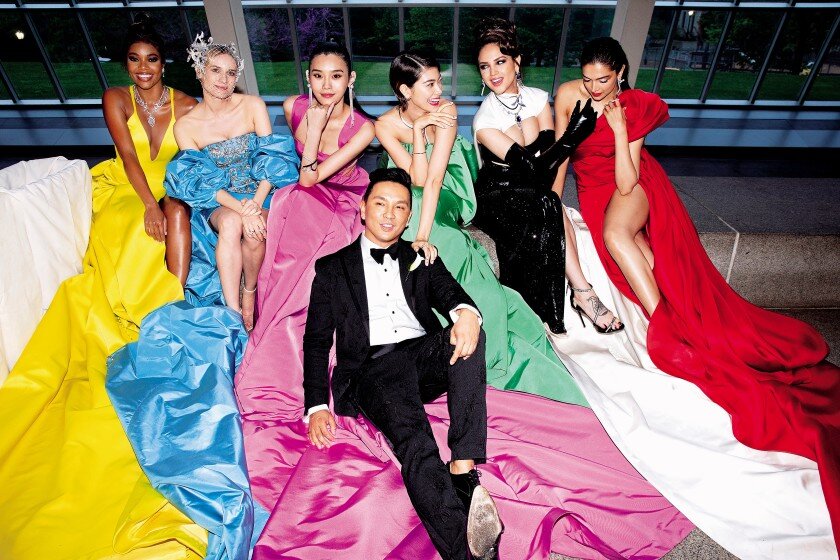

Business of Fashion – The Red Carpet's Other Race Problem
Blockbuster films with diverse casts, including Black Panther and Girls Trip, are creating new opportunities for stylists of colour as well. But behind the scenes, hidden barriers stand between black stylists and the A-list.
BY MELISSA MAGSAYSAY
FEBRUARY 8, 2019
LOS ANGELES, United States — For Hollywood stylists, making that first A-list connection is everything. A stylist whose client list is topped by an in-demand actor or actress will suddenly find brands and publicists clamouring to work with them. That attention leads to collaborations with yet more big stars, and a career is born.
Until recently, the ranks of stylists who made that leap were primarily white. That’s started to change with the success of films like "Get Out," "Girls Trip" and "Black Panther," whose diverse casts have hit the awards show circuit and chosen equally diverse stylists to help them get red-carpet ready. Talents like Jason Rembert, Law Roach, Ade Samuel, Mecca Cox, Jason Bolden, Solange Franklin and styling duo Wayman Bannerman and Micah McDonald increasingly dress artists of all ethnicities, genders and genres.
But making the leap to A-list stylist still has plenty of obstacles. Publicists and agents, who play matchmaker between stylists and celebrities, often assume black stylists are only right to style black clients. That bias — conscious or not — makes a stylist’s race, rather than their aesthetic or relationship with designers, a primary factor in determining their clientele. It’s also why reaching the top tier has proven so elusive; in the eight years The Hollywood Reporter has published its list of the top 25 stylists, black stylists have appeared on it only eight times.
“When I reach out (to artist agencies) I feel I’m pigeonholed because all they see is black artists,” said Casey Billingsley, a former creative director at Motown records who styles Keri Hilson, Faithe Herman and Cassie among others. “If you want access (to Hollywood) in any way, shape or form you have to conform in some way.”
Stylists and agents who work with them say it’s symptomatic of Hollywood’s larger race problem. People of colour are underrepresented in many fields, both in front of the camera and behind the scenes. Productions starring majority-black casts tend to have lower budgets and receive less publicity.
That disparity “trickles down to stylists” who work primarily with black talent, said Samantha Jeudy Tyler, agency director at Starworks Artists, which represents editorial and celebrity stylists. Stars are walking billboards for their stylists, so less exposure can mean fewer opportunities to work with fashion brands, publicists and other celebrities.
“Brands will still pass on someone like Taraji [P Henson] who has every accolade and every social media metric,” said Bolden, who styles Henson along with Yara Shahidi, Ava Duvernay and Ryan Coogler. “Yet you will see someone who has zero accolades, zero proof of metric and sell-through and they will still lend the collection to them. That’s confusing to me.”
Black stylists face a tough choice: advancing within the Hollywood establishment can mean doing a disservice to the clients who gave them their start. Some also feel that conforming to traditional Hollywood standards only perpetuates the inaccurate perception that having a roster of black clients and being an A-list stylist are mutually exclusive.
Law Roach, who has a reputation for dressing clients like Celine Dion, Zendaya and Anne Hathaway in statement-making couture, said when he was transitioning from the music industry to movies, he felt the need to diversify his roster in order to be respected.
“Early in my career I would walk away from agencies unsigned, knowing that I didn’t get signed because I was working primarily with women of colour,” he said. “It forces you to feel like you’re not good enough, so maybe what I did to strategise and diversify was maybe not the right thing to do. In hindsight I should have been prouder of the women I was working with, that that was good enough.”
Bolden said he was once told by a talent manager that he needed to add more white clients. He said he has purposely built his client list not by the colour of their skin, but by working with people he feels are moving the needle culturally and making inroads for diversity in entertainment.
“I want to work with people who want to work with me,” he said. “It just so happens they look like me. I’m grateful to work with people who are shifting our culture and women of all nationalities.”
Hollywood’s need for predictability is part of the issue, said stylist Mecca Cox.
“I think it is incumbent upon ‘the powers that be’ to check in with their own inherent bias, and make sure that they are not unwittingly perpetuating prejudice behind the scenes even as the foreground is finally becoming more colourful,” she said.
For example, many brands default to working with stars who look like the majority of their customers. That reduces commercial opportunities for black stars and stylists.
“Brands naturally cater to the majority of the existing customer base, choosing a face that physically represents that customer,” said Rosalind Dean, managing partner at public relations firm Aimé & Dean, which handles public relations for Starworks Artists about brand deals for stylists. “If that customer is a white woman, the chances of a black stylist or celebrity collaboration are drastically lowered. I'd love to see more brands break that cycle.”
Several stylists said placing on The Hollywood Reporter’s power ranking — effectively the Oscars of styling — is a key career step that until recently seemed all-but unattainable. Placing on the list is validation and recognition of a stylist’s work from the prior year and the visibility and opportunities that can come from being on it can take a stylist’s career to the next level. The halo effect of the list positions stylists to be more visible to publicists and even stars themselves, some of whom are now requesting stylists directly after seeing their work on THR’s list.
However, when the list launched in 2011, the only black stylist named was June Ambrose, known mostly for her work with musicians such as Missy Elliott and Jay-Z. It took until 2015 for a second to appear, with Rembert placing number 22 for his work with clients like Issa Rae, Rita Ora and Zayn Malik. Bolden and Roach made it in 2017, with Roach becoming the first black stylist to appear on the issue’s cover. And then there was a breakthrough last year, with Roach, Bolden, Rembert and Bannerman and McDonald (clients include Regina King and Tessa Thompson) securing spots.
“I remember four years ago I was the only one,” said Rembert, who will launch his own women’s collection called Aliétte during New York Fashion Week. “Now to see all of my friends on the list and even higher than me… it's amazing, because I pushed the needle forward and they're pushing it even further. If more and more come after us and continue to push it, we're going to see a change.”
As talent and films have become more diverse, said Carol McColgin, fashion and beauty director of The Hollywood Reporter, so will the stylists featured in this year’s issue.
“We're looking at the talent on the red carpet first and foremost, so that's what determines the stylists who are being recognised for their work during awards season,” she said, adding that the publication has featured Lupita Nyong'o, Chadwick Boseman, Viola Davis, Zendaya, Michael B Jordan, Yara Shahidi and Tessa Thompson in photo shoots for the stylist issue.
Several stylists interviewed for this story credited Lysa Cooper, whose career as a celebrity image maker includes creating looks for Rihanna, Beyoncé and Kanye West, with paving the way for their own success. Cooper told BoF she’s hopeful that recent signs of change will last.
“It’s been really interesting to watch this unfold, it’s necessary and inevitable,” she said. “It’s a big moment for all black stylists. It’s a chance to get out of our heads and into our hearts and operate from our gut rather than fear. And to remember that when you open the door, hold your foot down so everybody else can get in.”

LA Times – Wax. Tweeze. Microblade. Glue. How eyebrows became everything
By MELISSA MAGSAYSAY
FEB. 27, 2020
You would be forgiven for thinking that eyebrows are simply the hair sprouting an inch above the eye socket — often with a slight arch and slanted tail. However, the eyebrow is no longer just a thing to be maintained. It’s the latest big beauty focus, a blank canvas for creativity and also what’s fueling a global billion-dollar industry of products and semi-permanent procedures.
We are living in a brow-obsessed culture, the era of the photogenic Instagram brow, the fox-eye trend and DIY looks that have teens sharing their daily eyebrow adventures on social media. And it should come as no surprise that Los Angeles is at the center of all things eyebrow, pumping out new approaches for achieving the perfect look even as long-standing methods such as threading, which originated in India, Iran and parts of Asia and involves rolling thread over hair to remove it at the follicular level, have maintained their loyal fan base.
Today, people are turning to new methods in tweezing and waxing and using a number of semi-permanent procedures. Brows can be strategically shaped or manipulated to create any look — thick or thin — that a person of any ethnicity wants.
Currently, the most common eyebrow trend entails a full, polished and bold look — or what eyebrow expert Kristie Streicher has trademarked as the “feathered brow” using an approach that embraces a naturally fuller shape.
“People will literally do anything to have a fuller brow,” says Streicher, who with her sisters, celebrity makeup artist Jenn Streicher and celebrity hairstylist Ashley Streicher, co-own the Beverly Hills salon Striiike. She tends to the brows of Mandy Moore, Gwyneth Paltrow and Adele as well as a robust international clientele who make regular trips for her services. “Anything” includes perming, tattooing, transplanting and tinting — not to mention using topical growth serums and sometimes a run-of-the-mill, nontoxic glue stick used for kids’ crafts or school projects.
A glue stick is the perplexing product in 19-year-old Washington college student Tory Carasco’s makeup bag. It sits among her concealer; eye shadow palettes, housing a rainbow of vibrant colors; pots of shimmering bronzer; and various brushes for applying her myriad products. But it’s the clear-drying Elmer’s Glue Stick, which she swipes at her eyebrows most days to shellac her well groomed eyebrows upward, that makes her brow-focused beauty routine stand apart.
Carasco is also a budding beauty influencer with a robust Instagram feed of colorful and often cartoon-like makeup looks. She began using the glue stick recently in lieu of eyebrow gel and to get a clean and shiny look often achieved through pricey and longer lasting procedures like brow lamination.
“I had been wetting a bar of soap and dipping my spoolie in it to use like an eyebrow gel,” Carasco says of previous brow-grooming techniques. “I noticed it didn’t hold all day and I realized that drag queens use glue in their eyebrows. So why can’t I?”
As efficient and cost-effective as the glue stick may be, teens such as Carasco take a far from practical approach with their eyebrows. Last year, she shaved the ends off both of her eyebrows from the arch to the tail to get what she refers to as a “fox-eye look.”
Starting from the arch, she draws in a line that sticks straight out toward each temple rather than curving down. The trend is blazing through TikTok, where #foxeye has garnered more than 3.8 million views. With no makeup on, Carasco says that she essentially has just half an eyebrow on each side, but she relishes in the daily DIY ritual of it all. “I like being able to draw them on every day,” she says. “Eyebrows are an area for experimentation.”
Merrick Dozier, a 19-year-old L.A. college student, calls Carasco her “browspiration.” The Los Angeles teen has never met the beauty influencer but follows her on social media because of their similar passion for all things brows and beauty.
“I put on editorial-status eyebrows and makeup every day,” Dozier says. “I’m currently going through a feathered brow phase; messy in the front and not too dark. I’ve thought about microblading, but I really enjoy the creativity and artistry of doing my eyebrows. Doing my makeup is such a fun and therapeutic thing for me.”
Follow the fox-eye
Before she went for a full “editorial” eyebrow, Dozier also tried the fox-eye trend, which bears a striking resemblance to Audrey Hepburn’s thick and rectangular eyebrows.
“I have always been obsessed with Audrey Hepburn’s brows,” says Roman Sipe, a 30-year-old fashion stylist and head of design at Menagerié Intimates. “She has some photos where it looks like she completely removes the tail of her brow, and they sort of just shoot straight out.”
Sipe thought about trying the look himself but says that he remains traumatized from shaving lines through his eyebrows in high school. Like many men, he is partial to his natural shape, with a middle area and ends that are clean and groomed.
“I definitely feel like men are very aware of their eyebrows now more than ever,” says celebrity groomer Sydney Sollod, who counts Dan Levy, Zac Efron, Jesse Tyler Ferguson, Ansel Elgort and Darren Criss as clients.
“I focus mostly on the middle — the unibrow,” she says. “Most guys don’t want to look too clean. I shape their brows, but it’s generally more of a cleanup so they’re groomed and well maintained.”
Try tattooing
Azusa-based steamfitter and entrepreneur Latina Vamp, 47, understands this type of consistency. She originally had her eyebrows tattooed on over a decade ago, pre-microblading. She considers her eyebrows, which are dark, thin and defined, to be telling of her personal style.
Her look is also informed by a love of vintage cars (she belongs to an all-female car club, the Varrio Vamps) and the throwback vibe of Old Hollywood screen stars.
“I do mine a bit thin and have maintained almost the same style since high school,” she says. “My inspiration comes from the Mexican film stars of the late 1940s and early 1950s like Dolores del Río and María Felíx. I grew up watching them and admiring their glamour, unique style and originality, and so I’ve always tried to replicate that look. I love and embrace my look and wouldn’t change it for any trend.”
As specific to an individual’s style as eyebrows can be, the search for symmetry is what most experts and their clientele are seeking. However, this hasn’t always been the case.
“Twenty-five years ago, I used to scream, ‘Eyebrows are important,’ because they bring balance and proportion to the face,” says Anastasia Soare, owner of Anastasia Beverly Hills and a makeup line of primarily eyebrow products valued at $3 billion.
Influential celebrities, magazine editors and the beauty-driven masses eventually listened, and by the late 1990s, Soare would put eyebrows and Los Angeles as a beauty capital on the map. Her longtime clients Kim Kardashian West, Jennifer Lopez and Oprah Winfrey travel regularly to be treated by Soare in her home, and legions of fans and some of her 20-million-plus Instagram followers, flock to her Beverly Hills salon and to more than 100 Anastasia eyebrow kiosks worldwide to be tweezed and groomed to near symmetry.
“Brows started to gain traction several years ago with Anastasia,” says Larissa Jensen, vice president and beauty industry advisor at the NPD Group, a market research firm that tracks data and trends in fashion and prestige beauty. “Once we got that education that brows frame your face nicely, you don’t want to leave the house without your brows done.” Jensen adds that eyebrow products have shown an uptick in sales of $50 million in the last four years despite a decline in makeup sales overall.
“Beauty always comes back around to eyebrows in one way or another,” says makeup artist Bob Scott, who grooms the brows of Ashley Graham and Padma Lakshmi. “Plus there’s been a wave of minimalism in makeup: good skin, good brows, and you’re done. We can thank Cara Delevingne for putting bushy brows back in the spotlight and the Kardashians for pushing extreme self-care to the forefront. Those two together have propelled us to where we are now.”
Scott says the “feathered brow” look, like what Streicher gives to roughly 200 of her clients each week, is one of the most requested.
“From permanent makeup to actual brow hair transplants, a fuller brow is truly the best way to enhance facial features and create a look that is young, cool and current,” Streicher says. “This focus is what has inspired me to create the trademarked service I call microfeathering. I consider it to be the most natural-looking form of microblading.” (She estimates that 25% of her microfeathering clients come from outside the U.S. just to get their eyebrows done.)
Make it microblading
Microblading is the now-ubiquitous beauty procedure in which a tattooing technique is used to deposit pigment into the skin, usually in hair-like strokes, for a semi-permanent effect that makes eyebrows appear fuller and more defined than they actually are. The process can cost anywhere from $800 to $1,500 and generally requires an initial appointment that can last three to four hours and a touch-up session that is about an hour.
Tess Henderson, a 25-year-old interior designer from Woodland Hills, has become such a fan of microblading that she travels regularly to see Kahli Smith at her Echo Park studio, Fiction Cosmetic Tattooing.
“I have no other tattoos on my body — just on my face,” Henderson says with a laugh. “I have very light features and I am very active and love being outdoors. So when I heard there was an option to do whatever you want, surf or roll out of bed and still look nice, I was all for it.”
She discovered Fiction on Instagram and was immediately drawn to Smith’s style, one that Henderson says is consistent but very much tailored to each person’s bone structure. Fiction represents the evolution of our brow-obsessed culture; the focus here is on permanent makeup. Smith also does lip blush, eyeliner and beauty marks, which takes the idea of “I woke up like this” to the next level.
Before she tried microblading, Henderson found the less permanent and also less pricey combination of eyebrow tinting and lamination to be successful. “When you do both, it’s like getting your hair blown out,” she says. “You already have the tools. This is just putting them together in a different way.”
Brow lamination is a growing trend in place of, or in addition to, microblading. The perm-like process produces a result of polished and slick eyebrows that help people achieve what’s called “Instagram eyebrow,” a very defined, almost block-like eyebrow shape that has gained popularity on the social media platform because of its photogenic qualities.
As the trend has started to move away from overly perfected eyebrows, beauty experts say they still use lamination on clients to create a fluffy and natural effect.
Eyebrow expert Giselle Soto, who has her own studio in West Hollywood, has been seeing more clients for brow lamination and says that just about everyone would be a good candidate for the procedure. The process costs $265 the first time and $250 thereafter and takes about an hour to complete.
“Brow lamination is like a perm for brows without harsh chemicals,” Soto says. “I use the length of actual hair to create thickness. It’s less of a commitment. It lasts six to eight weeks, and the brows are full and fluffy and don’t look fake. If you have holes and gaps, then brow lamination will make them stand out more. But I use baby hair to create a shadow in those areas where we want hair to grow.”
No matter how effortless the look, tiny the hair or small the surface area, the vast number of eyebrow experts seem to agree on one thing: symmetry and a polished look suits just about everyone’s face.
“Beauty is not perfection,” Soare says. “It’s the balance and harmony of the features, and eyebrows are an important part of that.”
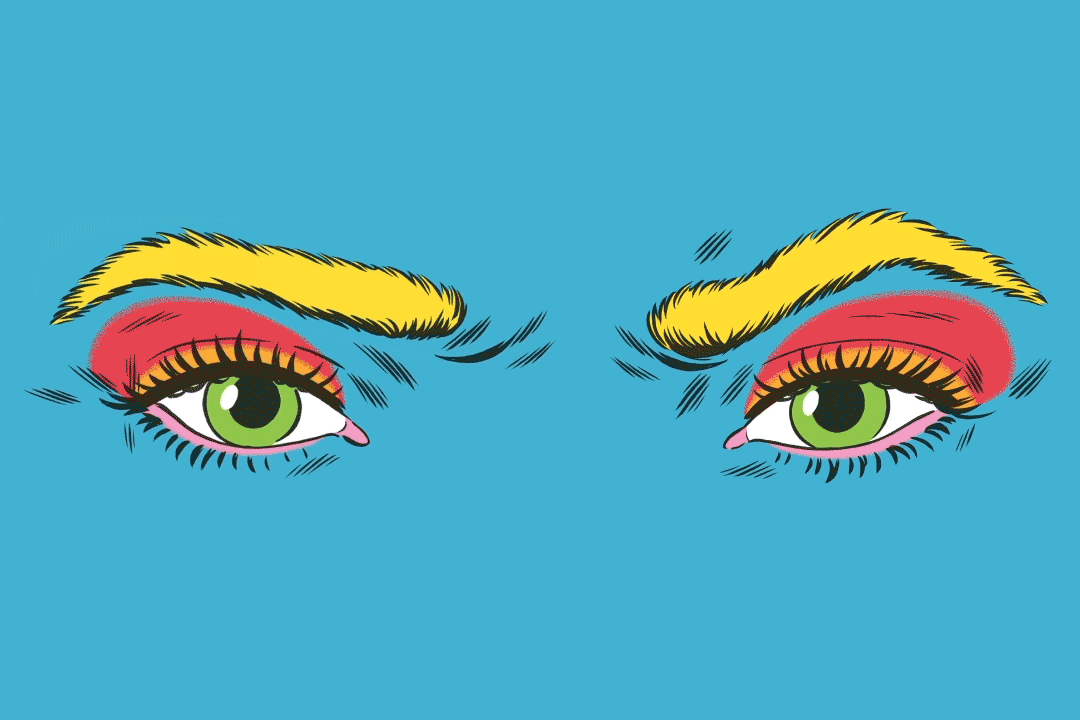
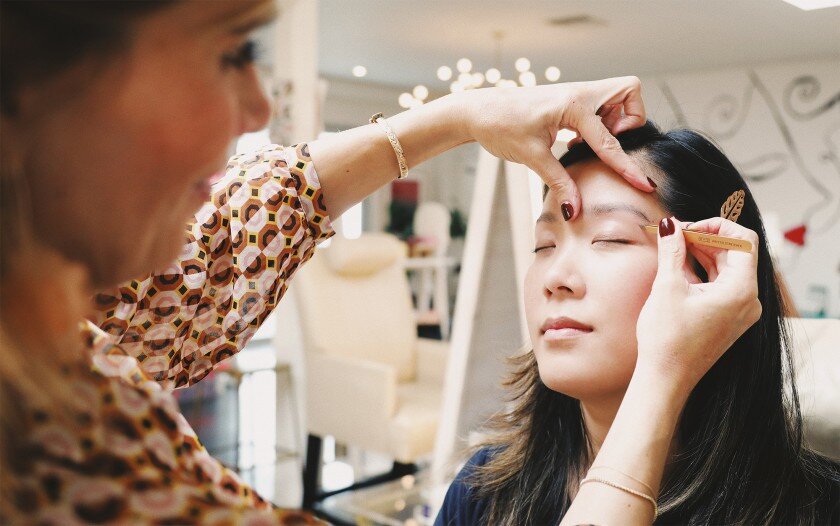
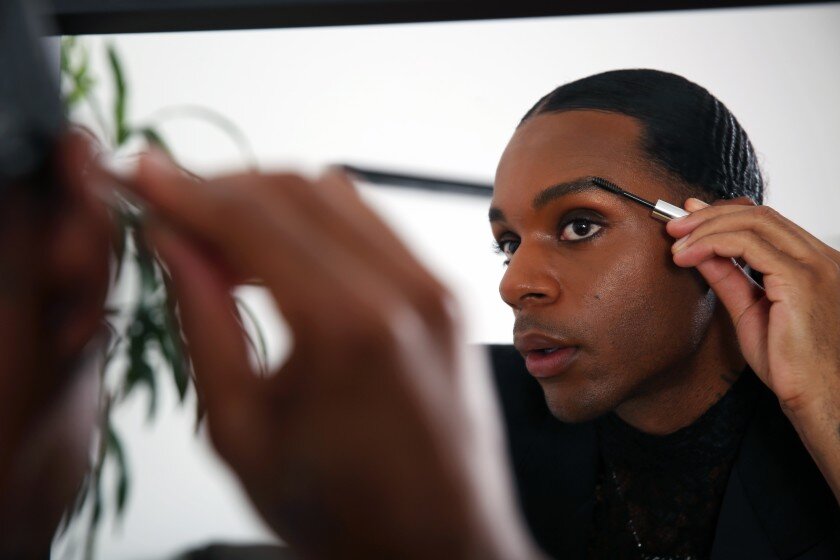
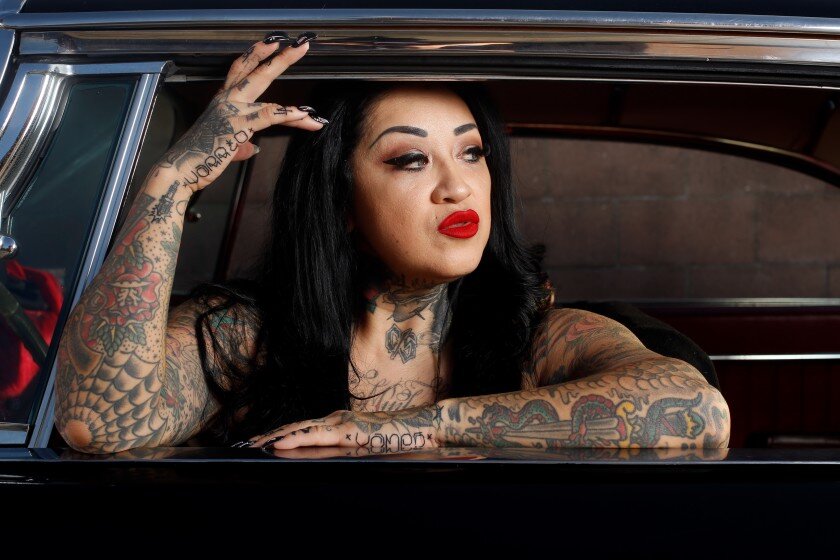
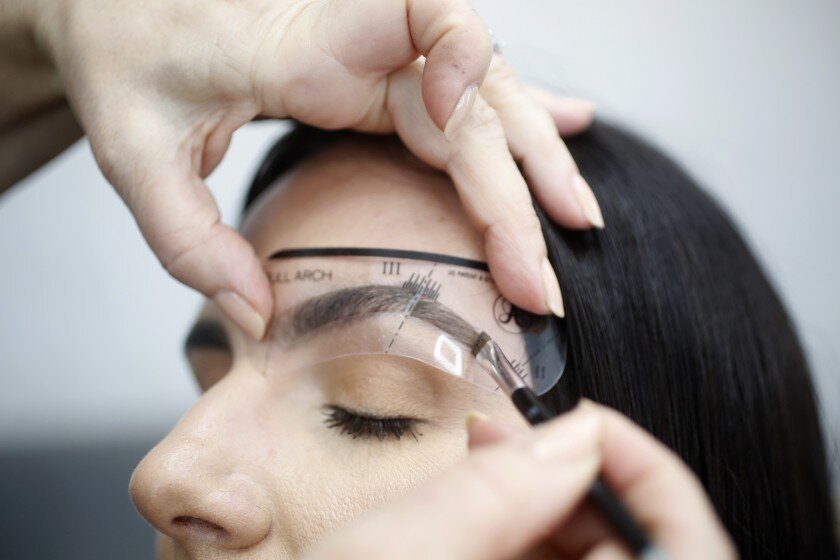
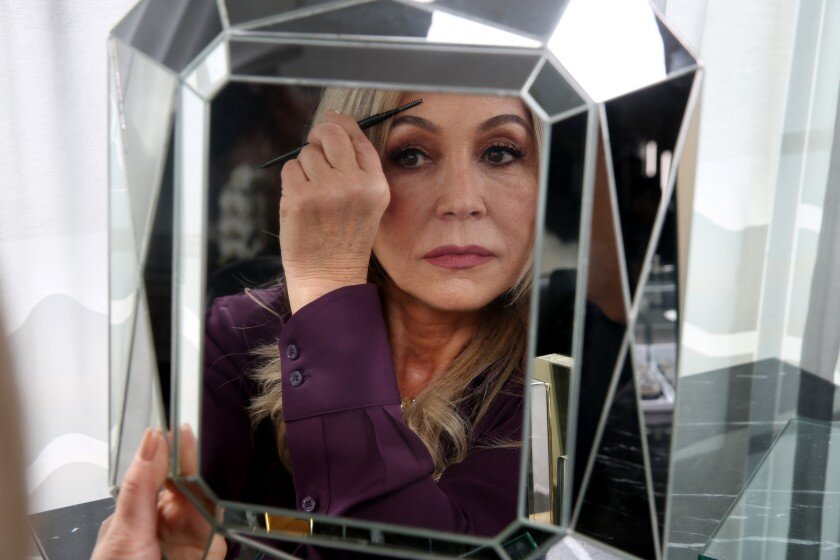
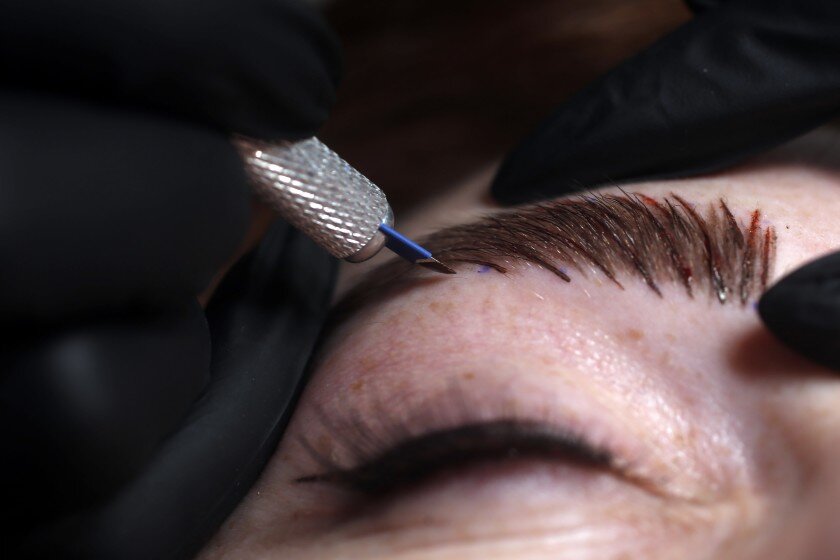
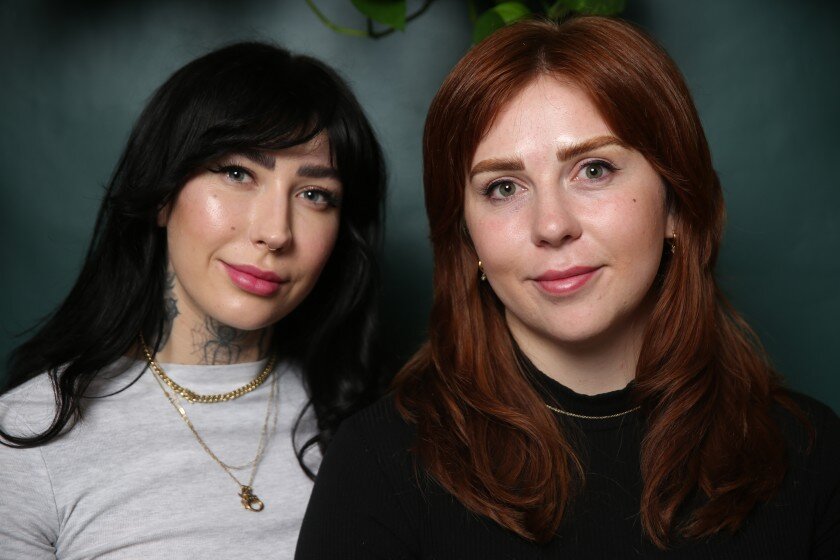
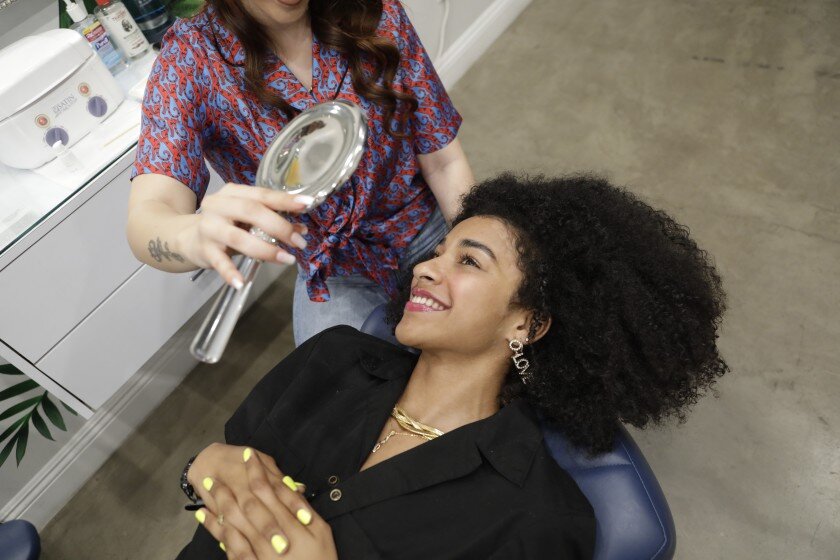
Business of Fashion – Why Brands Need a New Approach to Gifting
Public relations firms and fashion brands are rethinking their gifting strategies amid a backlash over excessive spending and wasteful packaging
BY MELISSA MAGSAYSAY
DECEMBER 18, 2019
LOS ANGELES, United States — Behemoth beauty advent calendars, branded pool floats, personalised stand up mixers and lipstick-shaped piñatas delivered by shirtless men. You know you’ve made it as a fashion editor or beauty influencer when the gifts start piling up.
Free stuff is an essential part of the fashion and beauty public relations playbook and has been for decades. Publicists send products by the truckload to anyone who might theoretically write about them. The distribution list goes far beyond the top rungs of Vogue’s masthead, encompassing online editors, fashion, beauty, lifestyle and wellness influencers (macro and micro), freelance writers and magazine staffers. The practice is particularly frenzied around the holidays, when an eye-catching gift can solidify a relationship with an editor (and if you’re lucky, secure inclusion in their publication’s annual gift guide).
But even the most tasteful pool float may not be well-received these days. Editors and influencers are becoming more vocal about the piles of freebies showing up unsolicited in their offices and at their homes. Environmental concerns are a big driver — whole forests have been cut down to supply crinkle paper and cardboard boxes to the public relations industry, and packaging is an easy target for influencers looking to show off their sustainability bona fides.
Some brands are taking a harder look at how gifts affect their bottom line (sending out 1,000 boxes of luxury beauty products per month can cost about $700,000). PR agencies are rethinking how, where and whether to send products.
“There was a brand last holiday who sent an item every week,” said Tyler McCall, editor in chief of Fashionista about the extended splash some brands try to make especially during the holidays. “But so far, I’ve noticed a lot less of it this season.”
In early November, several editors, including McCall, posted an open letter on Instagram addressed to fashion and beauty brands, urging them to take a more mindful approach to gifting.
“While we are grateful for the opportunity to experience new products and brands, we are making an effort to prioritise sustainability both professionally and in our personal closets,” the letter read. “We hope this makes for purposeful promotion of items and new launches moving forward.”
Gifting was always a method to curry favour with top magazine editors who were gatekeepers of fashion media. But in the social media era, a far larger universe of digital editors and influencers can spread the word about new products. Brands unsure about which influencers to court applied the brute force method instead, sending out hundreds of mailings to ensure they reached the right people.
Gifting reached a fever pitch a couple of years ago at the height of the “unboxing” craze. Brands designed elaborate packaging in the hopes that influencers would open their products live on Instagram.
“Instagram stories perpetuated this cycle for longer than it should have gone on,” said Emily Parr, founder of Poke PR, an agency specialising in clean, indie and founder-led beauty brands. “You can see how this cycle lends itself to getting out of hand.”
McCall said she also refrains from posting unboxing videos or any Instagram stories about product she’s received, unless there is a charitable component. Danielle Prescod, style director of BET.com, who also signed the open letter, takes a similar stand.
“I don’t want to be perpetuating the problem,” she said. “I send a thank you for the item, but don’t post.”
Some agencies steer brands toward events where they can engage with editors directly as an alternative to gifts, which can feel impersonal.
Sonia Langlotz, founder of Round Twelve, a digital marketing consultancy, said that a quality over quantity approach has been effective in streamlining mailings. Before a client’s fragrance launch, the firm asked 90 influencers if they wanted to receive a sample. About 40 said they would, and of those, more than half posted about their gift on Instagram Stories, or gave feedback to the company.
“We see a lot of drop off in the outreach portion of the chain, but a much higher response and success rate between what is actually gifted and responses moving forward,” Langlotz said.
Charitable and sustainable components can also resonate more strongly than a traditional mass gifting campaign.
This holiday season, Gap asked editors whether they would like to receive a recycled down coat, or donate it to charity. J.Crew partnered this season with One Warm Coat, and invited editors to bring a donation to stores, where they could also pick a coat for themselves.
“We saw high engagement rate with editors picking up a coat they wanted from one of our stores versus sending the coat which may or may not fit,” said Billy May, J.Crew’s chief customer officer. “It was a thoughtful and less wasteful way for media to receive product and provide a more meaningful way to give back.”
Beauty brands, which have faced criticism over wasteful packaging, are also finding new ways to create a more modern mailer. To minimise the environmental impact of gifting, several publicists told BoF they encourage clients to use simple corrugated cardboard sleeves to ship beauty products.
In early 2020, in lieu of gifting, hair care brand TIGI will send out a compostable cushioned bubble mailer with return postage, that press, influencers and stylists can fill with unwanted or unused beauty products. The returns will be donated to the Trans Wellness Center.
“I’ve seen some really thoughtful packaging from brands with a card stating that they didn’t include excessive packaging and acknowledging that they were mindful,” said influencer, brand strategist and creative consultant, Nicolette Mason, “That makes a statement and cuts through the noise.”
For PR executives, feedback on a gift can be as valuable as featuring in an Instagram post.
“I’d rather have them be honest,” said Lisette Sand-Freedman, co-founder of Shadow, an integrated marketing agency. “That’s what marketers should be asking for. If the feedback is ‘Do not send me anything without asking me,’ Great! That to me is the most important message — taking the feedback and using it for your client’s needs. No response is the worst response.”
Sand-Freedman and several other PR and marketing executives say they are consistent about social listening, sending personalised product to media and influencers after seeing a demand from them on social media. “It’s social listening in real-time,” she said.
Brands are also getting creative with how they approach gifts. When an influencer posted about her food being bland, Sand-Freedman sent over a bottle of her client’s truffle-infused hot sauce. When an editor posted about her broken shoe, a PR agency sent over a pair of shoes to get her through the rest of the day.
“People need to stop posting unboxing videos for us to be challenged and find new creative ways,” said Jen Dalton, partner at IHPR, a creative communications and marketing agency specializing in lifestyle, beauty, fashion and jewellery. “I’m really happy people are starting to hold PR accountable.”
Gifting isn’t going away anytime soon. The key is for brands to tell their stories in the right way, to the right people, said Sand-Freedman.
“Know your audience, if you don’t know, then you haven’t done your homework,” she said. “That doesn’t mean you don’t try for Beyoncé. Always try for Beyoncé.”

LA Times – Got zits? Three new teen acne products from L.A. might offer relief
By MELISSA MAGSAYSAY
FEB. 25, 2020
When Eden Grimaldi, the owner of a beauty communication agency, started looking for skin care for her then-13-year-old son, she was caught off guard by the lack of options at her local drugstore.
“I tried to go to the store, but everything there was the exact same stuff that was there when I was a teen,” says Grimaldi, who lives in Santa Monica.
Tapping into her own beauty expertise, she turned to a Korean skin-care website and says she found teen-focused skin care that was efficacious and geared toward her son’s age group. Still, she adds, the dearth of products available at a local store was shocking.
“Millennials seem to be such a big focus for beauty brands these days,” says Grimaldi, whose son is now 17. “And teens have kind of been left out.”
Most parents today are faced with a beauty conundrum when it comes to the health and wellness of their teenager’s skin. Whether it’s acne that can begin in the pre-teen years or helping a child establish a good skin-care regimen, finding daily-use skin-care products for teens that aren’t overly drying or laden with potentially harmful ingredients and are packaged in an appealing way has been a challenge. Until now.
That’s because Los Angeles, a global beauty capital in its own right, is turning up skin-care brands that are looking to address the unfilled gap in the market by targeting teens with imagery and branding that appeals to their sensibilities and skin-care priorities while appeasing parents through the use of clean and non-abrasive ingredients.
And based on available data, it’s very likely that more beauty and skin-care products aimed at the needs of teens will be introduced on the market soon. Why? Because Gen Z is expected to account for 40% of all U.S. consumers this year, according to a 2018 report by MNI Targeted Media Inc., a targeted media-strategy company based in Stamford, Conn.
For now, here are a few new and recent products for teenage skin worth checking out.
Rile
The brainchild of Kelly Atterton, a former West Coast editor of Allure magazine, L.A.-based Rile (rile.co) was developed with teenage skin and Gen-Z behavior in mind. In addition to a list of clean ingredients with its five initial products, Rile’s goal to reach teens is reflected by its approach: employing teen photographers to shoot imagery and forgoing retouching and the glossy campaigns so ubiquitous in the beauty space.
“This generation is so woke and so much savvier than all of us ever were as teenagers,” says Atterton, who describes the look of Rile as “if Supreme and Glossier had a baby.” “[Young people have] much more attitude and more smarts than what most brands out there give them credit for.”
Rile, which will be available beginning this spring, has focused product offerings (each less than $20) that Atterton believes are the first steps to starting a healthy skin-care regimen. The items also have a highly sensorial aspect, to infuse a little fun into typically mundane actions such as washing your face or gliding on deodorant.
The Crackle cleanser goes on like a gel but starts bubbling on the skin with a tingling effect. The scent of Rile’s charcoal-based deodorant is inspired by being outdoors in Los Angeles — specifically a sunny hike in Runyon or Fryman Canyon. And the No Shower, Shower foam can be thrown in a bag and applied post-sports to break up bacteria and refresh the body.
“My approach is to flip the narrative about skin care typically geared toward teens so it’s not about stripping and punishing the skin,” says Atterton. “It’s about nourishing.”
Skinbuzz
Aesthetician Nicole Sullivan has long specialized in acne at her Sherman Oaks-based skin-care studio. She’s well versed in the specific needs of sensitive teenage skin. When it came to products for both her clients and her teenage daughter, she saw the need for effective-yet-updated products as opposed to those that have flooded drugstore shelves for decades.
“The key is giving people an option,” says Sullivan about the lack of clean beauty for teenagers. “They haven’t had the option to even make a choice. It’s always just been Clearasil pads.”
Her line, Skinbuzz, launched in 2018 with prices ranging from $14 to $45, and is available Urban Outfitters and through the line’s website, skinbuzz.com. As the name might suggest, the brand uses ingredients derived from bees including propolis, beeswax and royal jelly, which are known for having antibacterial and anti-inflammatory benefits.
“It’s not enough just to be organic,” she says. “Ingredients like coconut oil and algae found in natural products can clog pores and cause breakouts.”
The Skinbuzz lineup includes a toner, cleanser, moisturizer, mask and a whipped sunscreen, the latter of which, Sullivan says, is the brand’s bestseller. A new blemish stick ($14), made with ingredients including willow bark and malic acid, was recently introduced.
“I wanted the products to look simple, friendly and inviting and [I] didn’t want to talk down to this age group,” Sullivan says. “Nothing is too girly or pink. I want this to be appealing to boys as well. I also don’t want them to be embarrassed to use it when they’re older.”
Skinbuzz donates a portion of its profits to charity, including the Planet Bee Foundation, aimed at saving bees partly because, Sullivan says, it’s important to teenagers for a brand to stand for something. “They are more socially conscious and have so much more information just from being on their phones,” she says. “Not everyone wants to be the same anymore. Beauty for teens is about enhancing what you have and being more unique.”
Arrive
Zoe Brenneke’s L.A.-based line Arrive (arrivehere.com) was not necessarily intended for teenagers, but she’s found that the products have resonated strongest with a demographic as young as 14.
Brenneke, who was once a teen with sensitive, rosacea-prone skin herself, later became an online beauty editor. She now has a focused line of makeup that is biocompatible, meaning it won’t clog the pores.
“So much of what inspired the line was my struggle with makeup in my teens,” she says. “Clean makeup almost always felt like a sacrifice from a performance standpoint, and as much as I didn’t want products to break me out, wearing makeup that didn’t do what it was supposed to do or didn’t look great on was almost as bad as putting on something that I knew would end up irritating my skin.”
A self-professed product lover, Brenneke abides by an ethos of “efficacious, biocompatible, affordable, well-branded beauty products” for Arrive, which she introduced last year. The line, which consists of a few basics all priced under $30, offers a lightweight foundation called Skin Boost, a bronzer and a bronzer brush.
When advising on the dos and don’ts of ingredients to avoid for sensitive teenage skin, Brenneke says making a blanket list of ingredients is challenging because everyone’s “skin thumbprint” is unique.
“Being mindful of the fact that terms like ‘natural’ in the beauty space are unregulated and can be used without any qualifications is really important,” she says. “Denatured alcohol is one of the most common skin irritants, and it’s also incredibly drying, which can not only aggravate existing acne but also cause the skin to overproduce oil and lead to more breakouts. Fragrance is another common irritant. So make sure to look for products labeled ‘fragrance-free’ rather than just ‘unscented,’ as that can indicate there are added chemicals in the product used to mask the scent of raw ingredients.”
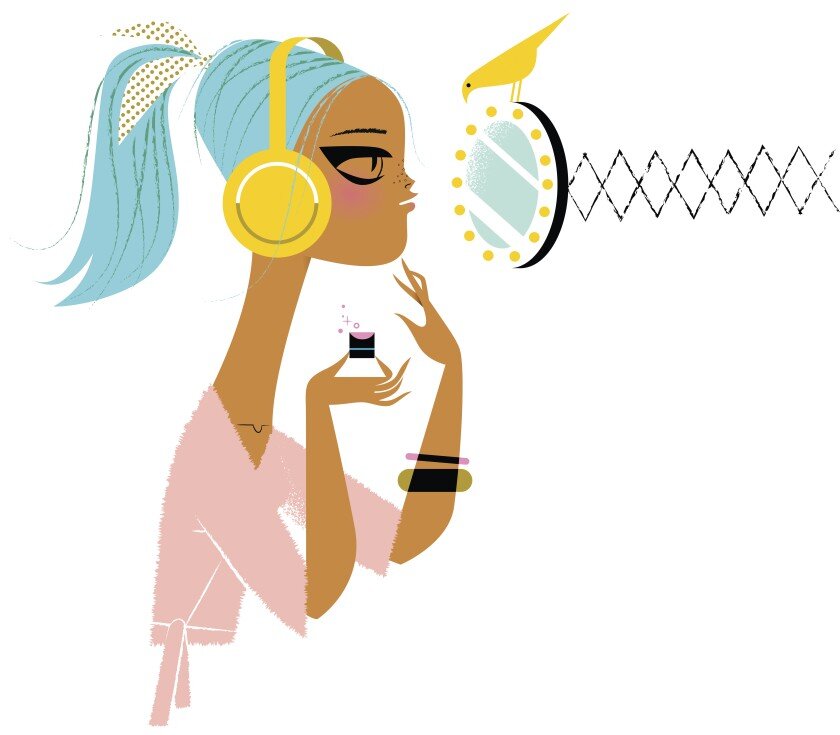


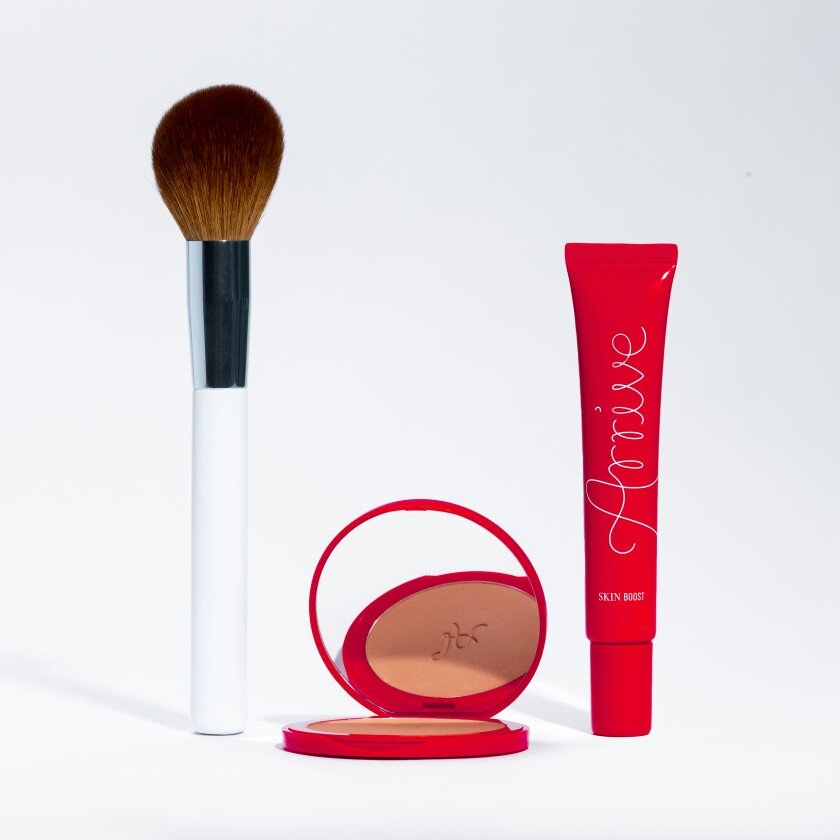
LA Times – Want to soothe your stress-worn skin? Try these at-home tips from experts
By MELISSA MAGSAYSAY
APRIL 13, 2020
Minimizing breakouts or combating wrinkles hardly seems important now given the global health pandemic. However, putting on a clay-based beauty mask at home or making sure your skin is properly hydrated might just be the welcomed distraction you need from the challenging pandemic news of the day.
Keep in mind, though, you likely don’t have spa-level equipment at home or general expertise to do Botox injections or extractions. What you can do now is create a strong skin-care regimen with do-it-yourself solutions as well as advice from estheticians and dermatologists, who are offering skin-care videos on social media and FaceTime consultations with patients.
New York- and Dallas-based esthetician Joanna Czech and esthetician Shani Darden of Los Angeles, among others, are regularly posting advice on social media or taking questions from Instagram followers.
“I think one of the most important things is not to manically switch up your skin-care regimen and/or impulse-buy new products,” said Lena Bratschi, founder of Carasoin, a West Hollywood day spa and skin clinic frequented by Michelle Williams, Rooney Mara, Sofia Vergara and Eva Mendes.
“We’re currently in a period of stress and uncertainty,” Bratschi said, “so switching it up or using unknown products is likely to be counterproductive. Stick with the routine and products that have been working for your skin. Take this time for your skin to recharge. Don’t wear makeup. Let your skin breathe.”
Here, more notable names in the world of beauty offer advice, tips, tools and techniques for maintaining a solid skin-care regimen during the COVID-19 era.
Try to avoid added stress
This may be impossible given medical and financial uncertainty in the world, but it’s something estheticians emphasize. With stress on the rise in most households, it’s a major culprit in dulling the look and quality of your skin, experts say.
“Because of added stressors, it is essential to stay hydrated, meditate, take deep breaths for 10 minutes and get skin and body oxygenated,” said L.A.-based esthetician Mila Moursi, who treats Jennifer Aniston and Chelsea Handler. “Don’t be aggressive with your skin. During these challenging times, skin needs even more tender loving care because skin feels stress just like you do.”
Darden, whose clients include Shay Mitchell, Jessica Alba and Emmy Rossum, advises clients to “eat whole, unprocessed foods and limit processed foods. What you eat can show up on your skin in the form of breakouts and overall dull skin. Focus on nourishing your body from the inside out and staying active to help counteract stress and limit inflammation, which will show up on your skin.”
Stress can also cause flare-ups of acne, rosacea, eczema, psoriasis and hair loss. “Maintaining some normalcy with your [morning and evening] skin-care routines can mitigate some of that stress,” said Dr. Nancy Samolitis, co-founder and medical director of Facile, a skin-care studio in West Hollywood.
Darden suggests trying a streamlined at-home regimen and keeping a dedicated routine. “Professional treatments can have a great effect on your skin, but home care is even more important to keep skin glowing and healthy,” she said. “I also recommend doing a quick at-home facial once or twice a week to brighten the skin. Start with a gentle cleanser like Cleansing Serum to thoroughly cleanse the skin without stripping it.”
Before you dive in, there’s a critical first step for any at-home beauty routines especially now. Wash your hands thoroughly. The World Health Organization has cautioned everyone to avoid touching their eyes, nose and mouth as a basic guideline to avoid contracting the coronavirus.
After washing your hands first and then your face, you’ll want to exfoliate your skin, she said. “I love the Dr. Dennis Gross Alpha-Beta Peel Pads ... to remove the layer of dead skin on the surface and clear out congestion in your pores. After exfoliating, use a Garnier SkinActive Sheet Mask to deeply hydrate the skin.
“Follow up with a hyaluronic acid serum like Dr. Nigma’s Serum No 1 to plump up the skin with hydration and finish with a great moisturizer for your skin type,” she said. “Weightless Oil-Free Moisturizer is a great option for those with normal-to-oily skin, and Garnier’s Water Rose 24H Moisture Cream is great for those with dry skin.”
Lean into extra self-care
Now is the time to combat what esthetician Danné Montague-King, founder of Santa Fe Springs-based DMK Skincare, calls “stay-at-home skin.” Signs of stay-at-home skin include tired-looking eyes, sagging skin around the jowls and appearance of sallow, colorless skin, he said. “These are all signs of decreased blood-flow due to a lack of movement and exposure to sunlight, which helps the body produce Vitamin D.”
He advises contacting your skin-care professional, many of whom offer home versions of their in-clinic masks. “Check with your local esthetician or dermatologist and ask about what masks they are shipping to their clients right now,” Montague-King said.
Other experts emphasize the importance of implementing facial massage as part of your routine. “Take time to massage your facial muscles and to create lymphatic drainage that eliminates impurities from the skin,” Moursi said.
Gua sha (pronounced gwah-shah) facial massagers, for example, are designed to release tension in the facial muscles and stimulate lymphatic drainage. Also, pricier tools such as the Gold Bar from Jillian Dempsey, a 24-karat vibrating bar meant to tone and lift the skin, can be effective for massaging the face and creating more circulation.
New York-based esthetician Sofie Pavitt has been having Instagram Live at-home facials on Sundays at 3 p.m. Pacific. She said she “loves facial massage and gua sha tools to release tension and fascia in the facial muscles, which can have a sculpting effect [and feel great too].”
“You can also do what the French call pincement jaquet by pinching the jawline and moving back and forth from the chin up toward the ear 10 times,” Moursi said. “Massage the cheeks with your knuckles in circular movements, moving toward the ears. Massage the forehead using two flat fingers, crisscrossing them across the forehead from side to side, and moving upward from the eyebrows to the hairline.”
Tammy Fender, an esthetician based in West Palm Beach, Fla., said extra self-care is sometimes about doing less. “It isn’t always about extra. Usually it’s about asking the skin to do less, allowing the skin to rest,” she said. “One two-step practice that might feel especially good right now is trying an herbal steam using fresh or dried rosemary or a drop of eucalyptus essential oil in the bottom of a bowl filled with hot water — just letting the steam rise and soften the skin.”
Fender said then apply a rich clay-based treatment mask, which can be worn as you relax for 10 minutes. “I love using that time while the mask sets as a real pause, finding a cozy spot just to tuck in and relax,” she said.
Don’t try this
Doing extractions or aggressive exfoliation or trying a chemical peel on your own are big no-no’s when it comes to at-home skin care.
“It’s not a great time to get a rash from an allergic reaction, an infection from that at-home micro-needle tool or a scar from trying to do your own extractions,” Samolitis said.
Moursi agreed. “For the safety of your skin, don’t attempt to do treatments that only a licensed professional should be doing,” she said. “For example, avoid doing extractions and avoid chemical peels, which can be very harsh on your skin.”
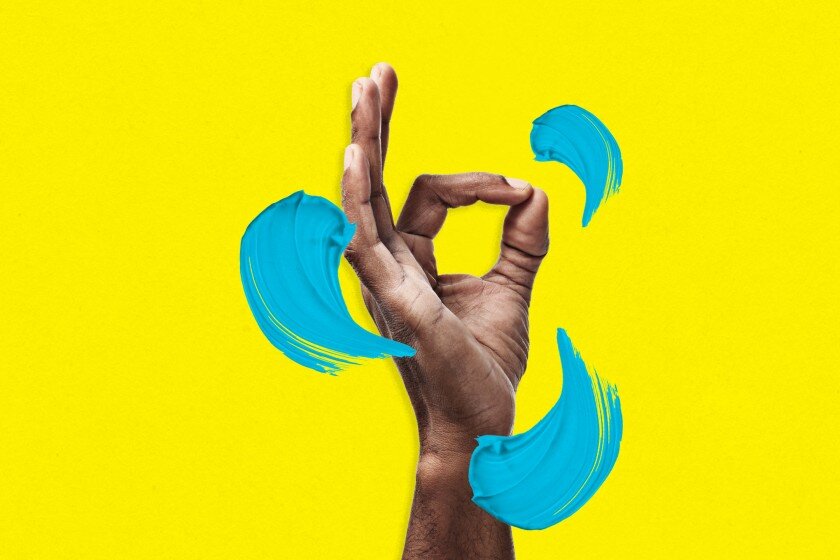
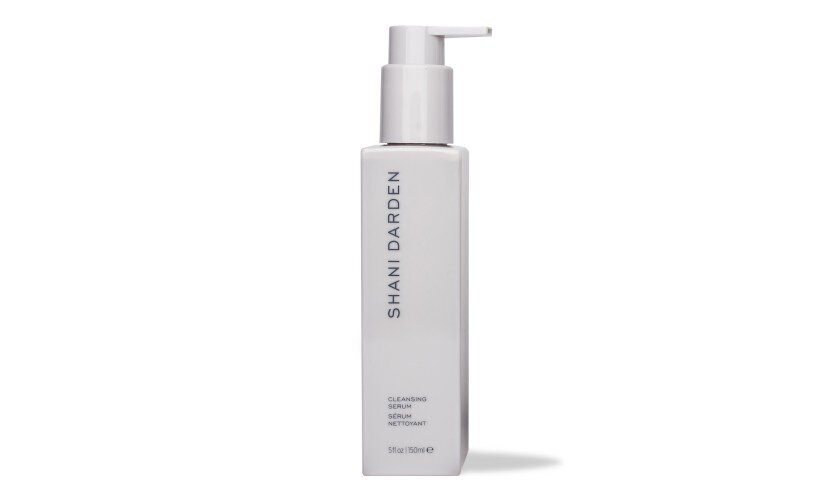
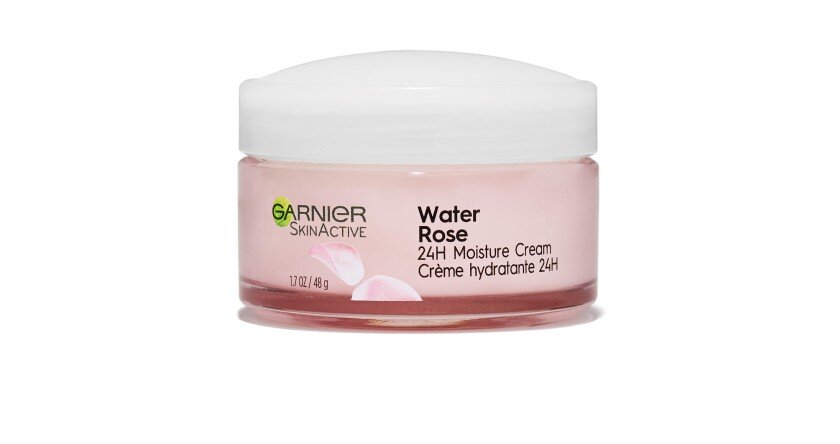
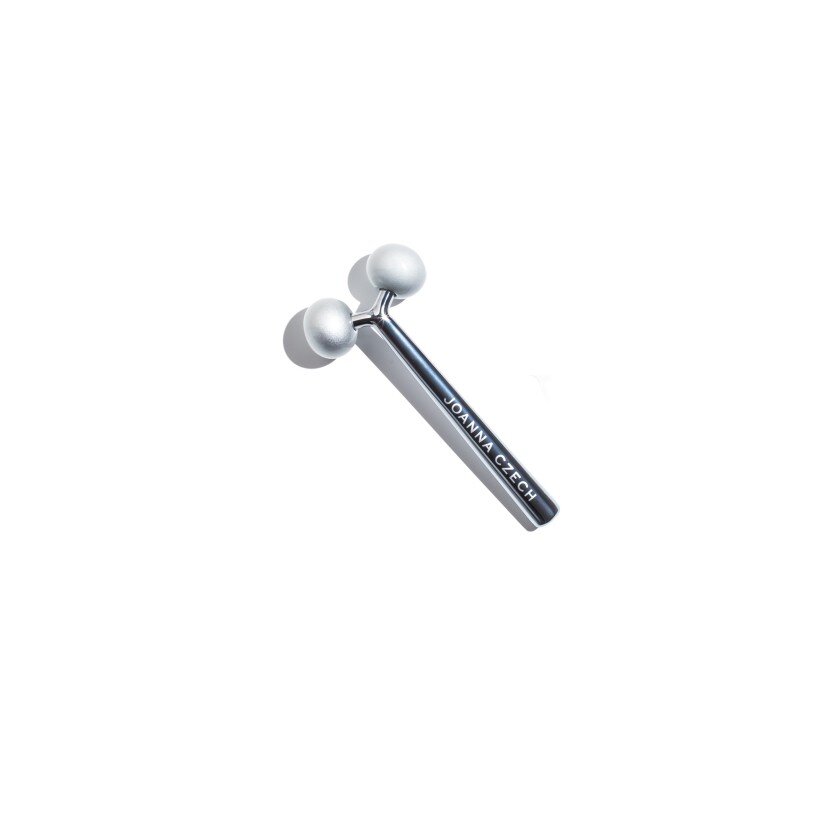
LA Times – Met Gala: Here are the standout beauty looks
By MELISSA MAGSAYSAY
MAY 7, 2019
You would be forgiven if you had mistaken Elle Fanning for Lady Gaga, Mindy Kaling for Donatella Versace or Priyanka Chopra for Effie Trinket while watching the celebrity arrivals at the 2019 Met Gala.
That is to say, each star had a beauty look so transformative — in the form of a cascade of long platinum blond hair on Kaling; a highly exaggerated, white-blond “I Dream of Jeannie” ponytail on Fanning; and a face of white and fuchsia makeup for Chopra — that their typical red-carpet personae seemed galaxies away.
That, of course, was the point. This year’s theme, “Camp: Notes on Fashion,” called for a celebration of being extra and embracing the unexpected, and the hair and makeup certainly followed suit.
Plenty of celebrities played up the camp factor with their eyelashes and hair. Lady Gaga, in particular, made a strong point with her butterfly-like black and gold lashes, as did Gigi Hadid with a silver pair. Billy Porter created a gilded effect with a smattering of gold makeup and lashes lining his eyes.
Exaggerated hair was a constant. Yara Shahidi’s voluminous half-up hair almost eclipsed her diminutive frame, and Zoe Saldana’s curly mane channeled Diana Ross in “Mahogany,” complete with a purple flower tucked behind one ear.
The more-is-more vibe also came in the form of metallic makeup in general. In addition to Porter, Bevy Smith, Celine Dion, Awkwafina and Emily Blunt had attention-grabbing metallic eye makeup. Blunt’s glittery-gold highlighter was relatively subtle for those who want to inject a little camp into their daily look.
As for bold color, Laverne Cox and Lupita Nyong’o tied for wearing the most vibrant kaleidoscope of pastels and bright shades as makeup. Gala co-host Serena Williams went in the other direction, allowing her highlighter-yellow and pink Versace gown and Nike X Off White sneakers to shine.
“I felt like the dress was super-camp so I wanted that to speak for itself,” said Williams’ makeup artist, Renny Vasquez, who used Pat McGrath products. “I made sure that the makeup complemented the dress and didn’t fight against it.”
With that said, here are some of the standout beauty looks from Monday’s Met Gala.
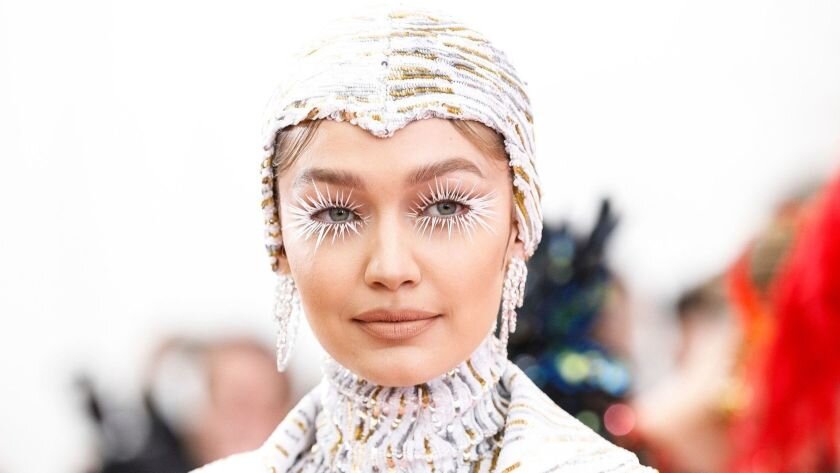
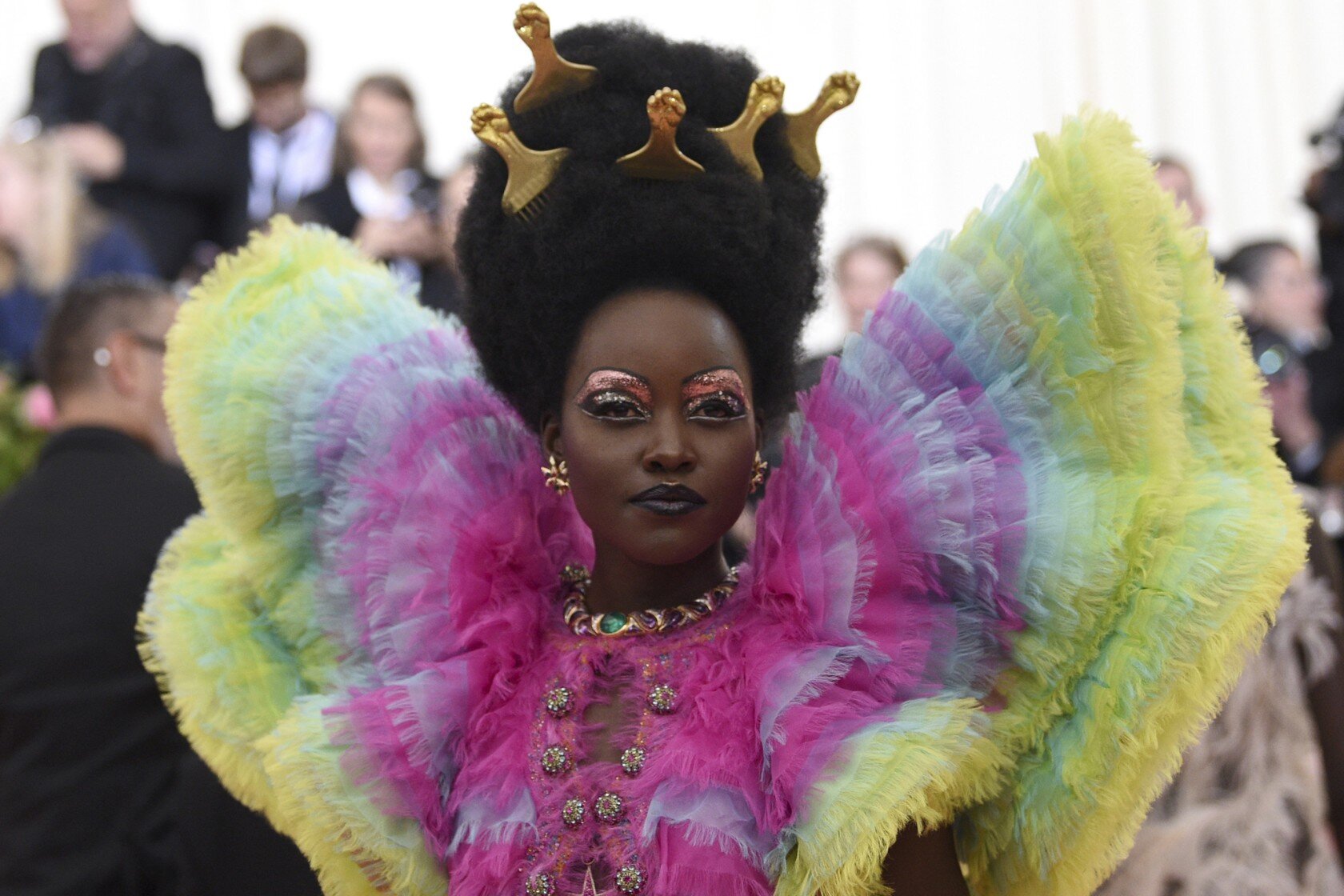

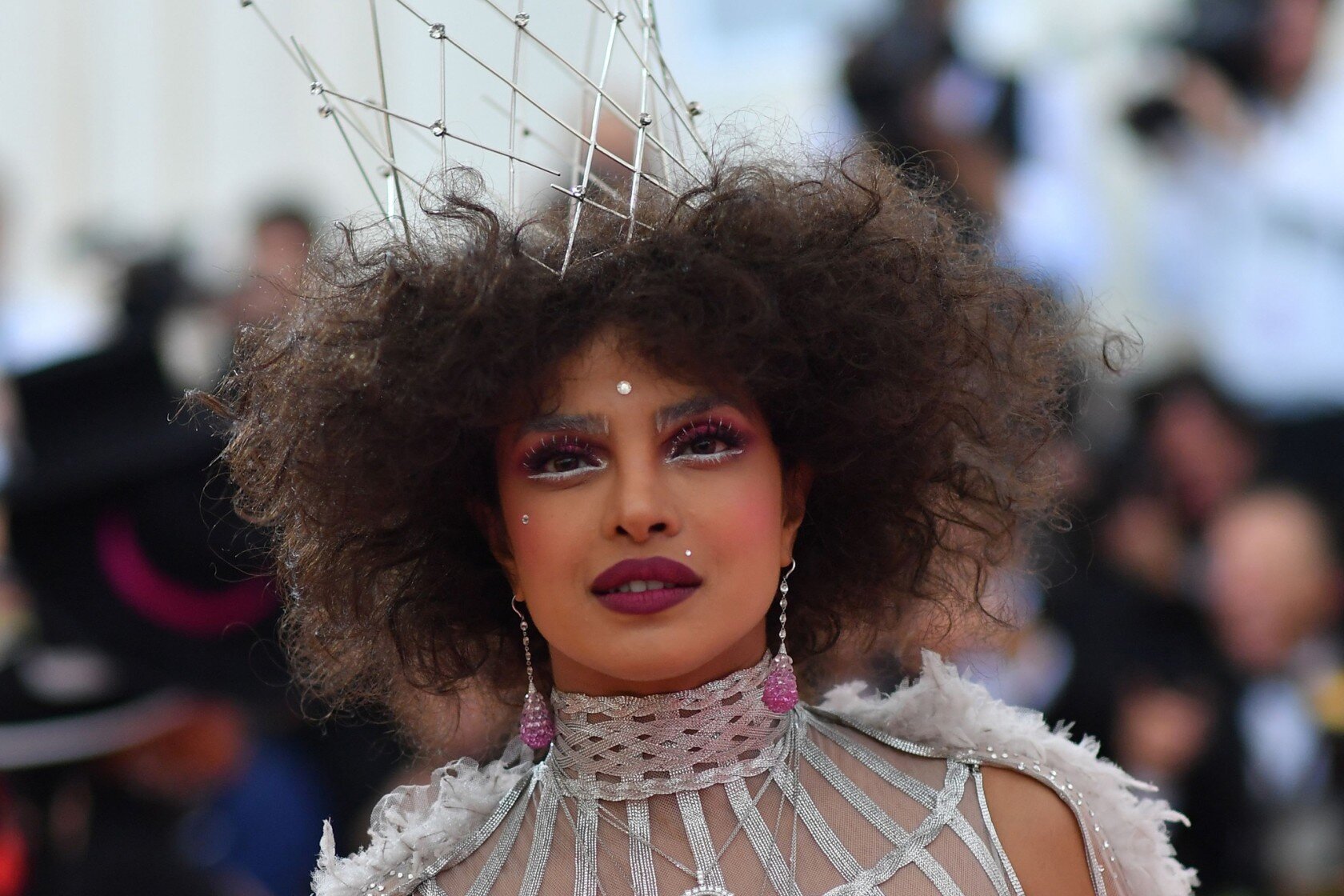
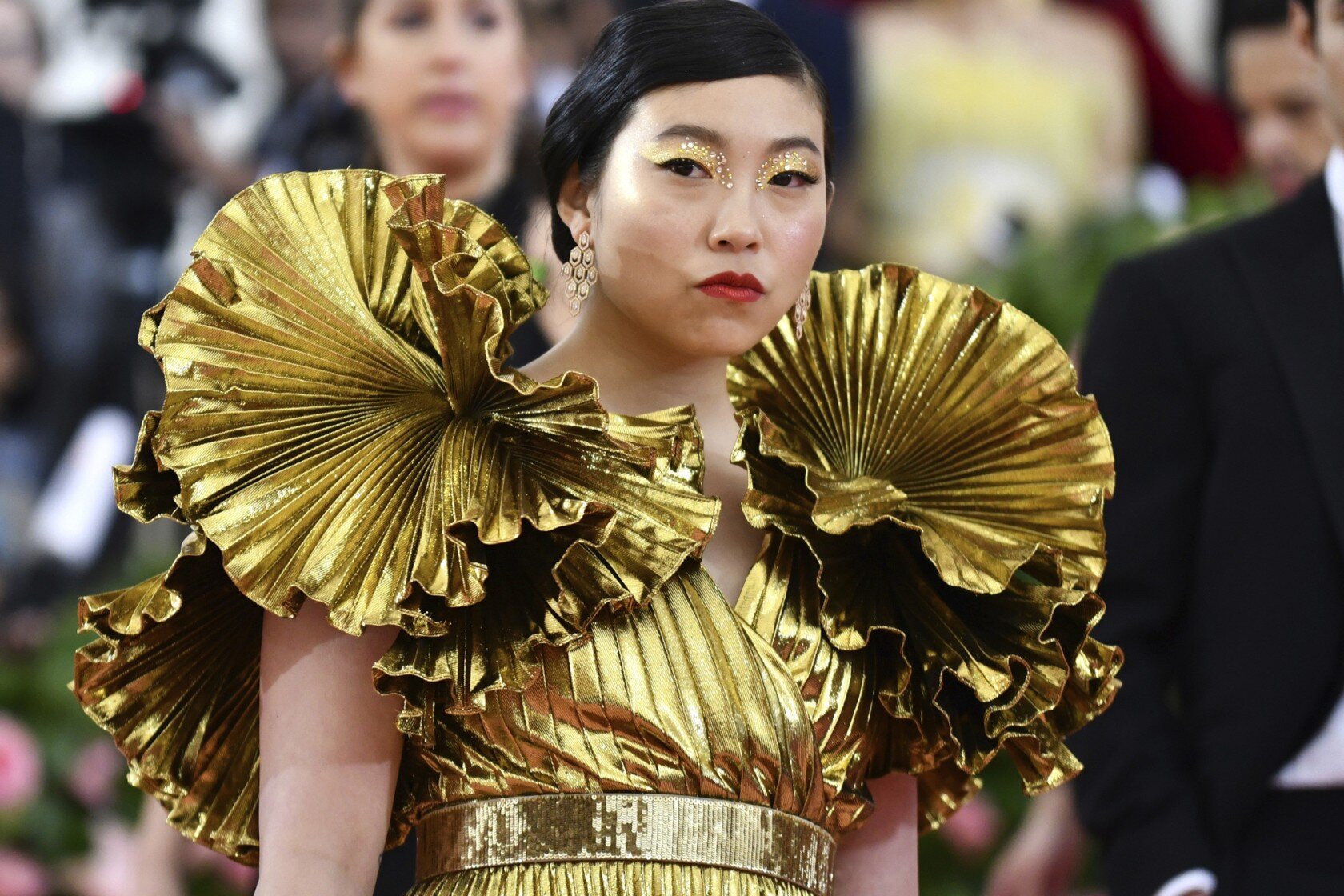
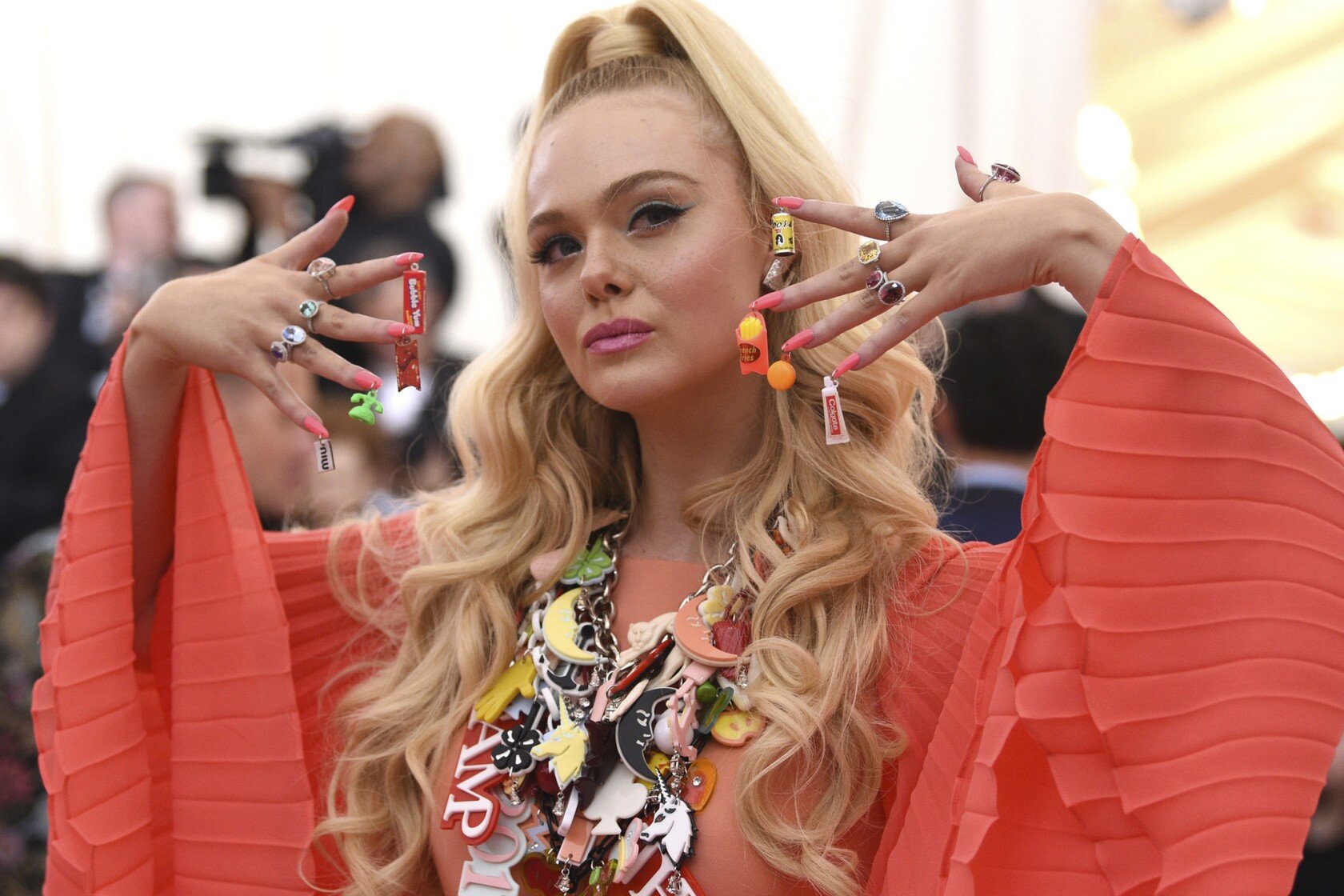

Business of Fashion – The New Way Celebrity Stylists Are Paying the Bills
Stylists best-known for working with celebrities like Angelina Jolie and Matthew McConaughey are signing onto an app where they dole out wardrobe advice to the public.
BY MELISSA MAGSAYSAY
AUGUST 28, 2019
LOS ANGELES, United States — In the spring of 2018, some of the most in-demand celebrity stylists gathered at the Sunset Tower Hotel to hear a pitch that in some cases would take their careers in a radical new direction.
The stylists were the creative forces behind some of Hollywood’s most famous looks, from Kristen Stewart’s Chanel ensemble for the 2019 Met Gala to Angelina Jolie’s memorable leg-baring black Versace gown at the 2012 Oscars. But prepping celebrities for movie premieres and awards shows wasn’t paying the bills anymore. Rates were on the decline, and studios had in some cases stopped paying for basic expenses like tailoring and shipping.
The pitch, from Seattle entrepreneur Stephanie Sprangers, was to join Glamhive, an app she was developing where anyone with a few hundred dollars to spare could hire a stylist to the stars for a wardrobe overhaul or a pre-event glow-up. Several quickly signed on, including Tara Swennen (Kristen Stewart and Matthew McConaughey), Nicole Chavez (Kristen Bell) and Jennifer Rade (Angelina Jolie). Glamhive officially launched earlier this year.
The platform is a radical departure from the exclusive world of celebrity styling, where jobs are typically booked through agencies and top names rarely venture outside their network of star clients and luxury brands. But as red carpet rates have waned, many stylists have begun to rethink how they approach their jobs.
“Celebrity hair stylists see personal clients in a salon when they’re not on set, this is kind of a way for us to do that,” said Lindsey Dupuis who works with Nikki Reed, Sharon Stone and Meagan Good, and signed up with Glamhive last year. “You get paid more and you get paid well. It’s due time we start taking advantage of personal clients on the side, because everyone else does it.”
Fees are plunging because studios, which are pumping out movies and shows by the dozen for Netflix, Hulu and other streaming services, see styling as an easy way to keep down costs. The field has also gotten more competitive with aspiring stylists pitching themselves on social media. A “per look” rate might fetch $500, even on a major project — a fraction of the typical rate even a few years ago and barely enough to cover expenses, stylists say.
Though a step down from the exclusive world of actors and musicians, stylists say they like being able to work by the hour from home, without the multiple days of preparations and expense that can go into pulling together a red carpet look.
About 200 stylists have signed onto Glamhive, with customers typically spending between $500 and $5000, Sprangers said.
Dupuis has worked with several clients through the platform via video chat and messaging, charging $225 for a one-hour styling session up to $1,350 for a full makeover. She said she sets her rates high so it “warrants jobs worth the time.” Others charge even more; Janelle Miller, stylist to Khloe Kardashian, lists her rate for a makeover at $2600 (Glamhive also offers non-celebrity stylists for rates as low as $45 an hour).
The main difference between personal and celebrity clients is time, Dupuis said. A celebrity look is for one-time use and requires a fitting, where personal clients generally want a closet clean-out and wardrobe building suggestions that can require multiple sessions.
Dupuis builds each of her personal styling clients a mood board with links to suggested items. Glamhive offers stylists a commission on clothing sold through any of the 80 brand partners affiliated with Glamhive, including Farfetch, Shopbop and Matchesfashion.com.
Jamie Hantman, a Washington DC based author, began using Glamhive earlier this month after she saw that celebrity stylist Gaelle Paul, who works with Adele, was on the platform.
“I became aware of her before she was on Glamhive,” said Hantman who was looking for a wardrobe for her first book tour in October. “I have a curvy figure and just always knew that if I ever needed a stylist this is who I would contact. She put together four different outfits for me to wear during book promo and gave me a framework of silhouettes and designers that work for me.”
Glamhive isn’t the first styling service to hit the market. Stitch Fix and Trunk Club promise personalised clothing boxes, while Glam Squad, Armarium and Rent the Runway offer high-end gown rentals. The barriers between celebrities and their fans have also grown more porous, with stars sharing their lives on Instagram and even offering to record for-pay messages on the Cameo app.
Still, some in the industry feel that maintaining an exclusive client list is part of a stylist’s job. Getting credited with a star’s look — and even better, having that star tag their stylist on Instagram — unlocks relationships with brands and work on advertising campaigns. Being so available to the public might cause celebrity publicists to pass them over for jobs, one publicist said.
“A platform like [Glamhive] is good for a stylist who already has a very established career and long-term clients,” the publicist said. “But for a stylist who is on the verge of breaking through, I might advise them to stay off an app like this.”
But at a time when working with stars no longer guarantees a big income, diversifying revenue streams is increasingly the norm.
“As I started working with more stylists, I would listen to them talk and was flabbergasted,” said Sprangers. “You would never imagine that an industry would be suppressing their rate. It’s like having a Michelin star chef or, imagine a rock star in any industry, making less money.”
For many stylists on the app, the predictability of working with apps like Glamhive outweighs other considerations.
“Aside from a movie press tour, you never really know what you’re going to do week to week,” said Swennen. “[Glamhive] is a way you can use that down time or dead zones during the summer months once award season has wrapped.”
Some said they also liked the sense of community the app fostered in a profession where stylists are usually working on their own.
“We have so few opportunities to work together,” said Chavez. “That first meeting at Sunset Tower with a bunch of us was so funny. We all started sharing our stories and frustrations. It’s nice to come together as a community and support one another especially as the industry is changing so much.”
Swennen echoes the sentiment and states that the timing of Glamhive helps many celebrity stylists in a variety of ways.
“The styling community is tight and we sort of collectively spearheaded this,” she said. “We’ve been trying to find roads to be more entrepreneurial. This gives so much added value in those in between times.”
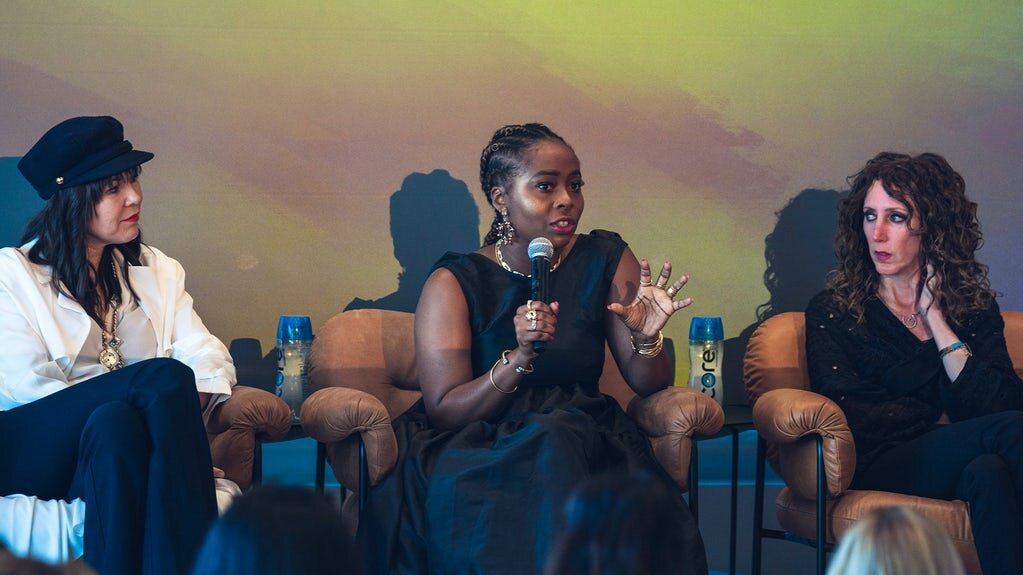
Hollywood Reporter – A Hollywood-Adored Sandal Is Kicking Up '90s Nostalgia
Strappy sandals, inspired by the 1990s, are popular on and off the red carpet as seen on Emma Roberts, Rihanna, Margot Robbie and Priyanka Chopra.
By MELISSA MAGSAYSAY
JULY 15, 2019
As fashion continues to mine the 1990s (from tiny choker necklaces and even tinier sunglasses to oversized workwear-inspired looks and color block windbreakers), a footwear trend taken from the decade seems to have the most staying power.
Minimalist sandals with thin strappy uppers and a signature square toe are a direct reboot of the '90s shoe staple and they remain the ubiquitous accessory choice of summer. Seen on Rihanna, Kendall Jenner, Bella Hadid, Emma Roberts, Priyanka Chopra, Kate Bosworth, Margot Robbie, Shay Mitchell and Emily Ratajkowski, the sandals are taking shape as flats, kitten heels and even a modified flip-flop. It’s the squared-off front of the shoes that’s telling of its '90s origins, and they pair with everything from slip dresses to slouchy suits.
While the sandals sit on the other end of the sartorial spectrum than the exaggerated platform sneakers famously worn by Spice Girls, they conjure up no less nostalgia for the time when pin-thin eyebrows and bucket hats ruled both street style and the red carpet.
“Though minimal, the shoes have such a distinct shape and vibe that they can take an entire look more into the '90s than you might intend,” says Hollywood fashion stylist Micah Schifman, who dresses Camila Morrone, Isla Fisher and Sarah Silverman. “Wear them with something new and modern, so as not to look like you’re going to a '90s theme party.”
Brands including The Row, Saint Laurent, Bottega Veneta, Prada, Zara and Cult Gaia have all released their own versions of the '90s classic in neon colors, essential black and white, or snakeskin-embossed leather.
“I’m a big fan of anything that is '90s-inspired, so I’m very happy to see the strappy, square toe shoe making a return,” says Hollywood fashion stylist Monica Rose, who counts Chrissy Teigen and Mitchell as longtime clients. She recently styled Mitchell in '90s sandals by The Row for her vacation to Italy. “People tend to assume the square toe look isn’t sexy, but everything we are seeing right now, from Bottega Venetta and Saint Laurent, for example, are all very sexy. The '90s have always had that sexy simplicity element.”



Hollywood Reporter – 'Once Upon a Time In Hollywood': Leo DiCaprio's Makeup Artist Transformed Him
"The mustache drove Leo mad, because I had to leave it really long and it always went in his mouth...he kept spitting it out," says DiCaprio's longtime personal makeup artist, Sian Grigg.
By MELISSA MAGSAYSAY
JULY 26, 2019
When playing fictional washed-up actor Rick Dalton in Once Upon a Time in Hollywood, Leonardo DiCaprio was faced with some tricky facial hair while being transformed for "filming" scenes, in which the "director" character wants Dalton to look unrecognizable as a Western villain.
DiCaprio’s longtime personal makeup artist (who has worked with him since Titanic), Sian Grigg, aimed to create facial hair for the actor that was accurate to the 1969 time period when the spaghetti Western was filmed. This meant an exaggerated style that was so long, she claims DiCaprio found it annoying while shooting — a good thing for drumming up the frustration Dalton is meant to be feeling during that scene.
"The mustache drove Leo mad, because I had to leave it really long and it always went in his mouth," says Grigg, who used WM Creations glue to keep the piece on the skin. "It was so hot out and the mustache kept going in his mouth, and he’d be spitting it out. He did the same thing in the scene as they filmed 'off camera' when he was supposed to be losing it a bit. It made us laugh as he kept spitting it out and the wig was quite long as well."
Grigg adds that the mustache was meant to look fake, not perfect or neat as it might for a modern day film. "It was meant to look phony because they didn’t have good materials back then like we do now. It was correct for the period — a Western film being made in the '70s. We were copying the style of films shot in that period and also covering Leo’s character up to look different and unrecognizable, which in the movie he’s not used to."
Long strands, facial hair and scruff are generally how actors come to the hair and makeup trailer, but especially in the case of this film, say hair department head Janine Thompson and makeup department head Heba Thorisdottir.
"When people start hearing that Quentin Tarantino is doing a '60s/'70s movie, word is out and people start growing out their hair, especially since his two previous films were Westerns," says Thompson.
"Actors tend to grow out their hair in between jobs as well," adds Thorisdottir, "which is beneficial, because they come into the trailer as a blank canvas for us."
When it came to creating hairstyles that captured 1960s Los Angeles, Thompson dug deeper than the predictable tropes of perfect movie star coifs and scraggly hippie strands. The looks indicative of the modernization of Old Hollywood were inspired by her personal family photos as a native Angeleno, as well as the on-set coaching of Yvonne Depatis-Kupa, a hairstylist who worked in the Jay Sebring Salon on Fairfax in West Hollywood in the '60s, run by Sharon Tate’s ex-boyfriend and close friend who was killed by the Manson family on the same night as the actress.
Having worked with Paul Newman, Steve McQueen, Frank Sinatra and Warren Beatty, Sebring was at the forefront of ushering in the age of the celebrity hairdresser.
"Jay was one of the first people to deal with the stars," says Thompson. "He was also just starting to convince men to take care of themselves."
"What was important to me was the role Los Angeles played in this film," says Thompson, who also oversaw the hair on Avengers: Endgame, Captain Marvel and Avengers: Infinity War. "I’ve watched so many period films that take place in Hollywood and they are not indicative of what L.A. really looked like then. It was a different culture at the time. Quentin and I also talked about how the Watts riots had happened right before the time period of our movie and possibly, because of that, L.A. seemed to pull away from being politically active. The city stayed mellow and quiet and became more of a pool and beach culture. The hairstyles reflected this, they were less contrived."
In this case, an "L.A. spin" meant plenty of "pool fuzz" which, according to Thompson, translates as strands of hair deliberately left to look wet and hanging on the back of the neck so women could boast, despite the rest of their hair looking perfect, that they had spent the day lounging in their pool, a major status symbol of the day. The concept was surfaced by Thompson’s grandmother, who was a hairdresser in L.A. during the decade and had plenty of clients who came in for their weekly appointment requesting the quirky detail. Pool fuzz and golden blond highlights, an homage to Thompson’s hometown, were placed on plenty of extras.
As for Brad Pitt’s character, Dalton's stunt double Cliff Booth, his biggest hair moment was wearing his "Rick" Dalton wig, worn with a tuxedo while ready to stand in for Dalton on set. The wig took on a life of its own during and after the film.
"The scene where Brad takes off his wig to fight was much talked about," says Thompson of a moment Booth challenges Lee to duke it out. "The thought was that Brad’s 'Rick' wig belonged to him and is very precious since it’s one of the most important things he has to do his job. We made the inside of the wig hard so it was more like a hat. Quentin wanted him to be able to 'take it off and hang it up.' It became a character of its own and everyone wanted a photo in it!"
In fact, she adds that so many crewmembers requested photos wearing the "Rick" wig that with Pitt’s blessing, photos of the crew wearing it were taken and compiled into a coffee table book as a wrap gift for Tarantino.
For Margot Robbie’s turn as Sharon Tate, specific looks taken from the slain star’s lifestyle and film projects at the time inspired aspects including hair color and cowlicks.
"Margot had two different looks," says Thompson, "when she was either Mrs. Polanksi or Sharon Tate, based on the film’s time jump. When she’s pregnant, she had these natural cowlicks at her hairline and she was living in her pool because it was so hot. We put a slight wave in the hair so it looked like she twisted it and it dried naturally. You really saw a sweetness and innocence."
Robbie’s hair color was created by Thompson, using Shades EQ color and toner followed by Overtone colored conditioners. "We referred to her actual hair color during the time period," says the hairstylist. "Then warmed it up a bit with a red wash for when Sharon is sparring with Bruce Lee, getting ready for her role in The Wrecking Crew. We matched that one specifically to the film."
In the scene when Robbie is dancing, Thompson created an extra bouncy look for the hair, employing an old school technique called a "wet set." She says of the look, achieved by setting hair in large rollers while still wet and then dried under a drying chair: "It had bounce like you wouldn’t believe!"
A mousse from Leonor Greyl, the product line Thompson used abundantly throughout the film, was applied for volume and Amika Chameleon curling wand sets were in the kits of the entire hair department to add extra curls. She adds that, in 1969, orange juice cans were often utilized as rollers to get a full look.
Once Upon a Time in Hollywood opened in theaters Friday.


Business of Fashion – Will the ‘Frieze Effect’ Work in LA?
Fashion brands and retailers profit handsomely from the Frieze Art Fair in London and New York. BoF goes inside the event’s Los Angeles debut.
BY MELISSA MAGSAYSAY
FEBRUARY 17, 2019
LOS ANGELES, United States — Frieze, the art fair that launched in London in 2003, made a visible impact on Los Angeles during its debut in the city this week, despite the uncharacteristic downpour. Over 70 galleries, both local and global, participated in the event, which centred on the famed backlot of Paramount Pictures Studios in Hollywood, but spilled across the sprawling city in the form of panel discussions, musical performances and private dinners. All in all, the fair attracted an estimated 30,000 visitors, including gallerists, collectors, and plenty of art-savvy celebrities and industry insiders, including Brad Pitt, Annie Leibovitz and Raf Simons.
“Our conversations with leading figures here showed that the time was right to create an international moment that focuses on LA and brings people here from all over the world,” said Victoria Siddall, director of Frieze Fairs.
The opportunity was certainly not lost on fashion brands and retailers like Gucci, Rimowa, Dover Street Market and Matches Fashion, which all staged activations during the fair, hoping that what some insiders have come to call the “Frieze effect” will work to boost brand — and sales — here in LA, much as it does when the fair touches down in London and New York.
Los Angeles has long been home to big-ticket artists like Ed Ruscha, John Baldessari and Sterling Ruby. And though the city has yet to truly cement itself as a hub for art sales, the confluence of entertainment and celebrity; a revitalised museum scene in the Los Angeles County Museum of Art, The Broad and The Marciano Art Foundation; the rise of local luxury retailers; and the influx of designers and artists now calling the city home have created a compelling blend of art, fashion and commerce.
In LA’s downtown arts district, Hauser & Wirth’s mega-gallery, complete with a restaurant and gift shop, anchors a once-gritty area that now contains luxury lofts, award-winning eateries and the likes of Dover Street Market, 3.1 Phillip Lim and The Row DTLA, a collective of shops, eateries and pop up art exhibits.
Fashion and brand consultant Katherine Ross, a former vice president of communications at LVMH who is married to Los Angeles County Museum of Art (LACMA) director Michael Govan, cites Gucci’s partnership with the museum — and its annual Art + Film Gala fundraiser, a celebrity-heavy event that some have dubbed “the Met Ball of the West” — as evidence of large-scale opportunity.
“I think the free spirit of Los Angeles lends itself to this type of collaboration and synergy,” she said. “Frieze LA is another great opportunity for brands to have an interesting platform and engage audiences in a new and different way.”
On a bustling corner of West Hollywood, this week, stood a massive Rimowa suitcase rendered in neon blue, orange and pink by the artist Alex Israel. The installation was inspired by the Los Angeles sky and came with a range of regular-size suitcases in the same saccharine shades. “I like to think of the suitcases as a blank canvas,” said Alexandre Arnault, chief executive of Rimowa, while gazing up at the giant piece of luggage which inadvertently doubled as a climbing gym for several children running through the installation. “As Los Angeles is becoming more relevant not just in art, but music, fashion and architecture, our hope is to gain more access to the art world and more awareness from within the industry.”
The 20-foot-tall suitcase remained on exhibit through Saturday and drew tastemakers including China Chow, Sara and Erin Foster and Fuschia Kate Sumner, along with architect Kulapat Yantra and artist Yi Zhou. “We care about cultural impact,” said Hector Muelas, chief brand officer of Rimowa. “Did the cultural community participate? Did it spark a conversation?”
Gucci screened four films during the week, reprising an approach it has used at Frieze New York, while Dover Street Market, which opened its LA outpost just 4 months ago, held one of its signature open house-style events, showcasing a mix of fashion, music and art, including an installation by The Underground Museum, talks with artists and musicians. Peppered throughout the store were featured pieces by Jacquemus, Chanel and Simone Rocha, among others.
“There’s the existing synergy between our clients who both shop at the store and attend Frieze,” explained Marissa Jartcky, head of buying and merchandising at Dover Street Market in Los Angeles and New York. “Also, our store just opened in the Arts District. It’s the perfect opportunity to celebrate the inaugural fair and connect with the community.”
On the first night of the fair, online rival MatchesFashion held a dinner with private arts club The Cultivist, followed by a robust line-up of panel discussions and fashion presentations inside a pop-up version of its 5 Carlos Place townhouse, the private shopping and events space opened by the e-tailer in London’s Mayfair last September. Much like Dover Street, the company was betting on the crossover art-fashion crowd and aimed to offer something more than shopping.
“What we’re looking for is the purity of creativity and the opportunity for our customer to discover,” said Ulric Jerome, chief executive of MatchesFashion. “LA fits really well into that strategy.” Alongside pieces by Simone Rocha, Halpern, Batsheva and Cecilie Bahnsen, the program included live conversations with tattoo artist Dr. Woo, The Elder Statesman’s Greg Chait, jewellery designer Daniella Villegas and the co-founders of RAD Fashion Advocacy.
In total, the retailer did more than 25 events, three live streams, three musical performances and five podcasts to coincide with the fair. “We tried to build the program around local tastemakers,” said Jerome. “We went with musicians, contemporary artists and gallery directors who are all LA based. The more local we go, the more authentic we become.” The retailer also aimed to capture new emails and incentives sales by offering $200 gift cards.
Designer Rosetta Getty and Princess Alia Al-Senussi hosted a talk at Neuehouse featuring Analia Saban and Hayden Dunham in collaboration with Cultured magazine. “So many of my customers, friends and muses are artists and part of the art world,” said Getty. “In Los Angeles, there is a seamless blend of who the art customer and the fashion customer are.”
Jasmin Shokrian, the LA-based designer and a speaker on the MatchesFashion line-up has go so far as to start showing her collection at global art fairs instead of fashion weeks. “My brand has always been informed by the lifestyle around art,” said Shokrian. “My clients are collectors, advisors, gallerists. It’s exciting to see that the landscape of LA is more bustling than ever.”

LA Times – Oscars 2019: Standout beauty trends from the Academy Awards
By MELISSA MAGSAYSAY
FEB. 25, 2019
When the dress has plenty of drama and sparkle, it’s only fitting that the hair and makeup stay sleek, understated and effortless. That sums up the beauty look at the 91st Oscars on Sunday evening.
Case in point: Supporting actress winner Regina King wearing a white, strapless Oscar de la Renta with a revealing leg slit, had clean, classic red carpet makeup and a shoulder-grazing bob with soft waves (a big trend seen with hair throughout the night). Turns out King also prepped her complexion with a go-to, the Red Carpet Radiance Treatment at Arcona Spa in Beverly Hills.
Her extra sparkle came from carats of Chopard diamond jewelry and of course an inner glow from the Oscar win for her work in “If Beale Street Could Talk.”
Rachel Weisz, Charlize Theron, Emma Stone, Yalitza Aparicio and Marina De Tavira all got the memo about sleek and easy hair, with each wearing their own version of the look. Angela Bassett and Kacey Musgraves followed the same clean lines but as a pulled-back low ponytail swept out of the way to make room for the blush-hued gowns they wore.
Clean also describes the makeup — in more ways than one. After all, best actress nominee Melissa McCarthy was made up by Georgie Eisdell using the fruit-pigmented makeup from 100% Pure. Makeup artist Kayleen McAdams used clean products from Beautycounter on presenter Amy Poehler.
Stars and their makeup artists also eschewed bold lips and overly done eyelids and, in some cases, opted for pink and nude hues.
Aparicio’s makeup artist Carissa Ferreri gave the “Roma” star a peach lip, soft light eye and glowy skin using vegan skin care and makeup from Arbonne. “My inspiration for Yalitza’s look was spring,” said Ferreri. “Her dress is a beautiful mint color, and I wanted to do something fresh and soft with apricot and peach colors.”
Best actress nominee Glenn Close also wore clean makeup in varying pink hues, painted on by makeup artist Kai Pritchard using Ilia Cosmetics. The rosy palette complemented her gold gown by Wes Gordon for Carolina Herrera. Her lipstick, a hue called Rococo, is a universal pink that can work on various skin tones.
And when the dress was pink (as was the case with so many stars, including Kacey Musgraves, Gemma Chan, Angela Bassett, Kiki Layne, Maya Rudolph and Julia Roberts), the makeup went subtly metallic.
Makeup artist Genevieve Herr gave Roberts what she called a “natural silver look” created to match the silver tones of Roberts’ jewelry and her wavy hair and to complement the star’s bright pink dress.
Using Lancome products, Herr turned to eye-shadow colors called Lustrous Opal and Clock Strikes 12 to get the right amount of silver shimmer across the Oscar-winning actress’ eyelids.
Her lips were colored with a shade that reflected the color of her dress — specifically a Lancome lip liner in Sheer Raspberry coupled with a sheer pink gloss called Le Mademoiselle Shine 232.
Roberts’ famous curls were coiffed into a blond and sleek mane most would consider Old Hollywood hair, with a deep side part reminiscent of Veronica Lake.
Although understated and modern glamour ruled the night, a few stars went the more traditionally glamorous route — or they opted for a combination of the two.
Stone, who donned a copper sequin gown with a structured shoulder from Louis Vuitton, did just a hint of metallic eye color to pick up the hue in her dress. Presenter Jennifer Lopez, known for going all the way with glam, paired her metallic gown with nude makeup and a classic smoky eye.
And leave it to Lady Gaga to do something head-turning with her hair. The “A Star Is Born” actress and Oscar winner paired her black strapless Alexander McQueen gown with a voluminous up-do that looked like a structured dollop of platinum Cool Whip.
“BlacKkKlansman” actress Laura Harrier also went for an up-do but more of a chic topknot, one that could easily be worn in off-time as easily as it could on the red carpet.
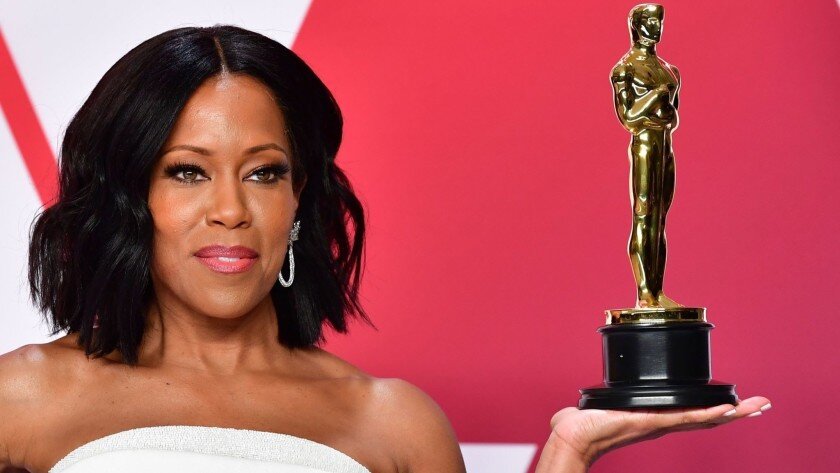
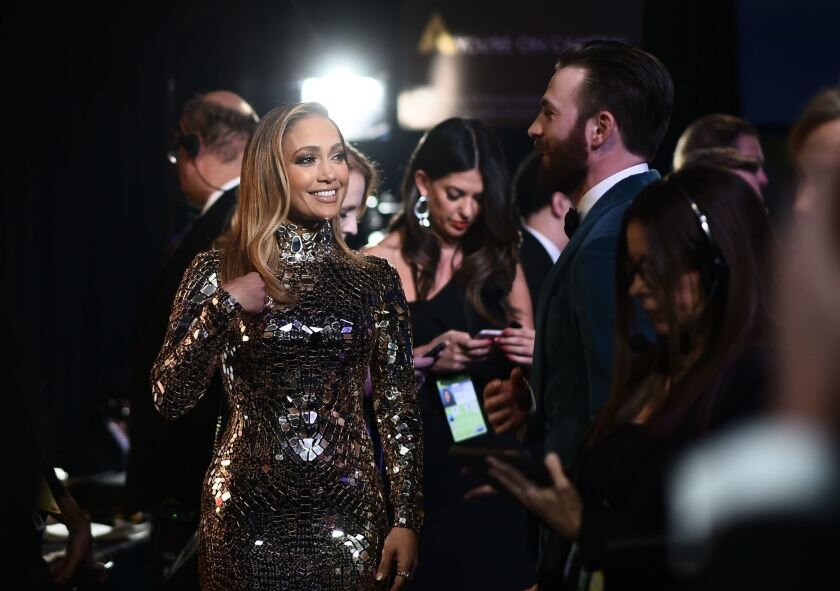
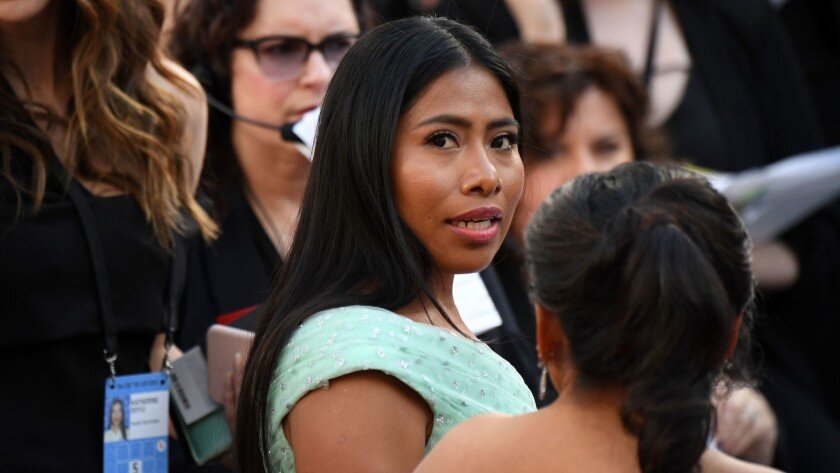

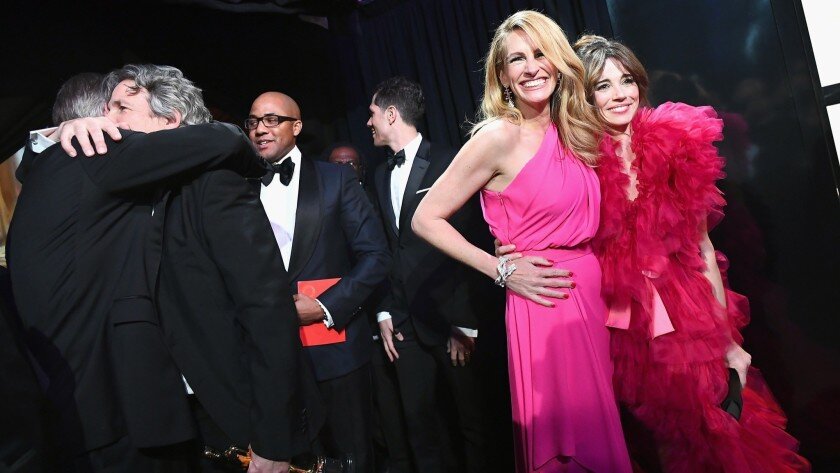
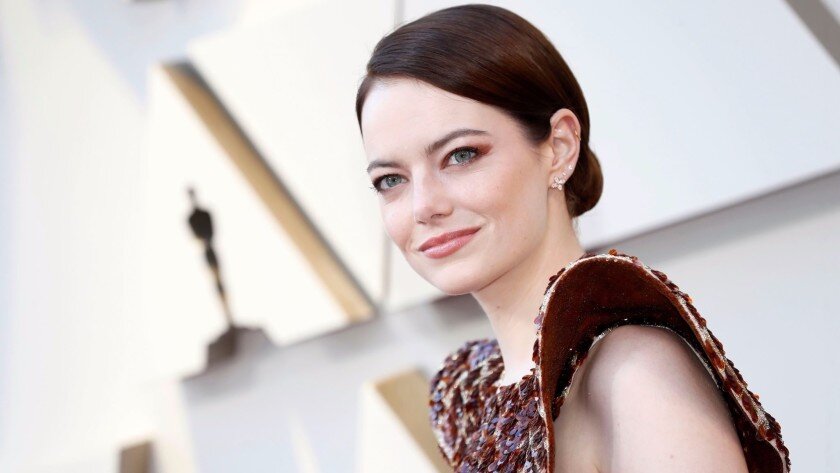
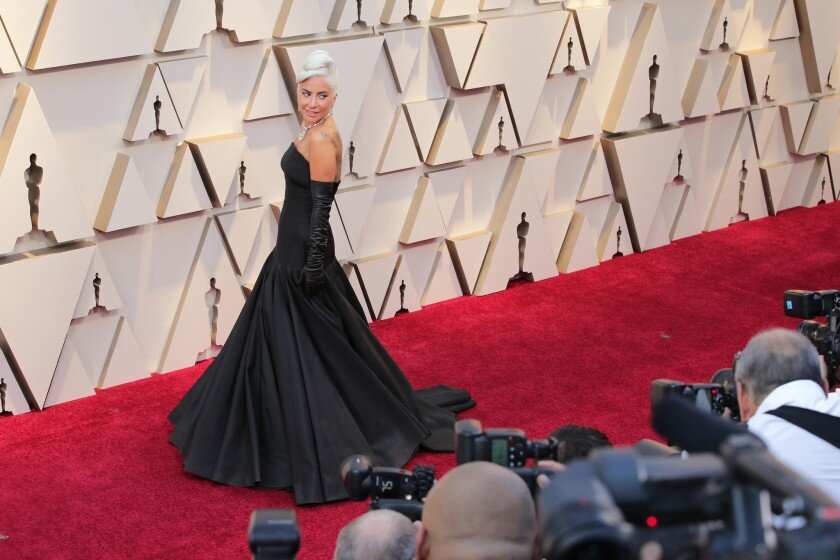
LA Times – 2019 Golden Globes: The standout beauty looks
By MELISSA MAGSAYSAY
JAN. 6, 2019
The Golden Globes are known for a relatively relaxed environment full of as much glamour and beauty as there is imbibing and comedy.
The hair and makeup donned by celebrities who walk down the red carpet tends to follow suit. The beauty looks at the 76th Golden Globe Awards were no exception except for a few head-turning (and eyebrow-raising) choices.
The vibe at this year’s awards was effortless. Shellacked-into-place up-dos were nowhere in sight. As were outlandish lip colors or overwrought eye makeup.
The hair and makeup of Rachel Weisz, Regina King, Saoirse Ronan, Patricia Clarkson and Danai Gurira illustrated how less is more when it comes to red-carpet beauty. A gently undulating curl, easy-going makeup and, perhaps, a lightly stained lip were the looks of the night, and these actresses and their respective glam teams did it best.
Also winners for simple-yet-gorgeous beauty were Julia Roberts, Emma Stone, Janelle Monáe and Janet Mock, who all stood out wearing makeup in a wash of soft colors ranging from peach to bronze.
However, if there’s one woman who can pull off colorful ’80s-inspired makeup, it’s Lupita Nyong’o. Her electric-blue eye makeup was a beautiful compliment to her azure Calvin Klein by Appointment gown. The actress’ makeup artist, Nick Barose, used Lancôme products to get the look, saying, “It’s fun to wear colors, and you can do it in small doses with liner and lashes.”
Thandie Newton and Lady Gaga proved that statement-making hair can still be chic if done right. The latter had a voluminous Valentino gown (that matched her ice blue-colored hair) and over 100 carats of Tiffany & Co. diamonds to contend with, so the origami-like up-do atop her head felt on par with her dramatic ensemble. Newton went for a subtly smoky eye done by artist Georgie Eisdell using Chantecaille and a pile of gorgeous curls that had volume without looking overwhelming.
On the other end of the spectrum, short hair nearly stole the show. The short crops of Claire Foy, Olivia Colman and Glenn Close were no fuss but still plenty glamorous and showed that when it comes to “Hollywood hair,” it’s not just about finger waves and long, over-teased tresses.
A no-fuss approach might be why ponytails made a comeback for the night. Jessica Chastain, Judy Greer and Sandra Oh all sported the style. Greer went for a messy-playful look done by hairstylist Gregory Russell, while Chastain’s was ultra-sleek and sat super high atop her head. “The height of her ponytail allows her to look flawless from straight on and really compliments her profile,” said her hairstylist, Renato Campora, of the look. “From all angles, the hair looks simple and elegant.”
Two attendees who didn’t do simple or elegant were Amber Heard and Kate Mara. Heard’s hair, with its mountain of ringlet curls, felt more at home in a Western saloon than center stage at an awards show.
Mara, dressed in a peach Miu Miu gown, had her hair pulled up in a bun so severe it somehow almost pulled focus away from her jeweled dress.
As for the men, this wasn’t a year of excessive facial hair or man buns. Most were clean shaven and traditionally groomed except for a few standout hairstyles. Ben Whishaw’s rockabilly-inspired pompadour added more of a cool factor to the actor’s bedazzled velvet blazer. And Timothée Chalamet’s famous curls were neat yet still a bit wild, while complimenting his sparkly Louis Vuitton harness nicely.
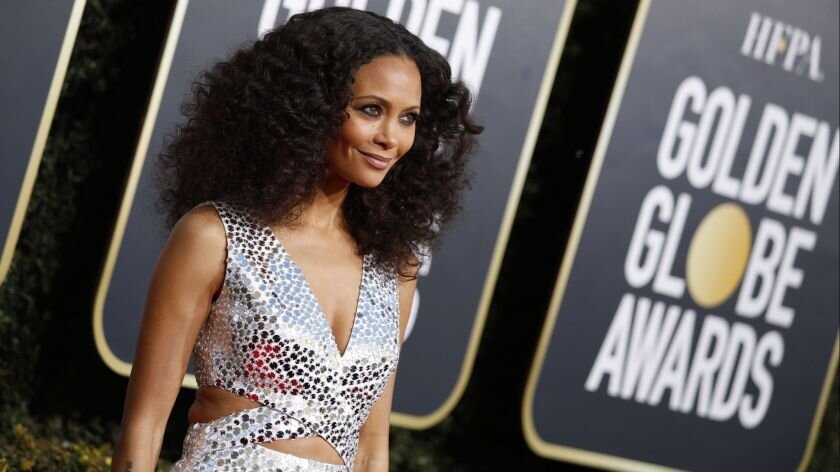
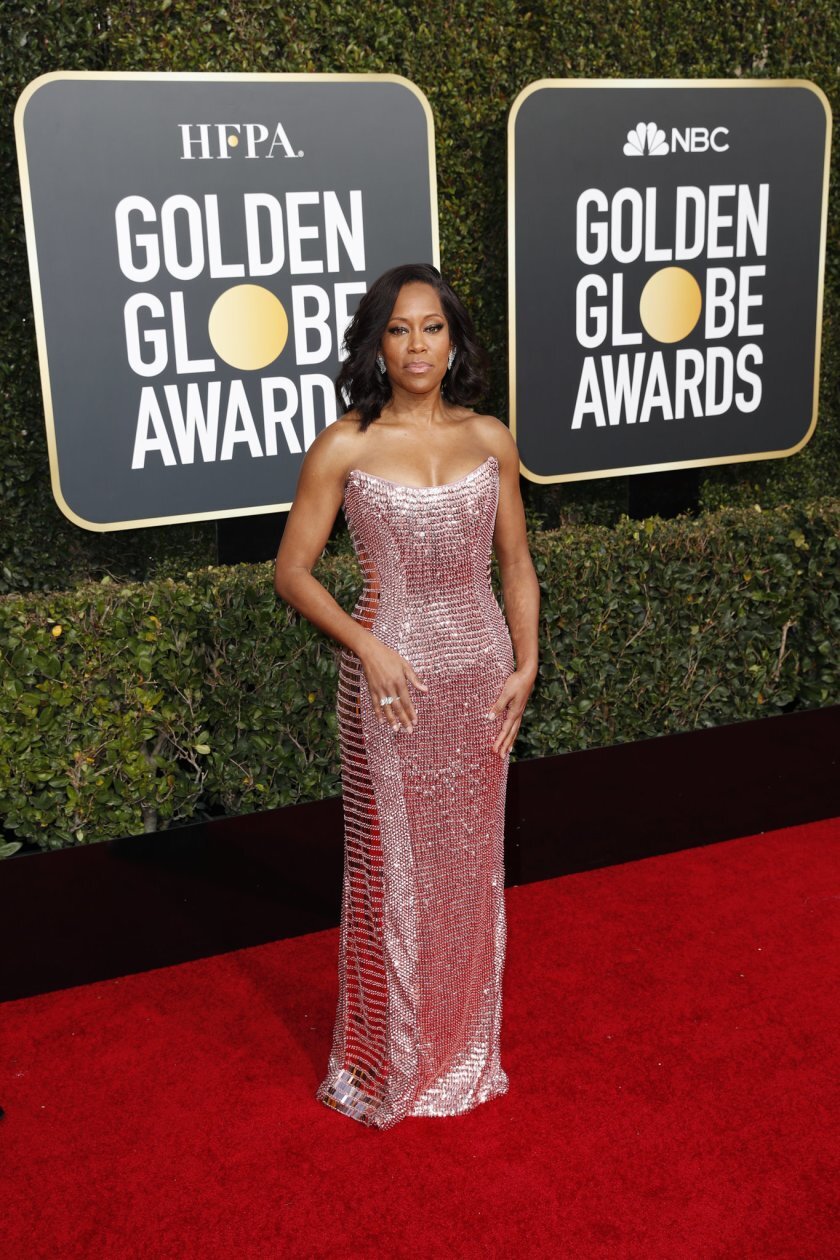
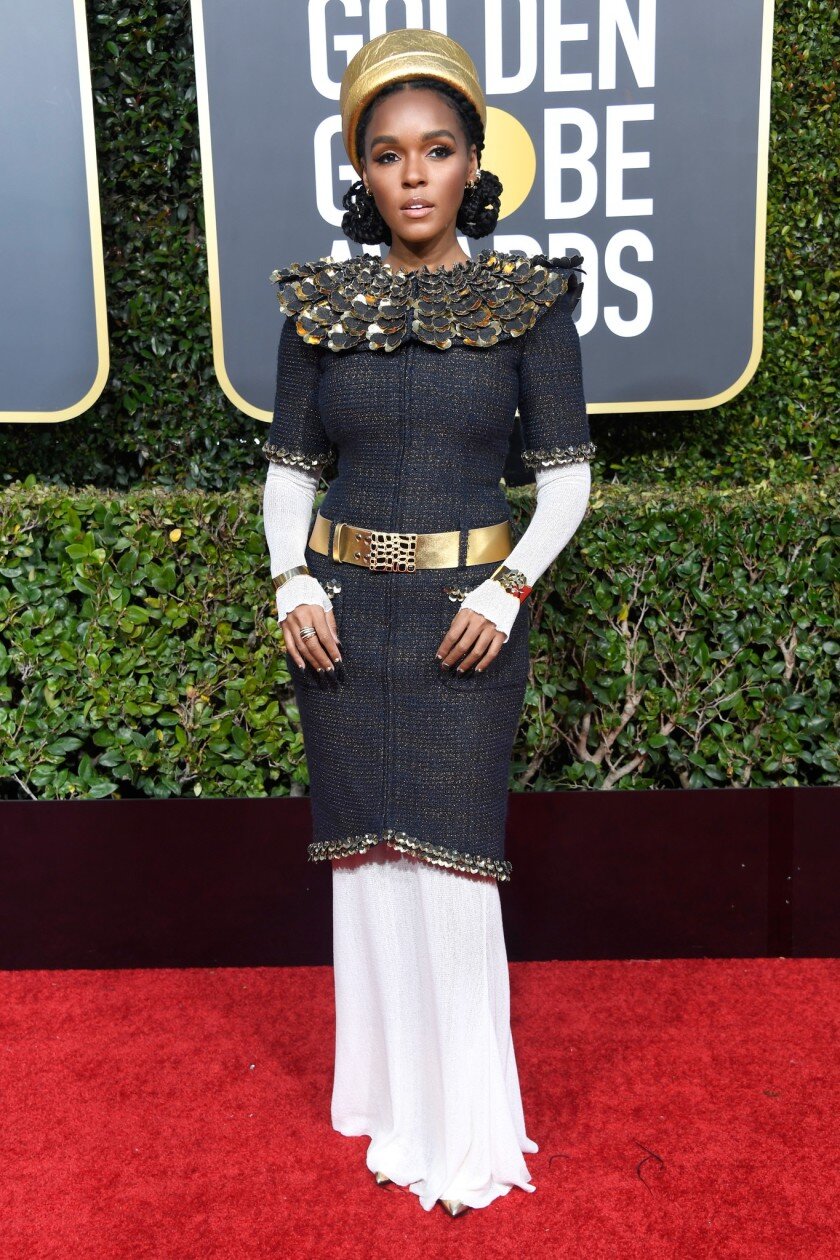
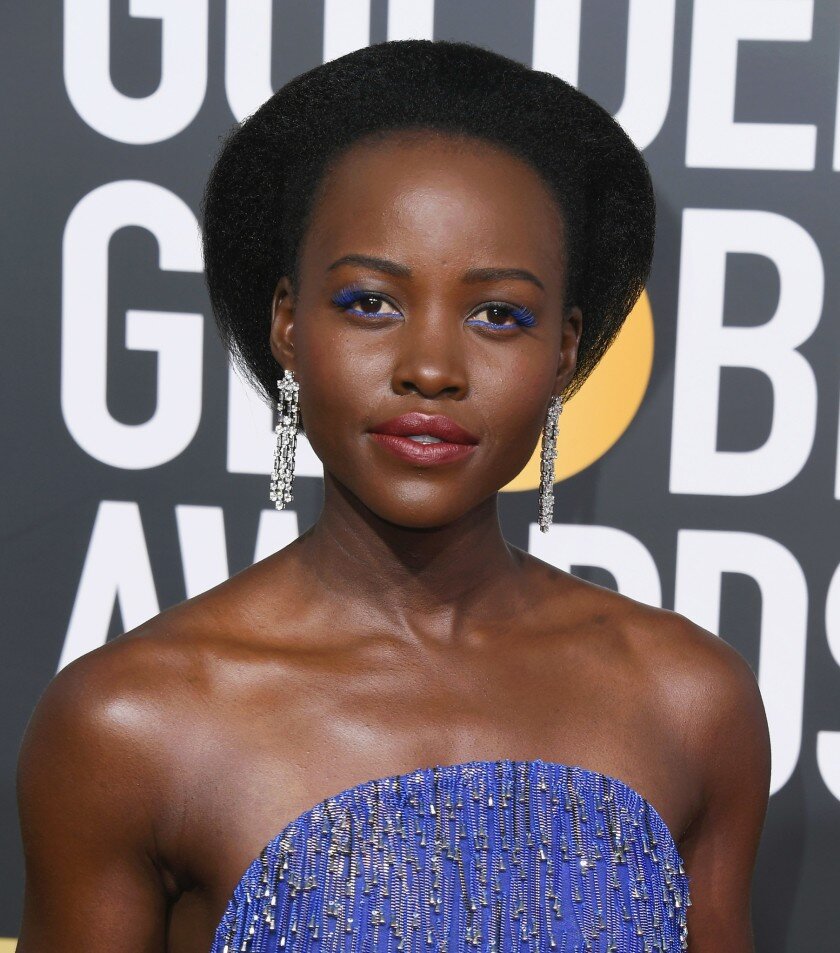
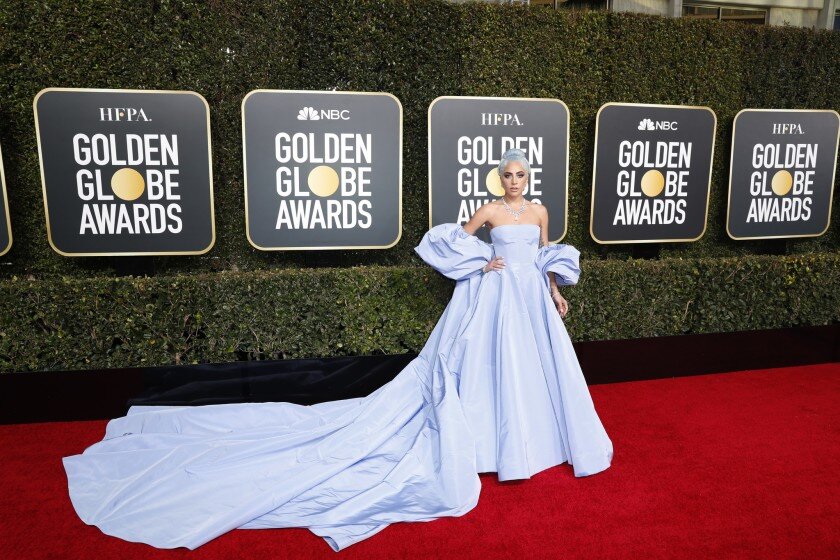
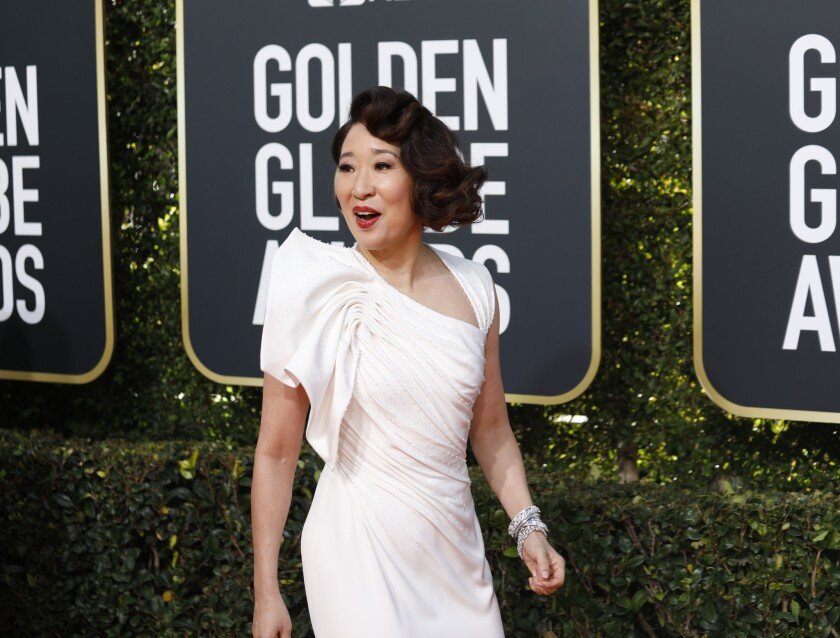
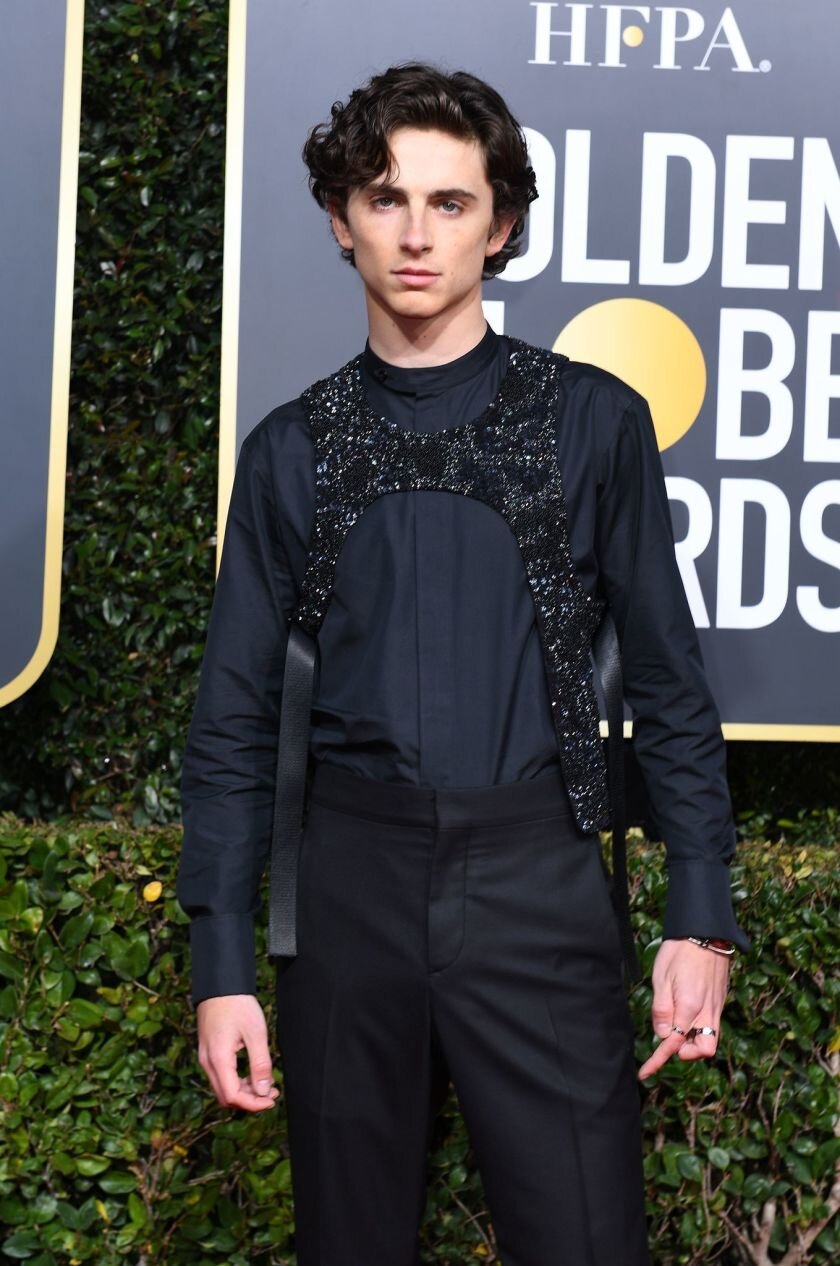
Business of Fashion – How Cardi B Makes Fashion Moves
The rapper tells BoF about her fashion strategy and why she chose to partner with white-hot Fashion Nova for her first clothing line.
BY MELISSA MAGSAYSAY
OCTOBER 29, 2018
LOS ANGELES, United States — Two weeks prior to the launch of her collection for Fashion Nova, the rapper Cardi B is breezily recounting her relationship with the Los Angeles-based fast fashion retailer, one that dates back to 2014, before she had two No. 1 singles on Billboard’s Hot 100 and before she amassed an eye-popping 34.6 million Instagram followers.
“They are always loyal to me. It's like a friendship now,” she said of the bodycon clothing line that churns out 1,000 new items a week. “I'm also really proud of them. Their brand has sold so much, and I have sold so much at the same time and it's like, 'Yay, we did it!' We both did it at the same time.”
Her collection, which goes on sale November 15, comes at a time when Fashion Nova’s popularity may just rival the rapper’s. According to a Piper Jaffray survey last week, Fashion Nova was the sixth most popular e-commerce site among upper-income teens, beating out brands including Forever 21, Lululemon and Adidas.
Since launching as an e-commerce site in 2013, Fashion Nova has managed to harness a lightning-in-a-bottle type of hype, fueled primarily by a network of prolific micro influencers who post photos of themselves wearing the curve-hugging clothing on Instagram. That, coupled with the constant flow of new product that Richard Saghian, chief executive of Fashion Nova calls “ultra fast fashion,” has catapulted the company into the top tier of online retail.
But the exposure and success has drawn competitors, who are taking a page out of the Fashion Nova playbook, as well as complaints from customers about fit and quality. As the marketplace becomes more saturated, the brand is looking to prove it can do more than churn out an endless series of disposable — and easily imitated — dresses, pants and tops.
Enter Cardi B. True to form, the rapper is as candid about her relationship with the brand (she has previously stated that she receives $20,000 a month to wear the label and promote it on social media) as she is her plastic surgery and personal life. But though she was among Fashion Nova’s earliest fans, recently, she’s worn Moschino, Tom Ford, Dolce & Gabbana and Alexander Wang for events ranging from the Grammys to the Met Ball and New York Fashion Week. She’s following fellow female R&B stars like Rihanna and Beyoncé who have had success with their break into fashion, expanding their brand and sartorial influence into their own lingerie and streetwear lines, respectively.
No doubt the impressive lineup of designers clamoring to dress Cardi B has only bolstered the Fashion Nova brand, which she continues to wear with the same frequency she does high-end items. Cardi B’s collection, the first celebrity collaboration for Fashion Nova, comes at a time when there is a seemingly perfect storm of her popularity and a growing appetite for authenticity and inclusivity among consumers.
The line will consist of 80 looks ranging from junior to curve, with an average price point of $40, including suiting, blouses, dresses, outerwear, denim, knitwear and accessories. In designing the collection, Cardi B said her goal was to create clothing that would blur the lines between expensive and inexpensive, with a focus on quality fabric and fit.
“Every little detail to me matters,” Cardi B said. “I want to make these women look so happy — so radiant, sexy, so corporate and poppin'. I want them to look like they’re wearing Gucci and Prada, but they’re not, they’re wearing my line.”
The pre-launch promotion stays true to Fashion Nova’s roots — relying on influencers to spread the word — but on a vastly amplified stage. Cardi B, whose real name is Belcalis Almanzar, has been teasing her forthcoming collaboration with Fashion Nova on social media for several months in the same manner that she evangelizes the brand on Instagram, whether she’s wearing it head-to-toe or paired with Christian Louboutin boots and a Balenciaga bag.
Fashion Nova will have a launch event in Los Angeles starting November 14 at 8pm, featuring musical performances and drumming up even more excitement for the collection launch which happens at midnight. The event will be livestreamed for fans anywhere to watch, but the brand also has plans for a “Party with Cardi” online sweeps in which 10 customers will be flown out for the event. Shoppers will be able to purchase in real time when the collection goes live at midnight, November 15.
“Because Cardi styles our product with high end luxury brands such as Gucci and Givenchy, we will be able to slowly dissolve the perceived separation between 'high-end' and 'cheap' clothes and make trendy fashion accessible to everyone,” said Saghian in an email. “This will really resonate to a wide consumer base who essentially want it all; it doesn’t have to be one way or the other anymore.”
Cardi B had specific ideas for the way she wanted the trench coats in collection to fit. She’s been seen wearing her fair share of the item, including a dark green leather Drome jacket on Jimmy Kimmel Live last month and a black Alexander Wang to New York Fashion Week in February.
“Sometimes when I wear a trench coat, I feel like it looks a little weird where you tie it,” she said. “It looks a little baggy on the top, and then it looks a little flat on the bottom. I specifically do not like that, so I made sure that the tailoring was right on that.”
She said the fit of her jackets is “something that I am really proud of,” adding “I don't want people to buy jackets that will rip while they're wearing it.”
Fashion Nova originally gained an edge in the market by making clothes that worked for voluptuous body types — an aspect of the brand amplified by Cardi B’s Instagram mantra: “I can buy designer but this @fashionnova fit!”
She said like many women, she has had a hard time finding clothing to fit her curves, one reason she still wears Fashion Nova even with designers vying to dress her.
“Sometimes, designers don't have what I'm looking for,” she said. “Designers don't make jeans that fit me. I have a big butt, and they seem not to fit me. The only jeans that fit me would be like Fashion Nova jeans. That's how I balance it out. I don't care if it cost $20 or $15. If it looks good on me, it looks good on me. I can style it up.”
She said her biggest challenges in creating the line was to make pieces that would look good on a range of body types. Her upcoming collection includes several styles of curve-hugging silhouettes, partly to address the many issues she has had with denim in the past.
“What I don't like about wearing jeans is when the butt is boxy,” she said. “And I don't like when there is that little space in the butt part, between your back, do you know what I'm talking about? That's my biggest pet peeve.”
Fashion Nova has a legendarily rapid production schedule — the company relies on a network of 1,000 manufacturers to turn out endless variations on streetwear and designer-inspired looks, sometimes just days after a Kardashian or Hadid wore them on the red carpet.
The clothes pumped out by this network are of varying quality, and while customer complaints about an anonymous midi-dress might fly under the radar, the stakes are higher with Cardi B’s high-profile collection.
The upside is that the company has the ability to quickly ramp up production to match demand.
“We have no doubt that it will sell out in minutes,” Saghian said. “We’re prepared for the demand and expect the line to be very lucrative. We’ll be looking for more celebrity collaborations as well.”
And Fashion Nova can quickly produce looks inspired by new Cardi B lyrics, or an outfit she wears that goes viral.
“The biggest thing with Cardi is that you have a young woman repping a market of young women who are not usually marketed to. They see themselves in her and because of that, they’re rooting for her,” said Kenny Mac, founder and creative director of strategic planning agency Creative Contraband and the former marketing director for Sean “Diddy” Combs.
“If in a song, she’s talking about, 'I like those Balenciagas, the ones that look like socks...' Fashion Nova has the infrastructure to develop and design and sell in a quick fashion. It’s very transactional.”
Saghian said he’s already looking for his next celebrity collaboration. And Cardi B said she’s been bitten by the design bug with plans to branch out into new markets -—even kidswear.
“I definitely want to branch out into shoes. I love shoes. I have a big fetish for shoes,” she said. “And I want to be able to design what I want for my daughter to wear.”

Hollywood Reporter – Amy Schumer & Stylist Leesa Evans Team With H&M
As part of the nonprofit's efforts to make the act of getting dressed a power move, the first collaborative event styled 25 members of the LGBTQ community.
By MELISSA MAGSAYSAY
JUNE 28, 2019
Anyone still uncertain of fashion’s ability to incite change might consider the work of Stylefund and the organization’s newly formed partnership with Swedish fast-fashion retailer H&M. Co-founded by costume designer and stylist Leesa Evans and actor Amy Schumer in 2016, Stylefund works with various community groups, from Goodwill to the Trans Wellness Center, to help people find confidence through clothing and make getting dressed more of a power move than an anxiety-filled process.
Last week, the two companies kicked off the first in a series of events at H&M's downtown Los Angeles location. Amid a bustling glam station, a masseuse and an active wind machine pumping through a photo shoot, Evans and her team (including fellow costume designer Christine Wada) styled 25 members of the LGBTQ community with clothing and accessories from H&M, which donated several complete looks to the event’s participants.
"Our missions are aligned in the sense that they believe there’s a unifying factor to getting dressed every day, no matter your gender or economic level," says Evans of the partnership with H&M. "The fact that they want to support with a series of events for all different types of people means we are able to connect with all different types of people."
For the first event, that meant a group of trans men and women who are clients of APAIT, the TransLatin@ Coalition, the Trans Wellness Center, St. John’s Well Child & Family Center and the Children's Hospital Los Angeles - BLUSH Program, all of whom received a personal styling session, hair and makeup from Paul Mitchell, and a portrait session of their final look with photographer Katie Jones.
"Leesa and Amy approached us about supporting the trans community, specifically trans women of color," says Noah Gonzales, West Coast communications manager for H&M. "We look forward to working with them and aligning our strengths to push out this message of good and in support of the LGBTQ community, not just this month, but throughout the entire year."
He adds that, in addition to being approached by Evans and Schumer, H&M store staff voiced their desire to work with and support the LGBTQ community. "It’s something that’s important to us as a brand, but we’ve also heard from our store staff how important the trans community is to them. This initiative aligns with our values from the ground up," he says.
Stylefund and H&M are planning the next event to coincide with back-to-school timing this fall, infusing the same feel-good, confidence-boosting styling services.
"Events like this are vital," says Jazzmun Crayton, health and policy coordinator at APIAT, after having her outfit styled. "It gives the youth we work with the opportunity to navigate in the most humane, safe and affirming way, where they know they’re valued and desired. They can let their hair down and be among other people like themselves and allow professionals to just love on them and celebrate their uniqueness and amazingness."


Business of Fashion – The Unglamorous Reality of Being a Stylist to the Stars
Movie studios are slashing marketing budgets as the supply of celebrity stylists grows, spelling longer hours at lower pay.
BY MELISSA MAGSAYSAY
OCTOBER 9, 2018
NEW YORK, United States — It’s early Saturday morning and stylist Chris Horan is dashing to grab breakfast in the café downstairs from his hotel before a full day of fittings and events.
The Los Angeles-based stylist flew in late the night before and over the course of five days will be thrust into a whirlwind of various New York Fashion Week events where his longtime clients, actresses Debby Ryan and Rowan Blanchard, will need to be impeccably dressed.
For Ryan, Horan designed four looks for shows and parties, plus a few street style ensembles designed to catch the eye of paparazzi who cluster outside NYFW events. He also outfitted Blanchard in two looks to wear to shows and dinners. Horan is simultaneously orchestrating six looks for model and actress Hari Nef, who attended the Toronto International Film Festival the same week, plus styling a music video for pop singer Alex Aiono back in LA, and several looks for country singer Cam for a gig in Nashville.
Welcome to the hectic life of a celebrity stylist. A dream job to many an aspiring fashionista, the profession has undergone a transformation in recent years. Where studios once paid hefty day rates to those tasked with glamming up their stars for award shows and press junkets, now stylists are often paid less and on a per-look basis. That puts even top-tier stylists on a never-ending treadmill of events, red carpets and day-to-day styling jobs. The best receive an average of $500 for a single look, but costs range from shipping a gown cross-country to tailoring and dry cleaning.
"What nobody tells you when you're fighting to make it is that it never gets easier," Horan said. "No matter how successful I get, it's always going to be this crazy grind with unpredictable hours and unending stress. But it will always be worth it, because I love what I do and I love my clients."
Hollywood studios pay for promoting their projects and their stars’ press obligations. Until a few years ago, that typically included how the stars looked, from the red carpet to interviews. But promotion budgets have been stretched as streaming services undercut studio revenue, and “peak tv” has flooded the market with projects needing publicity.
“Ten years ago, studios would plan a world premiere, and maybe a press junket when promoting a film. The top two or three talents on the project would promote it, and that was it,” said Alexandra Feldman, an agent at Starworks Artists, which represents stylists Joseph Cassell, Cher Coulter and Wayman and Micah. “Now, you can have six to 10 cast members actively promoting a film… the budgets are simply spread so thin.”
At the same time, the boom in celebrity culture online has inspired a flood of people to try their luck as stylists. People new to the business are often willing to work below-market, or even for free, driving down rates, said Kent Belden, chief executive and owner of The Only Agency, which represents top stylists including Law Roach and Penny Lovell.
Lauren Kelly, style division director of LA-based artists' agency Forward Artists, which represents Cristina Ehrlich, Micaela Erlanger and Rob and Mariel, said stylists’ rates have dropped by more than 50 percent in some cases, and that doesn’t factor in the expenses studios no longer cover.
Horan receives about $500 per look, which can take up to three days of his time between research, travelling to a showroom to pull clothing, fittings, dressing and returns. Shipping costs alone can eat up a third of his fee. Designers often chip in on expenses for awards shows or a movie premiere that will generate global press, but stylists can be on their own for lower-profile events like press junkets.
Elizabeth Stewart, a stylist who dresses Cate Blanchett, Julia Roberts, Jessica Chastain and Viola Davis, said her biggest cost is labour. She said she needs an employee at her studio to handle deliveries, pack returns and communicate with clients and designers. A major fitting requires two or three assistants for errands ranging from rushing shoes to the cobbler to dry cleaning.
Often, stylists will eat these costs as an investment in their clients. If a celebrity becomes known for their look, endorsement deals can follow, which in turn creates more styling work. Among many ad campaigns for her clients, Stewart styled Blanchett for Armani's Sì perfume ads and Roberts in Givenchy's 2014 campaign.
Combined, these factors make income and expenses hard to predict, stylists say.
“There's no monthly average for expenses,” said veteran stylist Kate Young, who works with Selena Gomez, Michelle Williams and Dakota Johnson. “Sometimes I'm busy and working on a New York client who fits samples easily, and sometimes I'm working with someone in LA who needs every look tailored. The extra looks, plus airport, dinner and cocktails, can sometimes get expensive because clients need and expect them, and no one is covering them.”
Some stylists are finding a new revenue stream online. Social media and the appetite for insider access to fashion is putting stylists at the forefront as influencers, some with a following that’s nearly as large as the talent they work with. Celebrities often tag their “glam teams” in posts on social media, and savvy stylists can then capitalise on this form of fame to evolve their career beyond dressing clients and into broader opportunities like brand partnerships and creative direction, said Kate Stirling, director of The Wall Group, which represents names like Leslie Fremar, Ilaria Urbinati and Karla Welch along with Kate Young and Elizabeth Stewart.
“Social media has opened up all these doors and new opportunities for our stylists,” she said. “Now, brands are really looking to create bigger relationships with them.”
She cites stylist Jamie Mizrahi (who has 143k followers on Instagram and styles Katy Perry, Nicole Richie and Riley Keough) and signed on as the creative director for Juicy Couture in 2017 as someone who has built her own brand partially through the social platform. Karla Welch (171k Instagram followers and styles Justin Bieber, Elisabeth Moss and Tracee Ellis Ross) has partnered with brands including Levi’s and Hanes on collaborations as part of her xKarla label.
“It’s important to take time out to have some sort of social media presence,” Stewart said. “This affects the kind of paid jobs we receive, which is important since the studio jobs can be break even.”
Kelly advises today’s working stylists to stay within their budget and to be transparent with the client about what they can accomplish for the rates they charge. A business manager is a must, both to manage finances and along with the agent, develop a strategy to build a stylist’s brand.
“Starting up a business is expensive,” she said. “There are a lot of talented stylists coming up these days, vying for the same opportunities, so everyone has to find ways to set themselves apart.”

LA Times – Strike a ‘Pose.’ Here’s a look at the fashion from Ryan Murphy’s FX drama
By MELISSA MAGSAYSAY
JULY 12, 2018
The costumes seen in Ryan Murphy’s latest television drama, “Pose,” which airs its Season 1 finale July 22 on FX, illustrate the excess of the 1980s and New York City’s increasing class disparity through the decade that brought us such major pop-culture moments as “Dynasty,” Michael Jackson’s moonwalk and the rise of Madonna.
The clothes on “Pose” electrify the screen, capturing the theater, fantasy and attempt at fashion-world opulence of the uptown underground ball scene. That scene features participants and enthusiasts who were often young, black or Latino and gay or transgender and took on fictitious personas that elevated their status into the stratosphere — if only for the duration of the ball.
When it comes to the show’s fashion, consider the names of the major “houses” — groups that competed in balls, donning themed looks and voguing to claim the top prize — represented in the ballroom scenes. You have the House of Abundance, led by house mother Elektra Abundance (played by Dominique Jackson), as well as the rival House of Evangelista, clearly a hat tip to supermodel Linda Evangelista, created by former House of Abundance protegée Blanca Rodriguez (Mj Rodriguez).
“This was certainly the most interesting project I’ve worked on and the one I had to do the most research on,” costume designer Lou Eyrich said of her work on “Pose.” Alongside co-designer Analucia McGorty, Eyrich, who also created costumes for Murphy’s “Glee” and “American Horror Story,” delved into the eclectic and often DIY looks that remain iconic symbols of the ball scene.
For her research, Eyrich turned to “Paris Is Burning,” the 1990 documentary about the ball culture of New York, which became a key reference for her and her team, coupled with the bold, bright and playful aesthetic of the late fashion designer Patrick Kelly.
“Even though it was more ’70s, ‘Mahogany’ was also a reference,” Eyrich said. “We wanted that high fashion look for Elektra, a house mother.”
As over the top as the ball costumes got, Eyrich said she was aware that the costumes had to be believable enough to appear as if the show’s characters could have made them themselves.
“It was a big conversation in the beginning,” Eyrich said, “that we didn’t want to make the costumes so editorially stylized that you wouldn’t believe [the characters] could actually do it.”
On the show, “mopping,” slang for stealing, was also a way to procure clothing during the ball era, but Eyrich said it was common for people in the scene to sew and whip up looks themselves.
“They would have also done a lot of thrifting, and we did a lot of that,” Eyrich said. “We never spent more than $30 on one piece, because in reality, they wouldn’t have spent more than that. We also built each character a closet of pieces that defined their look and then re-used a lot from there.”
True to the DIY spirit of the time, many of the accessories used had multiple purposes. Necklaces could become chain belts; bracelets were anklets; and, of course, as was popular during the time, jewelry was piled over lace gloves, something familiar from early music videos by Madonna, who paid homage to the underground ball scene with her 1990 song “Vogue.”
About the use of accessories in the ball scene, Alexander Allen, a set costumer who worked with Eyrich on “Pose,” said: “It showed personal style. Especially in the ’80s, it was all about self-expression via your wardrobe. You had to be really creative to stand out.”
As much as the ballroom looks boosted a performer’s personas through volume and excess, the rigid power suits and slicked-back hair of the show’s Wall Street characters defined the money hungry players of the decade. While ballroom culture sizzled uptown, there was also the rise of the yuppie Trump era and the excess of a different kind coming together farther downtown.
For those characters, Eyrich’s sartorial mandate meant sticking to boxy suits and wide ties along with fur stoles and chandelier diamond earrings. Stan and Patty Bowes, played by Evan Peters and Kate Mara, respectively, portrayed what the costume designer referred to as “New Jersey suburban middle class.” That translated into Levi’s jeans and neutral-colored sweaters before evolving into custom suits for Stan and designer dresses for Patty to convey Stan’s work success.
The show’s costumes ultimately reflect the diverse group of actors who appear on “Pose,” including Billy Porter as Pray Tell and Indya Moore as Angel. “Pose” boasts the largest group of regularly featured trans actors of any cast on TV. For Eyrich, who spent hours working with the group, the experience was extremely inspiring.
“A lot of [actors] get jaded, but these actors, since many of them are relatively new and some are completely new, they loved the clothes and the fittings,” she said. “There was a lot of dancing and singing during what were sometimes four-hour fittings. It helped them find their characters.”
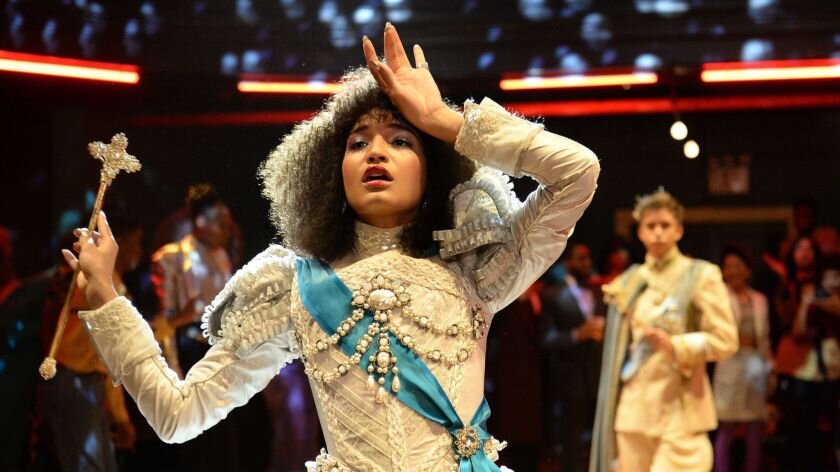
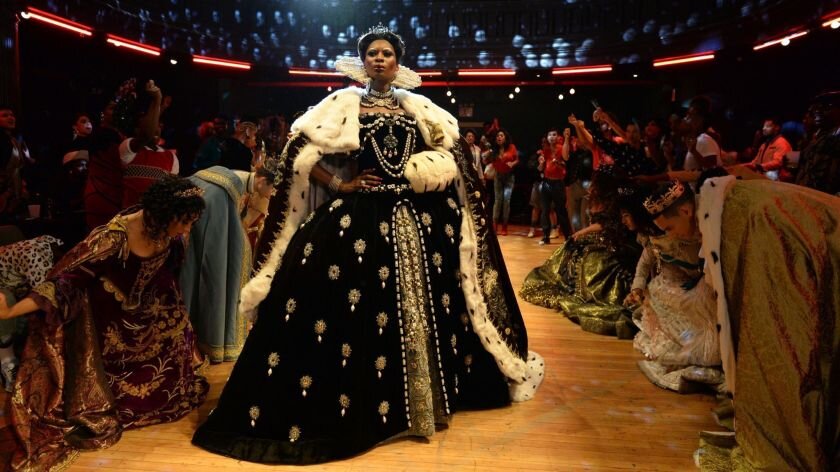
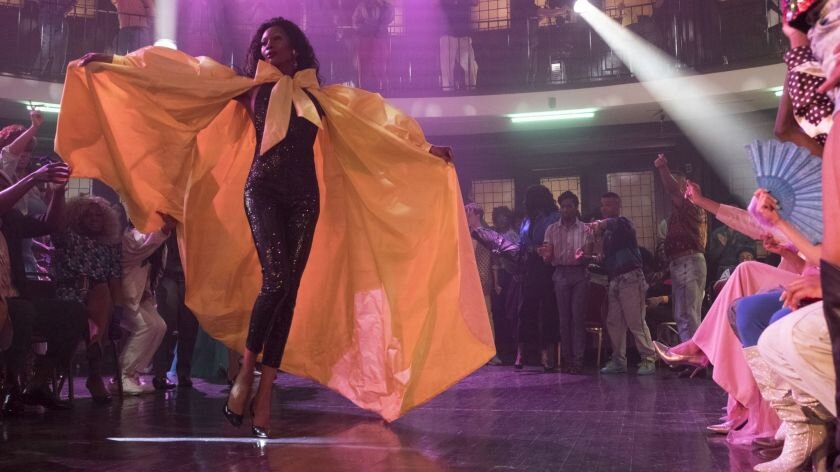
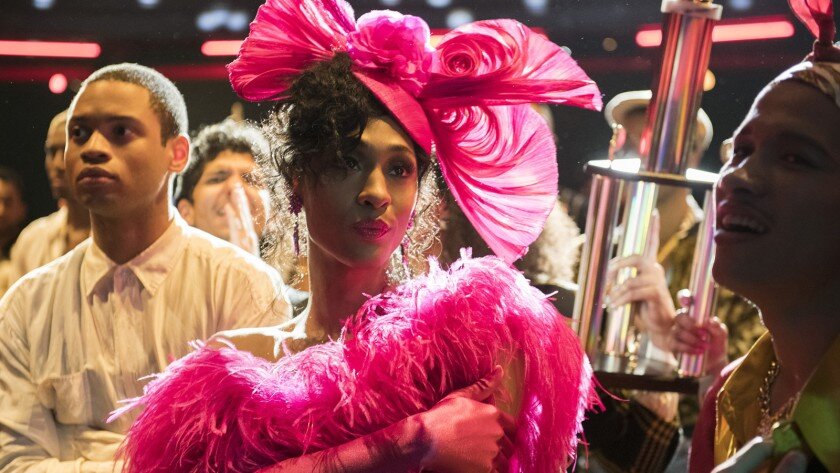
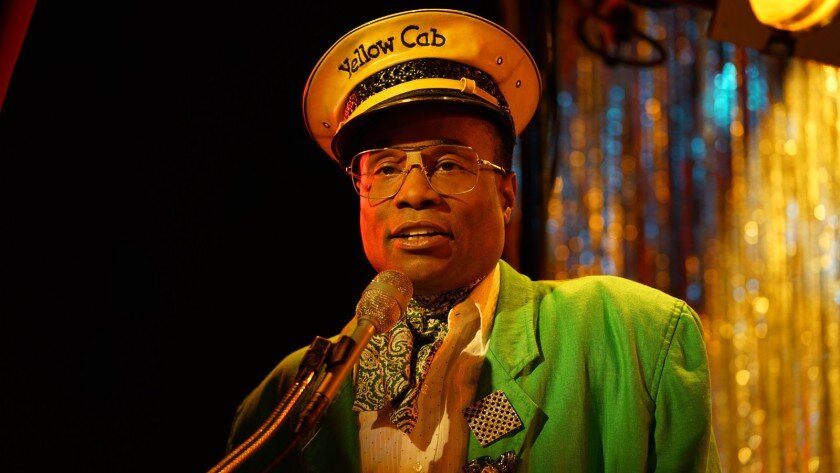
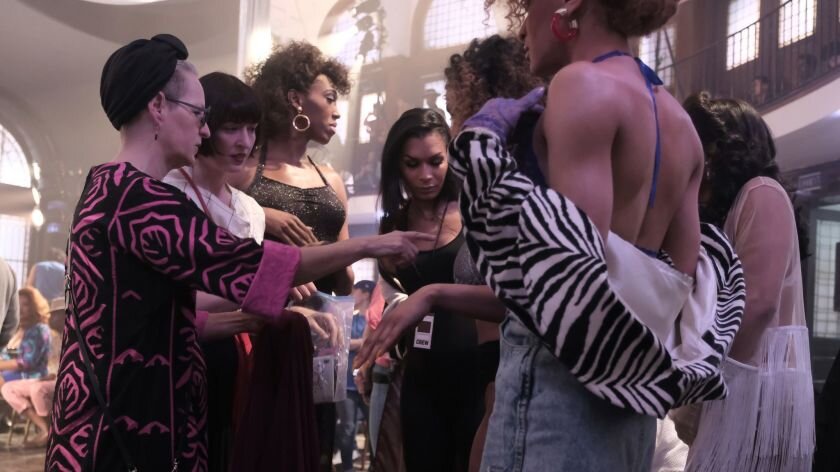
LA Times – Cameron Silver, owner of Decades on his personal trove of designer & vintage menswear
By MELISSA MAGSAYSAY
AUG. 24, 20185 AM
He’s been called the King of Vintage and the Duke of Melrose, but Cameron Silver’s various monikers come down to one thing: a voracious appetite for extraordinary designer clothing that captures the time and culture in which it was created.
His store Decades, on Melrose Avenue since 1997, has been a capsule for vintage clothing — once owned by celebrities and socialites and plucked from auctions and estate sales — that find new owners and closets to call home. Dozens of designers have frequented the store to gather inspiration and direction from the archives.
After years of amassing pieces, Silver has acquired an impressive collection of vintage and designer menswear for his own wardrobe. As a friend and muse to designers from Clare Waight Keller to Haider Ackermann, he has had front row and behind-the-scenes access to significant menswear collections.
Twenty years into owning Decades, and busy with his current post as fashion director of the H by Halston and H Halston brands, Silver has embarked on another project, albeit a more personal one. He has decided to curate a sale of a large portion of his belongings.
“I wanted to find pieces that, whether they were vintage or I was buying something of the season, represented the zeitgeist of the season,” Silver says of his method for collecting clothing during the past 20 years. “Sometimes I just wanted to have the pieces because I knew [they] would be a great photo opp. I’m very lucky I have great access to clothes. And I had relationships with designers, so many pieces were runway samples that they were happy to see live not just in a magazine or in an editorial but on an actual human being. With access came excess.”
Inside Decades on a recent summer day, racks and racks of Silver’s personal archive are a timeline of men’s fashion and a creative arc of some of today’s most revered designers. There are plenty of one-of-a-kind pieces, including a black Paco Rabanne cocoon-like top with tentacle-like details made for an opera and a shimmering pink Versace for H&M suit that Silver wore to a gala for the Museum of Contemporary Art, worthy of a true peacock moment.
“I’ve been a muse and amusing to many designers,” Silver says jokingly, “because I was the guy who was not afraid to wear something a little over the top. Now, it’s no big deal. You see a lot of celebs dressed like I am today.”
There is a noticeable amount of Jean Paul Gaultier, Gucci and Saint Laurent in the mix. A black wool Céline cape isn’t far from a fur-lined robe that Silver picked up on a trip to Riyadh, Saudi Arabia. However, the lot excludes the items given to museums and those that Silver just couldn’t part with, such as a rare men’s smoking coat that Cristóbal Balenciaga made for his business partner.
“What’s amazing with these clothes is there’s photos of me wearing all of them. They all have a backstory,” Silver says of the pieces being sold. “The clothes were all worn in very happy times, and it’s nice to pay it forward.”
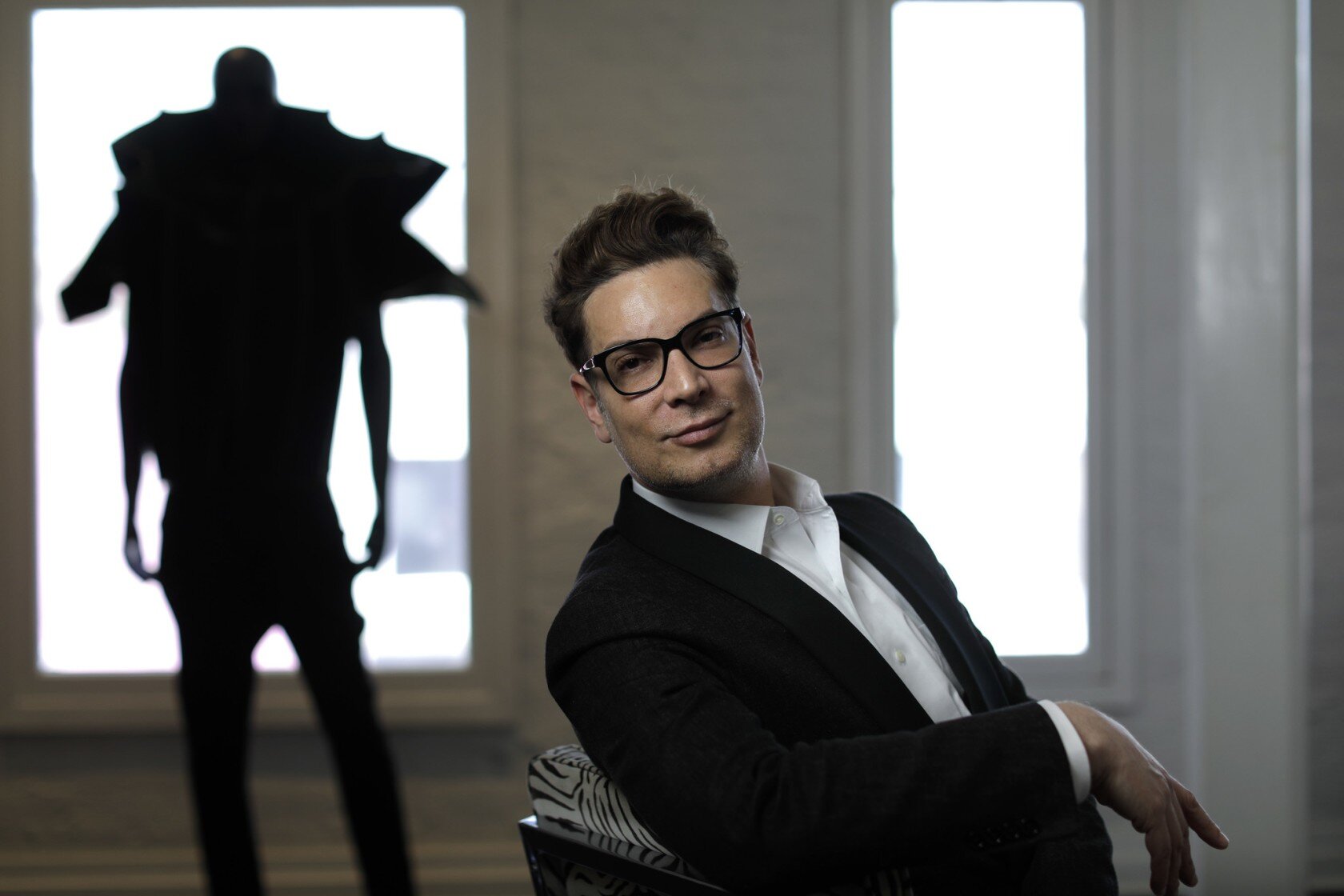
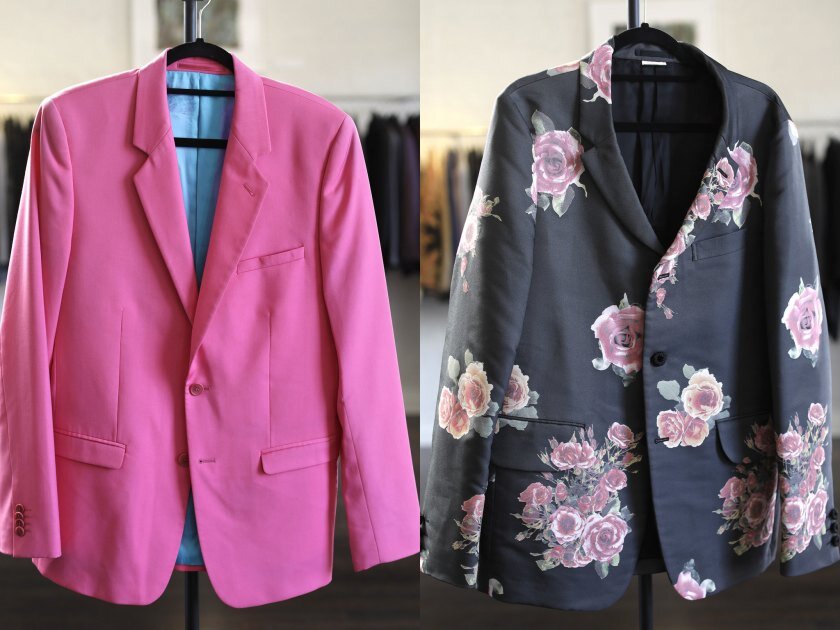
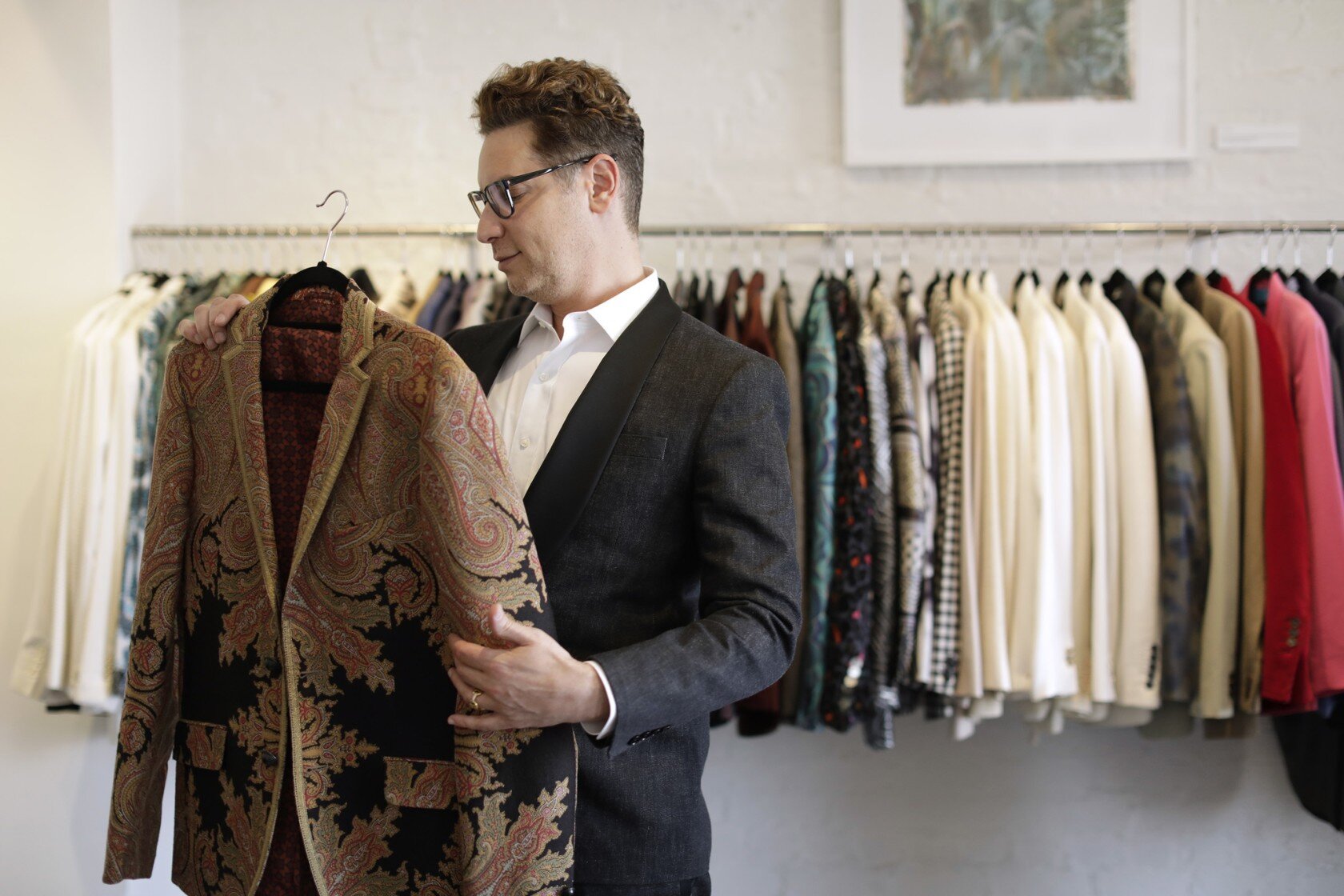
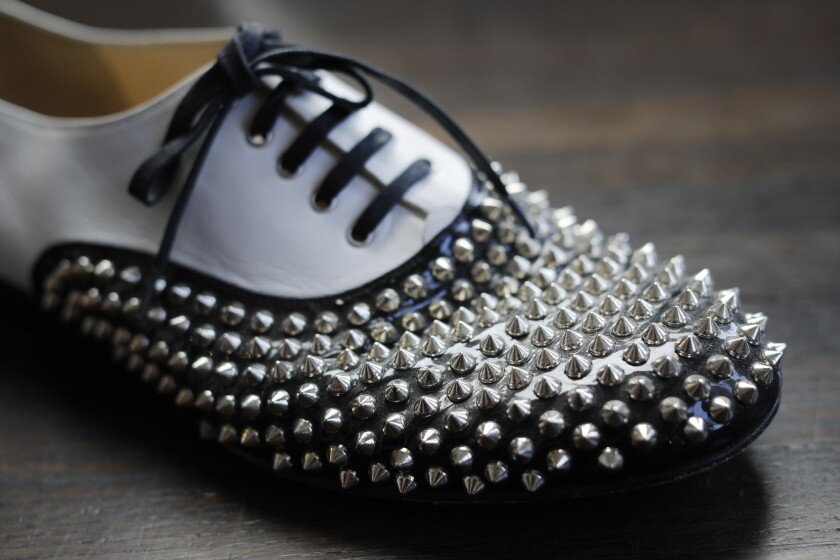
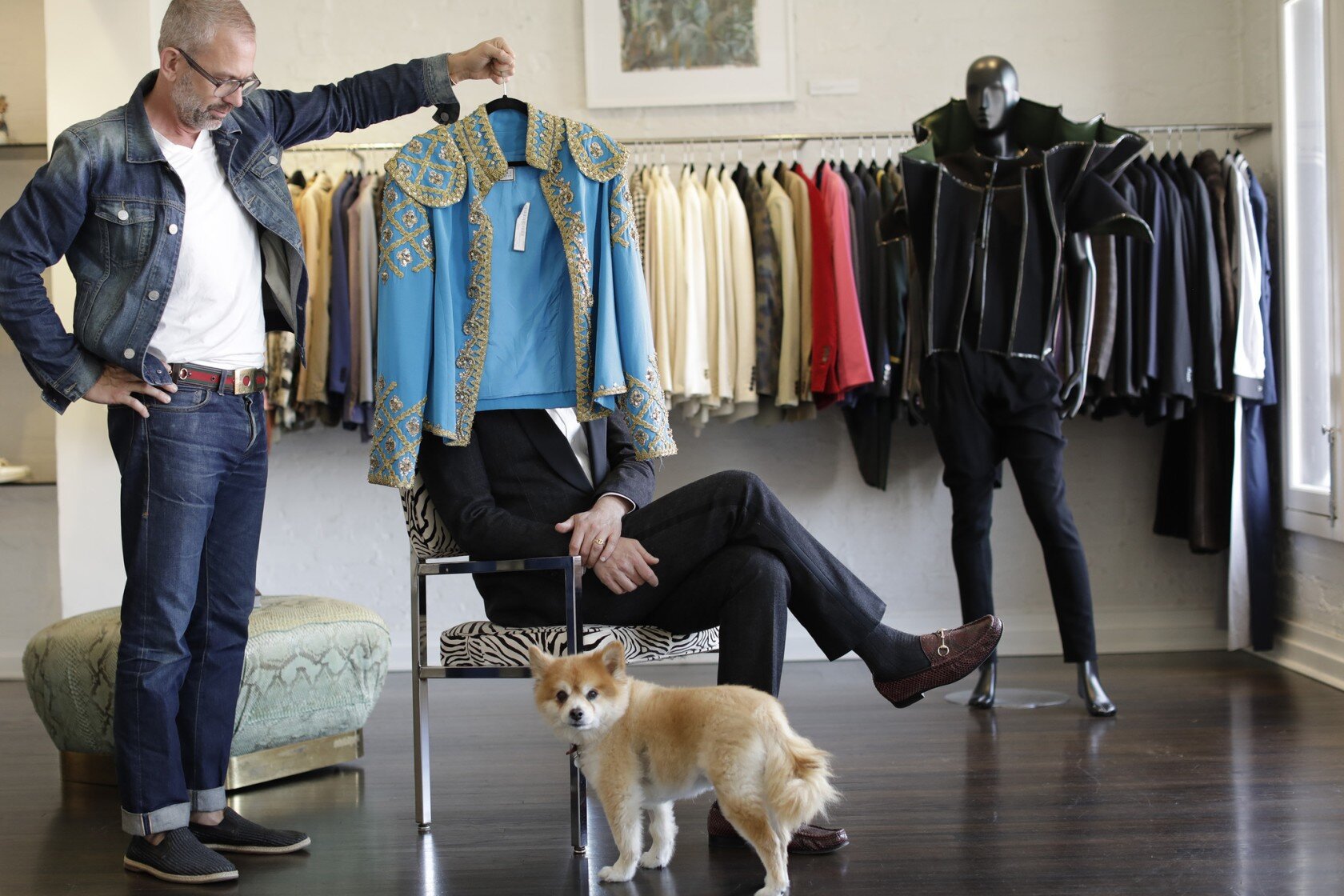
LA Times – Beauty chain Bluemercury on L.A.'s skin-care-obsessed culture
By MELISSA MAGSAYSAY
OCT. 20, 2017
In the age of digital shopping, Barry Beck, co-founder and chief operating officer of upscale beauty chain Bluemercury, is going another route. He’s betting big on brick and mortar — and Los Angeles plays a starring role in all of it.
In 1999, Beck opened the first Bluemercury store in Washington, D.C., where the company is based. Bluemercury, now owned by Macy’s Inc., has 153 stores in 25 states, competing with beauty brands such as Sephora and Ulta Beauty.
Beck says he believes there is major potential for the chain to become a ubiquitous upscale neighborhood drugstore. Think a fancy 7-Eleven for Angelenos looking to pick up a Tom Ford lipstick or Acqua di Parma aftershave balm on the go.
“I’m going to blanket Los Angeles with stores,” says Beck, citing the City of Angels as a key market for growth, on a fall morning from the pristine, product-filled interior of Bluemercury’s Sunset Plaza location. “I’m in the neighborhood business, and there are so many incredible neighborhoods in L.A. I think I could open 100 stores here.”
There are 12 Bluemercury locations in Los Angeles with two more scheduled to open by early 2018, including a flagship location at 8500 Melrose Ave. in West Hollywood next month.
And what’s behind Beck’s desire to expand in L.A.? Turns out the prestige cosmetics industry is thriving regardless of the dramatic shifts in how people are shopping. In 2016, prestige beauty products purchased in specialty or department stores totaled $12.8 billion in sales nationwide, according to a report by market research company NPD Group.
For Bluemercury, clean beauty and men’s grooming and cosmetics are particularly strong areas of growth in the L.A. market. In 2012, Beck created a clean skin-care line called M-61 in part because of the buying power and interest in natural products of L.A. shoppers. In addition to M-61 and the brand’s in-house makeup line, Lune + Aster, there are designated sections in Bluemercury stores dedicated to clean beauty, or chemical-free products. Currently, the PowerGlow Peel pads from M-61 are Bluemercury’s most popular item with one box sold every eight seconds, according to Beck. They are used for blemishes and usually next to La Mer and Jo Malone products in most Bluemercury stores.
Beck says having a curated prestige beauty store on as many corners as there are Starbucks locations might appear aggressive. However, he thinks L.A. residents are forward-thinking customers with an advanced knowledge of clean beauty and men’s grooming. Also, he says, the needs of many Angelenos vary because of the city’s unique culture, which includes beach life, entertainment and technology industries.
“Seventy-five percent of our Los Angeles customers all live within a one-mile radius of the store they frequent,” Beck says. “I’m always studying the data to see where the California clients are. They’re actually a little bit further ahead than the New York client. They’re chic like the New York client, but they’re always a little bit ahead of the curve. Clients here are trendsetters.”
Los Angeles shoppers are also leaders in the men’s beauty space. Beck says the new flagship store on Melrose will have an increased offering of men’s-related products beyond shower gel and shaving cream.
“For the first time in history, men are actually purchasing in the makeup category in a significant way, and it’s happening here in L.A.,” Beck says. “They used to come in for shower gel, shaving cream, shampoo, but now they’re buying bronzers, concealer, eyebrow gel.”
He attributes the surge to the strong selfie culture as well as the film and technology industries that thrive in the city. “They’re in the movie business,” Beck says. “They are doing a TED Talk. They’re going on CNBC. They’re going on Fox Business, and they know that they’ve got to purchase the makeup category. This is a big trend. … We’re going to be pioneering men’s in a big way at our flagship. We’re going to have a flagship men’s facial, which includes a beard treatment for guys.” Each Bluemercury location has a spa with various services featuring an extensive facial menu and waxing, microdermabrasion and makeup application.
The 2,500-square-foot Melrose flagship will feature a robust men’s section as well as naturals. According to Beck, it will also be a hub for digital innovation for finding and socially sharing beauty products.
Mirrors called Bluemercury Connect, he says, will be set up in the new flagship location. They are equipped with technology to tell a customer everything about a product including price, reviews and how-to videos. The mirror can also sync up to a smartphone and text customers product information so they can order items to be delivered to their home.
Beck says Bluemercury will be able to make mobile deliveries in L.A. in an hour or less similar to Amazon. Also, if customers allow a beacon to be placed in their mobile devices, their location for delivery can be tracked, and products will be brought directly to them.
“You might be in a situation where you say, ‘I’m at Melrose and Knoll’ or ‘I’m at the Beverly Hills Hotel and I need a fresh lipstick,’” Beck says.
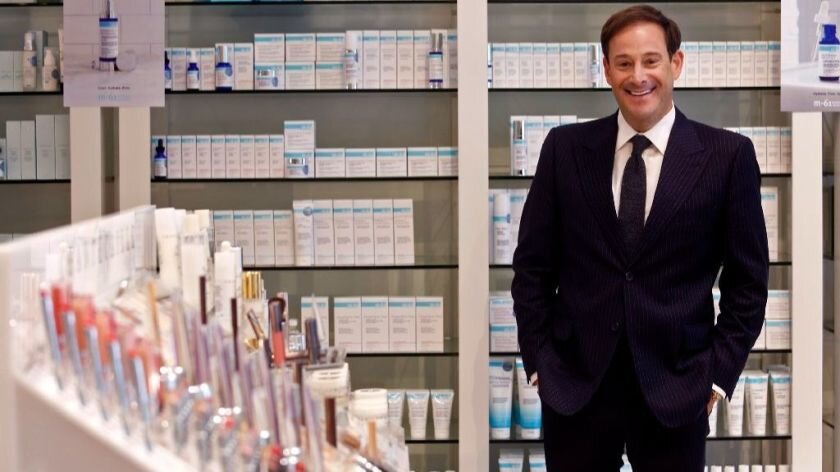
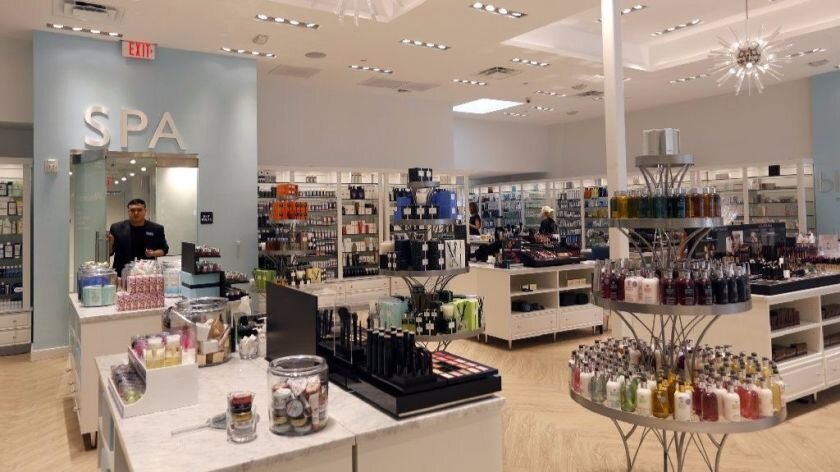
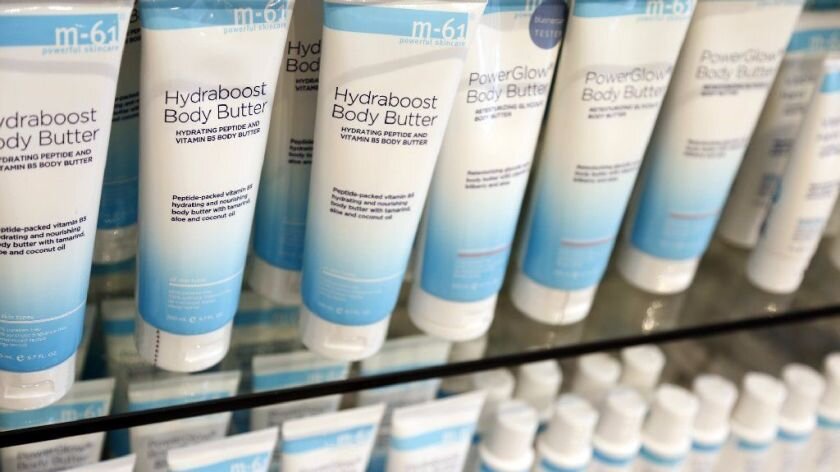
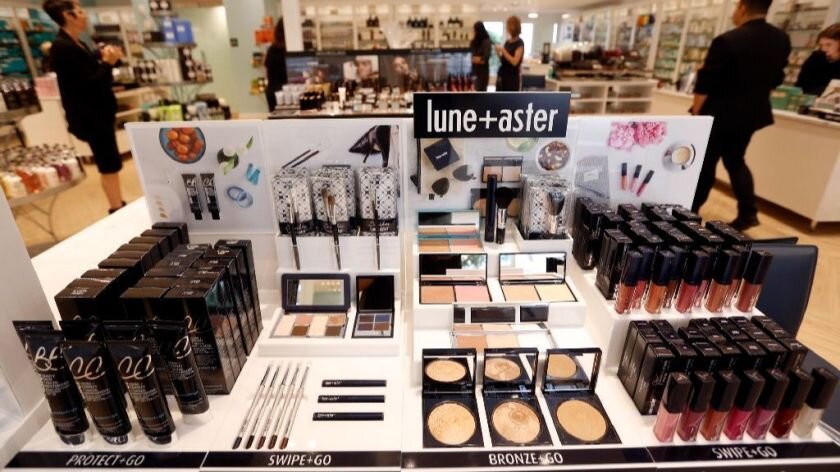
Hollywood Reporter – Bryce Dallas Howard's Guide to New Zealand
The actress, who just finished filming the 'Jurassic World' sequel, dishes on her favorite eateries, shops and hotels.
By MELISSA MAGSAYSAY
JULY 18, 2017
Plenty of actors and directors have experienced filming in the expansive terrain of New Zealand. After all, some of recent history’s most epic movies have been made there, including The Lord of The Rings trilogy, Avatar and The Piano. But few actors have as much passion and personal connection to the country as Black Mirror and Jurassic World star, Bryce Dallas Howard, who first visited at the age of 5 when her father, director Ron Howard, brought her along while shooting Willow. Since then, she has seen her association with the country come full circle, filming there, falling in love with the culture and now as the new tourism ambassador for New Zealand.
“Up until [visiting New Zealand with my dad] I had been raised in Encino and didn’t know anything different,” recalls the actress of her first trip to the country. “I have this extremely vivid memory of New Zealand as this expansive, shocking other world. It was like an idealized version of this planet, and it’s no shock that all these fantasy movies have gone there to shoot.”
Howard returned to New Zealand in 2015 to film Pete’s Dragon and was flooded with memories and a growing infatuation with the country. Several trips later, both solo sojourns and more recently with her kids, her sentiments have grown even stronger. She has her favorite places to stay, eat and shop nailed down, and manages to not only visit the hot spots, but also travel all over the country while there for vacation or during filming.
When asked what her “perfect” day in New Zealand would entail, Howard rattles off a thorough and thoughtful list of eateries and shops for local designer clothing in the capital city of Wellington.
“What’s really cool about Wellington,” Howard says, “is that it’s very artistic and extremely hip, but all about inclusion.”
Howard prefers to stay at the centrally located QT Museum Wellington hotel, which was was originally owned by an art collector and showcases plenty of gallery-worthy pieces.
“I should try other hotels, but I love [QT Museum Wellington] so much, I’ve probably stayed there four or five times,” she says. “It’s also across the street from a place called Harbourside Market which is like the Santa Monica Farmers Market times three, with food trucks everywhere, and it’s on a harbor so there’s boats and it’s just beautiful.”
She visits the market daily while there and assures that shopping for locally made and designed clothing and objects also ranks high on her list.
“From the wool to the Manuka honey in New Zealand, there are a lot of specialties and you’re seeing things that you aren’t seeing anywhere else,” Howard adds. “There are a lot of fashion designers there who have really big followings and amazing vintage stores.”
Her two favorite shopping haunts are Good as Gold, a boutique with streetwear and contemporary clothing from a range of labels like Levi’s and Los Angeles-based Hansel from Basel, to Wellington’s own Kowtow and Melbourne-based skate-inspired line, Perks and Mini. A vintage store called Hunters and Collectors is Howard’s other shopping go-to for a treasure trove of finds, from 1980s Dior to current-day Dr. Martens boots.
In between shopping and eating, Howard gets her favorite Flat White coffee from one of two local spots, either Flight Coffee or Havana Coffee Works, grabbing what she confidently calls, "the best coffee in the world."
"Sometimes they say the coffee tastes different given the water and New Zealand has some of the best water," she says. "They also take a lot of pride in their coffee, because they’re so known for it."
The robust culture, from fashion to the farm-to-table food and the coffee shop scene, comes as no surprise, Howard says. “It’s a very creative country, full of entrepreneurs, creatives and artists. But what inspires me most is the purity of intention there that feels like the experience of New Zealand is about experiencing New Zealand. The priorities seem to be straight and you always leave feeling excited about the most important parts of life. I know there is no such thing as having it all, but this is in a way. It's the best example of having it all I’ve ever seen.”
She has applied her love for New Zealand, plus her cinematic skills, to a project made in part with National Geographic Travel. The result is a six-part series of videos detailing Howard’s perspective on the country and the vast landscape. The exercise has gotten the actress excited about returning to New Zealand to film either in front of or behind the camera.
“There is no question I would be back there to film,” Howard says. “I just want to follow in James Cameron’s footsteps and make a million movies there.” She mentions the traditional Maori ceremony done before filming at each New Zealand location. “It’s a very soulful, haunting experience,” Howard adds of the Powhiri ceremony. “Once the ceremony is done the two groups [locals and film crew] are considered one. It’s welcoming and brings everyone in, while also staying very centered in the truth and the authenticity of what the culture represents.”

LA Times – Jenni Kayne elevates California style
By MELISSA MAGSAYSAY
NOV. 3, 2017
Los Angeles native Jenni Kayne debuted her self-named collection of sequined skirts and silk separates in 2003. Today, Kayne, 35, has five free-standing stores in California with a sixth set to open in New York later this year. Her stores are where a full scope of items conveying a modern-day coastal lifestyle can be found.
Why She Matters
Kayne has never strayed from her Los Angeles roots, elevating basic pieces like cashmere wool coats and sweaters, shirtdresses and wide-leg trousers season after season much to the delight of her celebrity following. She has expanded her brand to include her passion for interior design, cooking and family while documenting her life and offering tips and profiles about women who inspire her on her blog, Rip & Tan. She frequently collaborates with brands such as Parachute (home), Pottery Barn Kids, Marysia (swim), Solly Baby, Earth tu Face (beauty) and Linus (bicycles) to spread her laid-back-yet-luxurious look into categories beyond fashion.
Collection Highlights
Kayne debuted the D’Orsay flat shoe in 2006, and the style became a go-to alternative to the ballet flat. The shoe is still a bestseller from her collection, as are cashmere fisherman sweaters and yak and wool sweater coats.
In a move opposite to what most fashion brands have been doing, Kayne has relocated the production of her collection from overseas to Los Angeles — while also choosing to lower her retail prices by 30%. (Kayne’s line ranges from $60 for a candle from her home line to $625 for a fur-trimmed jacket.)
“I felt that because most of my business is my own line, I had an opportunity to lower my margin and to try and find better manufacturing that was local,” says Kayne about her decision. “I lowered my price point in order to be more transparent to the customer but also because I wanted to be able to be on more women. We found that a lot of women that work with us that were in their 20s and 30s, maybe couldn’t afford as much Jenni Kayne as they wanted to wear, and I wanted to be on those girls. I just wanted to be more accessible.”
Her line is mostly produced in Los Angeles with the exception of her shoes, which are made in Italy, and her home collection, which is being made in a women-owned-and-run factory in Peru.
In The Studio
Whether it’s the thoughtfully curated tabletop decor at a dinner party in the Santa Monica Mountains or meandering through any of the Jenni Kayne concept stores, there is an obvious throughline inspired by easy, healthy and laid-back California living that informs how the designer does everything.
“My inspiration for design and for the way that I live my life is always through a California lens,” says Kayne, whose studio and corporate office are in Beverly Hills. “I think it draws from nature and landscape and a laid-back way of life that’s all about living well.”
Her approach to everything from style to vitamin supplements is well-documented on her blog and has also landed the designer events with Martha Stewart and features on organizing and crafting on the Martha Stewart website.
“I always say the most important things to me are what you put in and on your body,” Kayne says. “Whether it’s your face and body products, what you’re eating, all of the supplements you’re taking, to the clothes that you’re wearing to the table setting and the accessories in your home, it’s all equally as important. I think it’s all one. That’s how I see it.”
Now that wellness is the new luxury, most of anything Kayne creates embodies the California life that resonates from Japan to Germany as aspirational.
Where she Finds Inspiration in L.A.
• Sullivan Canyon Preservation Assn. stables
• Hiking in Mandeville Canyon in Westridge
• Hammer Museum
• Los Angeles County Museum of Art
•The beach
• Galerie Half



LA Times – Anita Ko uses diamonds and gold to tell designer stories about L.A.
By MELISSA MAGSAYSAY
NOV. 3, 2017
In 2006, Anita Ko, a Los Angeles-born jewelry designer, started her high-end brand, which has become a favorite for celebrities such as Rosie Huntington-Whiteley, January Jones and Miranda Kerr. Fans of Ko’s work generally appreciate the ultra-feminine quality of the diamond and gold pieces. (Ko’s line ranges from $400 for spike studs to $100,000 for custom pieces.)
Themes of Ko’s collection, including the panther, leaf and stud motifs, are ubiquitous among women who want aspirational jewelry that’s easy enough to wear every day.
Why She Matters
Raised in the Pacific Palisades, the first-generation Korean American, 42, captures the vast look of L.A. in her jewelry. Sometimes edgy but always pure luxury, Ko’s pieces, ranging from ear cuffs to pinky rings, have the grit and the glamour of Los Angeles’ style and influential subcultures.
“I have a clear idea of what my aesthetic is and I was lucky enough to grow up in Los Angeles and be influenced when driving on Sunset and Doheny and seeing the punk rockers to seeing the rich ladies at the Polo Lounge,” Ko says. “I got to experience the Mexican culture. I got to experience the wealthy, affluent Westside culture. … So I think that all of those influences together kind of made up my aesthetic. And I really try to design jewelry that I want to wear, that my friends want to wear, to go to a business meeting, to go to dinner to go to the supermarket, to go to sleep.”
Collection Highlights
Ko’s rose gold-and-diamond leaf motif is often worn by celebrities as a ring, pendant or bracelet. Her delicate spike pieces are also top sellers because of their contrasting look with the fine materials. Also, Ko has deviated from working exclusively with diamonds and has included emeralds and rubies set in opulent cocktail rings.
In The Studio
Although Ko’s life in L.A. has included many pockets of the L.A. area, she works from an office at the border of West Hollywood and Beverly Hills, a convenient location so stylists and celebrities can easily drop in to see and borrow her jewelry. Her days flying back and forth to New York for sales appointments with retailers tend to be few and far between. That’s because during the last couple of years representatives for most of her retail accounts travel to L.A. on a regular basis, she says.
“I always had to meet them in New York before. Now they’re in L.A. every quarter,” says Ko about the increased attention being put on L.A. designers from retailers.
Ko’s production has always been L.A.-based, starting back when she began tinkering with jewelry-making at 14. “I would ask my dad to just drop me off in the jewelry center,” she says. “Even then, I was making my own fine jewelry. I was never into costume.”
Once she started her line, she experienced the challenges of starting a fine jewelry brand in what has traditionally been a heritage business.
“It is still male-dominated,” says Ko about the jewelry industry. “I had many people in the business try to charge me higher prices. When I first started people looked at me like a kid, a little girl trying to do jewelry and probably wouldn’t be in business next year. I think that there are probably seven or eight of us females that are taken really seriously at the jewelry shows because we’ve built bigger businesses and we deal with the majors.”
Despite early challenges trying to become an established jewelry brand, Ko remains clear about the look of her pieces and who she is designing them for.
“I design for women,” she says. “And I can design for what I want to wear. That’s where we win a little bit over the male jewelry designer because we’re designing for our client. We know who she is. We know how she’s going to wear it, layer it and live in it.”
Where She Finds Inspiration In L.A.
• The Haas Bros.
• Blum & Poe gallery
• Libertine
• e. baldi in Beverly Hills
• Koreatown Galleria
• Wally’s Wine & Spirits wine bar in Beverly Hills
• Govinda’s Buffet at the International Society for Krishna Consciousness’ Los Angeles temple



Hollywodd Reporter – Bobbi Brown's New Beverly Hills Boutique
Who doesn't want that sunset glow?
By MELISSA MAGSAYSAY
AUG. 3,2016
Makeup artist Bobbi Brown’s new store is a welcome respite from tourist-clogged Beverly Hills — not just for the calm atmosphere, but because the store is designed to help people shop for makeup and skincare without the clutter so common around the experience of buying beauty products these days.
Which makes perfect sense since Brown herself is synonymous with straightforward beauty and providing women with the right products and tutorials to get them feeling pretty without a lot of fuss.
Of course, there is still plenty of glamour happening here, in her second freestanding retail store in the U.S. (the first is located in Montclair, NJ, where Brown lives).
The 560-square-foot interior is organized into easy-to-navigate sections to make buying easy. Eyes, lips, cheeks, brushes and skincare are clearly marked, and are their own little destinations to discover. Next to the register, you'll find the new Sunset Pink collection, including pink-toned cream shadows ($28), cheek tints ($28) and tinted glosses ($23) designed for achieving a Southern California appropriate "sunset glow."
Other limited editions for summer? Lip collections (a box includes gloss, lipstick and a matte finish Art Stick) in melon pink or classic nude. "The nude has been very popular," a store associate and makeup artist tells The Hollywood Reporter.
Another product that has been a hit is the bronze highlighting powder ($46), which according to the same sales associate has been flying out of the store since Kylie Jenner posted the shimmery palette on her Snapchat last Thursday. (Only in Beverly Hills.)
Brow shaping, grooming and makeup application tutorials are available on site, and a concierge is available to schedule events and in-home services for groups or parties.
Brown herself is expected to appear in the store this October for the Studio’s official grand opening, imparting some of her time honored beauty advice to her West Coast fan base.
Bobbi Brown, 9497 S. Santa Monica Blvd., Beverly Hills; 310-275-4650; bobbibrowncosmetics.com


LA Times – Maryam and Marjan Malakpour bring soles and soul to L.A.'s fashion scene
By MELISSA MAGSAYSAY
NOV. 3, 2017
Sisters Maryam and Marjan Malakpour are accessories designers and power stylists (Maryam, 49, has styled members of the Rolling Stones and Heidi Klum, while Marjan, 51, has worked with Shakira and Demi Lovato.) The duo launched footwear and accessories brand Newbark in 2009 with an alternative to the ballet flat, a Middle Eastern babouche-inspired soft slipper that could be stowed easily in a work bag and move seamlessly from the office to travel or leisure. (Newbark selections range from $295 to $695.) Several styles of Newbark bags came next as did a spot as a CFDA/Vogue Fashion Fund finalist in 2016 as well as a collaboration with fashion brand Theory earlier this year.
Why They Matter
When Newbark launched eight years ago, sky-high stilettos with a platform footbed from brands such as Christian Louboutin and Jimmy Choo led footwear trends. The Malakpours bet on flat shoes with an androgynous aesthetic, placing them on clients and themselves with fishnets and socks or worn with just about anything everyone had previously been pairing with platform heels. (Keith Richards has worn several of the sisters’ slip-on styles, and Newbark launched a men’s collection for fall.)
Several years later, flat and practical shoes such as Adidas Stan Smith, Nike Cortez, Birkenstock clogs, Gucci loafers and mules of all types have brought fashion down to earth, and the styles are being worn with maxi dresses, wide-leg jeans and gowns. Newbark continues to produce all of its shoes in Los Angeles, working with manufacturers who make most of the styles by hand.
Collection Highlights
Newbark’s Melanie loafers and Yasmin shearling slides stand out as unique among a sea of Gucci mules and loafers popular for the past several seasons.
In The Studio
“L.A. was mostly denim and T-shirts when we started. So to have a luxury brand like Newbark come out of L.A. and be produced here kind of opened up a lot of eyes,” says Maryam about the majority of brands coming out of Los Angeles at the time.
From the look of their Hollywood studio, strewn with black-and-white Newbark shoe boxes ready to be shipped and mood boards peppered with images of Mick Jagger, ’70s supermodels and classic jazz shoe silhouettes, it’s clear that there is a rock ’n’ roll element that informs everything the Malakpour sisters touch.
They have added a classic rock vibe to L.A.’s denim-and-T-shirt culture where now it’s cropped jeans worn with a vintage T-shirt and cognac eel-skin Newbark loafers favored by celebrities and fashion insiders.
Althought flat shoes are having their moment now, it was Natalie Massenet, Net-a-Porter founder and co-chairman of Farfetch, who championed Newbark early on.
“I was in Paris for fashion week and literally had the shoes in a little duffel bag. I didn’t realize who she was at the time, but Natalie came up to me and said, “Hi, how are you? We used to work together in L.A.,’” Maryam says. “The next thing you know, we’re all sitting together at the Hemingway Bar at the Ritz, and a friend of mine urged me to show Natalie the shoes. I explained to her what we were doing. She loved the whole thing. So the next day I went and met the whole team, which were all women. She launched us with the first order of 500 pairs. Our little artisan shoemaker and a few people helping him in downtown L.A. did the entire first order by hand.”
Where they Find Inspiration In L.A.
• Maxfield
• Los Angeles County Museum of Art and its Wear LACMA program
• DOSA
• Garde gift shop



Hollywood Reporter – Actresses Wear the Pants on the Golden Globes Red Carpet
"Tonight is about women wearing the pants, and I chose to literally wear the pants," said Alison Brie.
By MELISSA MAGSAYSAY
JAN. 7, 2018
“Tonight is about women wearing the pants, and I chose to literally wear the pants,” stated The Post actress Alison Brie when asked about her Golden Globes ensemble.
It’s the closest any star came to divulging fashion details (such as the designer) on the red carpet this evening, with women choosing instead to keep full focus on the message of the Time's Up movement.
Brie’s choice to wear pants — a sweetheart-neck bodice with full skirt that fell over tailored trousers – was also made by several other actresses, including The Crown's Claire Foy, Alexis Bledel of The Handmaid’s Tale, Ladybird’s Laurie Metcalf, Christina Hendricks, Maggie Gyllenhaal, Debra Messing and Lena Waithe.
Their looks ranged from Foy’s sleek double-breasted blazer and wide-leg trousers from Stella McCartney, to Bledel’s embellished black-and-white strapless top with leaf motif and pants by Oscar de la Renta.
While the sea of black to signify the solidarity of Time's Up has gotten a lot of attention, the significance of pants dates back to old Hollywood trailblazers Marlene Dietrich and Katharine Hepburn, who consistently and controversially sported trousers during the 1930s and 1940s before it was socially acceptable for women to wear that garment in public. (At least we've made some progress since then.)
Hepburn most famously appeared in pants in 1943’s The Philadelphia Story, a look that has been well mined by designers and by women seeking strong, timeless inspiration.


LA Times – Jo Malone London brings a Brit spirit & personalized scents to Beverly Hills
By MELISSA MAGSAYSAY
NOV. 17, 2016
What would Los Angeles smell like if it were bottled as a fragrance? According to British model and singer Karen Elson, the City of Angels would smell like a sparkling and refreshing adaptation of lime.
Elson would know. After decades of modeling and serving as the face of various beauty brands, she has been named the latest Jo Malone London Girl, joining model and fashion fixture Poppy Delevingne.
“L.A. has got that sort of freshness to it with all of the lime trees,” said Elson, speaking from the garden of the Chateau Marmont, a favorite haunt since she began her modeling career 21 years ago. “It’s the first thing that comes to mind, that heavenly mix of citrus. You do so much entertaining outdoors and at nighttime, and that fresh, citrusy scent makes sense to L.A.”
It was no surprise she favored wearing Jo Malone London’s Lime Basil & Mandarin fragrance while staying in Southern California — this time to make her debut as the newest brand ambassador as well as host a dinner, along with Delevingne, for friends and influencers in a bungalow at the hotel.
The event also marked the opening of the new Jo Malone London boutique in Beverly Hills, the first in Los Angeles, and the country’s largest to date.
Inside, customers will find the extensive scent library from Jo Malone London, plus the ability to personalize scents, engrave perfume bottle caps and receive hand massages using the brand’s popular scented lotions. The ivory-and-black color motif and traditional Georgian townhome interior, hallmarks of the brand, fill the Brighton Way boutique.
Elson referred to many aspects of the brand as “quintessentially British,” specifically fragrance notes of bluebell that remind her of growing up and playing outdoors. She also mentioned the popular Red Roses perfume as well as the Orange Bitters scent in the holiday collection.
“It’s very personal,” said Nashville-based Elson about the opportunity she has to collaborate with the brand. “I’ve worked with a lot of different companies, and this is by far the most personal relationship I’ve had with a beauty company in a very long time.”
Elson’s personal style and creativity was on display at the Jo Malone London dinner last month. The model chose the Chateau Marmont for the location and hand-picked the musicians, her close friends Rain Phoenix and Frally Hynes of Venus and the Moon, and DJ Tennessee Thomas.
Fellow Brits Annabelle Wallis, Delevingne and Fuschia Kate Sumner were also in attendance.
“There is a lot of individuality” to the Jo Malone London brand, Elson said. “It’s not just about one fragrance.”
On that note, Elson went from Wild Bluebell cologne in the daytime to the Lime Basil & Mandarin fragrance later. And for evening, it was the Velvet Rose & Oud Dry Body Oil, inspired perhaps by the deep burgundy velvet Diane von Furstenberg dress she wore to her celebratory dinner.
Jo Malone London, 9621 Brighton Way, Beverly Hills, www.jomalone.com
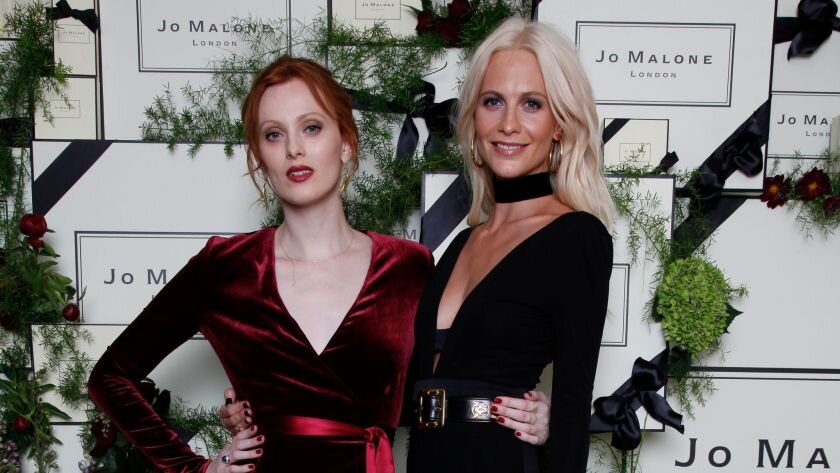
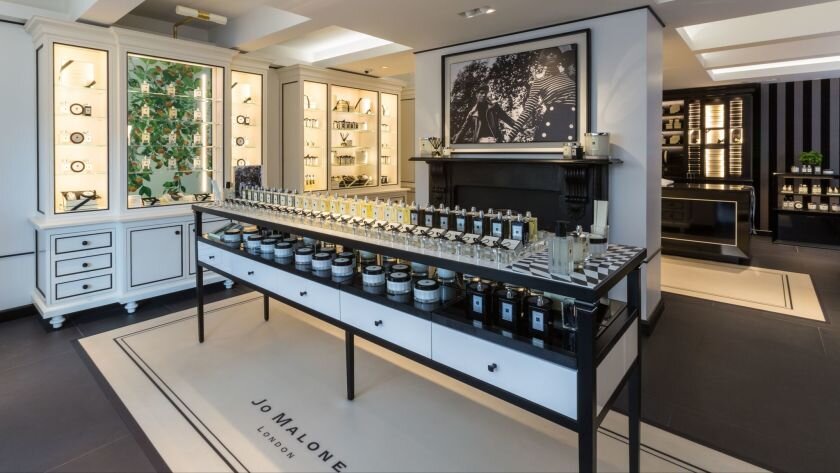
LA Times – Beatrice Valenzuela brings her heritage & love for L.A. in her signature collection
By MELISSA MAGSAYSAY
NOV. 3, 2017
Designer Beatrice Valenzuela, co-founder of the Echo Park Craft Fair, has been championing the creative spirit of Los Angeles’ Echo Park neighborhood by celebrating local artists and designers for years. In 2009, the longtime Eastside resident launched her self-named line of sandals, and recently, she added a ready-to-wear women’s collection of vibrantly colored dresses and bold floral prints reminiscent of her Mexican heritage.
The year she started her line, Valenzuela, 36, invited several designer friends to gather for wine and cheese and to trade their products, which included moccasins and handmade jewelry. That little gathering has blossomed into the twice-a-year Echo Park Craft Fair, which has 150 vendors and more than 6,000 attendees who shop for locally made fashion, home and beauty products.
Why She Matters
Valenzuela embodies the free-spirited nature inherent to Los Angeles while incorporating the community directly around her as well as her upbringing in Mexico, L.A. and Paris. Her designs reflect a rawness that still coats the Echo Park area but with an ease and modern refinement that appeals to busy, creative women.
Collection Highlights
Her Sandalia is a simple slide sandal made with a sculpted foam sole and lambskin leather uppers that cover just the top portion of the foot. The silhouette is like a pool slide but made from leather. It comes in colors such as turmeric, lavender and olive green.
The Sandalia has been Valenzuela’s biggest hit, selling locally at General Store and abroad at Beams in Japan. The idea came to the designer out of necessity when she was looking for an easy slip-on shoe that she could wear for any occasion.
After giving birth to her second child, Valenzuela wanted a slip-on sandal that was more presentable than an Adidas pool slide. She purchased cork soles and found some foam leather and a wrap cord and put it all together with glue and clamps.
“I just made a prototype for myself that I wore all the time because it was the easiest thing for me to slide on,” Valenzuela says. “I started wearing them out and every girl was like, ‘Wait, what are those?’”
She now manufactures her entire shoe line at a factory in downtown L.A. A newer sandal called Conder Valenzuela, a leather style with a thick band across the foot and a toe strap, is a collaboration with her longtime partner, furniture and hardware designer Ramsey Conder, who made the brass buckles on each pair sandals.
In The Studio
In Valenzuela’s eclectic Echo Park home, the bright blue and orange of the kitchen tile and the vivid pink of the throw pillows are directly reflected in the dresses, blouses and skirts that hang from a rack in her living room. (Valenzuela’s line ranges from $240 for sandals to $1,060 for select pieces of ready-to-wear.)
“I love color and I wasn’t finding the colors out there,” says Valenzuela about the hues found in her ready-to-wear line. “It’s from my Mexican heritage. It’s so in me.”
The collection is largely dresses that are undeniably feminine and party-ready. Many have ruffle details on the strap or cascading down the skirt. The bougainvillea dress has vertically flowing ruffles over the entirety of the garment and reminds Valenzuela of the bright, climbing plant ubiquitous in Mexico and Los Angeles.
“It’s just another way to add a little more flare and also bring my ethnicity and my flavor to it,” Valenzuela says about the ruffle details and colorful fabrics.
She departs from bright color when it comes to more basic pieces such as a cotton jumpsuit, button-down blouses and a linen menswear-inspired suit with a high waist, full leg and short jacket reminiscent of a zoot suit. “The suit is a nod to the Mexican American Pachucos,” Valenzuela says. “To me, I think about if I could wear my grandfather’s suit, it would be this.”
Where she Finds Inspiration In L.A.
• Cactus Store
• Officine Brera
• Echo Park Lake
• Echo Park Craft Fair
• Alejandra’s quesadillas (usually at the southwest corner of Echo Park Avenue and Sunset Boulevard in Los Angeles)



LA Times – Emily Current & Meritt Elliott offer a ‘worn and worked’ vibe
By MELISSA MAGSAYSAY
NOV. 3, 2017
Stylists-turned-designers Emily Current and Meritt Elliott, both 40, consistently use a vintage Americana aesthetic in their contemporary women’s clothing brand, elevating and modernizing the theme to infuse their label as well as their ongoing interior decor collaboration with Pottery Barn.
Before launching the Great in 2015, Current and Elliott were with Current/Elliott, the fashion label they started in 2008. At Current/Elliott, the duo began making tomboy-inspired silhouettes to disrupt the denim market, which, at the time, was focused on jeggings, or denim-like leggings. The designers parted ways with Current/Elliott’s parent company in 2012, citing the desire to pursue other creative endeavors, including starting the Great.
Since then, the designers have been on a roll, putting their whimsical and nostalgic twist on nursery bedding, diapers, premium denim and, most recently, a line of leather boots.
“We’re trying to make best friends for your closet — like the jean that you always grab, the jacket you always grab,” Current says.
Why They Matter
With the Great, Current and Elliott created a brand that’s not influenced by trends — or the runway. Their label is inspired by nostalgia and the well-worn nature of vintage pieces and clothing. The result? They have a contemporary collection that captures the casual nature of California and has a strong following of women who appreciate the designers’ loose and slouchy shapes, which balance tomboy sensibility with high-end designer accessories. (Selections from the Great sell for $95 for a boxy crew T-shirt to $550 for a long dress.)
“There’s something West Coast about our point of view. It comes from that deep-rooted Levi’s culture and things that feel worn and worked,” says Elliott of their design inspiration. “Also, we have similar references in life from what we read and what we studied in school like the gold rush, boxcar children and ‘Little House on the Prairie.’ There are things that influenced us from youth. Then we grew up with Gap and Levi’s and brands that had this very American aesthetic. These references still impact us today, and to us, they feel very California.”
Collection Highlights
Current and Elliott started their design careers in denim, and they have become known for their denim pieces such as the Fellow jean, a vintage-inspired style that’s relaxed through the hip and tapered at the ankle, and the Nerd jean, a cropped style with a slight “kick-flare” hem. Although L.A. is a denim capital, Current says it was initially challenging to gain entree into the city’s often-male-run production facilities.
“There [were] a few women making denim when we started, but really it was a boys’ club,” Current says. “We had to be tough. We had each other but we had to be tough to be in that world. Now it feels a little bit more commonplace. There’s a lot more women, and I love it. I think that women have shifted the industry significantly. We did. We get legitimate respect when we walk into a denim manufacturing facility because this is our job, and this is what we do. And we’ve proven ourselves, and I think that was harder years ago.”
In the Studio
At their bright and airy design studio in Beverly Grove, a hive of activity is happening for the 20 employees of the Great. Current and Elliott continue to style a couple of longtime clients, including actress and Honest Co. co-founder Jessica Alba, and the two have been busy working on projects such as their next collection for Pottery Barn, a custom print for Honest Co. diapers and the launch of their first shoe, called the Boxcar Boot.
Although their brand captures a California vibe, social media and the rise of the digital age enable them to look beyond palm trees and desert boots.
“Because of new media, we’re all influenced by the same things. I can see what’s happening in Paris and I can see what’s happening at Coachella — so can everyone else,” Elliott says. “I think people are coming to L.A. because it’s fun and free, and there’s less rules. And you’re able to flex your creative muscle. We’ve always been proud of that but now we see that everyone is actually acknowledging that as well.”
“I love that people are inspired by this city,” Current adds. “I love that very well-respected designers feel that seeing their work in this environment or on an actress or on a red carpet or on the street is an important element to their business. I think that there’s been a little bit of change in what runway means and I love that they’re gravitating toward L.A.”
Where they find inspiration in L.A.
• Huntington Library, Art Collection and Botanical Gardens
• Rose Bowl Flea Market
• Los Angeles Equestrian Center near Griffith Park
• Vintage shops



LA Times – Denim jackets transcend trends
By MELISSA MAGSAYSAY
APRIL 15, 2016
The denim jacket has been a constant wardrobe workhorse for the last several decades, never disappearing when trends favored other popular outerwear options such as motorcycle- or military-style jackets.
For this spring, the casual, comfortable and timelessly chic jean jacket comes in countless styles such as a belted 1970s-inspired option as well as selections with ripped and frayed details, various washes and abbreviated sleeves.
"The denim jacket is perennial. It is seasonless, ageless and transcends trend," says Meritt Elliott, Los Angeles-based stylist and co-designer of fashion label the Great. "While it has weaved its way through fashion history, it essentially has never gone out of style."
In addition to being a perfect layering piece for Los Angeles' weather, another appealing factor of the denim jacket is that it conveys the personal style of whoever is wearing one.
"Whether it's rolling your sleeves, popping your collar or buttoning your jean jacket all the way to the top, how one styles the classic jean jacket cannot only change the look and feel of an outfit but define somebody's personal style," says Emily Current, stylist and Elliott's co-designer.
Including 1980s acid wash, raw edged hems and oversized work-wear-inspired styles, there's a denim jacket for every person and style this season. Here are some of the best selections for spring…
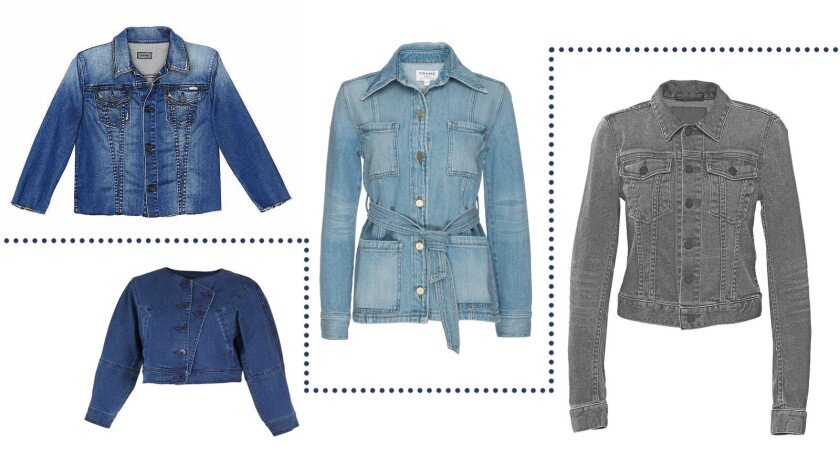

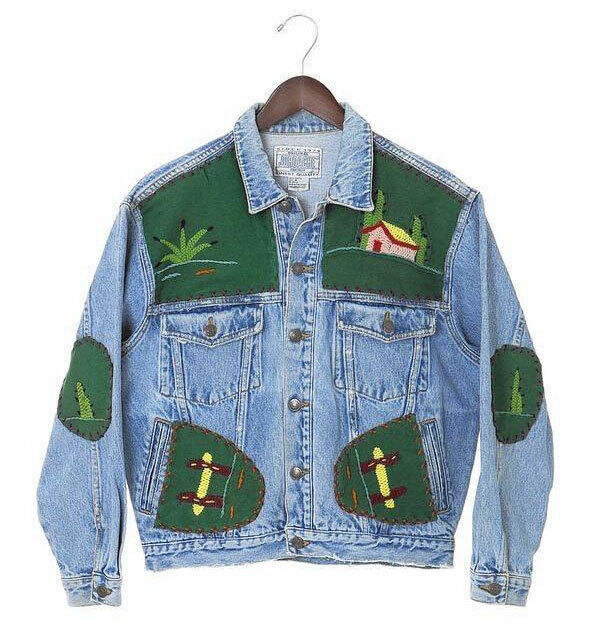


Hollywood Reporter – The Streicher Sisters, Strike Into Jewelry Design
By MELISSA MAGSAYSAY
NOV. 28, 2016
The hair and makeup artists teamed up with Iconery on an eclectic, mix-and-match collection.
They've already got hair, makeup and “feathered brows” mastered. Now, beauty gurus Jenn, Kristie and Ashley (a.k.a., the Streicher sisters), who house their talents, plus a selection of curated beauty products in a Beverly Hills salon called Striiike, are adding jewelry design to their growing lifestyle brand.
Together with jewelry company Iconery, which also recently launched a collection of 1970s ancient symbol-inspired pieces with Rashida Jones, the Streichers are debuting their own gems ranging from girly to vintage and, of course, the signature strike logo of their salon translated as a singular gold stud ($95). The other ear can be adorned with a single lightening bolt ($95), after the sisters' signature “Lightening Strike” service, a 15-minute hair and makeup touch-up best suited for desk-to-drinks or set-to-red-carpet situations.
“It’s funny, people seem to love our symbol,” says the youngest Streicher, Ashley, whose hairstyling and grooming clients include Emily Blunt, Carrie Brownstein, Abigail Spencer and John Krasinski. “We didn't even think to make this, but people really like it.”
Another symbol synonymous with their salon is the custom-made neon sign that reads, “Mes Soeurs” or “My Sisters” in French.
“It sort of embodies our space but also a bigger sisterhood,” Ashley says. “As in sisters and lady bosses.”
These three lady bosses, who also work with Anne Hathaway and Jake Gyllenhaal, have brought plenty of their own personal style into the collaboration as well. A dainty bow ring, $350 (available in yellow gold with either topaz or onyx stones) is a nod to one of Ashley’s favorite sayings, “Put a bow on it.” Two Victorian slide bangles, $185 for the thin style and $225 for the thick style, are inspired by Jenn’s love of vintage, specifically two antique bracelets she picked up at a vintage store in New York and never takes off. Corkscrew earrings ($350) dotted with rubies, emeralds, white or black diamonds are in line with Kristie’s eclectic taste in jewelry and can be worn a few ways to look like a hoop or dangling squiggle.
The sisters designed the collection to be easily layered, mixed and matched, mirroring their West Coast approach to style. The Northern California natives favor boho or vintage clothing thrown off (in a good way) by an unexpected shoe or, of course, piece of jewelry.
For instance, on the day of this interview Kristie is sporting a ruffled black top and skirt from Ulla Johnson with a pair of baby blue Adidas shell toe sneakers and Ashley is wearing a bold-colored, billowy dress from Venice-based designer Christy Dawn, with whom the sisters also have a forthcoming collaboration.
But for now, the focus is on their jewelry, and, of course, the upcoming awards season.
The Striiike x Iconery collection is priced from $95 for a Striiike logo stud to $425 for a cat mirror pendant and available at Iconery's website.


LA Times – Bobbi Brown talks vision for Beverly Hills store
By MELISSA MAGSAYSAY
FEB. 18, 2015
For more than 30 years, Bobbi Brown has dipped her proverbial brush well beyond the makeup palette, as an entrepreneur, author and media figure.
The makeup artist has had a self-titled line of products since 1991, penned eight beauty and lifestyle books, was the beauty editor of NBC’s “Today” show for 15 years and recently took the helm of Yahoo! Beauty as the online publication’s editor in chief. She has remained chief creative officer of Bobbi Brown Cosmetics since selling the line to the Estée Lauder Companies in 1995, and the brand is projected to reach $1 billion in cumulative sales in 2016. This year will see a U.S. expansion of Brown’s brick-and-mortar stores, with a location slated to open in Beverly Hills this summer.
“Makeup was a way that I was able to make myself look prettier,” says Brown, 57, who was in Los Angeles recently filming makeup tutorials for Yahoo! Beauty. “My philosophy was always to use makeup to make yourself look better, not artificial.”
The belief in natural beauty and simply enhancing features, not hiding them, prompted Brown to create the product that launched her beauty empire in the early ‘90s. It was a subtle pinkish shade of lipstick — a bumped up version of a woman’s real lip color — that caught the eye of Bergdorf Goodman, where the line was first sold, and that captured the attention of women who were tired of the artificial, overdone makeup of the 1980s.
Brown’s ability to connect with a wide swath of women and empower them has been a large part of her success. “She’s a visionary and helped me realize a dream I didn’t even know I had,” says celebrity manicurist Deborah Lippmann, creator of her own namesake nail product line. Lippmann was just starting her career in New York when she met Brown, who encouraged her to start thinking about creating her own product line.
“It never would have occurred to me to do a brand if it weren’t for her,” Lippmann says. “Bobbi was the leader of the pack, and made a real entree for artists — people who were really on the ground when it came to beauty — to start creating products.”
Today, Brown aims to continue to keep things real at the heavily eyeballed Yahoo! Beauty site. Since taking the role of editor in chief in July, Brown has created what she says is a safe place for women to hear other women’s stories, learn from simple how-to beauty tutorials and read interviews about beauty topics that resonate with them.
“It’s a natural evolution of the brand philosophy,” Brown says. “To keep telling the truth on a different platform and have very real conversations about beauty.”
In a section of the website called “Beauty Stories,” Brown manages to extract a rare level of candor from the subjects she interviews, most of them A-list celebrities whose images are often the ones that peer down from fashion and beauty billboards.
Brown’s conversation with Jennifer Aniston led the actress to open up about her feelings on topics from diet to plastic surgery in Hollywood (she thinks it’s gotten out of hand) and to reveal that, like most women, her weight fluctuates.
“Jennifer was eating a bagel and I said to her, ‘OK, so how do you really stay so teeny?’” says Brown. “And she was very honest, saying that she would try not to have another [bagel] until the following week.”
During her conversation with Cate Blanchett, Brown realized that regardless of the Oscar winner’s poised demeanor, Blanchett struggles to juggle the same work-family issues so many people face.
“It was around 9 p.m. in New York and the early morning in Australia when I called her,” Brown says. “She picked up the phone and said, ‘I am so sorry, I’m so sick, my kids are running around, I’ve been traveling …' and we started talking about how hard it is to be working and be ‘on’ and then come home and be a mom and a wife. Just normal things. I want other women to hear that women are all alike, and it’s not this great divide.”
Brown says she’s not looking for a big celebrity scoop through these interviews. “I just kind of want to share real issues,” she says. “That’s what I believe in. I like to empower women.”
In a feature called “Ask Aunt Alice,” readers can tweet questions to Brown’s 83-year-old, Chicago-based Aunt Alice, who will answer their queries about anything from how to deal with jealous people to how to light Hanukkah candles.
As Brown’s media presence grows, so does her brand’s retail presence. The brand is sold in more than 1,000 department and specialty stores in 66 countries, and there are 44 free-standing Bobbi Brown stores globally — but only one in the U.S., a shop in her hometown of Montclair, N.J., that she says she and her husband built “with a roll of tape” in 2003.
Her second U.S. store is slated to open in Beverly Hills in July, and Brown says the space will represent the local multi-tasking, health-conscious lifestyle.
“I want a place that when you walk in you can plug in your iPhone, have a protein shake, order lunch and get your makeup done,” says Brown.
After all, a little lipstick never hurts.
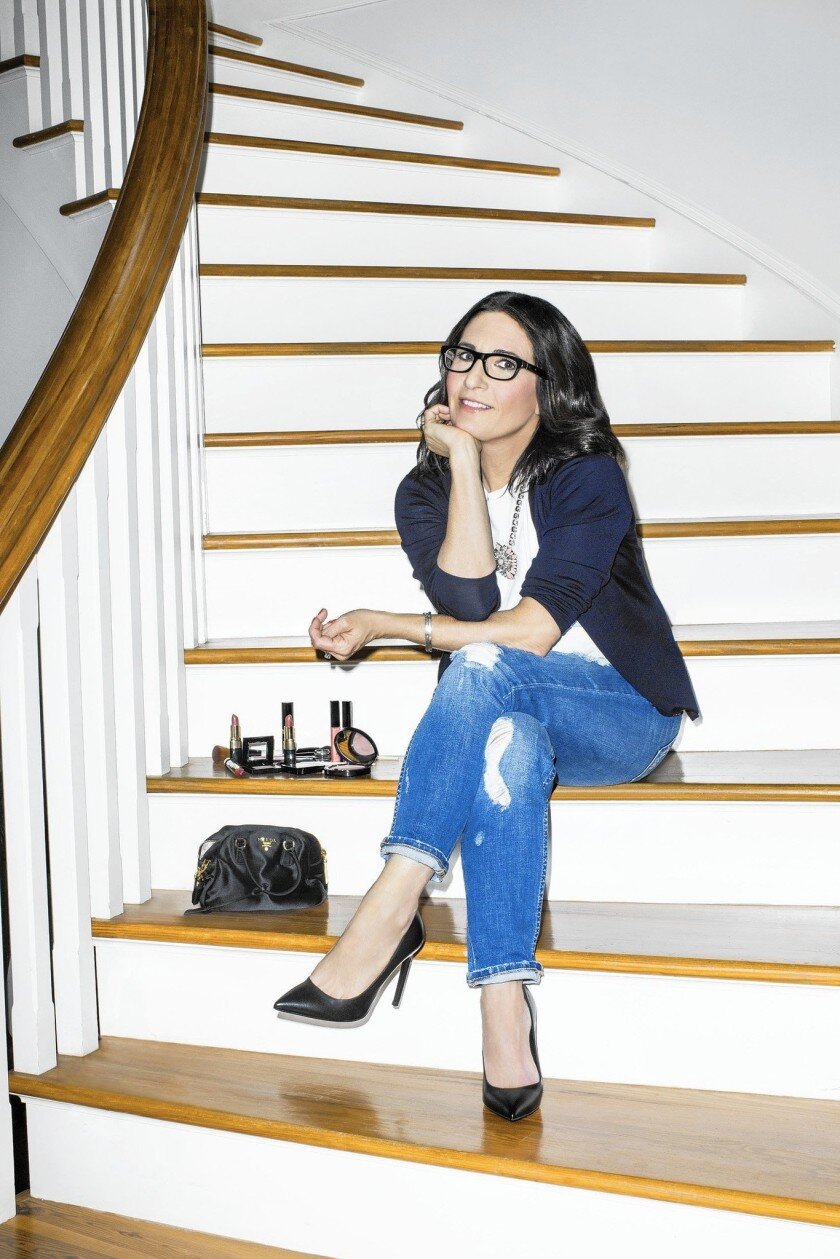
Hollywood Reporter – The Black Glam Slam
By MELISSA MAGSAYSAY
September 2015
With a record number of African-American Emmy nominees, Hollywood’s top pros reveal the beauty secrets of the biggest names
Actresses and their teams know all too well how the life of a red-carpet photo is virtually endless, flying into an infinite loop of social media and gossip sites minutes after a photographer fires off a shot from the sidelines. Luckily, top A-listers have their red-carpet pros for makeup and hairstyling to rely on. Between contouring, combating shine and complementing vary - ing skin tones, the glam squads to the record number of 12 black actresses nominated for Emmys (compared with last year’s record high of 11 nominees, including men) share their perspective on how best to showcase AfricanAmerican beauty on the red carpet.
Lighting is key: Makeup artists must mind the 1,000-watt kliegs because “darker skin absorbs more light than lighter skin,” says red-carpet photographer Stefanie Keenan. “If someone with darker skin is wearing too much makeup, it will look heavy.” Yet “African-Americans tend to have unevenness to their skin and darker areas and spots, especially around the mouth and under the cheekbone,” says Carola Gonzalez, makeup artist to three-time Scandal nominee Kerry Washington, who uses Kevyn Aucoin Skin Enhancer. “Because of that, darker skin tones do need more coverage.”
Matching foundation to undertone is critical so that no matter the light - ing, an actress’ skin color reads accurately in photos. “People think because we’re dark, we’re cool — but our general undertone is on the yellow side,” says Ashunta Sheriff, who works with drama series nominee Taraji P. Henson. Janice Kinjo, makeup artist to Orange Is the New Black supporting actress nominee Uzo Aduba, is one of several artists to commend Armani foundation for having a gorgeous finish and wide color range.
Makeup artists tend to use more than one color for subtle contouring. Says Autumn Moultrie, How to Get Away With Murder drama nominee Viola Davis’ makeup artist: “I shade her hairline and contour with a much darker color under the cheekbones and then put the foundation on.” Moultrie turns to Dior and Make Up For Ever as trusted brands for red-carpet base. Bobbi Brown, Ben Nye and Black Up are other brands mentioned as having depth and a range of shades.
Shine also is a factor, particularly under the carpet’s barrage of lights and sometimes sweltering temperatures. “African-American skin tends to be oily in the T-zone,” says Kinjo. “It’s all about mat - tifying and oil-free primers.” Gonzalez agrees and preps with an oil-absorbing lotion from La Mer. Bessie nominee Queen Latifah’s makeup artist Sam Fine sets makeup with CoverGirl Pressed Powder in Ebony to give a semi-matte finish.
Since all-matte can look flat, Moultrie applies Jouer cream highlighter to tops of cheeks before foundation, so it looks like the glow is coming from within. “When highlighter sits on top of foundation, it doesn’t look effortless,” she says. “You can get away with that more on a lighter skin tone, because the colors are closer in tone, but with darker skin it works better underneath.” Adds Fine: “Contouring is more important with darker skin because it brings out the features. It’s not about slimming the nose, it’s about defin - ing each feature.” He likes CoverGirl’s Ebony powder for contouring around temples and beneath cheekbones and gave a compact to fellow artist Nick Barose to use on Lupita Nyong’o. Adds Oslyn Holder, Regina King’s makeup artist: “There’s a finesse to contouring — you want to celebrate features versus trying to make them more Westernized or European.”
When using color on eyes, lips and cheeks, makeup artists say that deep, warm tones work best. “I use a bronzygold plum from Le Metier de Beaute with a lot of pigment,” says Moultrie about her go-to shade for Davis’ cheeks. On lips, makeup artists agree that the choice of hue depends on what the actress is wearing — but across the board, lipstick or gloss should have depth and high pigment. Charlotte Tilbury, NARS and Tom Ford are brands they cite for dimensionality in photos. But “if it’s too bright, it doesn’t look organic,” says Moultrie.
“Organic,” “natural” and “individual” are words makeup artists and, particularly, hairstylists drop when describing black beauty. “I think there was a time when African-American actresses felt they had to conform,” says Sheriff. “But look at Viola arriving with her gorgeous natural hair to the carpet, or Taraji wearing braids on the side of her head, or Rihanna in Bantu knots on major carpets.” Hairstylist Kim Kimble, whose clients include Beyonce and Mary J. Blige, agrees: “There’s a whole natural movement.” Styles like curls, close crops and braids showcase natural hair and signal a shift toward healthier, more effortless looks. But “curly hair doesn’t reflect light,” says Nyong’o’s hairstylist Ted Gibson. “For Lupita, I use more products to add shine because curly hair absorbs shine.” Washington’s hairstylist Takisha Sturdivant-Drew advises going minimal: “The key is not to use too much product, otherwise it looks greasy. Try a leave-in conditioner [her go-to is Neutrogena Triple Repair] so it’s not weighed down.”
Kimble is a big proponent of wigs: “Wigs have pretty much taken over. People can change up their style more. We still do see quite a bit of weaves, but they can cause so much damage, as can extensions.” Custom wigs, which range from $3,500 to $12,000, also allow women to avoid the heat and pulling of the straightening process. Roberta Robbi Rogers, hairstylist for nominee Niecy Nash, is just relieved straight hair isn’t the only option anymore: “For so long, everyone pretty much had the same hair — everything was stick-straight. Now you get to play with texture. And now, every time Lupita comes on the carpet, you’re wondering what it’s going to be.”


LA Times – ‘70s, embroidered denim has become all the rage this season
By MELISSA MAGSAYSAY
NOV. 10, 2016
Fashion’s love affair with the 1970s shows no signs of slowing down, and elements of the Me Decade are none more apparent than in the eclectic and expressive embroidery adorning denim this season.
From flowers and tigers to butterflies and outer space, themes in embroidery span nature and the otherworldly. This shouldn’t come as a surprise, considering a main driver behind the look is the whimsical styling from Gucci.
The Italian luxury house has been incredibly influential in all reaches of current fashion, but the embroidery and intricate graphics seen on accessories, silk jackets, dresses and bags are now pushing denim designers in a similar direction.
Brands including Mother, Jordache, Alice + Olivia, 3x1, Stella McCartney and Citizens of Humanity have infused their fall and winter offerings with a smattering of colorful and often quirky embroidery.
But the fanciful detailing shouldn’t be seen as something totally outrageous, says Elyse Walker, owner of Elyse Walker stores and fashion director of Forward by Elyse Walker.
“Don’t save it for special occasions,” she says. “This should be an update to your everyday styling. Just throw it on like you would your normal jeans, and you’ve instantly elevated your look.”
Walker’s Pacific Palisades and newly opened Newport Beach store locations carry a wide assortment of embroidered jeans and denim jackets, including Gucci and Sandrine Rose.
The embroidered trend reaches far beyond Southern California, with shoppers clamoring for the free-spirited vibe across the globe.
“It’s about revisiting the ’70s-embellishment trend in a modern, slicker way,” says Erin Fridja, owner of Bad Denim, a denim boutique carrying contemporary and vintage product in East London. “The seminal ’70s book ‘Native Funk & Flash’ is on every denim designer’s bookshelf and embodies this movement. At Bad Denim, we have interpreted this with slick leather and velvet appliqué in a days-of-the-week series reminiscent of the days-of-the-week underwear of our youth.”
Though the high waists and vintage washes found with most of these denim styles keep the aesthetics grounded in the ’70s, don’t be afraid to modernize the look with something sporty or contemporary to keep your vibe current.
Whether it’s the days of the week or delicate flower blossoms festooning the backside and upper-thigh areas of jeans, there is embroidery out there for everyone this season.
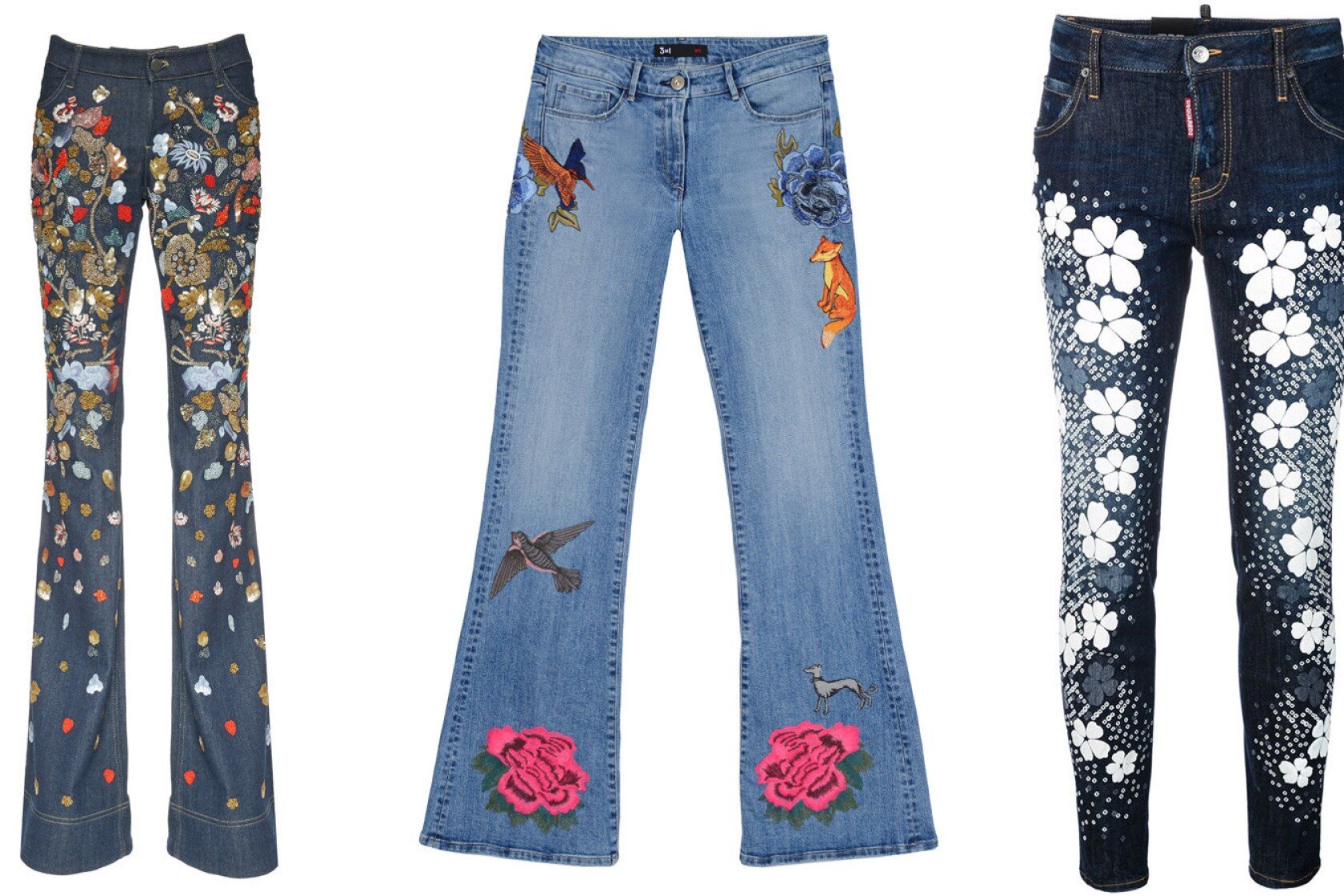
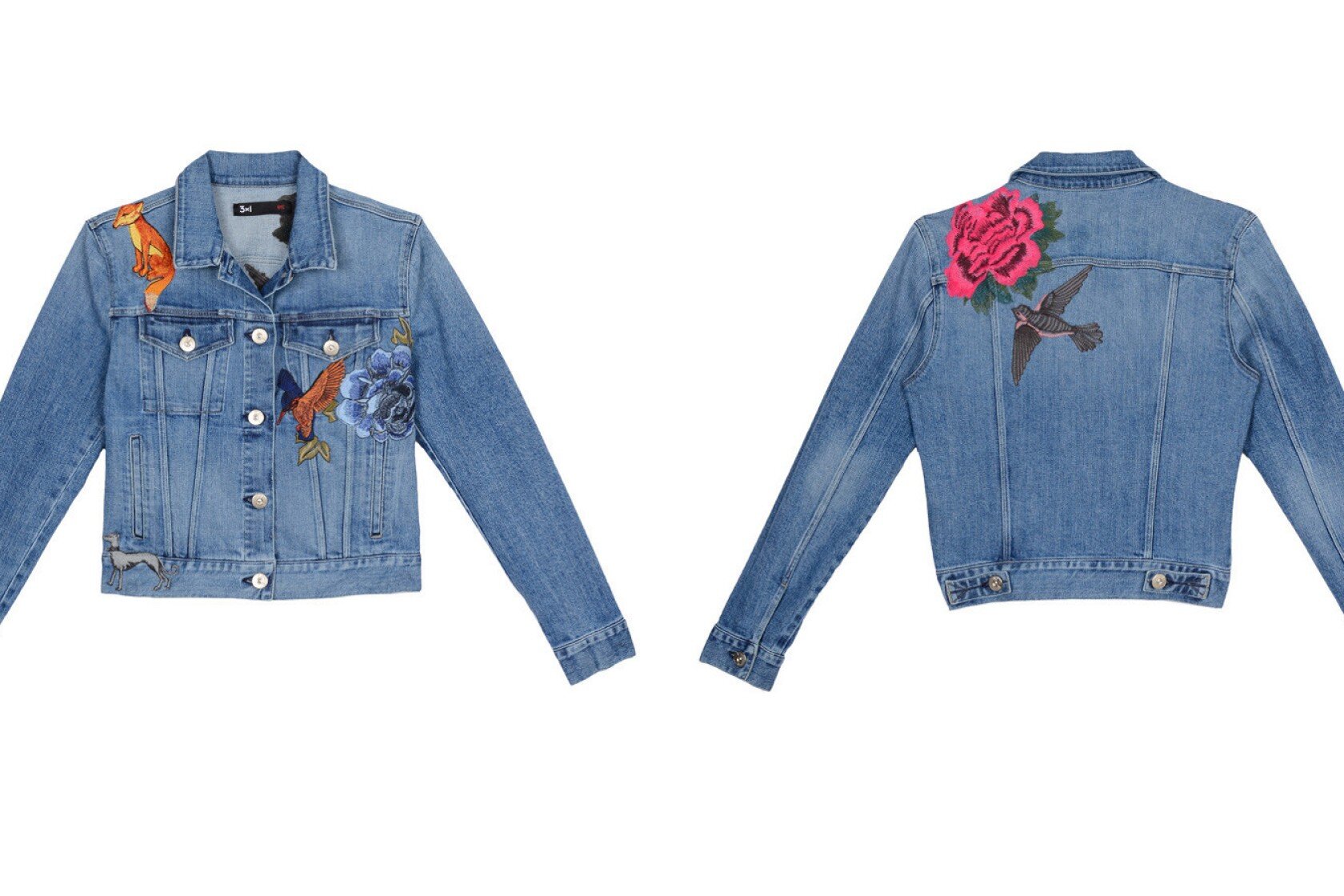
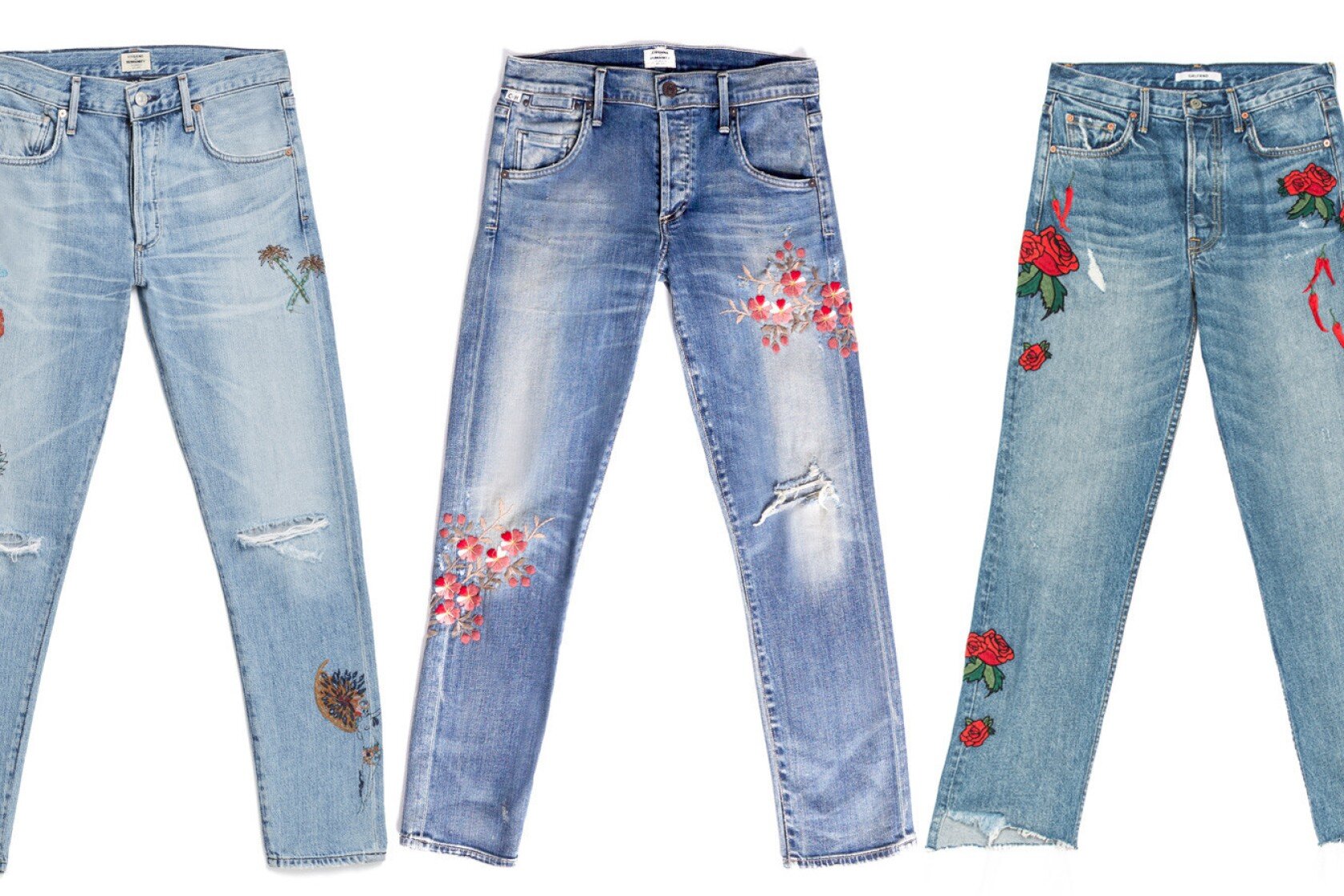
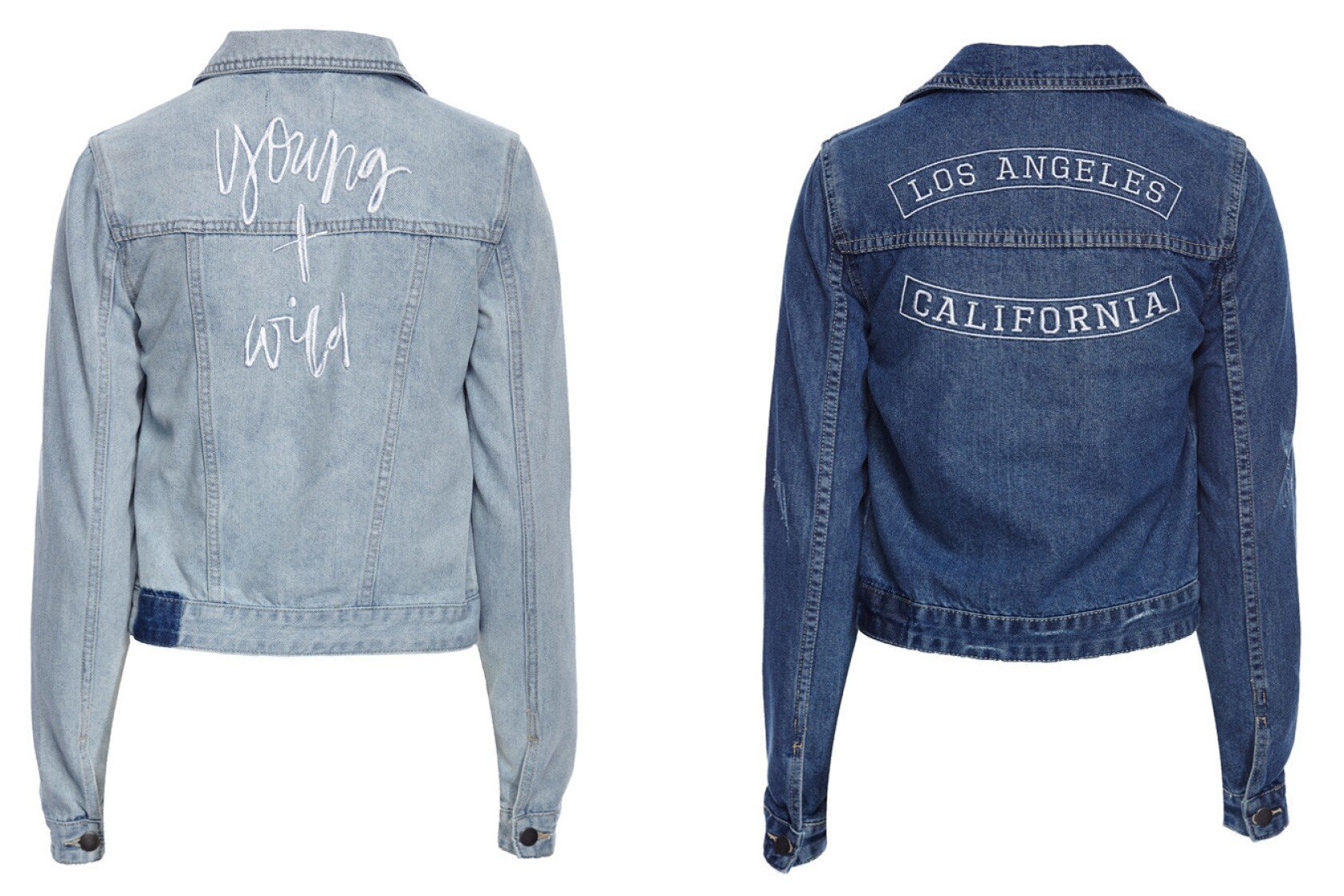
Hollywood Reporter – Celebrity Facialist Joanna Vargas Opens First L.A. Salon
The facialist to the stars, including Rachel Weisz and Julianne Moore, is setting up shop on the West Coast.
By MELISSA MAGSAYSAY
AUG. 22, 2016
Rachel Weisz, Julianne Moore, Karlie Kloss, Sofia Coppola, Zac Posen and other celebs from the film and fashion worlds have helped make Joanna Vargas New York's go-to facialist for a healthy, natural glow. And beginning this month, they will have another salon to visit.
Vargas has expanded her business west, opening an airy and intimate salon tucked away in West Hollywood.
"L.A. was a no brainer because I have so many dedicated clients who live there," she says.
Vargas will be able to treat clients before awards shows and major premieres at her own salon, which also is staffed with a team of senior estheticians trained by her.
The new salon will feature everything available in the New York space, including popular treatments like the LED light bed, Triple Crown Facial, Forever Facial and Vita Lights.
In addition, a detox treatment exclusive to the Los Angeles location will be offered. "It’s a full-body detox peel," says Vargas about the service, which is bound to be popular with the Hollywood crowd. "It's a full-body microdermabrasion followed by a massage with compresses of shredded coconut, so the skin is detoxed, hydrated and soothed."
The full range of Vargas’ organic skincare collection also will be available to buy at the salon, including the Forever Glow Anti-Aging Face Mask ($75) and the celeb favorite Daily Serum ($85), said to be like a "green juice" for the skin.
The Joanna Vargas L.A. Salon is now open; however, the West Hollywood address will remain unlisted for client privacy. Those looking to book a treatment can call Vargas’ New York salon at 212-949-2350 for an appointment in Los Angeles.



LA Times – Diane Keaton, a skin cancer survivor, talks sunscreen, beauty
By MELISSA MAGSAYSAY
MAY 14, 2015
Diane Keaton is standing in front of a floor-to-ceiling window, backlighted by Los Angeles’ late afternoon sun. Even appearing as just a shadowy silhouette blown out by the light, Keaton’s shape is an iconic one.
There are the distinct lines of a charcoal gray hat with a grosgrain band, small rectangular eyeglasses and a nipped-waist, men’s style coat that is well balanced with the full skirt and stiletto sandals that fall below it.
It’s classic Keaton — neatly tailored, a little eccentric, covered up and conservative in a kooky sort of way. Even her nails have the menswear-inspired look she has been known for since her Academy Award-winning turn as Annie Hall in 1977.
“Stickers!” the 69-year-old actress exclaims of the ivory and black houndstooth-check decals she has plastered to her neatly trimmed nails. Keaton prefers the nail stickers to polish for practical reasons: because they won’t chip.
Perhaps more important than sticking to the nail decals as a dedicated part of her beauty regimen, Keaton is adamant about wearing sunscreen. After being diagnosed with basal cell carcinoma at age 21 and more recently with squamous cell cancer, which was removed through two surgeries, Keaton is a vocal proponent of proper sun care. She has been a L’Oreal Paris spokeswoman since 2006 and counts the brand’s sunblock as something she is never found without.
“It’s a family history,” says Keaton of skin cancer. “I remember my Auntie Martha had skin cancer so bad they removed her nose. My father had basal skin cancer and my brother had it. It’s tricky with this skin cancer. That’s why you’ve got to put the sunblock on.”
She pauses to dig into the deep pocket of her full skirt and pulls out a small bottle of L’Oreal’s Silky Sheer Face Lotion with SPF 50.
“That’s what I do, I just keep it in my pocket,” she says, adding that she likes a lightweight silky formula and reapplies it a few times during the course of a day.
“Back in my 20s I didn’t pay attention much,” Keaton says of protecting her skin. “I didn’t research and didn’t really care and that was stupid because it’s dogged me my entire adult life, even recently. I didn’t start sun care until my 40s.”
She says that her ever-present hats also help protect her face from the sun, and she still has the area where the squamous cell cancer was removed checked often.
Besides her dedicated use of sunscreen, Keaton says that the rest of her beauty routine is quite simple. She has always been diligent about using a face cream day and night and swears by eyeliner and lipstick for her everyday makeup look.
“I like to accentuate the shape of my eyes,” she says, “They go down, and I like that they go down. It happens more as you get older. My dad had eyes like that. He’s passed on and I like to think we’re sharing the same eyes, that I’m taking his eyes with me.”
As for lipstick, Keaton would like to wear red, but says the shade doesn’t suit her coloring. Coral and warm rose-brown tones are more her speed.
But other than wearing sunscreen and avoiding red, this woman who has come to redefine traditional style and beauty ideals stays flexible.
“Beauty is like the word ‘love,’ it’s humongous, it encompasses everything,” she says. “I see it differently than I used to and it keeps changing and evolving, and that’s what beauty needs to do, it needs to keep changing and evolving because that’s how powerful it is. It’s important.”
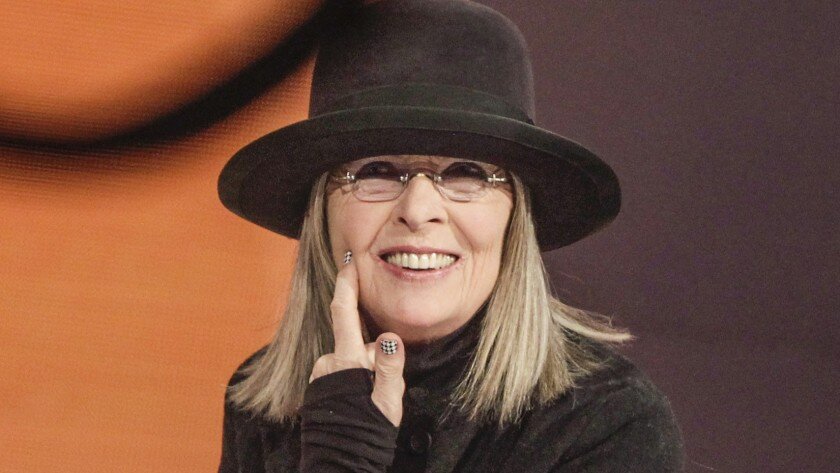
Hollywood Reporter – Base Coat, a Non-Toxic Nail Salon, Opens in DTLA
The salon joins a growing number of beauty hotspots in the Arts District.
By MELISSA MAGSAYSAY
NOV. 14, 2016
In recent months, the Downtown Los Angeles Arts District has seen an influx of new businesses and brands ranging from small batch to corporate behemoth. According to Billboard, Warner Music has been eyeing space in the Ford Factory Building at 7th and Santa Fe in a potential move from the company’s Burbank compound where it’s been located for the last 40 years. Plus, Soho House’s highly anticipated downtown location is set to bow next year, making way for what will be perhaps the most posh-yet-gritty hangout the area has ever seen.
So, the addition of a very stylish, non-toxic nail bar, complete with healthy elixirs and trendy accessories, comes as no surprise.
On Tuesday, Base Coat nail salon opens its doors on the hipster-fueled stretch of Mateo Street that’s also home to the Black Halo, Apolis and Shinola stores.
The opening follows celebrity favorite hair haven, Salon Benjamin (fans include Courteney Cox, Connie Britton and Krysten Ritter), which began offering its high-end beauty services in the downtown area earlier this year.
"It’s a vibrant, edgy, diverse and changing neighborhood," says Ali Elman, who co-founded Base Coat with Tran Wills and Sarah Simon. "Downtown L.A. matches our vibe."
That vibe centers around a light and airy space peppered with African-mud-cloth-upholstered chairs and brass fixtures.
But the draw here, besides the general manager celebrity manicurist Shelly Hill, who works with Gwen Stefani and Amal Clooney, is the non-toxic environment and products.
Many salons claim to be “all natural” but offer gels and acrylics. We don't, Elman says. "We have chosen not to offer these services for many reasons — but to keep it simple, these particular nail services have been shown to be highly toxic to clients and nail techs."
Base Coat nail polish is made without the six common chemicals found in nail polishes (toluene, dibutyl phthalate (DBP), formaldehyde, ethyl tosylamide, xylene, paraben), but also without formaldehyde resin and camphor. That means they are "free of the most toxic ingredients known to cause health problems including cancer, asthma and even neonatal death," she says.
Products used in services are formulated and hand blended by FIG & YARROW in Denver, Colo. — all organic, vegan-friendly, scented with essential oils, plant-based preservatives and don't contain petrochemicals, parabens or sulfates. They are "safe to use on children and women who are pregnant/nursing," she says.
In addition, Base Coat has a bar that serves beauty tonics, mock-tails, juices and teas to be enjoyed while you are getting a service. Eventually, the owners plan to get a beer and wine license.
The location also has a retail selection where you can find anything from Moon Juice products to Quay sunglasses. While nails and nail care are the main focus, the founders may add waxing and chair massage to the service list, too.
Base Coat, 704 Mateo Street, Los Angeles, CA 90021, basecoatnailsalon.com.



LA Times – ‘70s-inspired flare-leg style is new denim kick
By MELISSA MAGSAYSAY
DEC. 22, 2014
The decade that gave us disco and the Nixon administration hit a sartorial high when designers showed their spring 2015 collections this fall.
Pieces inspired by the 1970s were seen on the runways at Chloe, Prada and Gucci. And now the flare-leg silhouette that was popular then is becoming the next big thing in a denim landscape that has been all about skinny fits in recent years.
“The ‘70s trend is having a revival moment right now, and flared silhouettes fall perfectly in line with it,” says Sasha Sarokin, buying manager for Net-a-Porter. The retail site is carrying flare-leg jeans from Frame, J Brand and Victoria Beckham, just a few of the labels that have created the shape for the season.
L.A.-based denim brand Citizens of Humanity believes enough in the ‘70s-inspired silhouette that it has launched a five-piece capsule collection of flare-leg jeans. From December through February, the brand will release a new flare style each month.
“We have created a capsule of flares for every occasion” says Citizens of Humanity creative director Catherine Ryu. From the “Fleetwood” style, a sexy high-rise flare meant to give the illusion of mile-long legs, to the Drew, a low-slung casual flare designed to be worn with flip-flops or flats, the shape is a major priority for spring at Citizens of Humanity.
AG, 7 For All Mankind, Genetic, Nasty Gal, Seafarer, MIH, Rag & Bone and newly launched L.A. label Tortoise Denim have all included flare shapes in their spring 2015 offerings.
Don’t expect a Sonny and Cher moment this time around.
“The essence and the inspiration of the current flare is ‘70s,” says Ryu. “But the way that we will wear them will be more modern, so as to avoid it looking costume-like.”
As daunting as skinny jeans are, the flare can prove just as problematic, particularly for those on the shorter side.
Tailoring the length is almost inevitable with flares and it’s important to consider the heel height you will be wearing with them, so the integrity of the flared shape remains intact.
The hardest part about flares is that you have to hem them for the shoe height you intend to wear, say Emily Current and Meritt Elliott, celebrity stylists and designers of fashion line the Great. Both have pairs hemmed for high heels and hemmed for low-heeled boots.
The duo adds that the best length for a flare-leg jean is to barely graze the floor in the back and allow for just the tip of the shoe to poke out in the front.
Marlien Rentmeester, founder of the shopping blog Le Catch, suggests wearing the jeans with pieces that are thoroughly modern in order to give the look a fresh spin. “From sharp button-down blouses to cropped sweaters and boxy tops that accentuate the waist line, highlight the slimmest part of the pants (the thighs) and counteract the flare’s intrinsically retro vibe,” she says.
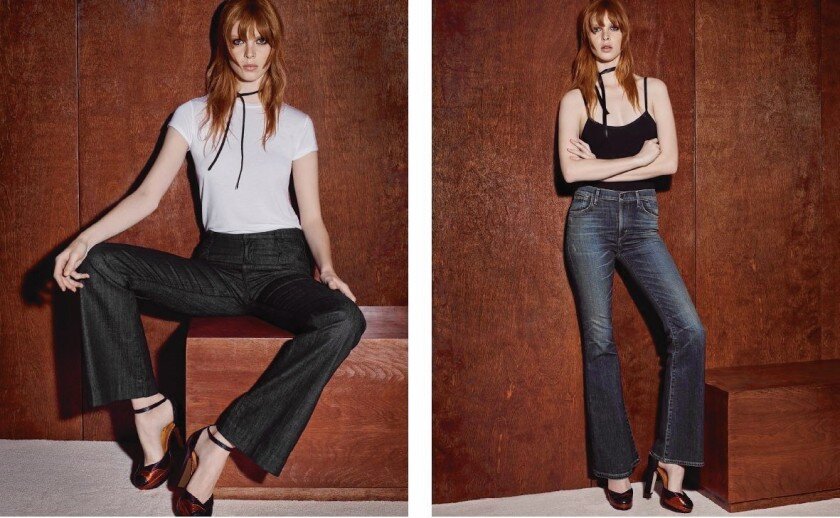
LA Times – Coach remains true to its heritage while finding new inspiration
By MELISSA MAGSAYSAY
OCT. 7, 2016
What do iconic American references like Elvis Presley, exploring the Midwest by train and Southern California’s skate and surf culture have to do with handbags, clothes and accessories from Coach?
Stuart Vevers, executive creative director at Coach, says those American staples have been key influences in his work at the fashion brand, which is celebrating its 75th anniversary this year with a new book, a revamped fragrance and a fashion collaboration with Disney.
The nostalgia isn’t completely out of left field given that the New York-based company’s founders, Miles and Lillian Cahn, were initially inspired by the supple leather and stitching of a baseball glove when they were first creating bags in 1941. But for Vevers, who was born in Yorkshire, England, and who lived and worked in Europe as a designer before taking the helm at Coach in 2013, the fascination with Americana is paramount in disrupting current ideals of luxury in fashion.
“We are living in a world where people aren’t aspiring to stereotypical images of luxury,” says Vevers, who worked at Louis Vuitton, Mulberry and Loewe. “Luxury to the next generation could mean a T-shirt or fun playful backpack, and I want Coach to stand at the forefront of the new codes of luxury that are being created right now.”
The designer has been implementing plenty of playful elements that still manage to feel incredibly elevated across the men’s and women’s ready-to-wear, bag, shoe and leather accessories categories offered by Coach.
This level of flexibility to adapt to the ebb and flow of fashion and luxury is part of what has kept Coach relevant for more than seven decades.
“Coach has stayed true to its core values and yet has remained flexible to the needs of not only American women but also aspirational women worldwide,” says Milton Pedraza, chief executive of Luxury Institute, a brand consulting agency based in New York that has worked with Coach and other companies. “Its designs adapt to the changing tastes of contemporary women.”
Bold color, metal rivets, floral appliqué and embellished patchwork have reinvigorated bags, which still stand on a foundation of quality leather, brass toggle hardware and detailed stitching — are all hallmarks of the brand.
The fall 2016 ready-to-wear has the same unselfconscious nature and everyday appeal of the bags, seen in Western-style studding on a leather jacket, ’70s-inspired scarf print blouses and crewneck intarsia sweaters emblazoned with a dinosaur named “Rexy.”
It’s what Vevers is calling an “American take on luxury” and what Coach stands to represent through Vevers’ versions of classic staples including varsity jackets, sweatshirts and saddle bags, punctuated by the practical elements that have helped keep Coach a consistent commercial success.
“American values come through freedom and an openness,” Vevers says. “I like that our client works, and our client needs their clothing and accessories to work just as hard.”
Further illustrating this American spirit and marking the brand’s milestone anniversary is a new book out this month called “Coach: A Story of New York Cool” written by Joel Dinerstein and designed by Fabien Baron. The collage-style coffee table tome chronicles the brand from its beginning in a small SoHo workshop in New York with six employees to the 1960s when pioneering sportswear designer Bonnie Cashin took over creative duties. The book also highlights the decades of celebrity fans wearing and carrying Coach clothing and bags.
Additionally, the brand has revamped Coach the Fragrance, a perfume that originally debuted in 2007 and was reintroduced this September, as a scent that is inspired by the energy of New York City, and includes contrasting notes of raspberry, Turkish rose and musk.
From Ali MacGraw to Chloë Grace Moretz — the current face of Coach — Hollywood has also been an integral part of the brand. “I think it has to be authentic,” says Vevers about Coach’s appeal and relationships with celebrities. “I like connecting with people I admire for their work or style, but the authenticity is crucial. It’s just like with our clients; it has to be natural.”
The diverse mix of front-row celebrities at the spring 2017 show in New York included Courtney Love, Moretz and “Stranger Things” stars Winona Ryder and Millie Bobby Brown and echoed the designer’s ethos for bringing a broad set of cultural references from music, film and art together.
“I really want, with the music and culture references, a more modern vision of America,” Vevers says. “Diversity is modernity, and as a designer, I want to include all of America in Coach.”
From original silhouettes of the 1950s to Coach staples festooned with C logos and newer, popular styles like the Swagger and Rogue bags, the house has set out to demonstrate the breadth of its work as well as its customer service. Check out the new Craftsmanship Bar at the Rodeo Drive flagship store in Beverly Hills.
The fourth of its kind in North America, Coach’s Craftsmanship Bar is part mini museum, showcasing bags from the ’50s, ’60s and ’70s, and part personalized customer service with cleaning, customization, monogramming and product repair.
The range of design from the last 75 years is clear when canvassing the display at the Craftsmanship Bar. Look for a ’70s saddle bag that has the wear of a baseball glove and a Swagger bag covered in cheeky varsity patches.
The styles are all vastly different, but perhaps it’s the level of accessibility in the price point and functional design that has made Coach familiar and aspirational to buyers for the last 75 years.
For Vevers, the formula for creating a successful collection that is steeped in the brand’s seven-plus decade heritage but still appealing to a new millennial audience is completely about relatability. It’s about those iconic American references of Elvis and wide-open plains now injected with flashes of visual inspiration the designer gathers while scrolling Instagram.
“My magpie is that of a digital magpie,” Vevers says. “The world is moving fast, and to be relevant, design needs to be connected to the street.”
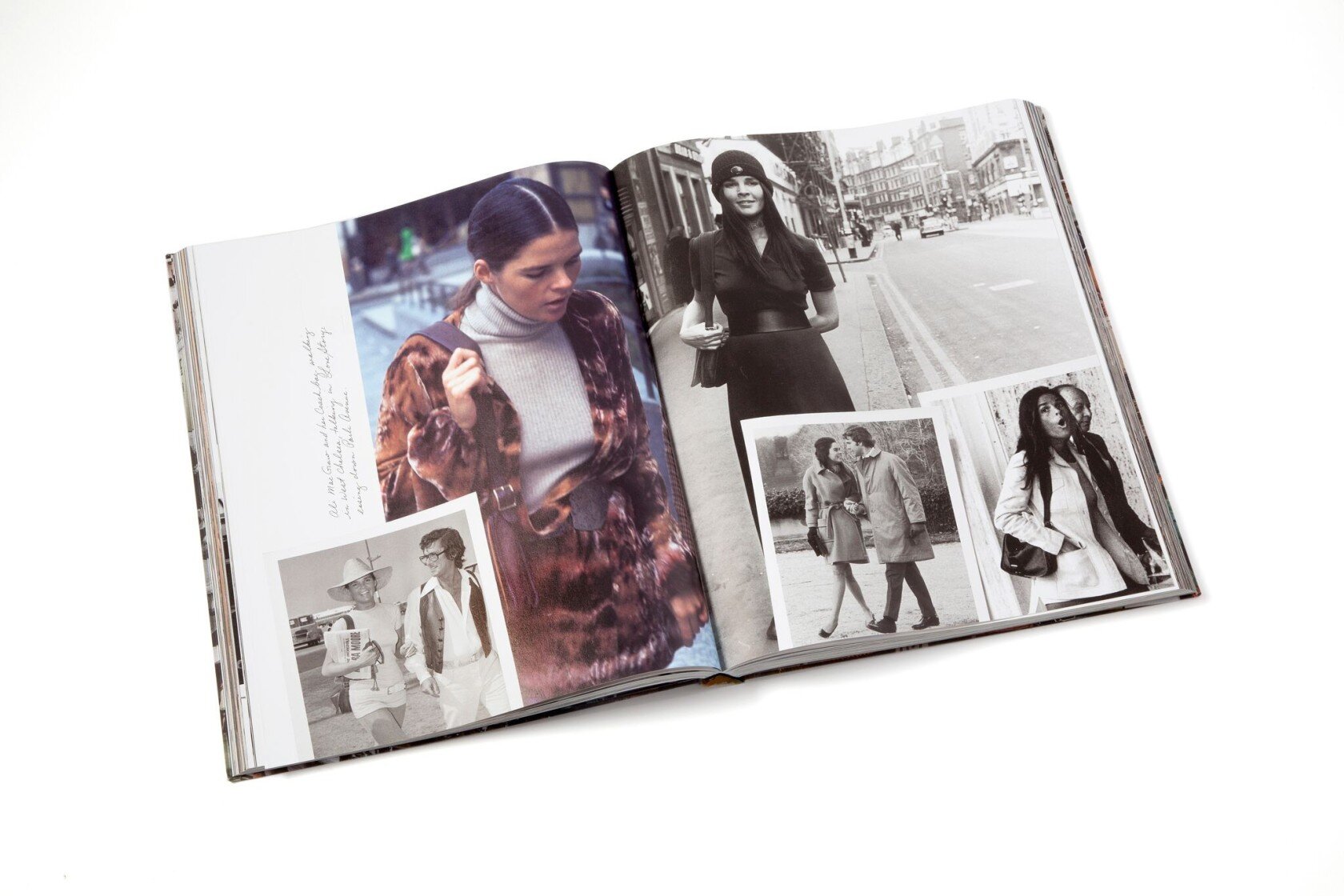
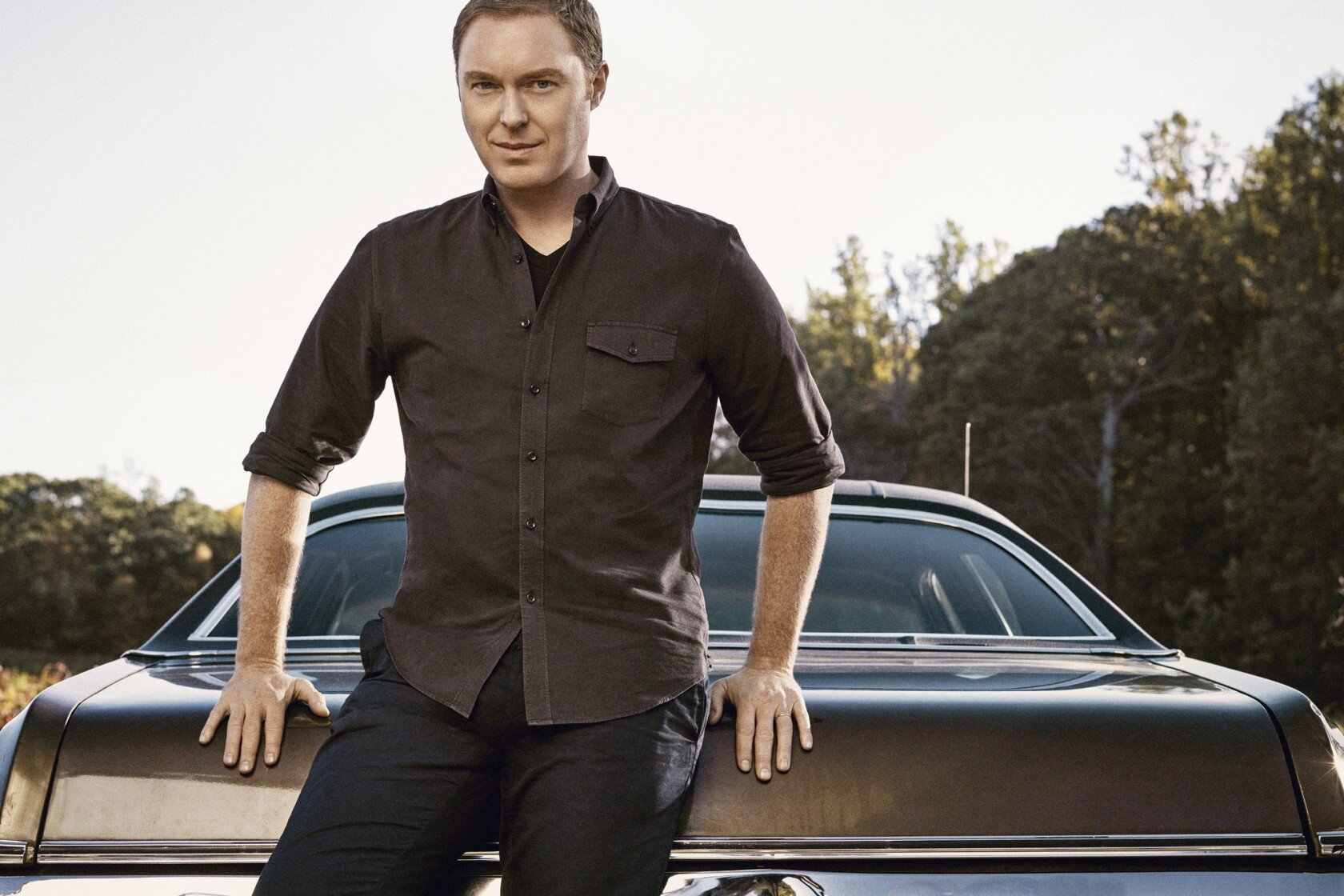
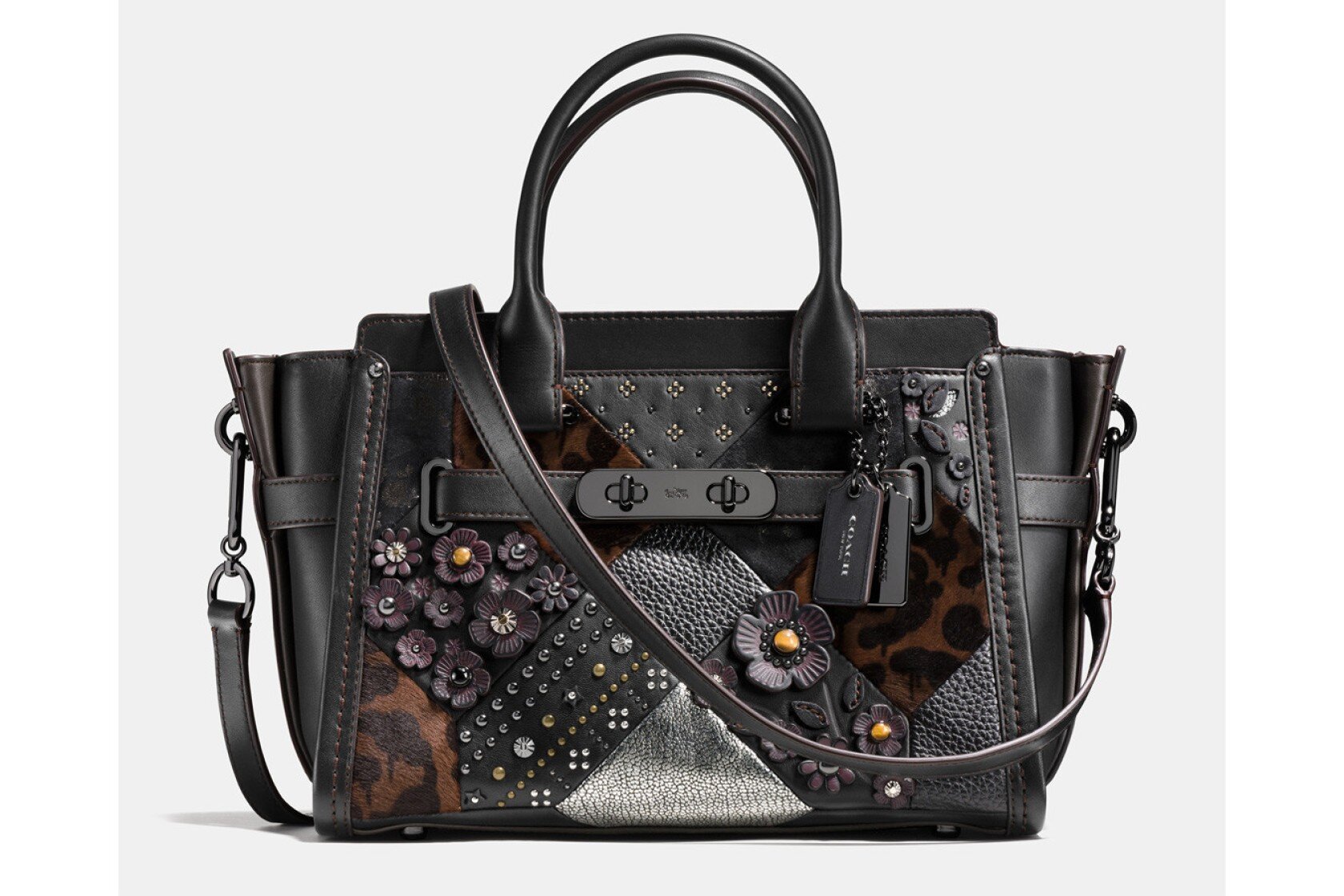
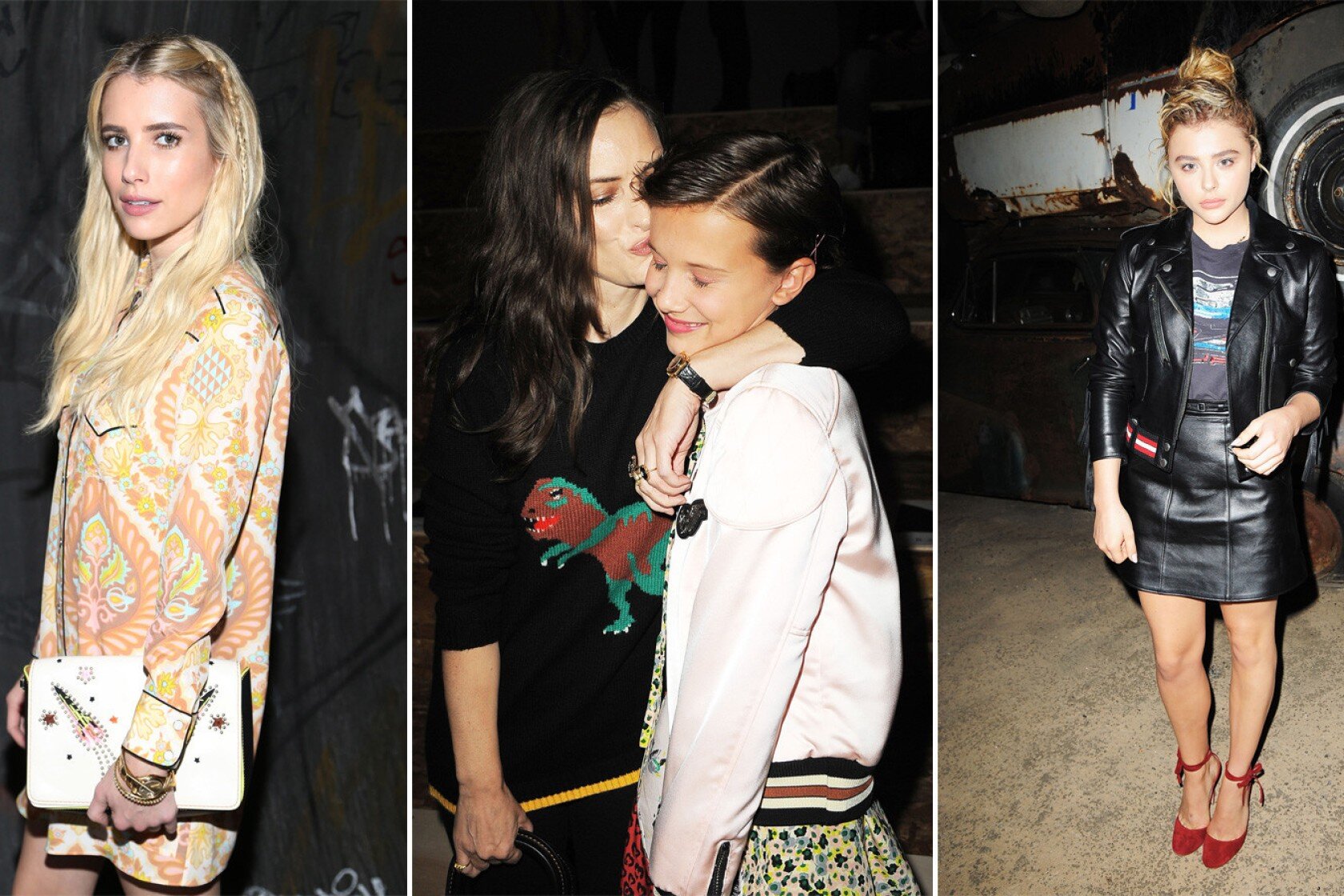
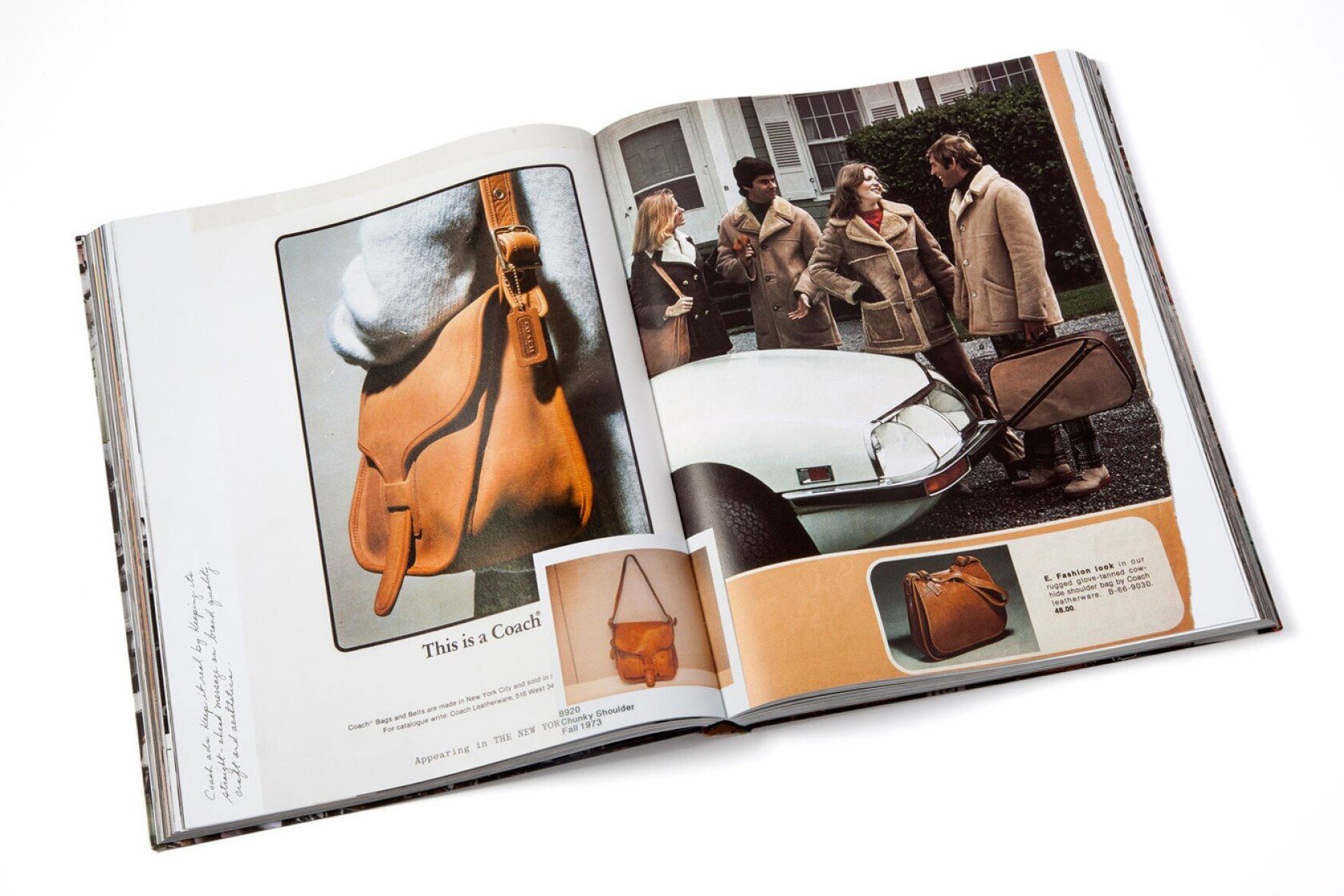
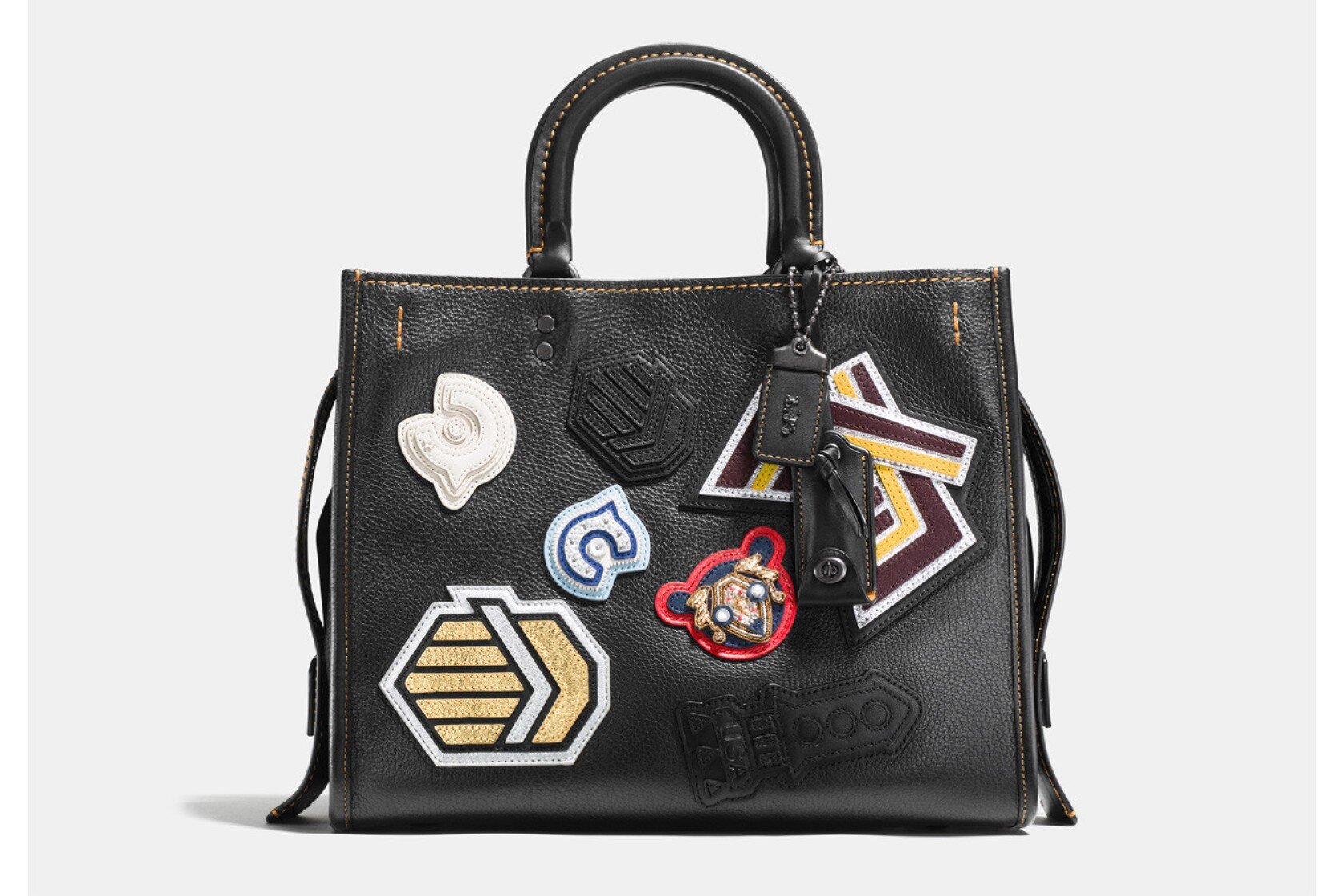
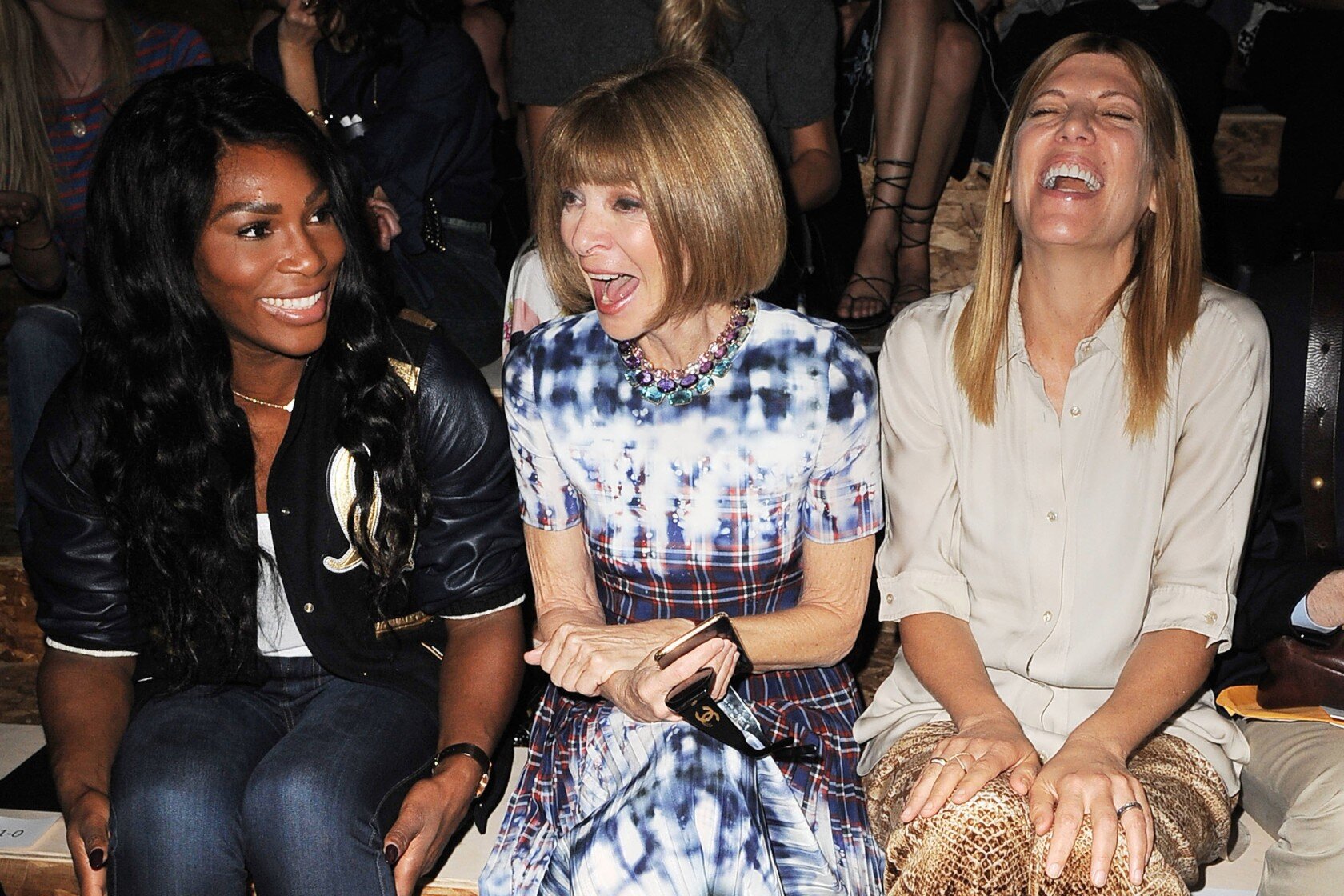
LA Times – Six L.A. swimwear Brands at the Surf’s Edge of Fashion
By MELISSA MAGSAYSAY
JUNE 19, 2015
Swimsuits are year-round wear for Southern Californians blessed by an expansive stretch of coastline, temperate climate and ubiquitous pools and beach clubs.
This prime environment contributes to the $4.4-billion U.S. swimwear industry and has produced pioneering swimwear designers including Rudi Gernreich, creator of the topless monokini that shook the world 1962, and Robin Piccone, whose rubber suits revolutionized swimwear in the 1980s.
Los Angeles is still a hotbed for new designers who are modernizing the way we shop for swimwear, tapping the coastal lifestyle, high-end fashion and even humor to inform their collections. Here are some L.A.-based brands that are breaking the mold of traditional swimwear.
Bikyni
The Background Bikyni was launched in May by founder and Chief Executive Jude Al-Khalil; bikyni.com
The Look Understated swimwear basics that buck trends, heavy hardware and embellishments. Each style comes in a palette of solids (black, white, navy and nectarine among them) and one print, a black-and-white gingham check.
The Hook Al-Khalil started Bikyni in an effort to simplify and streamline the swimsuit buying process so many women dread. She offers an edited collection of classic shapes and colors available with free shipping and returns through e-commerce only.
Shoppers can find the right size and shape through an advanced fit guide that gives options for how much support, coverage, adjustability and padding is desired. Also, tops and bottoms can be purchased as separates in different sizes to fit women’s varying proportions.
“It’s much more challenging than one would think to find a basic swimsuit with a reasonable price tag but at a designer level,” says Al-Khalil, who plans to implement a live chat function on the site in the near future, so women can ask specific questions about fit in real time before making a purchase.
The Goods Bikyni launched with 10 swimwear styles, which includes triangle, bandeau and halter-top shapes, four styles of bottoms and a one-piece suit. All styles are made in Los Angeles and cost $95 for a one-piece or for a top and bottom set ($50 each if purchased separately).
Frankie’s Bikinis
The Background Frankie’s Bikinis was founded in 2013 by Malibu-based designer Francesca Aiello when she was just 17 years old; store.frankiesbikinis.com.
The Look An aesthetic that Aiello describes as capturing “Malibu’s beachy lifestyle,” mixed with elements of Hawaii’s surroundings and culture. It translates to a boho vibe, plenty of skin-baring cutouts and a youthful feeling in the bikinis that Aiello has designed to work for an active surf lifestyle.
The Hook “I grew up in Malibu, so I basically lived in bikinis,” says Aiello, “I love to surf and felt there weren’t enough suits that were both cute and functional for active girls.”
With her mom’s encouragement, the teenager began researching swimwear fabrics and construction while still in high school and soon launched the collection of bikinis that now sells in the U.S. and internationally.
The Kardashian sisters and some Victoria’s Secret Angels are fans of Aiello’s creations, posting photos of themselves wearing Frankie’s Bikinis on their social media feeds.
The Goods Aiello has about 15 styles in her current collection, which includes $88 tops, $84 bottoms and $181 one-piece suits. The line is manufactured in Malibu and sells on her website as well as https://www.shopbop.com and several local swimwear retail shops.
Velvet Sphynx
The Background Velvet Sphynx was founded by Bettina Ivanovich in 2014; https://www.velvetsphynx.com
The Look Plenty of whimsical and downright wacky prints. Think sportier cuts such as sports bra style tops and deep v-neck one-piece suits emblazoned with colorful pizza, dog, snake and toucan prints.
“I wanted to bring something different to the market, something bold that would have people doing double takes,” says Ivanovich, who is a graduate of the Fashion Institute of Design and Merchandising. “The prints, styles and names are all derived from elements of my everyday life and from my childhood growing up in the ‘80s.”
The Hook Ivanovich’s bold take on bathing suits recently caught the eye of pop star Rihanna, who wore the pizza print Spicoli bikini during a Hawaiian vacation. The designer says she will be sending the singer additional statement-making styles in hopes she might be seen in more of Velvet Sphynx’s splashy suits.
The Goods Ivanovich creates five to eight styles each season, and each comes in three to seven prints and colors. All styles are manufactured in Los Angeles and range from $58 for a top to $88 for a bottom and $180 for a one-piece suit.
LeSwim
The Line LeSwim was founded in 2014 by Adriana Caras, previously known for her high-end shoe and handbag designs; leswim.it
The Look A collection of glamorous and sophisticated swimsuits, caftans, rash guards and cover-ups.
“I’m really inspired by the fashion plates from the late 1960s and early 1970s, like Jacqueline Onassis and those iconic shots of her aboard the Christina O, cruising the Mediterranean,” Caras says. A similar sense of glamour is infused into her suits and seen as ‘70s-style asymmetrical straps on a one-piece or a lace front closure a la Yves Saint Laurent snaking up a black maillot.
The Hook Caras and L.A.-based photographer Paul Robinson collaborated on exclusive swimwear prints created from Robinson’s photos. The capsule line bowed in May, blurring the lines between fashion and art.
The Goods LeSwim is made up of mix-and-match separates, many of them reversible. There are 12 tops ranging from $115 to $142 and 12 bottoms ranging from $103 to $115. One-piece suits range from $240 to $295. Caras’ caftans come in either cotton or silk and cost between $265 and $400.
Malia Jones Swimwear
The Line Malia Jones Swimwear, founded by professional surfer and model Malia Jones, launched in May; https://www.maliajones.com
The Look Understated swimwear and caftans that have a sleek, high fashion aesthetic. Think strapless one-piece suits with open backs, sheer black or taupe breezy caftans and simple red bandeau bikinis that are low on hardware or embellishments.
The Hook Jones, who is married to “Hawaii Five-0" star Alex O’Loughlin, has spent much of her life wearing a swimsuit as either a surfer or model.
“I grew up in Hawaii surfing and then traveled the world for my surfing and modeling. So I’ve worn a lot of swimsuits,” she says. “I’ve been an ambassador to brands, a consultant to companies for their swim lines and have done collaborations with brands for swimwear, but this is the first collection I’ve done on my own. I want to make someone’s favorite bikini — a bikini that they could feel like themselves and feel confident in.”
The Goods There are 11 styles of interchangeable tops and bottoms and one-piece suits that come in five different colors and four prints each season. Bikinis start at $215, and a one-piece suit costs $245.
Marysia
The Line Marysia was founded by Marysia Dobrzanska Reeves, who relocated her business from New York to Los Angeles this year. https://www.marysiaswim.com
The Look Fashion-driven or vintage-inspired suits that are created in a European couture factory. Scalloped edges are cut by hand and several bikini bottoms have high waists for a modern pin-up feeling.
“I really saw a void in the market for a more elevated boutique swim brand driven by fashion,” Reeves says. The former ballerina and current surf enthusiast also creates rash guards and cover-ups to accompany the bikinis and maillots in her collection.
The Hook The line has been a celebrity favorite for several seasons and was most recently worn by Gwyneth Paltrow and Jaime King. This season, Reeves collaborated with designer Jonathan Cohen on a capsule collection of swimwear featuring a Leopard Stroke print that is a cross between leopard spots and polka dots and is available on the Marysia website.
The Goods The Marysia collection is made up of about 40 items with bikini tops and bottoms at $130 per piece and a one-piece suit at $315.

LA Times – Apps can bring an ‘Uber’ world of beauty to your doorstep
By MELISSA MAGSAYSAY
DEC. 13, 2014
Getting an entourage of beauty professionals to show up at your door is no longer a privilege reserved just for celebrities and the ultra-wealthy. Thanks to a growing number of on-demand beauty apps, summoning hairstylists, makeup artists, masseuses and even personal trainers to a home, office or hotel is not just possible, it’s often easier than swiping your smartphone screen to call an Uber car.
In fact, these services are being referred to by some users as “Ubers of beauty,” due to the convenience, accessibility to a high-end experience and ability to execute all payment transactions online.
“Beauty has always been about instant gratification,” says David Pirrotta, owner of David Pirrotta Brand Management, a Los Angeles-based firm that markets beauty lines including Rodin, Ilia and Sachajuan.
Lauren Remington Platt started an on-demand beauty app called Vensette three years ago after realizing there was no convenient way to transition her look from her day job in finance to the cocktail parties and charity functions she attended in the evening.
“I wanted to create something that my friends and I would want to use and also considered how women want to interact with beauty in the Digital Age,” says Platt.
Vensette, based in New York, now has artists available for hire in New York, Los Angeles, San Francisco and Miami.
Vensette artists are trained to re-create styles displayed on the company’s website.
“The key is consistency,” says Platt, who was impressed by the uniformity of Starbucks when creating her company.
In addition to on-demand beauty apps that dispatch artists for at-home services, several apps aim to make the booking process for beauty appointments more convenient.
Think “Open Table for beauty,” as some are referring to apps like Beautified and Beauty Booked, which allow users to make last-minute appointments at salons and fitness studios in various cities.
Beautified, which is available in New York and plans to launch in L.A. in 2015, partners with salons, spas and exercise studios such as Frederic Fekkai, Bliss and Barry’s Boot Camp.
“Women are time-strapped, and we provide them with a tool to help their day be more efficient,” says Beautified co-founder Annie Evans, adding that, for women who are traveling to a new city, an app like Beautified eliminates the often time-consuming process of searching for a salon or spa, then hoping for an open appointment.
On-demand beauty apps also offer artists for weddings, bridal parties and fashion industry events.
Fashion publicist Shana Honeyman discovered an app called GlamSquad when the makeup artist she hired to work on a client’s look book bowed out with food poisoning 45 minutes before a photo shoot.
Honeyman was hooked.
“I love a salon experience,” she says, “but when on a tight timeline, having someone come directly to you feels decadent and time-efficient. It’s the best of both worlds.”
Here is the low-down on some of the new beauty-on-demand services.
Vensette, vensette.com
Founded: 2011 by Lauren Remington Platt, with services available in New York, Los Angeles, San Francisco and Miami.
Signature feature: Consistency. Vensette artists are trained to create several key looks as reference points for clients to choose from.
Services include: Hair and makeup.
How it works: The client books a service on the Vensette app or website, and an artist arrives at your home or office within 45 minutes.
Pricing: Hair, $100; makeup, $150; hair and makeup, $200. V by Vensette, a more customizable service available for photo shoots and high-profile events, is $300.
Stylisted, thestylisted.com
Founded: 2013 by Julia Carmona and Lauren Katzberg, with services available in Los Angeles, Chicago and New York.
Signature feature: Options. Customers can browse artist’s bios, photos, pricing and reviews, and choose which artist and look is the best fit.
How it works: Book an appointment through the Stylisted app or website by choosing the service needed, date and time.
Pricing: Varies from artist to artist and is indicated from high to low in each beauty professional’s profile, much like a restaurant guide.
BeGlammed, beglammed.com
Founded: July 2014 by Jocelyn Loo and Maile Pacheco, with services available in Los Angeles, Orange County, Las Vegas, Dallas, Fort Worth and Houston.
Signature feature: Glamour. As indicated by the beauty company’s name, glamour is at the center of its service, with glam hair and makeup looks available, including fake eyelashes and group bridal packages.
How it works: Book via BeGlammed’s app or website, choose the city, date and time. Individual hair or makeup appointments take no longer than an hour; hair and makeup appointments take 90 minutes.
Pricing: Services start at $95 and vary by city.
StyleBee, stylebee.com
Founded: 2013 by former corporate attorney Anna Santeramo, with services available in Los Angeles.
Signature feature: At the end of each service, users rate their beauty professional. Users can also request the same beauty professional again should they favor someone for a certain service.
How it works: Book a beauty professional via the StyleBee app, choosing from a variety of services, such as blowouts and even face painting. Appointments must be booked a minimum of two hours in advance and ideally a day ahead.
Pricing: Blowouts, $50; makeup, including lashes, $85; men’s cuts, $50; face painting, $50; 60-minute massage, $120; 90-minute massage, $150.
Beautified, getbeautified.com
Founded: 2013 by Annie Evans, Hannah Bronfman and Peter Hananel, with services available in New York and plans to launch in L.A. in 2015.
Signature feature: A tightly curated selection of salons, spas and fitness studios, from brow waxing to barre classes, picked by the company’s editors. Useful when traveling or trying to find a new service.
How it works: Download the app and select the service or class desired. Available appointments, dates and times will show up for you to choose from.
Pricing: Varies on type of service, specific salon, spa or class selected.
GlamSquad, glamsquad.com
Founded: January 2014 by Alexandra Wilkis Wilson, co-founder of Gilt Groupe, Victoria Eisner, Jason Perri and David Goldweitz, with services available in New York and L.A.
Signature feature: A dream team of executives plus creative director and veteran hairstylist Giovanni Vaccaro and director of makeup artistry Kelli Bartlett. GlamSquad artists are trained in the brand’s proprietary technique for consistent results.
How it works: Beauty services are booked through the GlamSquad app or website. A customer chooses from a menu of hair and makeup looks, and an artist is dispatched to the customer’s preferred location.
Pricing: Blowout, $50; braid, $75; updo $85 and up; makeup $75.
StyleSeat, styleseat.com
Founded: May 2011, with services available in numerous cities, including New York, L.A., Las Vegas, Chicago and Miami.
Signature feature: The app and website are mobile and online marketplaces for booking beauty and wellness services. Makeup artists, hairstylists, personal trainers and massage therapists can use the site as a professional platform for their businesses. Users have access to about 260,000 beauty professionals in 15,000 cities and towns listed on StyleSeat.
How it works: Enter the service desired, location and date into the app or on the website, and a list of beauty professionals appears with each person’s photo, rating, pricing and bio. Users can book an artist directly after reviewing the details.
Pricing: Varies depending on service and beauty professional chosen.
Priv, gopriv.com
Founded: March 2014 by Joseph Terzi and Morris Sutton, with services available in L.A. and Manhattan.
Signature feature: Variety. In addition to beauty services such as blowouts, spray tans and manicures, Priv also offers professionals who specialize in reflexology, gymnastics and self-defense. Priv also allows users to ping their preferred beauty professional directly to book an appointment.
How it works: Book appointments through the free Priv app by selecting service and date and time needed. A list of beauty professionals shows up on screen with a photo, rating, prices and availability.
Pricing: Ranges from a child’s haircut for $45 to customized group fitness training for $160.
BeautyBooked, beautybooked.com
Founded: 2012 by former L’Oreal brand marketing executives Hillary Hutcheson and Ritika Gill, with services available in L.A., New York, Miami, San Francisco, Dallas and Houston.
Signature feature: BeautyBooked has partnered with Allure magazine, utilizing the beauty-dedicated magazine’s popular “Directory” reviews on its website and app. Clients can use the reviews to discover and select new spas and salons.
How it works: Log on to the website or app and select the service desired, city and area, date and time. Available appointments will appear along with a corresponding Allure-fueled review. A reward system gives users BB points that can be used to receive beauty products and perks on services.
Pricing: Varies among different salons and spas.
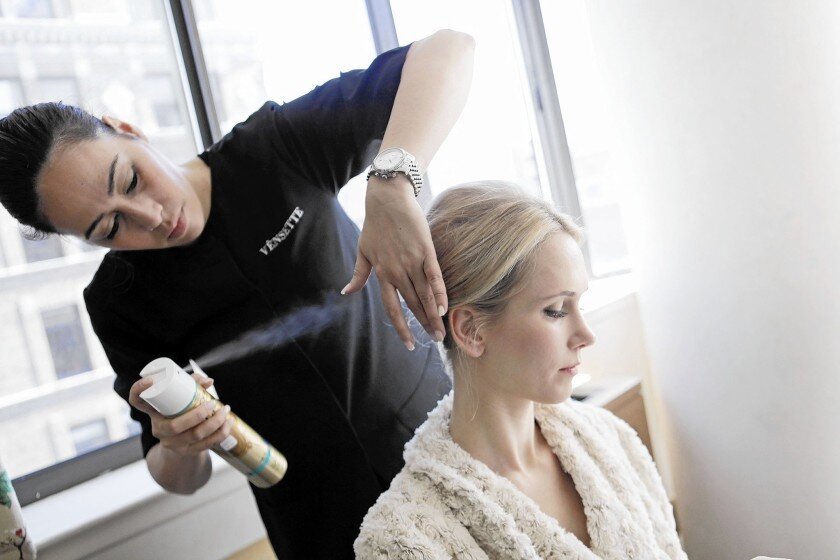
LA Times – Father-son collaboration comes into focus with Mr. Leight eyewear collection
By MELISSA MAGSAYSAY
JUNE 18, 2016
On a May afternoon at eyewear design guru Larry Leight’s Santa Monica home, Leight, founder of Oliver Peoples, and his son, Garrett, founder of Garrett Leight California Optical, took a break from actual work to consider how they each created successful eyewear labels that have captured the cool, in-the-know crowd of their respective generations.
“I didn’t really realize what he did for a living until I went to work for him,” says Garrett, 32. “I saw that not only did he design eyewear, but he really led that team, that environment and that company – and that’s when I was like, ‘Wow, now I really know what he does.’”
Aside from similarities such as profession, stature and surname, father and son finish each other’s thoughts and have a similar magnetism for attracting a cult-like following of loyal fans and talented employees. Together, they have joined forces to create a capsule collection of luxury eyewear called Mr. Leight.
Eyewear wasn’t always the clear choice for Garrett as a profession.
In 2006, however, the younger Leight (the family name is pronounced “light”), who was focused on tennis and studied journalism, went to work at Oliver Peoples at the suggestion of his father to gain work experience. Garrett eventually left Oliver Peoples, and went into business for himself.
“I think he was absorbing and gathering all these things that formulated his desire to do something different,” says Larry, 65. “He felt that there was a better way to do things that inspired him to see different areas of the business that he felt he could do differently or better.”
In November 2009, Garrett opened A. Kinney Court on Abbot Kinney Boulevard, a lifestyle concept store in Venice with opticians, eyewear, footwear, apparel, books and music.
Garrett soon became inspired to create his own collection and created his namesake business in 2011.
“I felt most comfortable in doing what my dad was doing,” says Garrett. “Being an entrepreneur wasn’t really a word that I understood before that time, but I think I just wanted to be a leader and wanted to build my own culture and environment. It was also being around great people that inspire you. That’s what I loved about Oliver Peoples.”
Today, Garrett Leight California Optical eyewear is available through about 800 wholesale accounts worldwide as well as four stand-alone GLCO stores. The eyewear has framed the famous faces of January Jones, Kristen Stewart, Leonardo DiCaprio and Kendall Jenner and spawned collaborations with Clare Vivier, Want Les Essentiels and Mark McNairy.
“You have to kind of pinch yourself,” says Larry about Garrett’s success. “The similar thing between us is, ‘How the hell did he come along and grab that young cult of today?’”
In 2006, Larry sold Oliver Peoples to Oakley, and the following year, Italian eyewear brand Luxottica acquired California-based Oakley. Larry retained his creative role until his departure at the end of 2015.
Larry says he spent months after leaving Oliver Peoples trying to decided what he’d do next. “I realized that even if I didn’t know Garrett, his is the company I want to work for,” he says.
Inspired by his son’s business and brand, the veteran eyewear designer and accessory brand icon was brought on earlier this year as a design consultant at GLCO and to collaborate on the Mr. Leight collection.
“Mr. Leight is a name I’ve had in my pocket for a while,” says Garrett. “And I always dreamed that maybe we’d have the opportunity to do something together and that name would obviously make sense.”
While in the design phase, the Mr. Leight collection will have frames made in Japan with a starting cost of $700, and, going forward, the eyewear will skirt traditional fashion cycles.
“It’s more limited, exclusive and still simple and beautiful,” says Larry about the concept for Mr. Leight, which is set to bow in Spring 2017. “It’s more technical, and there are more moving parts to some of the frames – but not gimmicky.”
In his new role, Larry lends his decades of design experience to Garrett and his team, and he defers to Garrett’s strength for sales and marketing for building a strong brand.
Using their design and production prowess, the Leights’ team also has their sights set on making Mr. Leight a design house with the idea of collaborating with select like-minded brands to consult with and create eyewear for those brands.
“For sure we have that same entrepreneurial spirit,” the father says of the son. “We’re taking this exciting journey [with Mr. Leight], and it’s different, fresh and desirable.”
An exciting collaborative journey that, because it bears the name they both share, has the potential to pay a humorous dividend next time someone addresses Garrett as “Mr. Leight.” He could respond that he’s Garrett – Mr. Leight is his dad, and their brand.
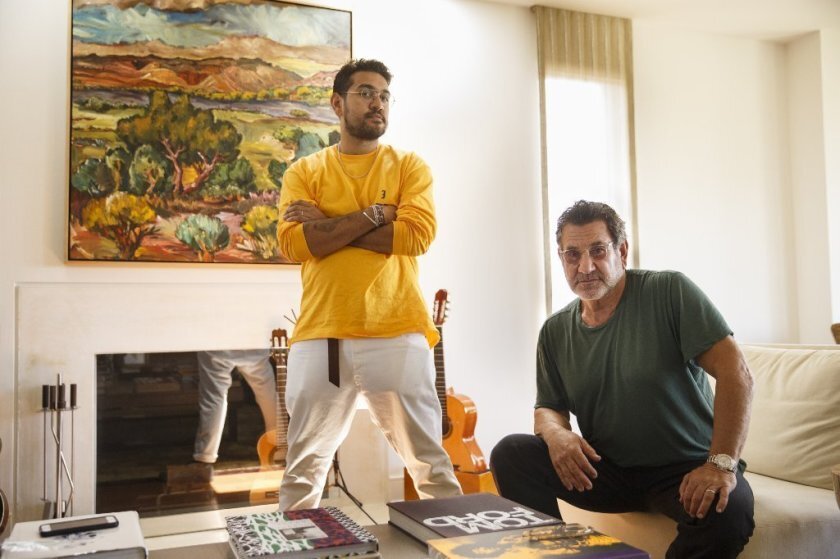
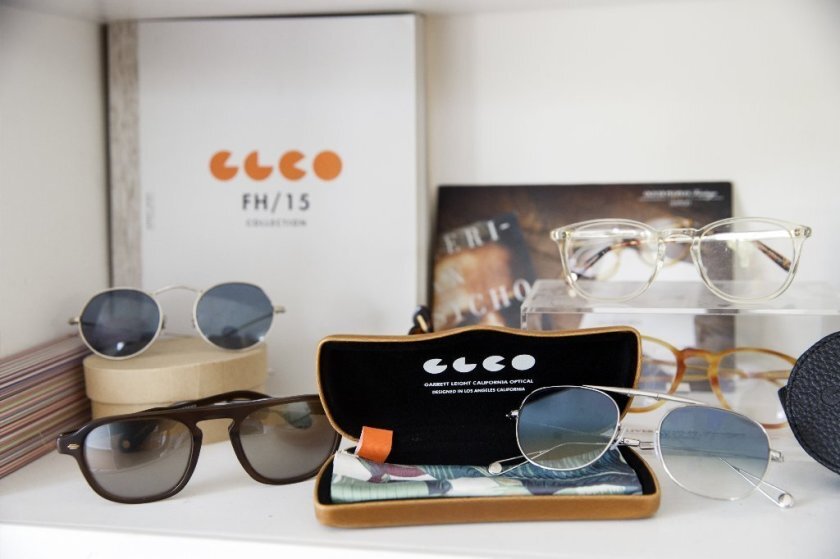
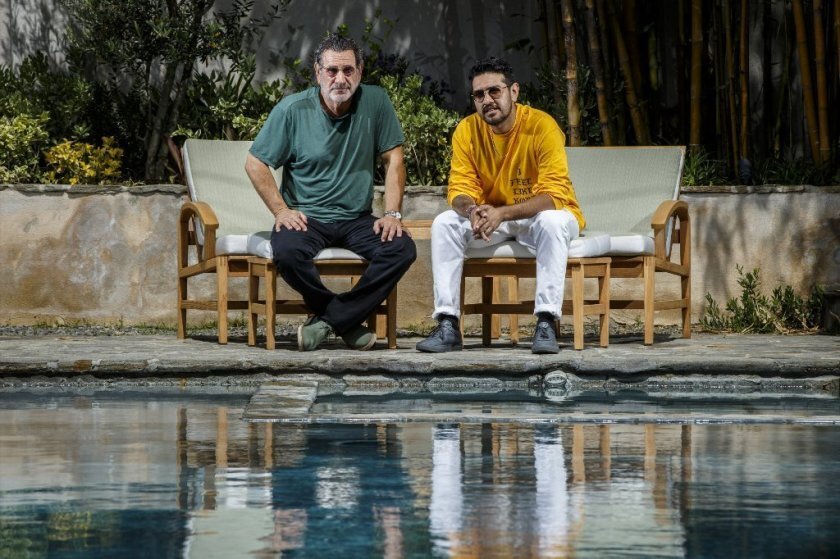
LA Times – The Wet Bob Turns Trendy
By MELISSA MAGSAYSAY
MARCH 22, 2014
Do you ever find yourself running out of the house with wet hair? That’s apparently become a good thing, right in line with a beauty trend seen recently on pop stars and in edgy fashion editorials.
A new hairstyle dubbed the “wob” (for wet bob) has reached “It” hair status after Beyoncé sported a wet-looking bob-length ‘do at the Grammy Awards in February. Miley Cyrus also had damp-looking tresses on the March cover of W magazine, as did Sofia Coppola on the February cover of Italian Vogue.
“It is one of the most deconstructed of hairstyles yet still evokes images of the wearer stepping out of a pool or a steamy shower,” says celebrity hairstylist Jen Atkin.
It’s the unexpected quality that’s appealing here. Juxtapose the hairstyle against structured, designer fashion, and the mood is fresh rather than formal. Atkin recently did a wob-style red carpet look for Jenna Dewan-Tatum, and actress Malin Akerman wore versions of the wob at several February events.
But is this sleek, just-out-of-the-shower style something that can be worn by a woman who isn’t a pop star and who is heading for the office or dinner rather than a stage, red carpet or runway? Proceed with caution, Atkin advises.
“This look is best reserved for the runways of fashion week, the covers of magazines or onstage during the Grammys, a la Beyoncé,” Atkin says. “Wearing this look out on a dinner date, for example, you can look like you just forgot to dry your hair before heading out.”
Hair stylist John D agrees, adding that the wob can look like unwashed, greasy hair if it’s not executed correctly.
“In order to wear this look throughout the day, it’s about keeping that slight movement and texture to the hair,” says Atkin, adding that it’s best to use minimal amounts of product.
She recommends applying a small amount of Oribe’s Surfcomber Mousse to wet hair for a lived-in, day-at-the-beach look with a small amount of shine.
“Allow your hair to air dry or use a blow dryer while combing through hair with your fingers to amp up your own natural texture,” she says.
John D adds that some shine serum applied to towel-dried hair would also achieve the wob look.
“Just remember to think ‘sleek’ instead of ‘wet’ and ‘texture’ instead of ‘greasy,’” Atkin says.
The wob is best to wear at night when that steamy, slightly unkempt look comes off as sexy rather than messy.
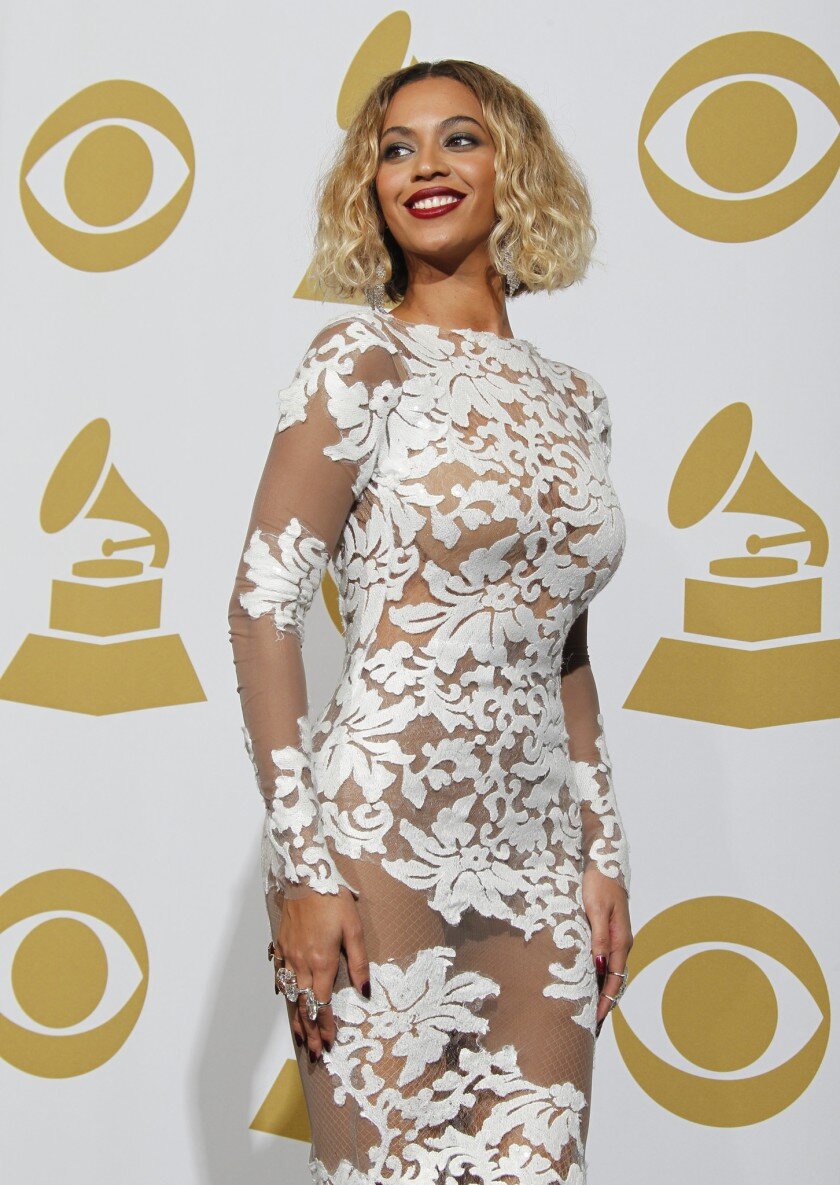
C Magazine – AG Jeans & Alexa Chung
Fashion icons tend to have a symbiotic relationship with their jeans—look to Jane Birkin, Françoise Hardy and Marianne Faithfull, for starters, whose high-waist denim (and eye-grazing bangs) launched a generation of imitators. Enter Alexa Chung, the present-day reincarnation of a late-’60s siren, who makes the decade feel modern again through her on-point sartorial choices and, now, her own designs. Chung has teamed up with L.A. denim and lifestyle label AG to create an eponymous new 20-piece collection that synthesizes elements of her easy, cool-girl style—from high-waisted cropped jeans with faded accents, to button-front denim skirts, to a swingy chambray dress with a pin-tuck bib—perfectly in line with spring’s polished modus operandi. She’s even thrown a few slouchy T-shirts and sweatshirts into the mix, so you’ll be ready for your own off-duty street-style snap should the moment arise.
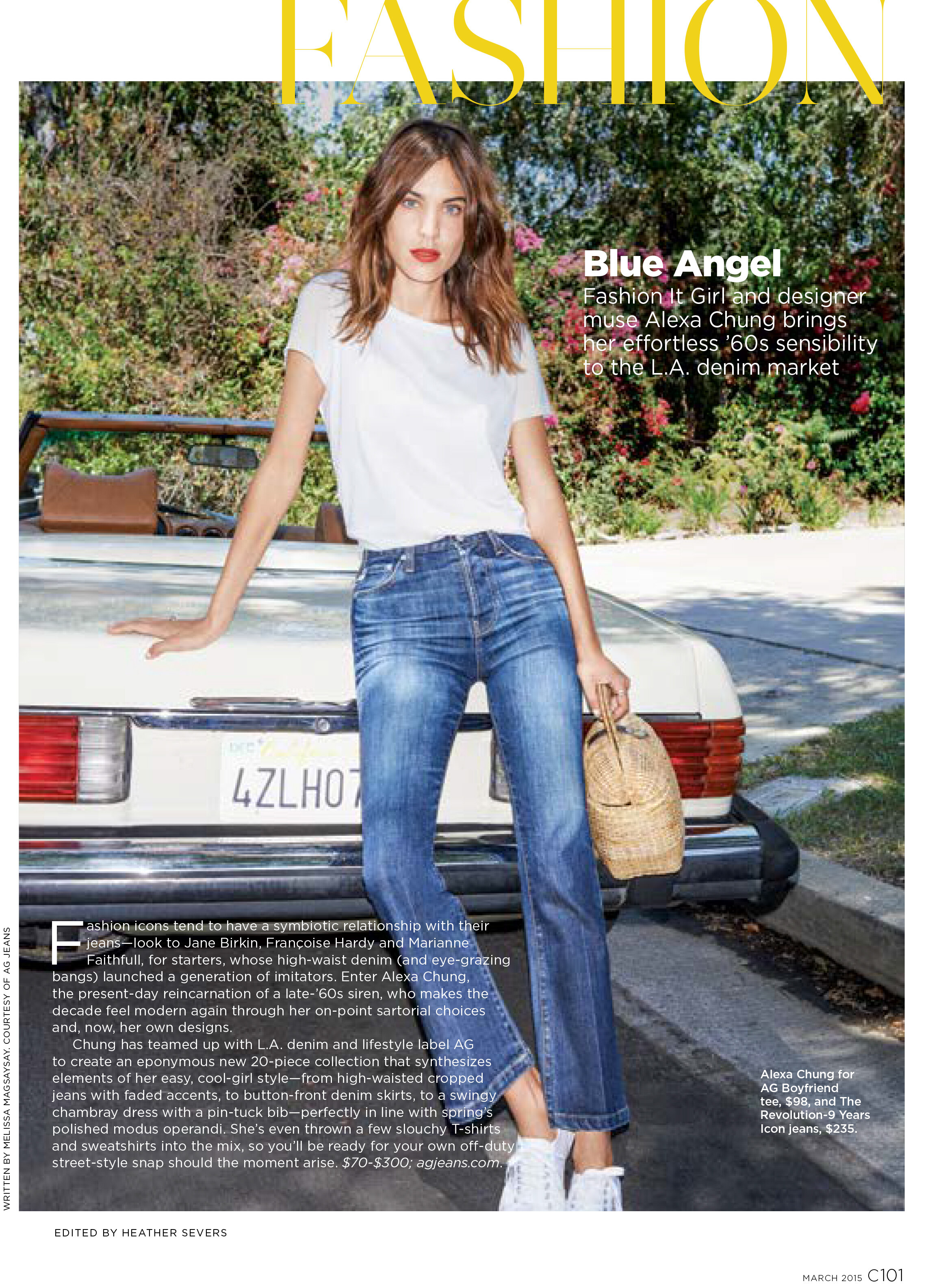
Harpers Bazaar – Kendall and Kylie Sound Off on Their Opposite Styles and Social Media
BY MELISSA MAGSAYSAY
JUNE 4, 2015
This sisters sit down to talk inspiration behind their new Topshop collection.
Kendall and Kylie Jenner's new collection for Topshop is an accurate reflection of the sisters' reality and the social media stars themselves: chic, in-demand and with some fun, unexpected twists.
For instance, as edgy and glamorous as Kylie considers her style, the 17-year-old is adverse to a bold zebra print. "In middle school I had zebra carpet, pillows and clothing. Everything you could imagine," she says, "So I am zebra'd out."
Unsurprisingly, their Topshop collection is void of the animal print, but it does capture what Kendall calls their "off-the-red-carpet style". This translates to flirty cropped floral button-downs, frayed denim cut-offs and some California love in the form of sweatshirts emblazoned with, "West Coast is the Best Coast," and "Golden State of Mind."
Clad in pieces from the line and some serious gladiator heels, Kendall and Kylie share their thoughts on style, shopping and social media.
What inspired you for this collection?
Kendall: It's our off-the-red-carpet style. It's our everyday look. And we're in California, so we based it off of that, but clearly anyone can wear it.
If you could only wear one piece of clothing for the rest of your life what would it be?
Kendall: A good pair of mid-rise or high-rise jeans that look good on the butt, with straight or skinny legs.
Kylie: A good leather jacket. Everyone needs a good leather jacket.
Dream wardrobe swap?
Kylie: I think Kim. I would want her whole closet if I could switch her shoe size.
Kendall: Miranda Kerr or Rosie Huntington-Whiteley. They're super polished.
Best Instagram?
Kendall: I love the funny ones, the Fuck Jerrys and Fat Jewish. I love those. I like, go and stalk them for hours. Or, I'm really weird and I love the home interiors that are just endless pictures of mansions and the inside of the nicest houses, because I'm really into real estate, oddly enough.
Kylie: I'm obsessed with dog shelter things and I cry so hard every time I read them. I am a big animal lover.
Kendall: No, we both are. We both always have been. Ok, at one point we had 60 fish, 2 hamsters, 2 turtles, 2 frogs, 108 snails, 2 birds, 3 horses and 2 dogs named Dolce and Gabbana. We just loved them. We would go to Petco and get one hamster. We needed a lizard. One time we had a ceremony and let our frogs go into the creek in front of our house. And then, we lost our hamsters, they got out of the cage. We lost them for literally a week. We found one under this dresser thing outside of Kylie's room. Two weeks later we found another one under our couch with dog food surrounding it. Our dad and Kim's boyfriend at the time had to lift the couch and pick up the hamster. It was so ridiculous.
Kylie: Anything we could get, if there was a lizard, we were like, we have to get it.
What's your favorite city?
Kendall: LA. I don't know if I'm biased and because it's home. I say it all the time. I've been to some of the most amazing cities in the world. Like, Greece was the most beautiful place I've ever been to, but I don't know, the vibes here are good and the quality of life is really nice and it's home. My whole family is here. So maybe I'm biased, but I love LA.
Kylie: I really enjoyed going to Monaco and Santorini.
Kendall: You were in Monaco for less than 24 hours.
Kylie: Yes, and I enjoyed it. I was in Santorini for only two days and I still loved the place.
Who is your style icon?
Kendall: Rosie and Miranda. I also love Kate Moss's '90s style. Her red carpet style was on point to me. It was super minimal and chic and effortless. I love her old school style.
Kylie: I really look up to Kim and Kanye's style, just to keep it in the family. I just really like their style.
I couldn't go a day without....
Kendall: I get really mean or emotional if I don't have food in my system. I was so hungry the other night and I almost started crying for no reason. I get so emotional! I don't know why.
Kylie: Probably my Erewhon drinks, my juices from Erewhon. I get them often.
What are you wearing now?
Kendall: Hermès shoes thanks to Kim K. She got them for me for Christmas or for my birthday. These pants are from our line. This top is Sass & Bide.
Kylie: These shoes are Tamara Mellon, this is a Topshop dress and jacket.
Kendall: We're both very into the jacket and we've both had a coat similar to it, so we recreated the look. It's almost like a doctor's coat.

LA Times – Cole Haan teams up with stylists on limited-edition shoes
By MELISSA MAGSAYSAY
SEP. 14, 2018
Cole Haan, the 90-year-old accessories brand known for classic design and a practical sensibility, is going Hollywood thanks to a new collaboration with three celebrity stylists known for their work with A-list clients and their own signature fashion points of view.
This month, the footwear brand, which is based in New York and Greenland, N.H., released a collection of limited-edition women’s shoes re-imagined by Erin Walsh (known for styling Sarah Jessica Parker and Lily Aldridge), Simone Harouche (Christina Aguilera and Miley Cyrus) and Karla Welch (Tracee Ellis Ross and Justin Bieber). The styles from the Cole Haan Stylist Collaboration collection range from a slip-on with a mesh top and sneaker sole to an ankle bootie, sleek pump and hefty hiking boot.
The footwear assortment, which includes the brand’s 3.Zerogrand (an oxford), Vesta (a pump) and GrandExplore All-Terrain (a hiker), is priced from $170 to $270 and available online at www.colehaan.com and at Cole Haan’s Westfield Century City store. Styles will roll out through October.
David Maddocks, chief marketing officer and general manager of business development at Cole Haan, said the shoe silhouettes in the collection were chosen to accommodate a variety of lifestyles — from work to weekend. “The goal was for these stylists to take these silhouettes and really make them their own — transcending the everyday [and] integrating both functionality and style,” he said.
The stylists’ individual interpretations took shape in footwear ranging from whimsical to edgy. Walsh festooned the top of the Vesta pump with a velvet and bejeweled bow, while Welch re-fashioned the block-heeled Blair boot in a beautiful ox-blood-colored leather.
Walsh, a former fashion editor known for a playful and polished aesthetic, said, “Throughout the process, I continuously asked questions like, ‘Is there consistency in color? Is there an interesting texture play? What’s the juxtaposition here?’ And most importantly, ‘Is it surprising?’ Do you think when you look at it, ‘Gosh, I really need that’? I wanted to design shoes that played within the masculine and feminine, whimsical and refined, and I think we were able to do that.”
For Harouche, it was the opportunity to add a modern edge to a rugged boot such as the GrandExplore All-Terrain. “I love the idea of a true fashion spin on a rugged boot,” she said. “The boot itself is the most amazing forest green color, and the cuffs are speckled in this incredible wool, which makes them so comfortable.”
Considering fashion’s current fascination with stylish, almost futuristic-looking sneakers and work boots, the hiker and 3.Zerogrand oxford are right in step with fall 2018 shoe trends.
“It’s about making the elevated seem attainable,” Walsh said, “and giving the customer new ways to dream and new ways to think about how they [can] wear classic ideas.”

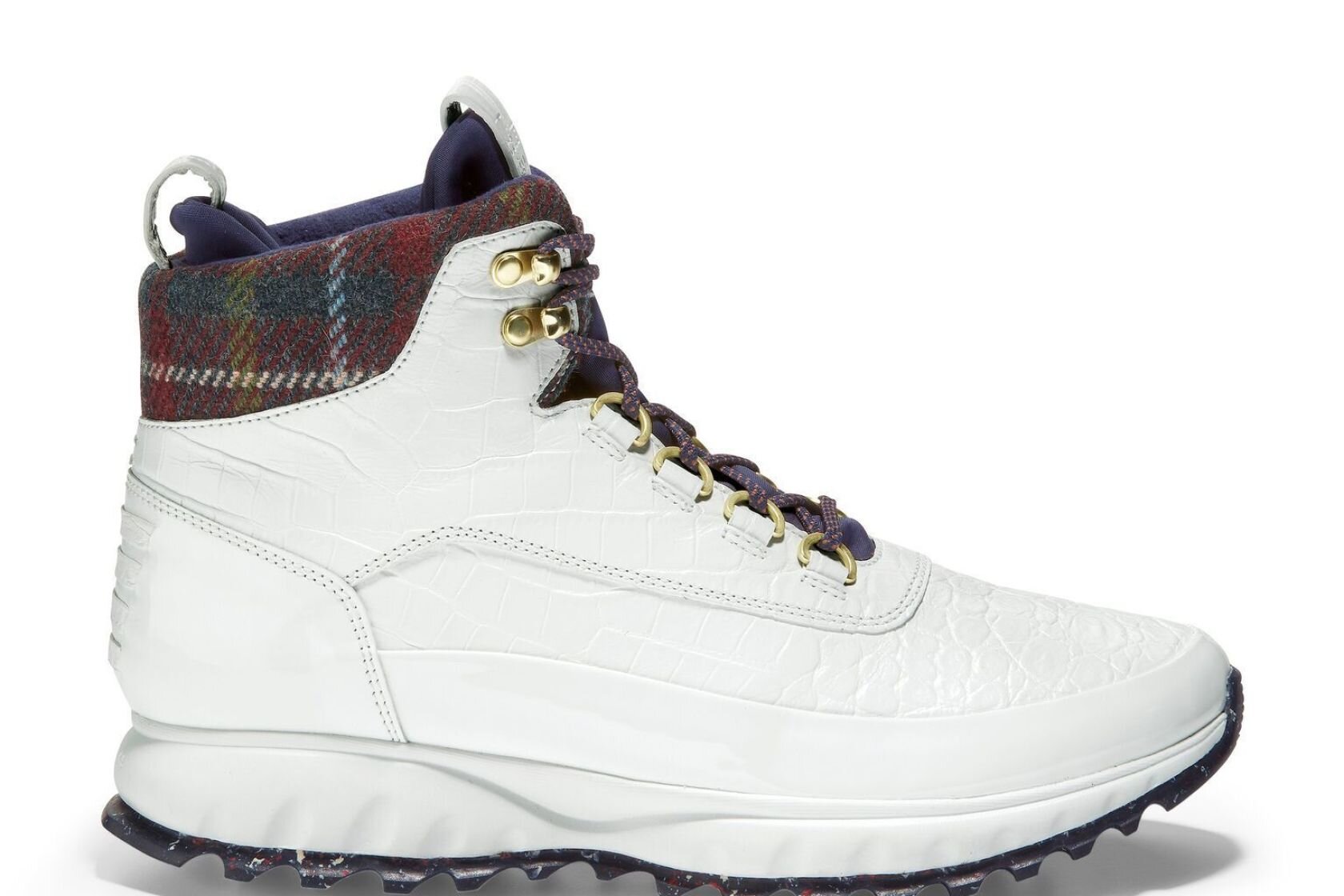
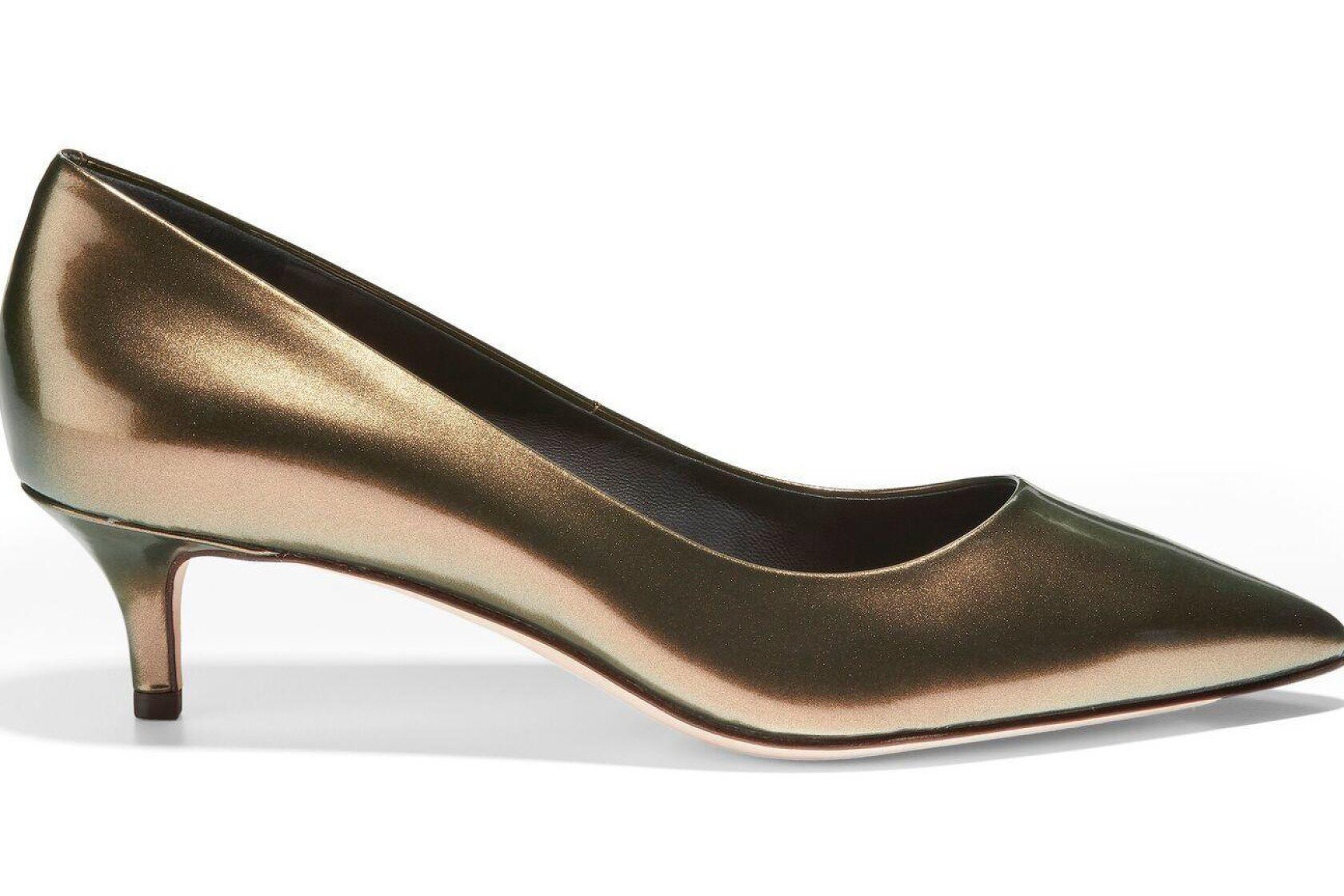
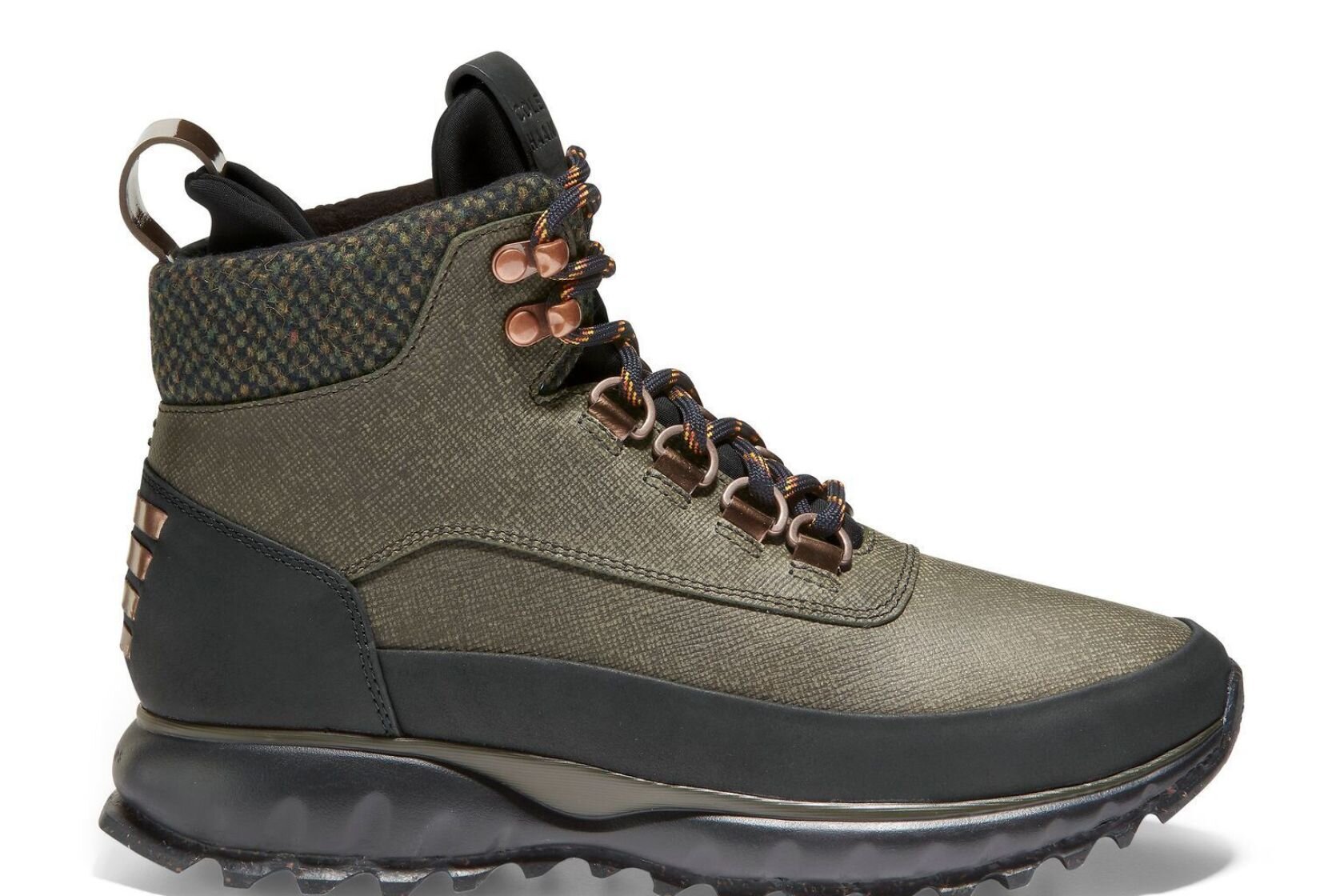
Wall Street Journal – The Style Scene at MOCA’s Annual Gala
By Melissa Magsaysay
June 5, 2015
Glamorously dressed guests at the annual gala for the Museum of Contemporary Art in Los Angeles included Marisa Tomei, Gia Coppola and Patricia Arquette.
STARS FROM THE ART and entertainment worlds mingled across one glamorous canvas of a space last Saturday at the annual gala of the Museum of Contemporary Art in Los Angeles. Artist Shepard Fairey, architect Frank Gehry, Oscar-winning actress Patricia Arquette and young director Gia Coppola all attended the event, which honored the 83-year-old artist John Baldessari.
Over cocktails, guests perused the MOCA’s current exhibit by artist William Pope.L, called “Trinket.” During dinner, museum director Philippe Vergne acknowledged the evening’s presenter, Louis Vuitton, for supporting the museum’s education program. “I was told nothing beats French elegance and French education, so thank you,” he said.
After dessert, the live sounds of Janelle Monáe had guests jumping up to dance, including Ms. Arquette, who wore a tasseled necklace and a sheer gray ensemble. Of her going-out style strategy, she said: “I don’t want to feel a lot of pressure about getting dressed. What’s cool about fashion is some people do it really great and [then] it is an art form.”
Actress China Chow illustrated Ms. Arquette’s sentiment literally as she spread the graffiti-printed skirts of her dress, care of Moschino by Jeremy Scott, in front of a projection of a Baldessari lithograph that read: I Will Not Make Any More Boring Art.



























